Travelling is ultimately a tool for growth. If you want to venture further, click this banner and take the leap 😉
- Meet the Team
- Work with Us
- Czech Republic
- Netherlands
- Switzerland
- Scandinavia
- Philippines
- South Korea
- New Zealand
- South Africa
- Budget Travel
- Work & Travel
- The Broke Backpacker Manifesto
- Travel Resources
- How to Travel on $10/day
Home » Europe » Backpacking Travel Guide

The COMPLETE Backpacking Europe Travel Guide | 2024
Where in the world can you comfortably pass 3 countries and 3 different languages in a day? That’s the wonder that travelling Europe offers you. This continent has cultural variety, wild parties, mind-boggling history, world-class hostels, and new friends in spades.
I was born in Europe, so my travels here go back as far as my memories do. I’ve basked on the glorious Spanish beaches, skied in the Italian Alps, and dived into the depth of Roman history.
And yet, my crazy adventures in Europe are still only just beginning. I’m ALWAYS craving more.
Whether you’re thinking of a quick beginners’ trip or a full-blown, life-changing interrailing affair, you’re bound to fall in love. Maybe it’ll be a place, or a person or two. 😉
Although, if you don’t already know, backpacking Europe is no cheap thrill. Especially in the likes of Paris, Barcelona, and Amsterdam, even a hostel dorm can set you back and send you home with your tail between your legs if you’re not careful. I’ve heard one too many backpackers calling home asking mummy to pay their return ticket.
But you don’t need to be like them. Because you’ve got this backpacking Europe travel guide!
I’m here to dish it all. I’ll give you the low down on costs, the best travel itineraries and all the tips and tricks you’ll ever need on on how to backpack through Europe .
It’s so beautiful I’m going to cry.
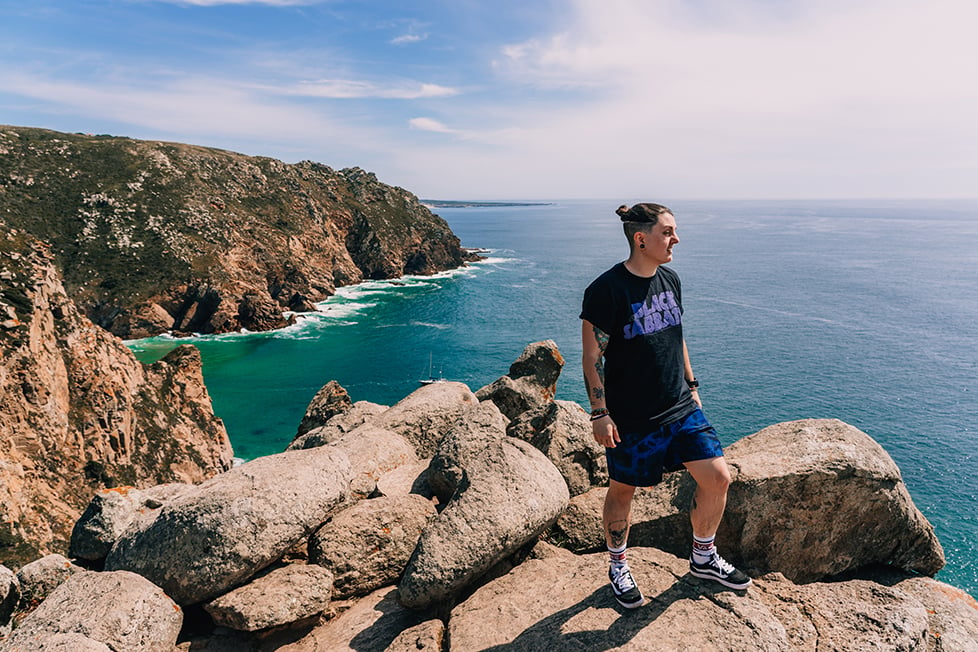
The Broke Backpacker is supported by you . Clicking through our links may earn us a small affiliate commission, and that's what allows us to keep producing free content 🙂 Learn more .
Why Go Backpacking in Europe?
Best travel itineraries for backpacking europe, best places to visit in europe – country breakdowns, 10 top things to do in europe, backpacker accommodation in europe, europe backpacking costs, best time to visit europe, sim cards in europe – unlimited internet, staying safe in europe, how to get into europe, how to get around europe, working in europe, european culture, some unique experiences in europe, faqs about backpacking in europe, final advice before visiting europe.
Backpacking Europe has no equal. There is no region on earth with such a diverse range of landscapes, cultures and languages contained within such a small(ish) space. Everywhere else is frankly boring when pitted against the technicoloured dream coat of Europe.
From alcoholic Bavarian breakfasts, ancient ruins and train rides so pretty they could briefly render a local politician speechless, the breadth and scope of Europe is enormous. Not forgetting we can make a mess in Eastern Europe and Scandinavia too, you’re basically screwed unless you have about a year.
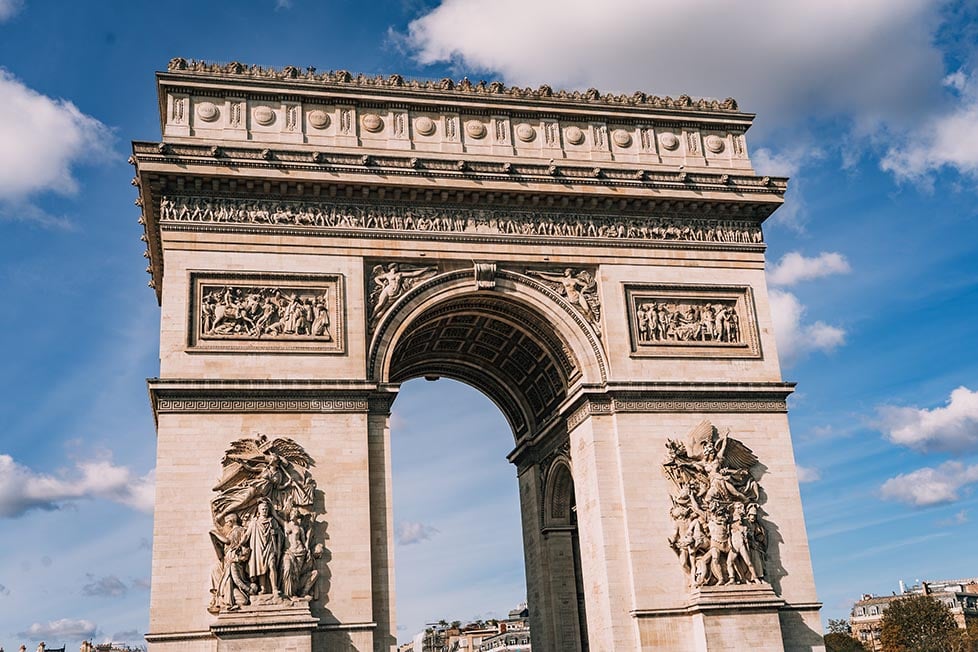
For many people, backpacking Europe is about ticking off a list of the famous and well-known cities . Let me tell you now. GET THIS SILLY IDEA OUT OF YOUR HEAD. You’re not hitchhiking with the Jehovah’s Witnesses or conquering Triglav, Olympus or Korab from a Starbucks/Costa/Pret a Manger are ya?!?
Find the balance. Visit some awesome cities, but make time to head out into the sticks and see the side of Europe you didn’t expect. There is an impeccable backpacking vibe in Europe, and you are bound to take some truly questionable stories home with you…
…If only you knew where to look… 😉
How to backpack through Europe
Right children, as a native European with more travel experience than Leonardo di Caprio’s wandering eyes, I have some juicy advice for you. First things first: Europe is expensive. Learn how to mooch through Europe on a budget !
Staying at a hostel in a well-known city (e.g. London, Rome, Paris, Barcelona) can set you back around $70. If you’re trying to make your trip last, it is worth knowing which are the cheap countries , and how to get some sleep in the ones that aren’t.
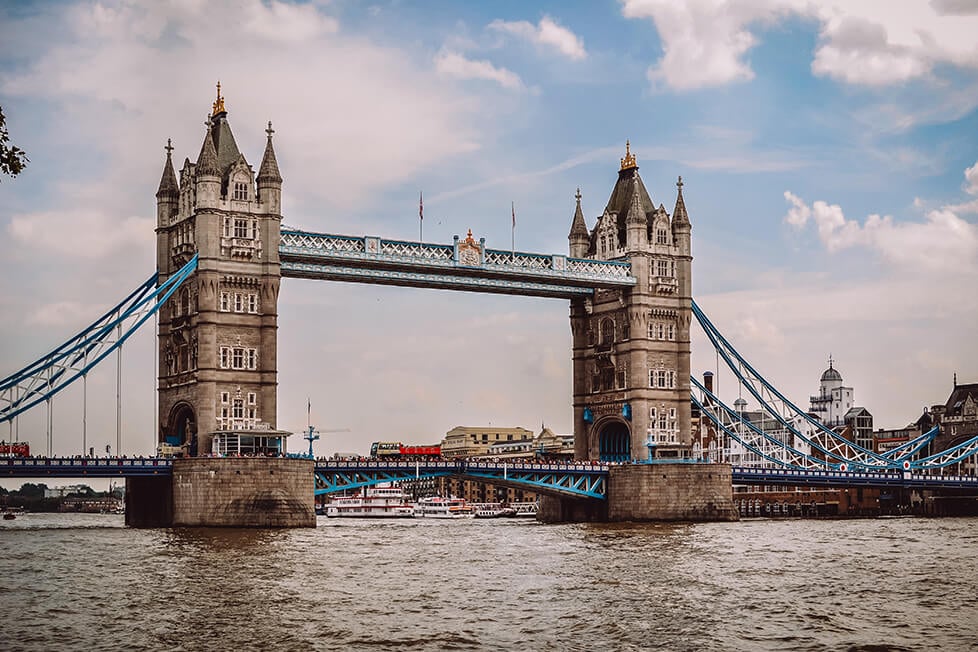
It’s also worth remembering which countries aren’t in the Schengen zone. Not only might you need to make additional travel adjustments, but it is worth knowing if you want to extend your stay in Europe . Basically, this is just the UK, a large swathe of Eastern Europe, and Turkey. Good for long stays!
You may want to grab an interrailing ticket if you’re travelling far and wide. These can work out much cheaper than paying for each individual train, which is another great boost for the budget. Taking a tent can also save you some serious bank whilst backpacking Europe.
Europe is fucking huge and it packs a punch too. This means that even on a (hypothetical) lifetime Europe backpacking trip, just accept it: you’re never going to see it all.
Backpacking Europe is best when you can travel it slowly . But don’t stress it because there’s plenty of ground you can cover even on a shorter trip to Western Europe.
How long to backpack europe? This depends on you, your budget and how much you want to see. If you only have a week or so, I recommend that you focus your Europe trip on either A) just one country or B) a few close-together cities. Luckily, the travel infrastructure is really good: train travel is a dream and buses are frequent. Plus, thanks to the European Union and its open borders, once you’re in one country, you can basically keep crossing borders as often as you’d like.
Here are a few ideas for an awesome backpacking trip to Europe.
2-Week Travel Itinerary for Europe – The Big Bois of Backpacking Europe
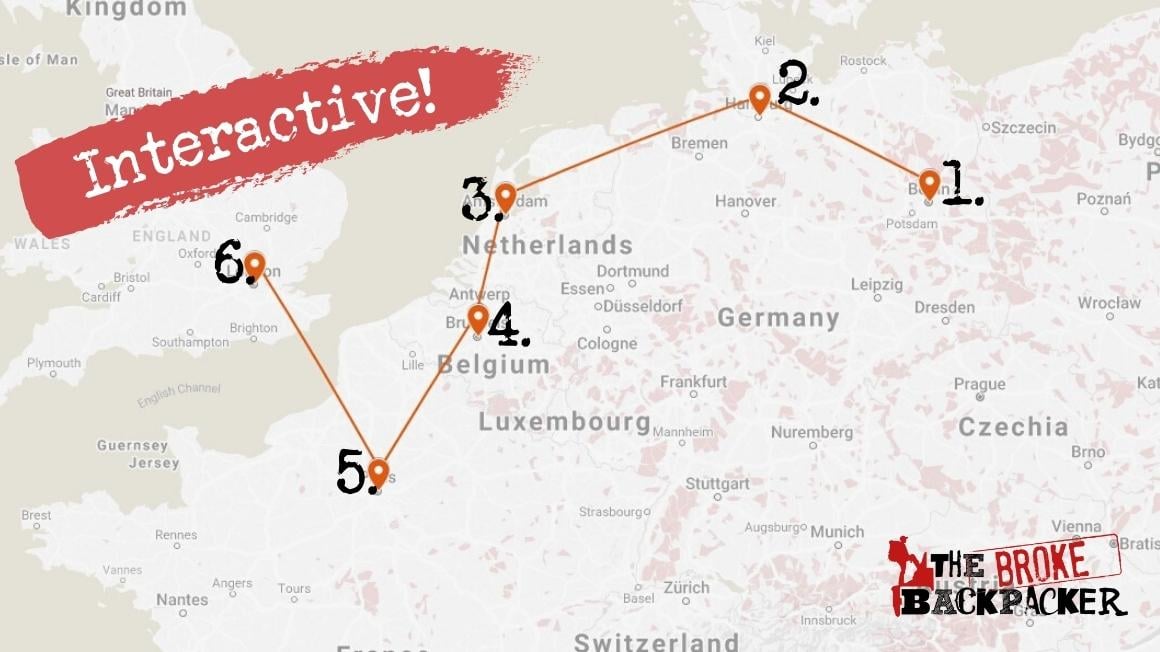
Start your travels from Berlin . Germany’s capital is like its own little islet – nothing like the rest of the country. Explore its history and party at world-famous clubs before heading out to Hamburg – you know, to get a taste of “normal Germany”. I highly recommend staying in St. Pauli which is the coolest area in Hamburg!
From Germany, cross over to Holland’s boozy, breezy, fun capital Amsterdam . From there, it’s easy to take a train or a bus to Brussels, in Belgium. (You could also stay in Ghent which is much prettier. Do take a day trip to Bruges, though!)
The next stop is dazzling Paris , undoubtedly the capital of romance in Europe. From Paris, take the Eurostar train to visit London .
This is the last stop in your itinerary. Wherever you’re headed next, London is one of the biggest transportation hubs in Europe.
1-Month Travel Itinerary for Europe: Southern Europe Gems
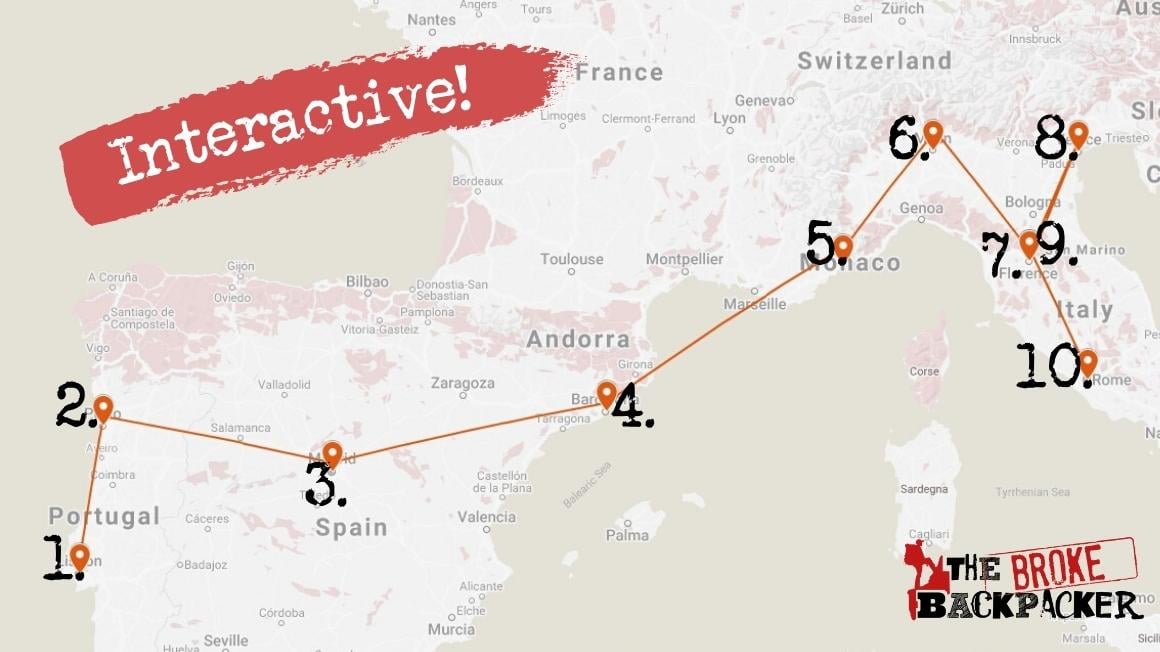
One month is the ideal Europe backpacking trip for first-timers. You’ll have time to explore a few countries and stay an extra few days in the places you fall in love with. In this itinerary, we’re diving into Southern Europe.
Start your trip in Lisbon , Portugal’s capital and one of the liveliest cities in Europe. Take trips to Sintra and Porto . Sintra can be done as a day trip whereas visiting Porto warrants at least a night’s stay.
Next, cross the border to Spain to explore Madrid . From the Spanish capital, finding onwards transportation to Barcelona is super easy. (Barcelona is also a long-time backpacker favourite!)
From Barcelona, cross over to France and spend a couple of days on the French Riviera. You could also do a lil’ side trip to Monaco to gawk at the rich&richer. But just a warning – this area is expensive as hell!
Next up, we head to Italy where you’ll spend the rest of your trip. First, explore Milan ; the fashion capital.
Then head to the floating city Venice, then the ultra-beautiful Florence . Lastly, end your trip in a highlight with a stay in Rome .
3-Month Travel Itinerary for Europe: Holy Shit, It’s the Grand Tour of Europe
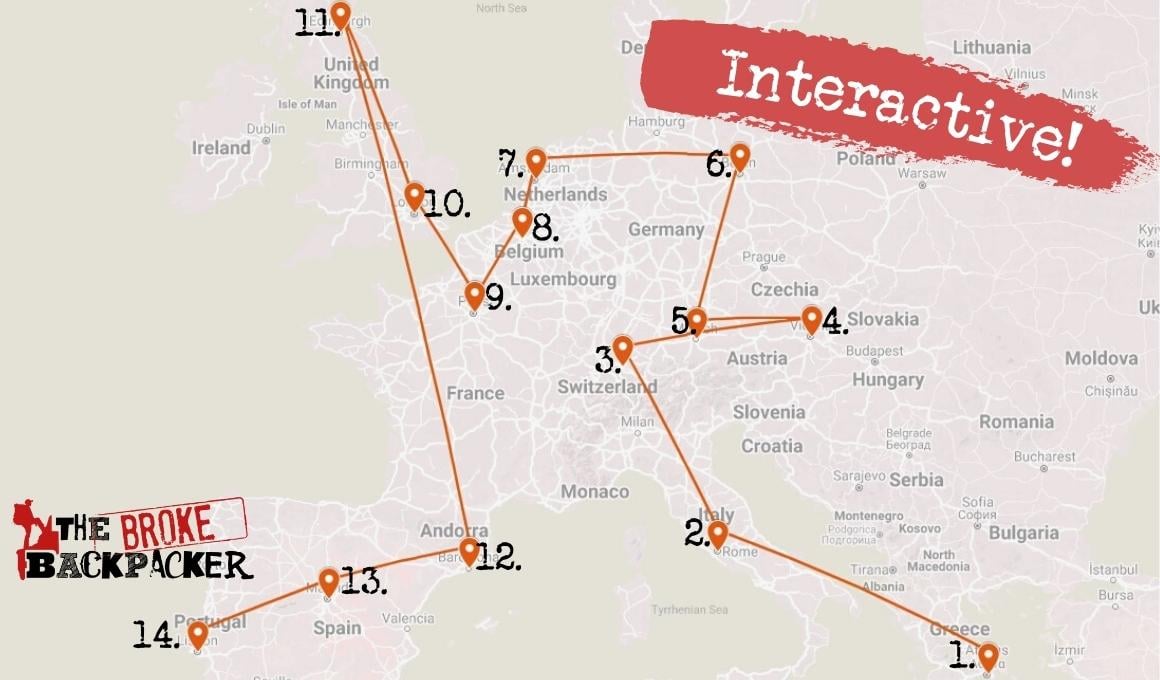
Having 3 months or more for backpacking through Europe is an awesome experience. Make the most of the 90-day Schengen Zone liberty (plus the UK). You can move at your own pace and take the time to enjoy the places you love.
Still – need I remind you? – Europe is fucking massive. 3 months is a great trip but you’ll still struggle to cover everything possible. Sometimes it might even be the best option’s better to take a cheap plane ride between destinations rather than waste a day on a bus.
Stop first in Greece . Staying in Athens is really epic and it is a great gateway to the famous Greek Islands. ( Mamma Mia , anyone?)
Next up – Italy . Explore Naples for the origins of that pizza in Naples. See the remnants of a super-influential ancient culture in Rome, and hike along the coast in Cinque Terre.
From Italy, visit Switzerland , AKA ‘the pit of doom’ when it comes to backpacking Europe on a budget. However, the Swiss Alps are some of the most beautiful parts of Europe so it’s worth a splurge.
Continue on to Vienna, Austria . It may look fancy but it has a punk rock heart and there are some great places to stay in Vienna too.
Then, we move on to Germany . Munich is your gateway to experiences in Southern Germany and it has great connections to other awesome cities in Germany: Nuremberg, Frankfurt, Cologne, Dresden, and eventually, Berlin.
Travel through the Netherlands and Belgium to Paris, France . From there, you can easily get to London and further explore the UK . I highly recommend making a stop in Edinburgh to get a taste of Scottish life.
From the UK, you can fly down to Barcelona and conclude your trip by adventuring around Spain and Portugal .
If you are going to be spending a whole month in Europe bouncing between different countries, then we recommend downloading the HolaFly Europe eSim package before your trip begins. Packages start at just $1.20 per day and can offer data access and internet connectivity all over Europe for the entire duration of your trip.
Wherever you decide to go on your Euro backpacking trip, the magic will surely blow your mind. Each country in Europe is unique, full of surprises, and requires its own individual approach and strategy with regard to your travel budget in Europe. Some European cities are overrated – and it’s handy to know which are.
Uh, just one thing: Europe, as a whole, has dozens of countries. (44 or 51, depending on what kind of geographical allowances we’re making…)
As I’m writing a blog and not a book, this Europe travel guide is focused on Western and Southern Europe . Meaning I’m only covering 11 countries and a bit today. Boo.
But don’t despair! There’s plenty more to explore in Europe.
- Backpacking Scandinavia travel guide
- Backpacking Turkey travel guide
- Backpacking the Balkans
- Backpacking the Caucasus
Backpacking Italy
Italy has been a popular vacation destination for a looooonggg time. Tourists have been coming here for years to see the likes of the Colosseum, drink wine in Tuscany , tour the canals of Venice – all that touristy stuff.
Consequently, few people stray far from the main backpacking route in Italy and, unsurprisingly, many say that tourism here has become a bit calcified. Some might say that Italy can offer nothing else besides the same postcard views and disgruntled baristas.
But there’s a lot more to see in Italy besides the usual attractions because, let’s be honest, everything in Italy is beautiful . Pound for pound, Italy might be one of the most beautiful countries in the world and you’d be hard-pressed to find a single ugly stone here.
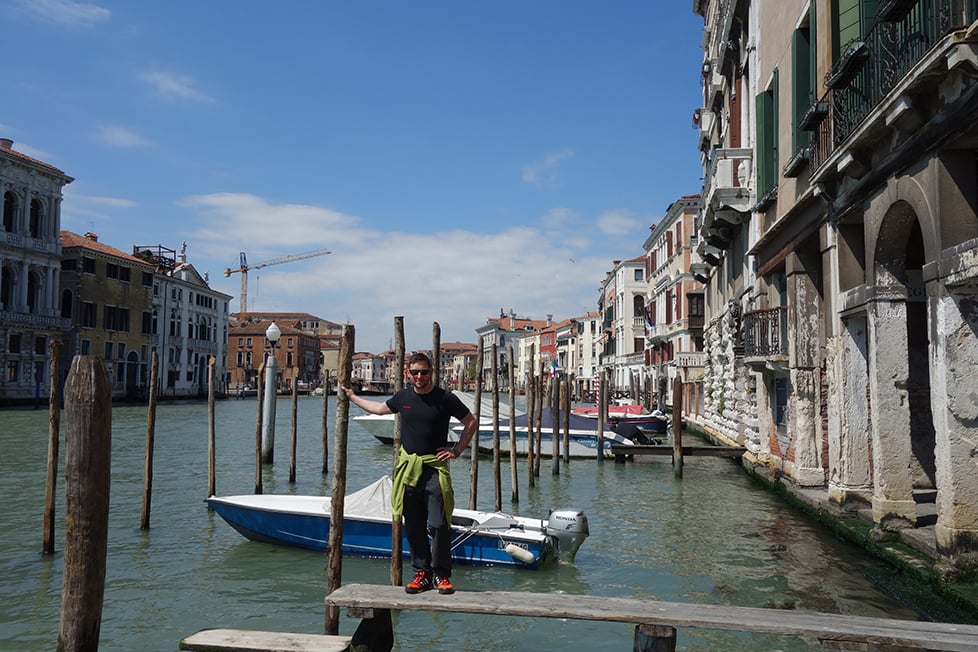
The beaches of Puglia and Sardinia are among the most brilliant in Europe (they don’t compare the former to “The Maldives” for no reason). The Dolomites are truly one of a kind and few other mountains can really compete.
Rome … Rome is amazing . Where else can you find masterpieces from almost every era of western civilization?
Italian food, which has received a similar treatment, should be explored with equal enthusiasm. Sicily with its miles of coastline produces some of the finest seafood in the country, not to mention amazing desserts. The tagliere (deli meats) of Toscana are the best you’ll find.
So give Italy a chance! Don’t let the jaded, bitter tourists tell you there’s nothing new to see or do here; you just need to get off the beaten path a bit. Visit Florence , see the Almafi Coast but set aside some time for exploring the lesser-visited regions, like Marche, Umbria, Calabria, and so on.
But also – what’s wrong with seeing the same stuff as everyone else? There’s a reason Rome is popular. A gorgeous reason…
Backpacking Europe can never be completed without dipping a toe into Italy.
What to Know Before Visiting Italy
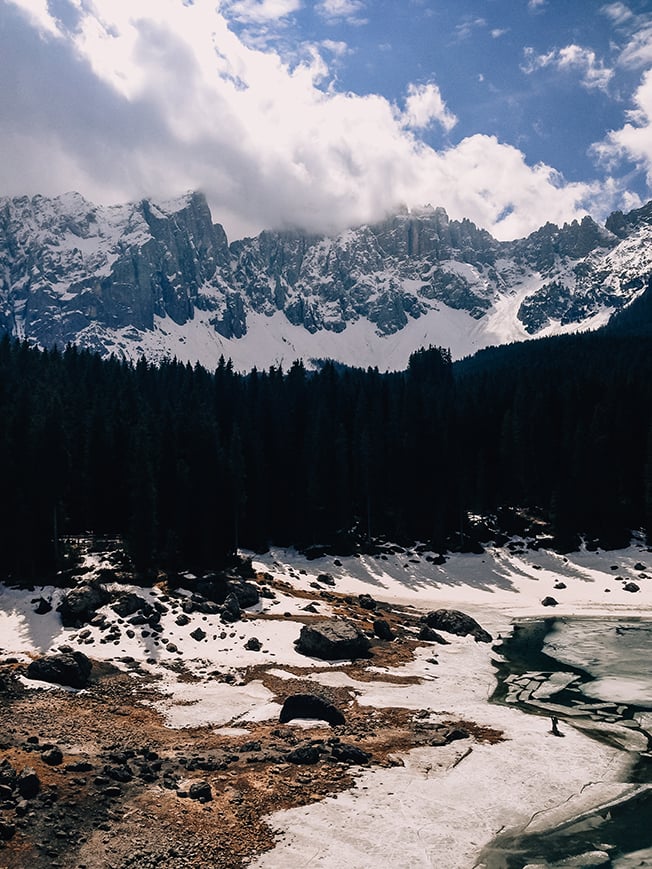
- Don’t miss out on … staying in Bologna . It evades most people’s radar even though it’s arguably the coolest city in Italy. Amazing food, beautiful architecture, and a nightlife that doesn’t quit.
- You know what’s overrated… the Leaning Tower of Pisa. Soooo many horrible selfies and awkward poses. Take a moment to actually appreciate the nearby duomo and baptistry guys.
- The coolest hostel is… The RomeHello Hostel . Offering some top-tier communal spaces, many activities for the guests, comfy beds, a great location, and good vibes atmosphere.
- The best food is found… everywhere! Really – you’re in Italy – you can’t go wrong here. Genoa, Bologna, Naples, and Sicily all take top honors.
Backpacking France
France might just be one of the most diverse countries you’ll set your foot in whilst backpacking through Europe. In addition to two coasts and two mountain ranges, France has a wide variety of cultures, landscapes, and food packed into one country.
Paris is amazing and seriously one of the most exciting cities in the world. It’s a city of romance, famous art, morbid history, and grand architecture. But don’t stop your exploration at the capital!
The Mediterranean coast, so-called French Riviera , is something straight out of your dreams. Trekking or skiing in the Alps is an unforgettable experience.
Bordeaux is one of the coolest cities I’ve ever visited, and staying in Lyon and Marseille are just as pretty. Let alone all the tiny little towns that are straight out of a postcard…
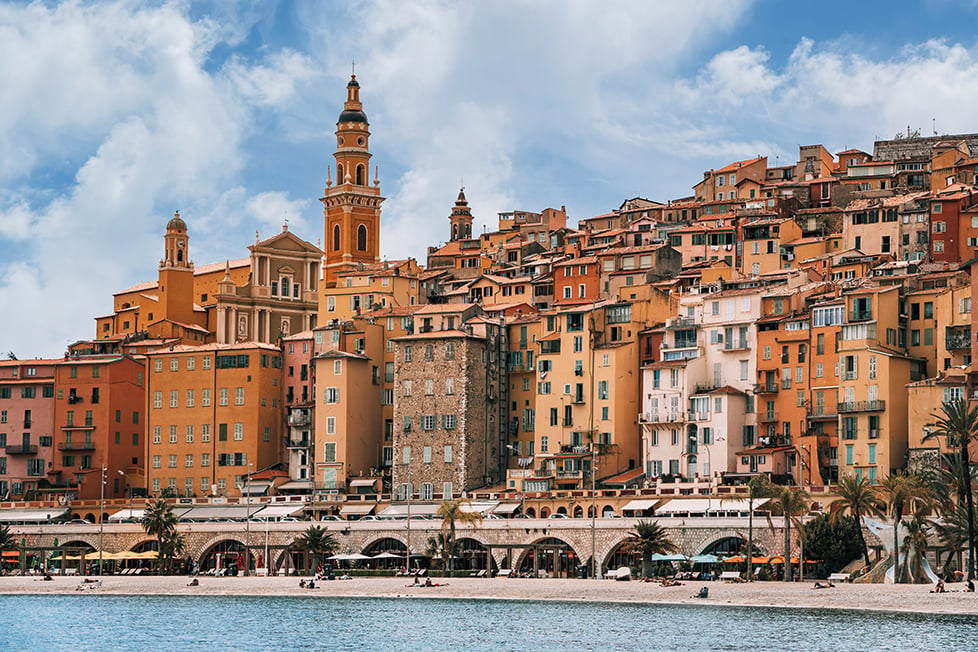
There are so many places to stay in France . Wherever you turn, you will find different kinds of wine, cheese, and even variations of the French language. If you love food, culture, and outdoor playgrounds, a stopover in France is an obvious choice for backpacking Europe.
Forget about the old stereotypes about the French being rude and uptight. The French can be like soft-boiled eggs: they have a shell on the outside but with it removed they are softies at heart. France is full of lovely soft-boiled eggs, uhm I mean humans…
Since France is quite a large country in European terms, there are so many hidden gems that I have lost track. From stunning medieval castles to picturesque villages and cities, backpacking in France is truly an unforgettable experience.
What to Know Before Visiting France
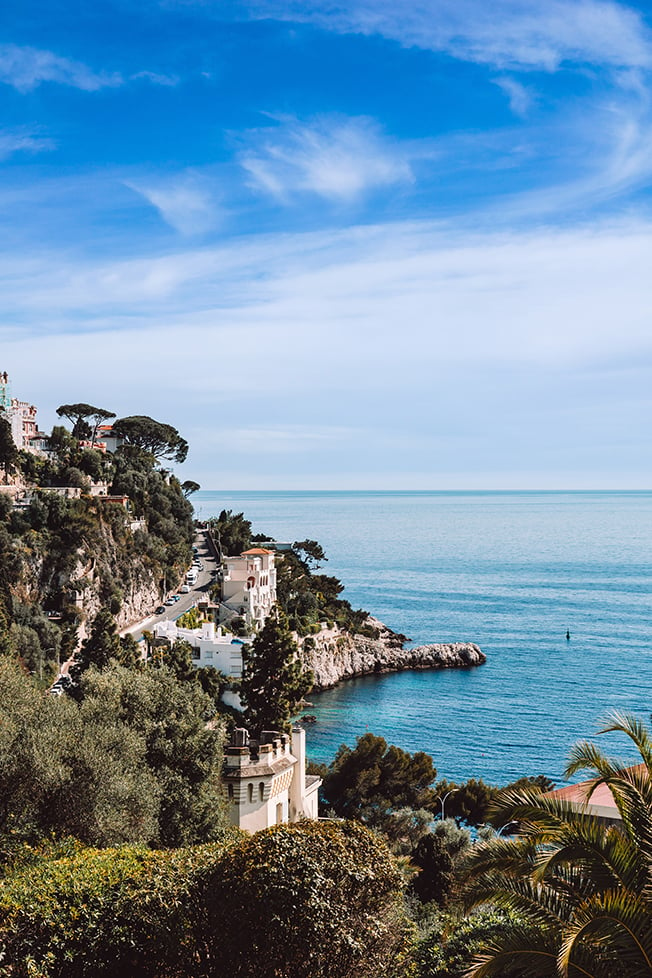
- Don’t miss out on… Staying a night at a mountain refuge in the Alps. Le Refuge de la Charpoua is particularly epic.
- You know what’s overrated… paying to go up the Eiffel Tower. Paris is expensive . Save money and see it from below.
- The coolest hostel is… The People – Paris Nation . Excellent location. It has beds with curtains (I love privacy), a cozy cafe/bar where to chill and work, and a great terrace to see the sunset.
- The best food is found in… Can’t go wrong with a bit of Brie and a bottle of Bourdeaux. But that’s just the beginning; as they say there, is a different wine and cheese to try every day of the year…
Backpacking Portugal
Portugal is a grand paradise of sorts. The pace is slower than other European countries (and compared to other offenders on this list, cheaper, too).
The country is packed with friendly locals, charming villages, fun parties, and one of the most chill vibes you will come across anywhere on earth.
Backpacking in Portugal is very easy and Portugal is my favourite country to solo travel in Europe too. Ultimately it’s a great place to begin your international adventure, solo or not.
Spot the famous blue tiles in Porto. Feel like a royal at the castles in Sintra.
Eat seafood in Lisbon. Drink ice-cold beer and smile like a fool whilst taking in an epic sunset over the ocean in Algarve.
Most backpackers start their trip in Lisbon as it appeals to just about everyone. There’s amazing food, good weather, great parties in Bairo Alto, and lots of places to see nearby. Definitely don’t skip Sintra ; the epic village full of fairytale castles is one the top places to see in Portugal.
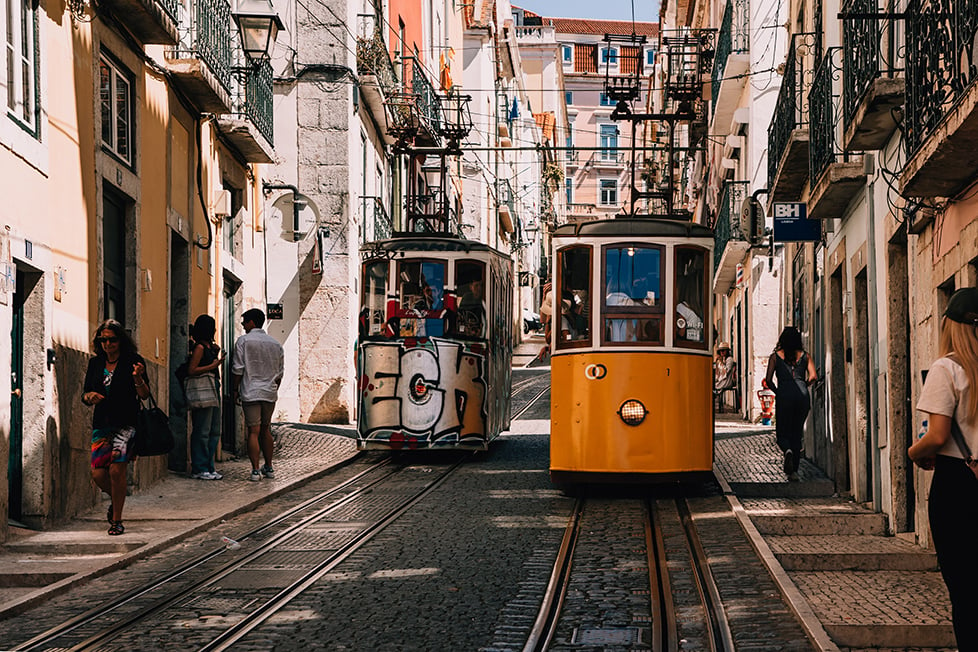
The south of Portugal, also known as the Algarve , is the more Mediterranean part of the country. It resembles more southern Spain not only in the scenery but in vibes.
Expect a lot of tourists and more than a few drunken, wandering Aussies. But hey – the coastline is gorgeous and stays warm all year round. You can also find some of the best surf in the Northern Hemisphere off Portugal’s many beaches .
In Northern Portugal, Porto is a popular student city. It’s also bustling, busy, fun, and beautiful. Some backpackers even prefer it to Lisbon!
Portugal also has two semi-autonomous island regions: the Azores and Madeira. Both are very different from the mainland and absolutely magical.
Hiking in Madeira is uniquely epic! But visiting Azores is like backpacking a mini-New Zealand.
What to Know Before Visiting Portugal
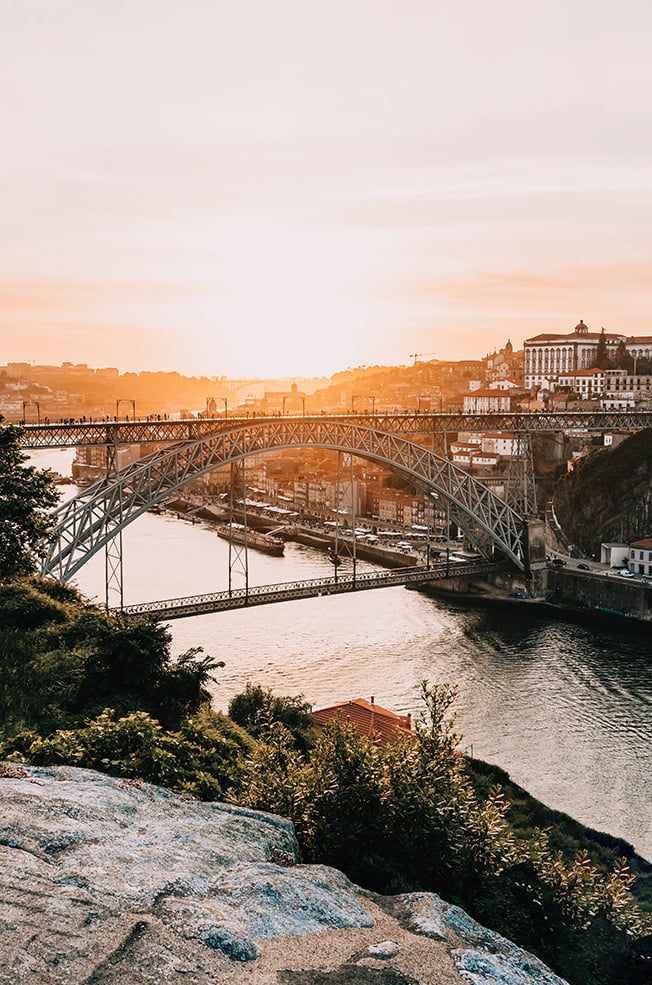
- Don’t miss out on… Porto. Backpackers love Lisbon , but its northern neighbour is just as cool. Keep an eye out for its famous blue tiles.
- Keep an eye out for… drunken backpackers in Lagos . It’s not widely advertised but this place is a SHITSHOW at night. If you’d like to be one of them, stay in one of the party hostels.
- The coolest hostel is… Home Lisbon Hostel – The people’s favourite: mama’s cooked dinner, free walking tours, and a super homey feeling. You feel so welcome here.
- The best food is found in… the Mercado da Ribeira in Lisbon. This is the Mecca of all food markets, the cream of the crop.
Backpacking Spain
Many backpackers claim Spain as their favourite country. Are they right?
I think so. You do not have to look too far to see why this country, in addition to producing some lovely human beings, is a magical land for backpackers.
Like to sleep? You came to the wrong country. The Spanish have breakfast at 10, lunch at 4, and dinner at midnight.
Spain is a country that truly never sleeps. It’s in the culture to practice sleep deprivation in style. Maybe all those midday siestas help?
Spain just has a certain charm to it. Small plates of delicious tapas , cool, cold wine served with sweet orange and melon…
Is it those fine beaches? Old olive groves running through tiny villages? Or the church in Barcelona that is a perpetual construction project?
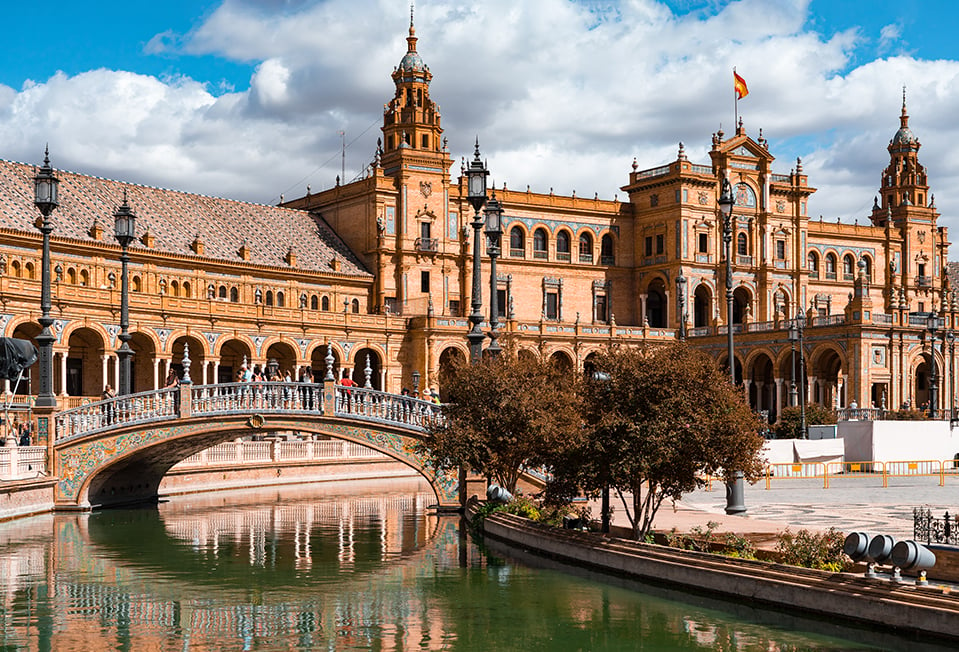
My suspicion is that my love of Spain is deeply rooted in all of the little nuances you experience daily whilst travelling here. Many backpackers just roll through Barcelona and maybe go visit Madrid . Whilst those cities are not to be missed, backpacking through Spain without exploring its other regions is a mistake.
In the north, you can hike majestic mountains in Asturias and eat awesome seafood in San Sebastian . Track down the origins of paella when staying in Valencia .
Explore Andalucia in the south with its Islamic architecture, free tapas, and the cheapest prices in Spain. (Seriously – Granada, Seville, and Cordoba are AWESOME.) Go to a football game. Find some flamenco.
Doesn’t that sound like fun? This is Spain.
What to Know Before Visiting Spain
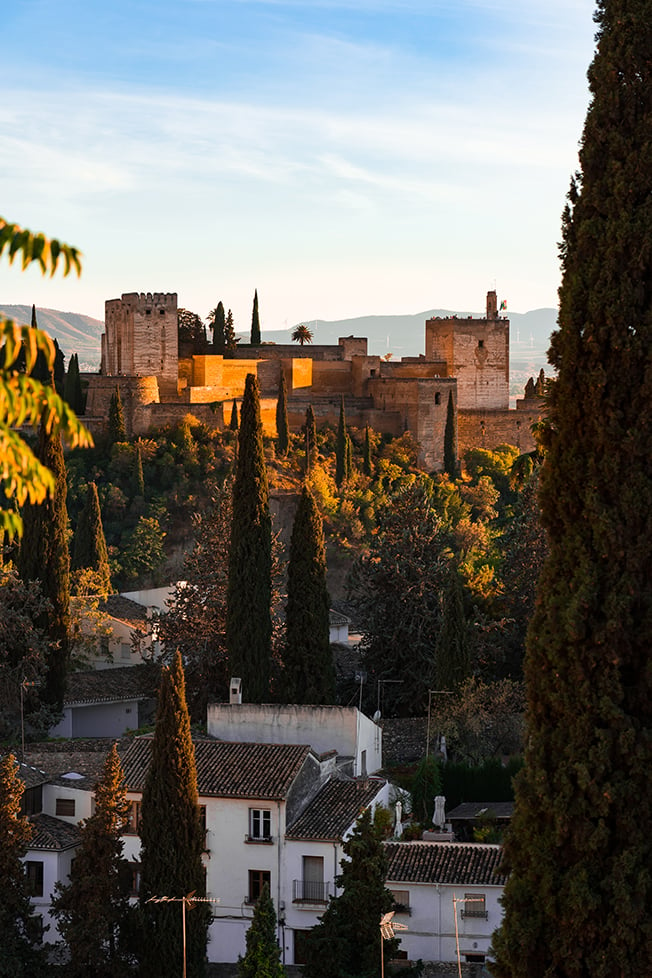
- Don’t miss out on… the Basque region. It’s like a completely different country, with epic landscapes and an extremely fascinating history. San Sebastian is the best place to stay.
- You know what’s overrated … bull fights. The Spanish hardly go to them – it’s cruelty set up for tourists’s entertainment. Opt for a flamenco show or tapas tour instead.
- The coolest hostel is… The Central House Madrid Lavapiés . Everything a hostel should have. Relaxation, work and social areas. A pool, a bar, a terrace, lockers, and curtains on comfortable beds.
- The best food is found in… Granada. Andalucia has some of the only totally free tapas in Spain, and Granada has the best tapas restos. Asian fusion or Moroccan tapas? You’ll find it here.
Backpacking Switzerland
If you are planning on spending time in the Alps, a hiking trip to Switzerland is an obvious choice. Switzerland is a land full of the Alps, quaint villages, and hip cities.
Heard of the Matterhorn mountain? (That’s the Toblerone mountain.) It lives in Switzerland.
In addition to its powdery peaks, Switzerland is also home to gorgeous alpine lakes. Take in some of the ancient castle fortifications lakeside by day and sip the legendary Swiss hot chocolate by night.
Zurich may be the financial heart of Europe but it’s still surprisingly cool. Lausanne is small but gorgeous, and the capital Bern is equally so. Don’t skip Luzerne since it just might be the most beautiful city in Switzerland. But these are just a few ideas of where to stay in Switzerland – numerous hidden gems await.
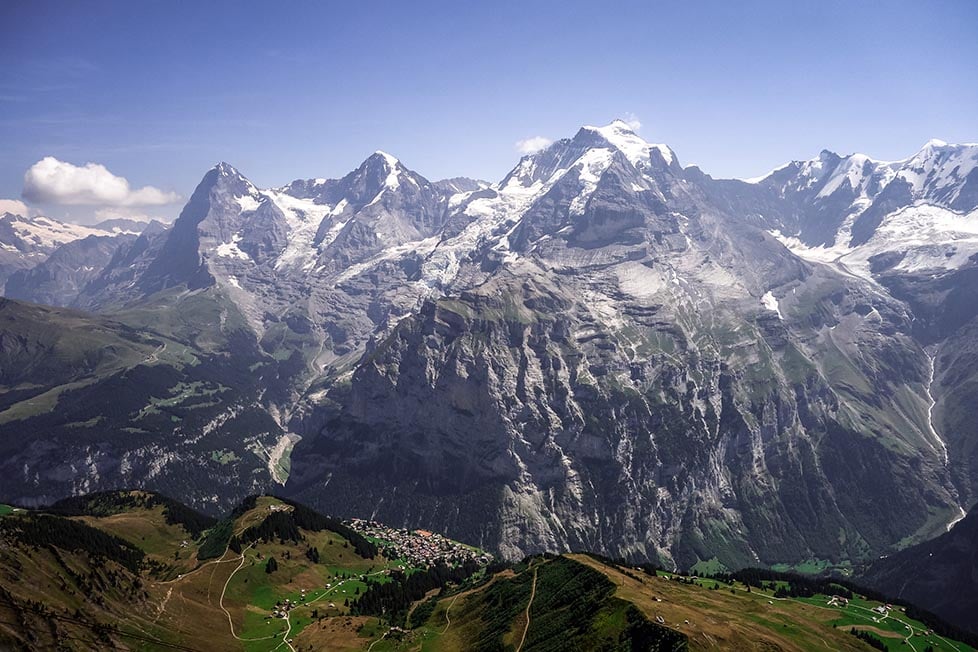
You do have to pay for the pleasure in Switzerland . For better or worse, the Swiss people have this whole thriving economy thing down to a T.
As a country long resistant to changing over to the Euro, the Swiss Franc is as strong as ever before. For backpackers, this translates into a scenario of high cost, high reward.
That said, Switzerland will certainly do anything but disappoint. It’s worth the splurge even if you are backpacking Europe on a budget.
What to Know Before Visiting Switzerland
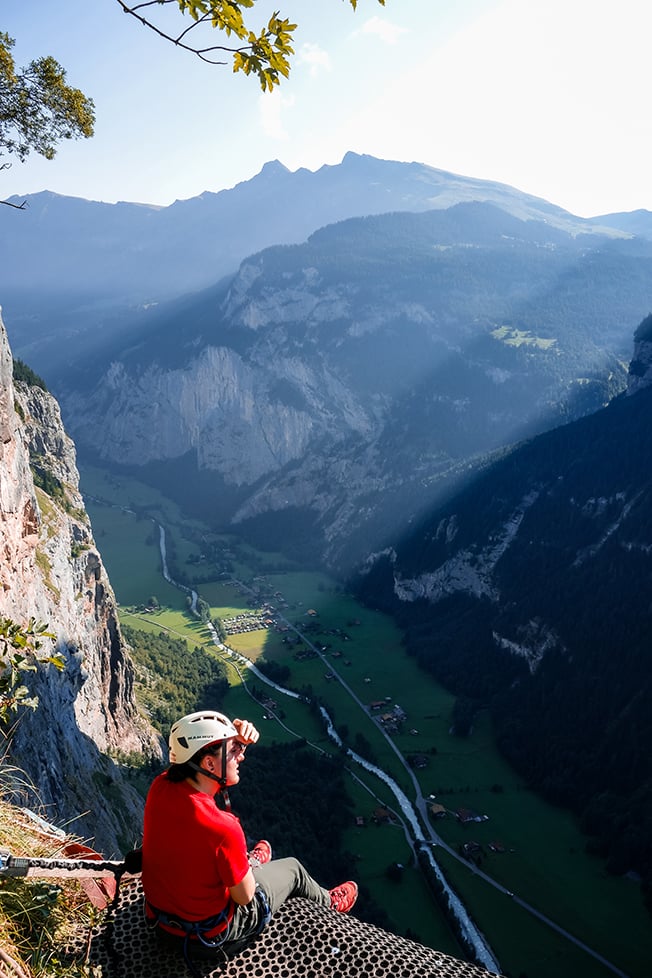
- Don’t miss out on… the Bernese Oberland. This region features probably the most famous and stunning hikes in Switzerland . Check out the trails around Eiger and the Lauterbrunnen Valley.
- Keep an eye out for… the prices; the pure, unadulterated, merciless, eye-gouging, seemingly unreal prices. You’ll need to employ every trick in the book to keep costs down.
- The coolest hostel is… Backpackers Villa Sonnenhof Interlaken. It offers a ton of freebies!
- The best food is found in… the grocery stores. Swiss food is just ok; certainly not worth the prices at the restaurants!
Backpacking Germany
After gaining a (justified) terrible reputation on the world stage in the first half of the 20th century, Germany has emerged over the last 50 years as an economic powerhouse and centre of culture in Europe. Modern-day Germany is an awesome place to go backpacking through Europe – and a fan favourite among many gap year kids and older travellers alike. You won’t be hard-pressed to find a great hostel in Germany .
As a lover of cool cities and good beer, I am totally enamored with Germany. While famous for its fast cars and pretzels, there is so much more to see whilst backpacking Germany: historic towns, medieval monasteries and fantastical castles , culture-filled cities, fairy-tale forests, and majestic mountains.
To top it off, Germany has one of the strongest economies in the EU, yet traveling here is surprisingly affordable in comparison to the rest of Western Europe. (Pro tip: Eastern Germany is even cheaper than Western Germany.) Backpacking Germany is a great addition to any European travel itinerary!
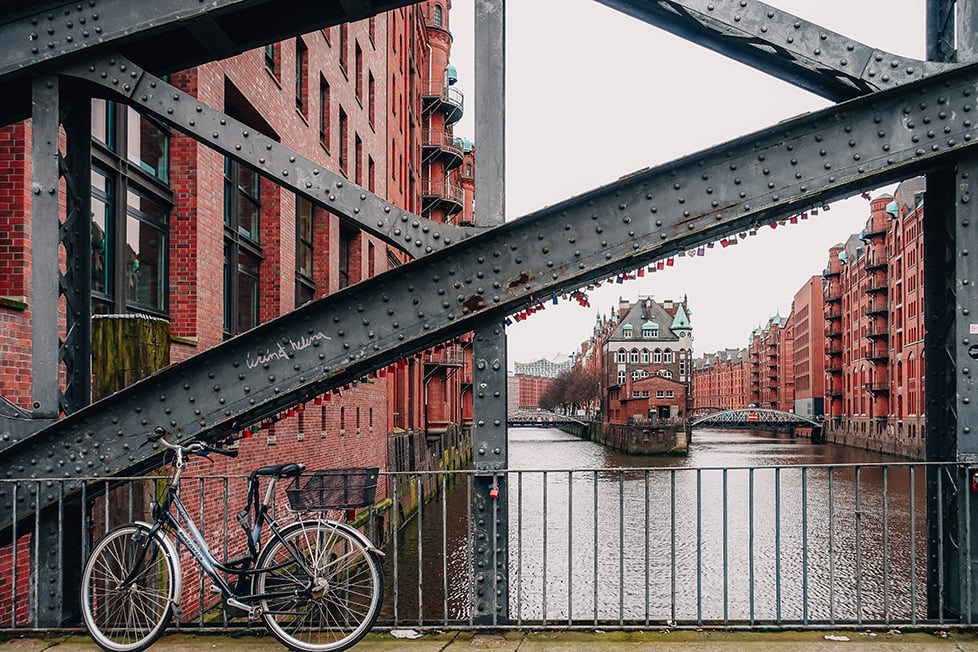
Most backpackers gravitate towards Berlin , and for good reason: its nightlife is unbeatable and there is a wealth of culture to keep people interested. But the capital is its own thing – it doesn’t resemble the rest of Germany at all. For European backpackers, there are tons more awesome spots to uncover.
Dresden , beaten to shit during WWII, has been wonderfully restored. Hamburg is one of the coolest cities in the country, at least if you’re staying in the St Pauli neighbourhood.
Bavaria in the South is known for the Black Forest area (one of Germany’s National Parks ), an unintelligible dialect of German, and beautiful scenery. Finally, Regensburg may be the prettiest town in the country. But there are SO MANY others – some completely micro-sized.
What to Know Before Visiting Germany
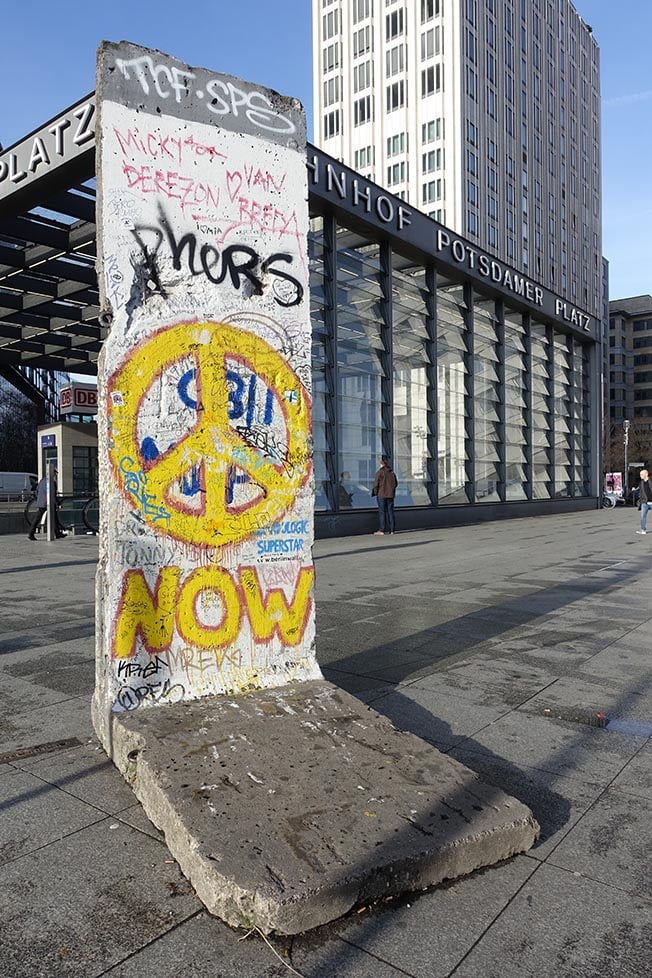
- Don’t miss out on… visiting a beer hall. No one can drink like the Germans and by that, I mean with such control and enjoyment at the same time.
- You know what’s overrated… Munich. The city itself, whilst pretty, doesn’t offer a lot in the way of attractions. The locals can be pretty arrogant too.
- The coolest hostel is… Hostel die Wohngemeinschaft . A cozy social vibe. A bohemian retro-style hostel with a cafe that becomes a bar at night. And a common area open 24 hours with free coffee and tea.
- The best food is found in… Berlin. The gastronomic scene is incredibly diverse, unlike many other German cities where food tends to be homogenous. Vegetarianism is alive and thriving here!
Backpacking The Netherlands
Coffee. Canals. Cannabis. Windmills. Those are some of the things that come to mind when thinking about The Netherlands.
Visiting Amsterdam has long been a favourite backpacker haunt and is well worthy of exploration. It is THE place in Europe to (legally) rock into a coffeeshop, order a joint, and sit down to smoke it.
If you like riding bicycles long-distance, The Netherlands is a perfect country in which to feed that urge: The Netherlands is almost entirely flat. If you have had long challenging days trekking or biking in the Alps, the flatness here will be a welcomed change.
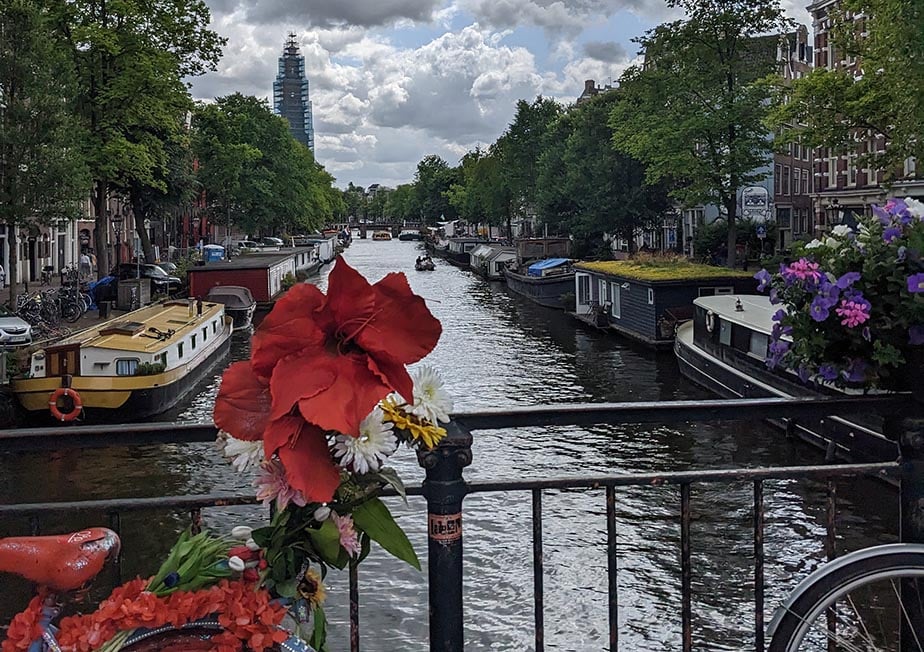
You will find that Dutch people often speak perfect English which is impressive as Dutch sounds nor looks anything like English. Because the country is relatively small, you can travel around here with ease whilst taking in a majority of it.
Most backpackers make a stop in Amsterdam and leave the rest of the country be. Don’t get stuck in the capital city – at least take a day trip from Amsterdam .
What to Know Before Visiting The Netherlands
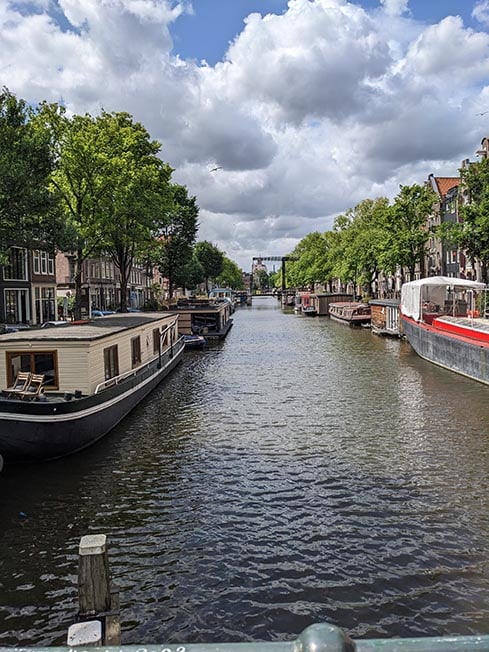
- Don’t miss out on … partaking in some magic mushrooms while visiting Amsterdam. Seriously, those Van Gogh paintings are mental when you’re frying.
- You know what’s overrated… staying in the HEART of Amsterdam – it’s overly expensive and crowded. One could stay outside the city, save a bundle, and then take the train in. I suggest finding a hostel in Utrecht instead.
- The coolest hostel is… Stayokay Hostel Amsterdam Vondelpark . All the services that you need as a backpacker. Nice areas to chill, work, and hang out. Great atmosphere to meet other travellers. Probably the best location in Amsterdam. The park and Museumplein right next to you.
- The best food is found … while staying in Amsterdam , only because of the stroopwafels! These are one of the greatest treats ever.
Backpacking Belgium
Let’s be honest: Belgium doesn’t offer much in way of stand-out attractions. There is no Colosseum, no Montmartre, no legalized drugs, or raging Berghains. Just a lot of charming houses, calories, and dreary weather.
And for these reasons, I LOVE Belgium. How amazing is it that Belgium places beer in such high and hallowed regard? Bless the Belgians who seem to have no problem smothering their fried potatoes in aioli and mussels with heavy cream. I love that you can go backpacking in Belgium with zero expectations and still be impressed.
It’s almost as if Belgium is a guilty pleasure of sorts. The whole country is just one big bar where you can eat and drink to your heart’s content and no one gives a shit.
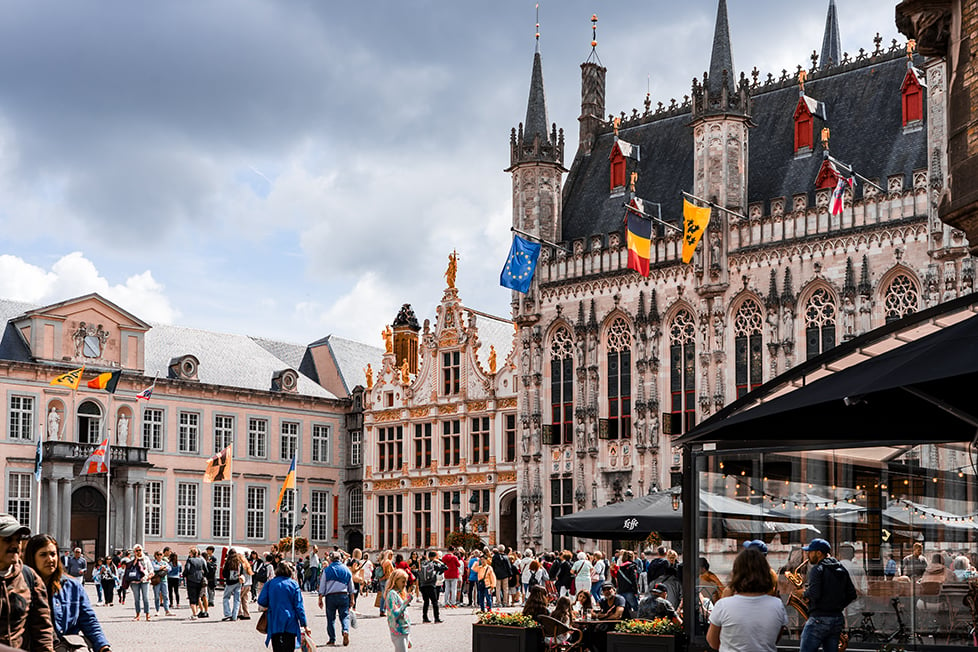
If you’re traveling between France and the Netherlands, it is absolutely worth stopping over in Belgium for a little while. Antwerp would be the best place to base yourself although Ghent and Bruges are worth seeing . Bruges gets absolutely zombified with tourists, though – prepare yourself.
And you shouldn’t skip the nation’s capital Brussels . It’s also the capital of the European Union but in addition to stiff people in suits, there are also many cool things to see in Brussels .
If you wanted a really enjoyable backpacking Europe experience, consider sleeping at a brewery for a few days! Most have guesthouses attached. In particular, Het Anker is great. Otherwise, Brussels’ hostels are the best place to stay on a budget.
What to Know Before Visiting Belgium
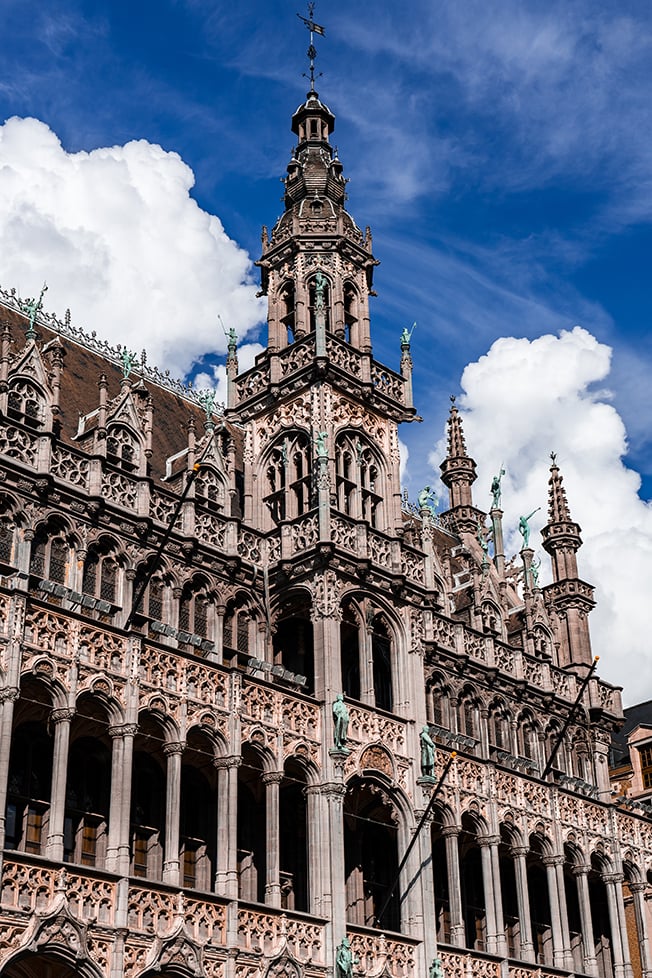
- Don’t miss out on… staying in Ghent , the prettiest medieval town in Belgium. It’s mostly known for its canal houses and local mustard. Gruut, a precursor to today’s beer, is also made in Ghent.
- Keep an eye out… when you’re in Brussels. Whilst certainly “edgier” than most European cities, Brussels can be a little too rough at times.
- The coolest hostel is… Hostel Uppelink Ghent . Though the building may be a bit old, the location is unbeatable. It’s literally next to the city’s famous Sint-Michielsbrug bridge.
- The best food is found in… the “brown bars”, where they serve the fried potatoes and mussels in excess.
Backpacking the UK
The UK is just one of those places that I have fallen in love with over the years. If you are in the mood for a wonderful campervan and trekking adventure, backpacking in the UK is the journey you have been waiting for.
Note to my geographically challenged friends – the UK is a country comprised of 4 countries: England, Wales, Scotland, and Northern Ireland. And the Brits WILL get mad at you if you refer to the whole area as “England” ( Ed: Sounds about right).
England and Wales have large sections of coast that are far off the beaten path and offer up excellent hiking/camping possibilities. The Highlands in Scotland have some of the last true wilderness areas in Western Europe. The Scottish Islands look like something out of a fairytale book.
Along with stunning natural landscapes, the UK is home to major centres of culture in Europe. In England, the ineffable London is an icon for obvious reasons. I also highly suggest chasing down ghosts in Canterbury , getting smart in Oxford , and basking on the beach in Brighton . And the Lake District in Northern England is incredible!
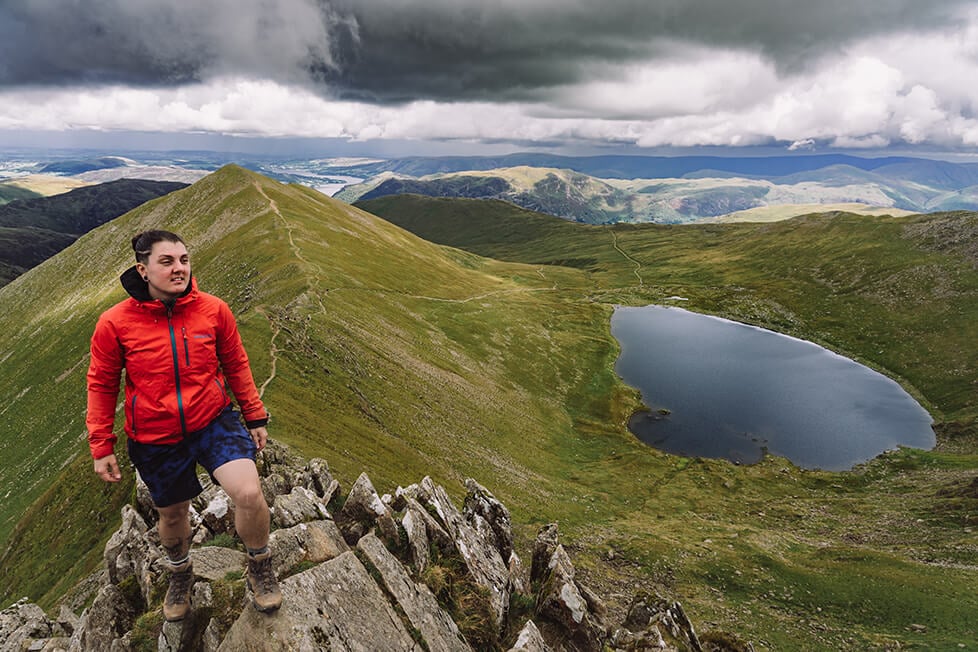
Scotland is a world of its own. The Scottish capital city of Edinburgh is full of awesome things to do. This region has landscapes so green that the hills seem to have been spray-painted in every sense of the word.
It has remote islands dotted with whiskey distilleries, lochs, and cascades. One could easily spend all their time backpacking in Scotland and could totally forget about “the south”.
The hiking trails and huts in the Highlands offer up an endless supply of hiking opportunities in a breathtaking environment. Throw in the vast cultural richness of the big cities and small villages and you have yourself one great place to go traveling.
Backpackers don’t go to Wales as often but for no good reason. It also offers awesome hiking opportunities, and Cardiff is a small-ish but cool, cultural city.
What to Know Before Visiting the UK
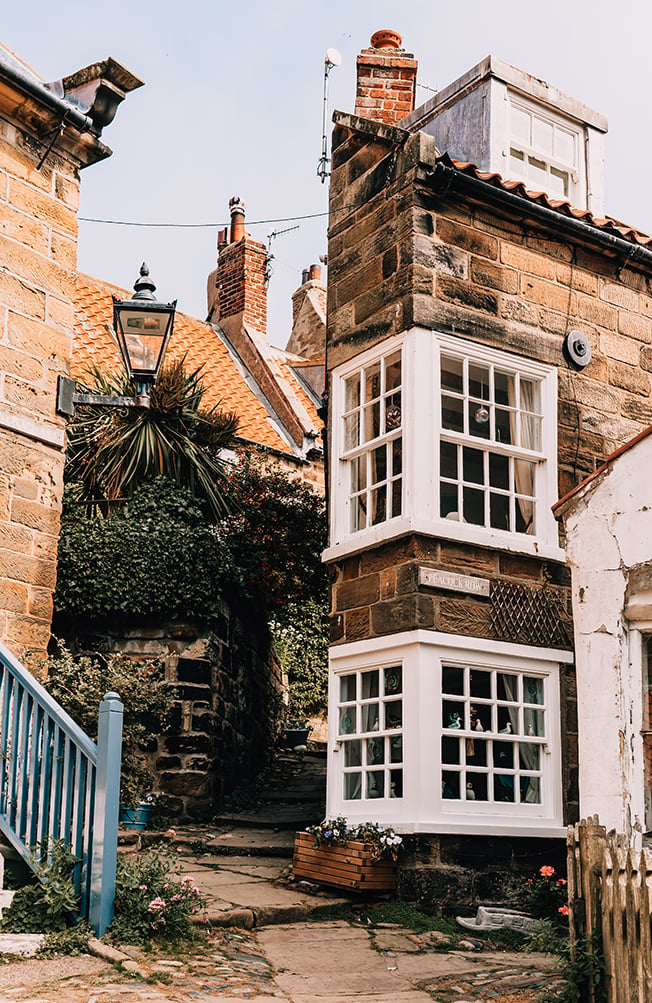
- Don’t miss out on… going off the beaten path in the Scottish Highlands. If you really want a unique experience, try island hopping in the Hebrides.
- You know what’s overrated… Buckingham Palace. Just skip it.
- The coolest hostel is… Onefam Notting Hill . This award-winning hostel is one of the best locations in the capital. It’s perfect for solo travellers to make friends for life.
- The best food is found in… The Indian food in the North (Manchester and Yorkshire). For that matter, the vegan scene nationwide is thriving and varied.
Backpacking Ireland
The lush, green, enchanted, and enchanting island of Ireland perches serenely at the furthest boundary of Europe. Beyond it, there is nothing but the Atlantic until it reaches the New World.
Somehow, Ireland’s location and geography are encapsulated in its culture. It is European but only just; civilized, yet it’s wild and rugged. It rains a lot but remains perpetually pleasant and inviting.
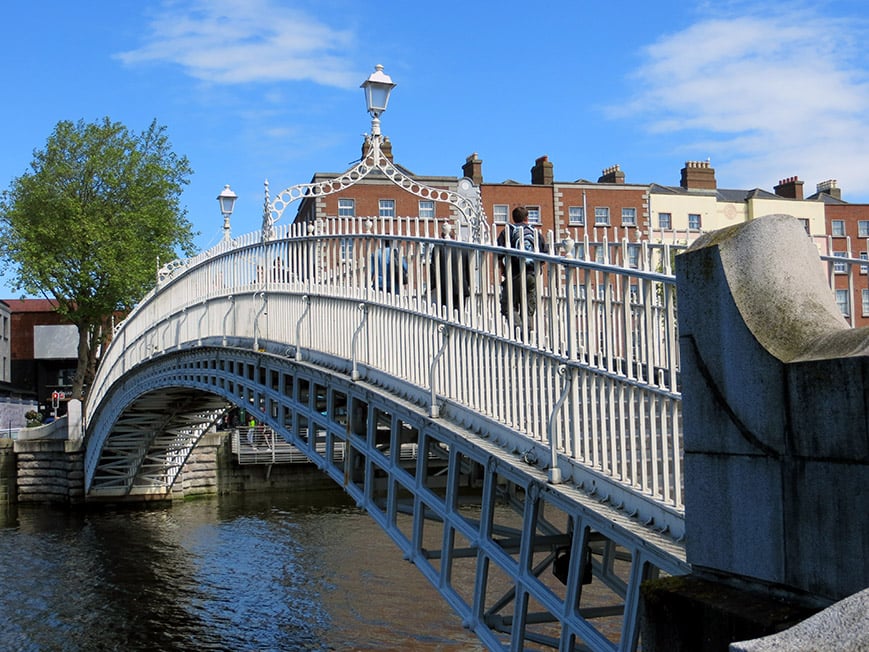
Sometimes crudely dismissed as the UK’s little cousin, backpacking Ireland offers visitors the chance to explore the most plucky nation in the world and get a glimpse of a simpler world that has sadly vanished forever elsewhere. That is not to patronize though, Dublin is every bit the cosmopolitan ( and expensive ) EU capital, and the once-troubled Belfast wears its gritty history with pride.
But head out to the Burren , or the lanes of Cork , and you will find warm taverns ringing with the sound of the fiddle and a way of life where time still takes its own time.
The headline draw in Ireland is the capital Dublin where you can visit Kilmainham Gaol and pull a pint at the Guinness brewery. But not to be missed are the Cliffs of Moher, the ancient streets of Galway , and the colored houses of Cork in the capital of “authentic Ireland”.
For the edgier side of the Emerald Isle, cross the (porous & invisible) border to the North and check out the murals of Belfast. From here you can easily visit Game of Thrones locations or check out the geologically wondrous Giants Causeway .
What to Know Before Visiting Ireland
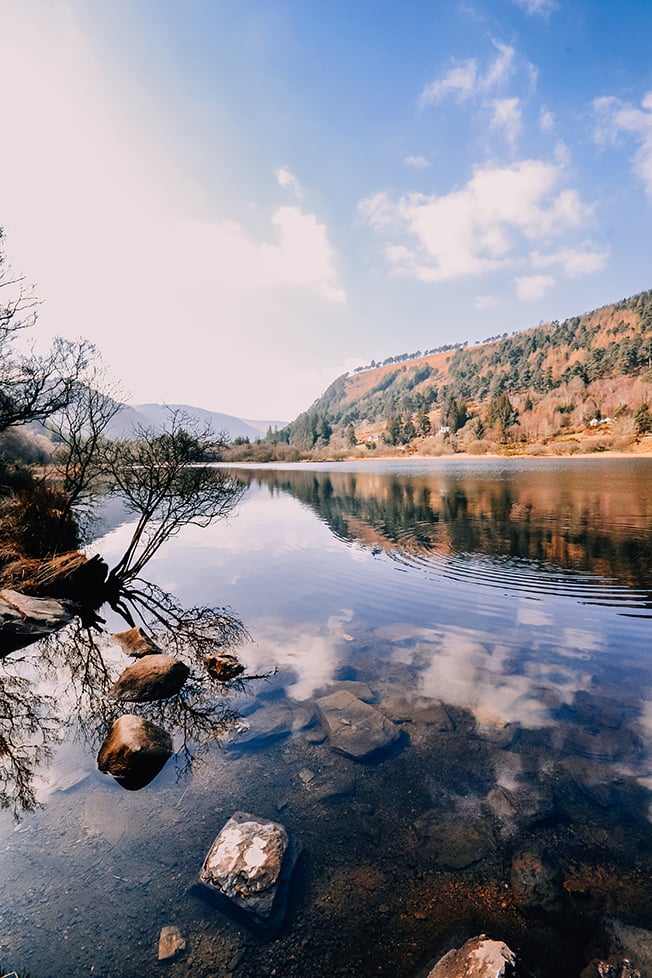
- Don’t miss out on… Watching an Irish sport (hurling or Gaelic football) game in a pub.
- You know what’s overrated… kissing the Blarney Stone. You’ll wait sometimes hours in line just to share spit with other people over a hole in the wall. Yes, it’s as unnecessary as it sounds.
- The coolest hostel is… Jacobs Inn . Offering a super cool bar area and rooftop terrace, the pod sleepers will make sure your ready for a top day tomorrow.
- The best food is found… at the Galway Seafood Festival. If you happen to be staying in Galway in September and October, don’t miss out on this.
Backpacking Greece
Getting to know Greece is one of the most rewarding backpacking trips to be had in Europe. Those blue and white houses and perfect Mediterranean landscapes you have seen on postcards live up to their hype in real life.
Greece is a charming, laid-back country. Backpacking the Greek Islands has been one of my favourite travel experiences. This is due not just to the beautiful views, but to the food, beaches, wonderful people, and plethora of history.
Island hop the Cyclades. Pop over to Crete . Experience life with no cars on Hydra. Whatever you get up to in the Greek islands, a Europe backpacking trip that makes it here is hell of a good time.

But wait! Greece may be best known for its islands but there is a whole mainland of INCREDIBLE stuff to explore, too! (Also, it’s way cheaper than the tourist-crowded islands.)
Visit Athens , the capital full of ancient history and cool graffiti. I know the city gets a bad rap but it’s actually pretty cool. For one thing, the nightlife here is fantastic – rebellious, wild, and absolute fun. Another draw is the Acropolis.
Close to Athens, you’ll find Delphi , an adorable little town with the ruins of a once-famed oracle’s home. Meteora is known for its unique monasteries built on top of stone pillars. Thessaloniki , Greece’s second city, is full of good vibes and great food.
If you’re a history and/or mythology geek, backpacking Greece is gonna get your socks spinning out of excitement.
What to Know Before Visiting Greece
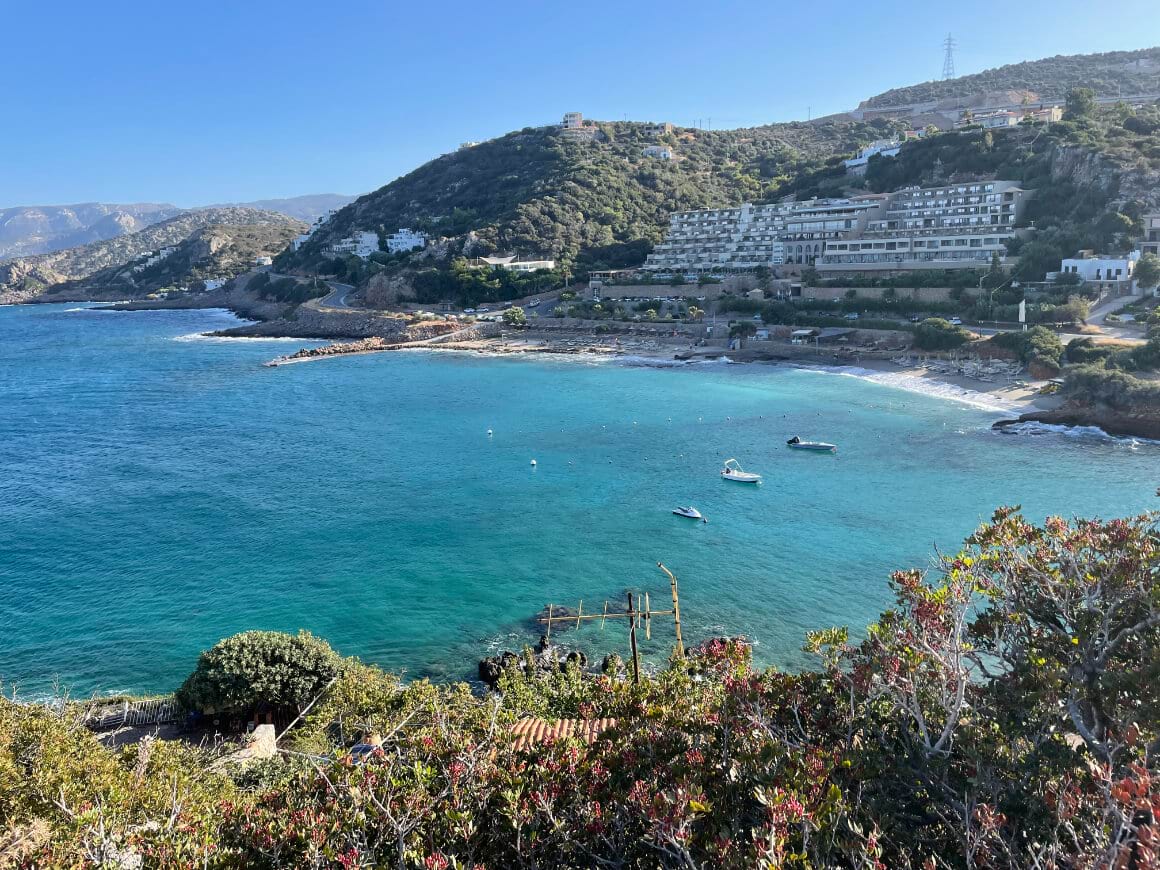
- Don’t miss out on… the Ionian Islands. This part of Greek islands receives a fraction of tourists yet hosts some of the most beautiful places in the country. Zakynthos has good places to stay .
- You know what’s overrated … Santorini. It’s overcrowded, expensive, and on the verge of being spoiled.
- The coolest hostel is… Athens Quinta . Travelling is all about finding those magic places that make you feel at home. This hostel takes that idea and runs with it. Including, free breakfast!
- The best food is found in… Crete. It’s well-known for its culinary culture. It’s far enough away from the mainland that the food is quite different as well.
Off the Beaten Path Adventures in Europe
Europe gets BUSY. Hundreds of millions of people, both from Europe and elsewhere, travel around it every year.
And you know what? 80% of those people do one of two things. Either they just visit a few cities or they go on cookie-cutter tours where they are shuffled around from one famous attraction to another, plowing through a sea of baguettes, gelato, and, tapas along the way.
(Actually – that doesn’t sound half bad…)
It’s easy to get off the beaten path by visiting Europe’s hidden gems . In the Netherlands, go anywhere that’s not Amsterdam; in the UK, anywhere that’s not London ( Ed: not quite sure about that, but close).
But there are also a few countries that have not been included in this guide yet, and I’d like to give them a little shout-out. They are not traditionally on the backpacker trail but they are awesome, plus they’re right on your route so it’s very easy to visit them!
For starters, Vienna in Austria is easily amongst the most beautiful cities in Europe. While visiting Vienna , everywhere you look there is some regal remnant of the Hapsburgs: a palace here, a monument there, and plenty of museums to go along with them.
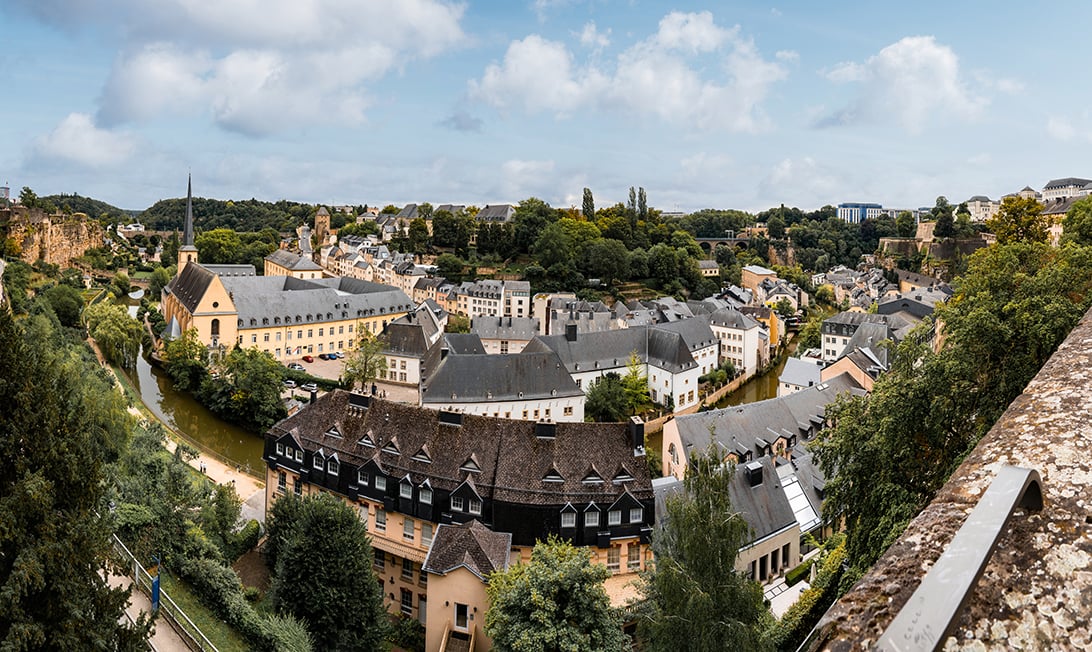
Checking out Luxembourg can also be nice since it’s easy to get to and fro from the Netherlands or Germany. It’s expensive as fuck and the eponymous city doesn’t offer much to see but there are some awesome Luxembourg Airbnbs including enchanting countryside castles.
Check out some of the micro-nations, too. Vatican City is super easy to include since it’s literally smack-bang in the middle of Rome – the world’s smallest country measures less than a square kilometre. Visiting Monaco is an easy day trip from the French Riviera, and San Marino from Bologna, Italy.
Staying in Andorra , on the border between Spain and France, is a great idea. It’s particularly gorgeous in the autumn. Liechtenstein is one of the weirdest places in Europe. Full of cool stuff, most tourists visit the town Vaduz for a day but the Liechtensteinian Alps are worth a couple of days of hiking!
Other than that, explore small villages. Go on multi-day treks. Climb the mountains that aren’t the Alps (though they are stunning). You could also just fuck off to Georgia for a bit to extend your stay (who cares if it is actually in Europe or not).
Couchsurf with locals. Spend a few extra days getting to know a popular city. Do things that aren’t on the “must-see sights” in backpacking Europe travel blogs.

We’ve tested countless backpacks over the years, but there’s one that has always been the best and remains the best buy for adventurers: the broke backpacker-approved Osprey Aether and Ariel series.
Want more deetz on why these packs are so damn perfect? Then read our comprehensive review for the inside scoop!
Well, with dozens of countries and countless cities in Europe to visit , it’s a bit hard to pinpoint the BEST things to do in Europe.
But you gotta start from somewhere. So here are some of the top things to do whilst backpacking Europe on a budget.
1. Go to a one-of-a-kind festival
Europe loves to celebrate every little occasion they can, be it the death of a saint, a harvest, or even just a long weekend. Between the cultural holidays – of which there are MANY – the seasonal festivals, and the more modern musical festivals, you’ll have many opportunities to just let loose. And let loose is what you should do.
You could check out the Carnival at Venice, get wasted in Dublin on St. Patrick’s Day, and get tomatoe’d at La Tomatina in Valencia. Let alone some of the world’s best music festivals like Boom Festival (psytrance), Glastonbury (pop-adjacent), and Roskilde (also pop-adjacent).
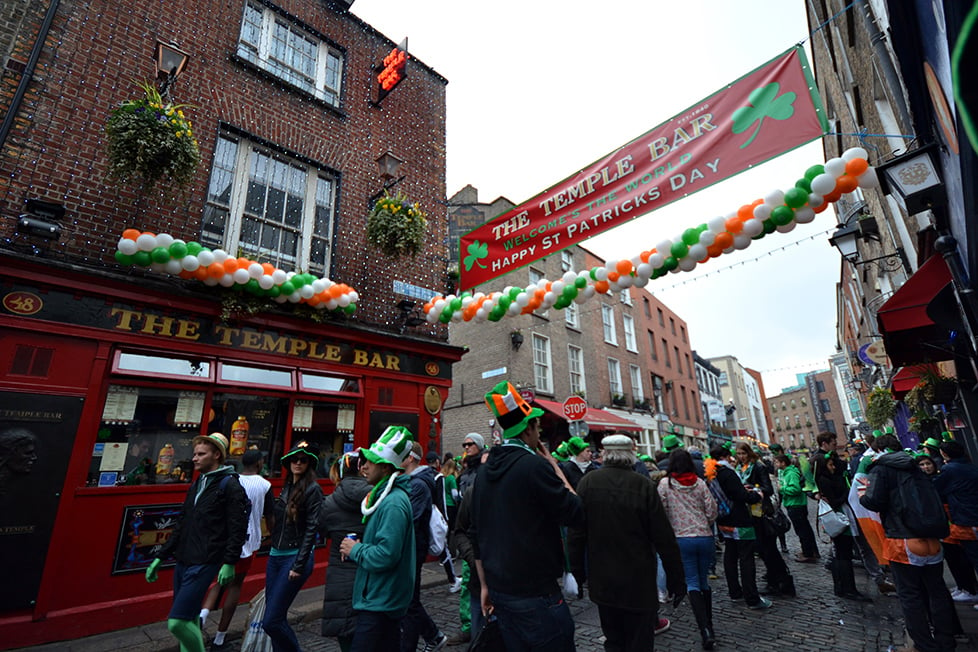
2. Go island hopping in Greece
Greece is composed of over 227 islands – which means there are over 227 places to go on an adventure. Live out your mythical fantasies on the islands of Ithaca or Crete, escape the hecticness of life on Sikinos, or join the hordes of partiers on Ios and Mykonos. Your choice.
2. Eat all the tapas in Spain
In Spain, tapas are not just a plate of food; they’re a way of life. They require time, attention, company, and most of all, love, to truly appreciate.
When visiting Spain, it is absolutely mandatory to sit down to a tapas meal with friends and to converse over them, preferably for an entire night. The best tapas are found in Andalucia, especially in Granada .
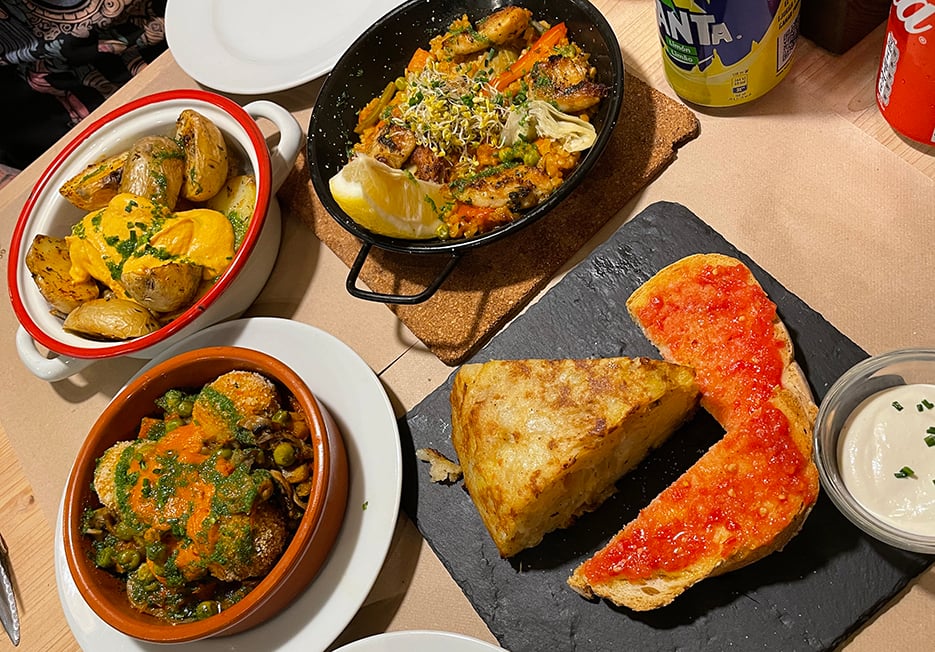
3. Hike in the Alps
Of all the great mountain chains in the world, the Alps are probably the most accessible. Over the years, it has been tamed and crisscrossed with so many trails that just about anyone can visit here. Tours around the 3 highest mountains in the range, Mont Blanc, Monte Rosa, and the Grand Combin, as well as the otherworldly Dolomites, are all exhilarating experiences and among the best hikes in the world .
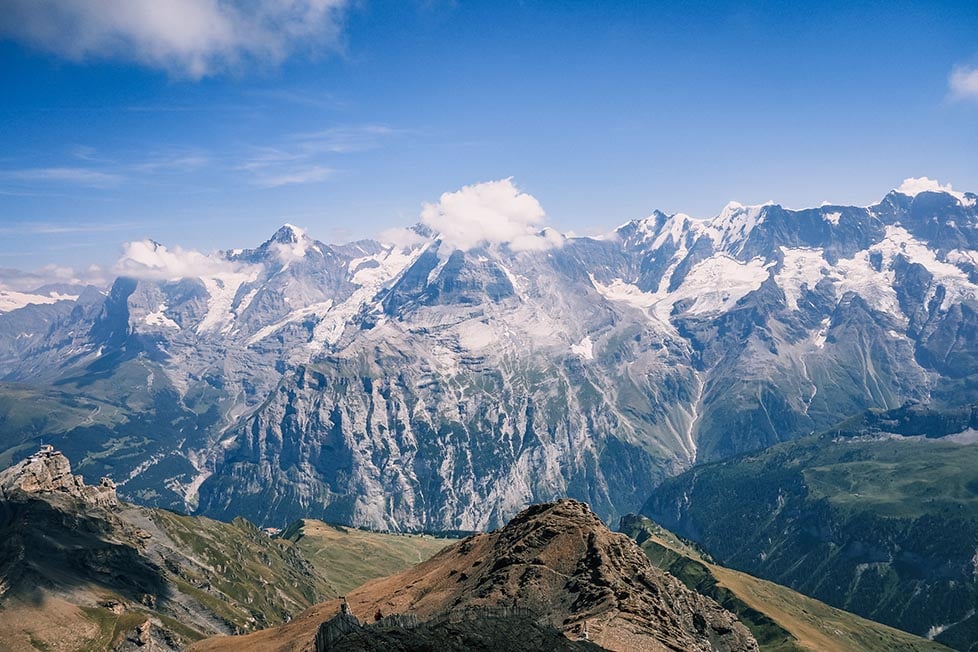
5. Get cultured in Italy
The most historically significant and consequently most popular cities to visit in Italy are Rome, Venice, and Florence. These “museum cities” deemed culturally significant by the government are preserved as best as possible.
They are like interactive history lessons that you can walk amongst or even get lost in for days at a time. I highly recommend you make time for the Colosseum, the work of Di Vinci, and the Vatican museums.
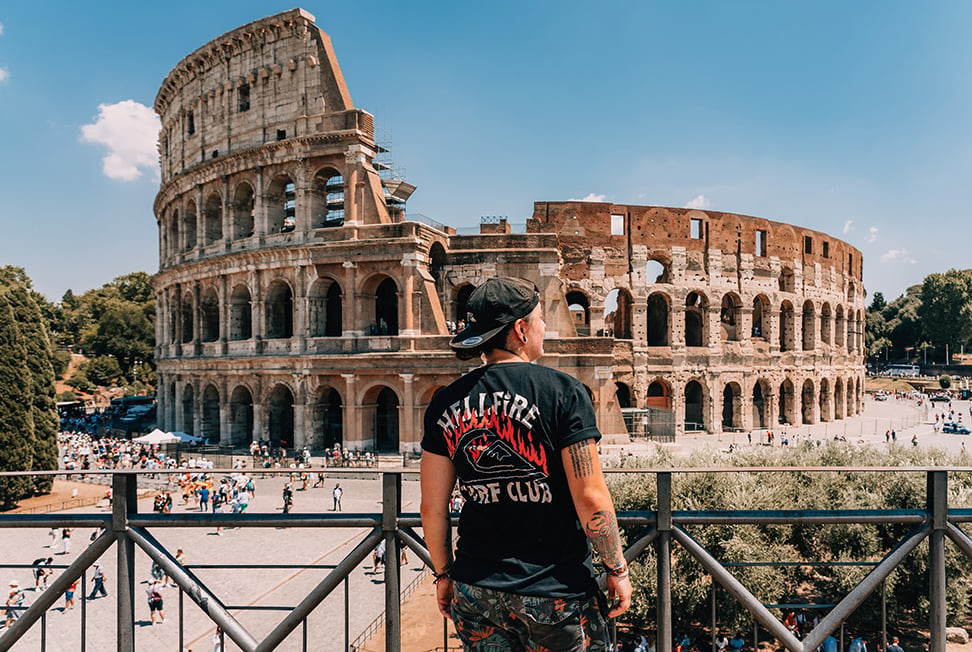
6. Dance like no one’s watching
The party cities in Europe are on a different scale than the rest of the world. I’m talking about Berlin, Amsterdam, and Manchester. The stories from the clubs are the stuff of legends.
The level of freedom and debauchery is enough to make even the most open-minded do a double-take. Even if you aren’t able to get into the infamous Berghain, you can take your nights (or days) whichever way you please.
7. Change your plans
It’s always good to have an idea of itineraries while you’re backpacking Europe. But there’s nothing more heartbreaking than falling in love with a place (or person? ) and having to leave for your next destination. So leave a bit of wiggle room in your route for surprises.
Extend your stay at the cheap hostel with the cute bartender. Buy the last-minute plane ticket to meet that travel buddy again. Let the universe take control a bit too.
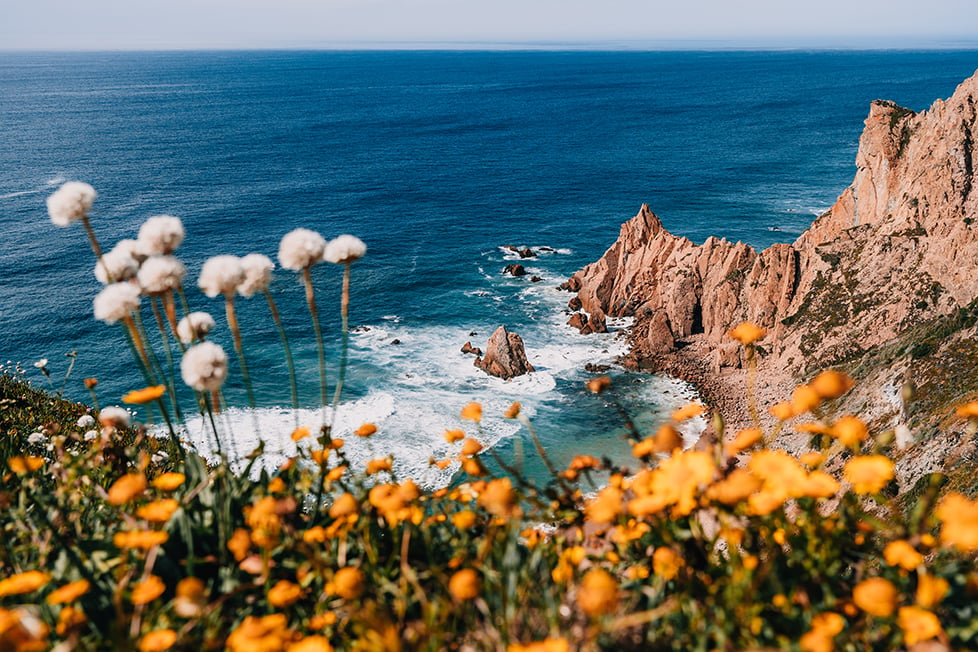
8. Take the scenic route
Europe has one of the most developed train travel networks in the world. You can get just about everywhere by rail, which is fantastic news when Backpacking through Europe!
These insane views and comfy carriages make some of the best train journeys in the world . It’s a classic; characters in The Murder on the Orient Express and Dracula have traversed the same rails. It’s damn romantic too, so settle down.
Granted, it’s more expensive than the bus so it’s not the best way to save money. But with high-speed trains, you can really make the most of your time on a Euro backpacking trip. So sometimes it’s worth the extra Euro.
9. Get High in Amsterdam
Would this really be The Broke Backpacker if I didn’t encourage you to sample some grade-A Dutch weed? The Dutch are very progressive when it comes to mind-altering substances so if you’re looking for a place to do some drugs safely and legally, Amsterdam might be to your tastes!
Just be respectful about it – residents of Amsterdam are not big fans of the hordes of drug tourists wandering the streets of the city.
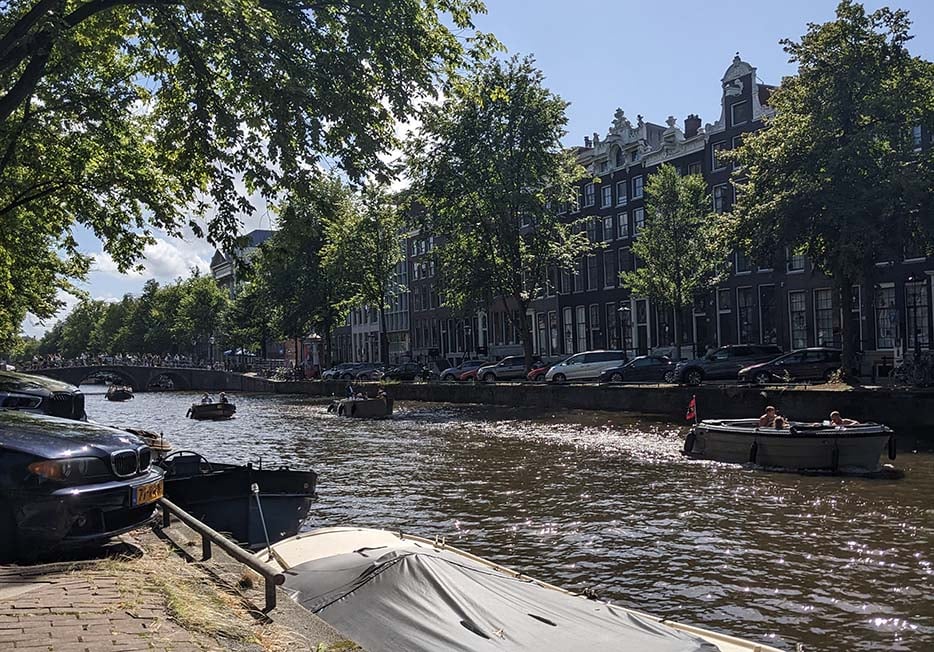
10. Deep dive into London
London is one of those amazing cities that you could spend a lifetime exploring. It has a reputation for being expensive – and there’s good reason for that.
But there are so many museums and attractions to visit – many of which are absolutely free! With cheap flights, free walking tours, and a London Pass , it can actually be a surprisingly budget-friendly destination. The British Museum, Buckingham Palace, and the London Eye are all worth putting on your Europe itinerary.
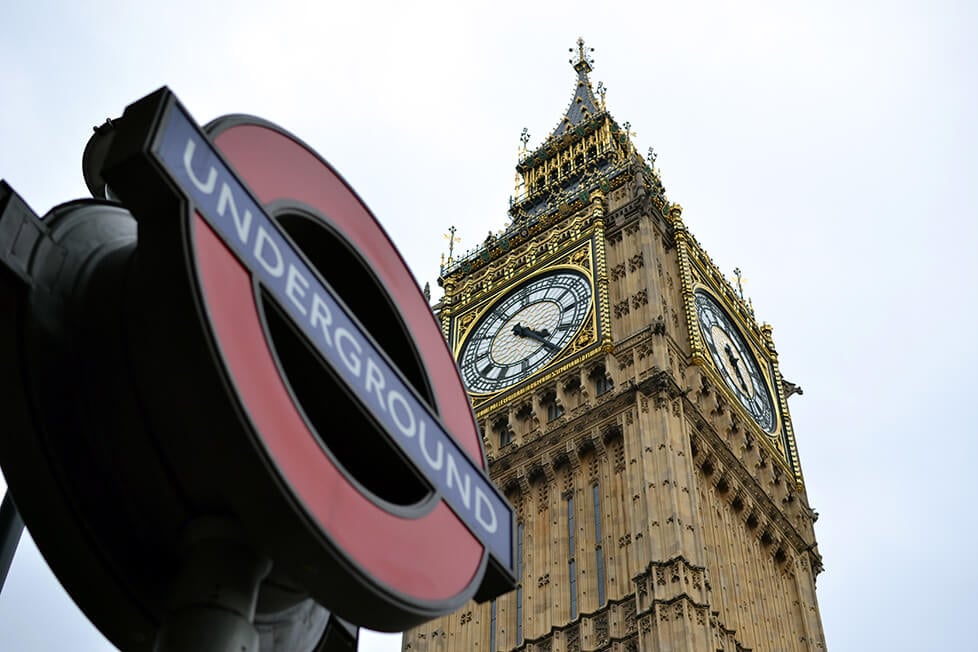
Wanna know how to pack like a pro? Well for a start you need the right gear….
These are packing cubes for the globetrotters and compression sacks for the real adventurers – these babies are a traveller’s best kept secret. They organise yo’ packing and minimise volume too so you can pack MORE.
Or, y’know… you can stick to just chucking it all in your backpack…
Hostels are the most affordable accommodation option for backpacking Europe on a budget. Well, aside from dreamy mountain huts, your awesome tent, and a stranger’s couch. Lucky for you, Europe is THE place for living da hostel life in all its glory.
This continent might hide some of the best hostels in the world – but arguably also the worst…
These incredible hostels in Europe come in all shapes and sizes. But remember, a cheap hostel isn’t necessarily a perfect hostel. In fact, it rarely is (but, yes, you can occasionally hit the jackpot).
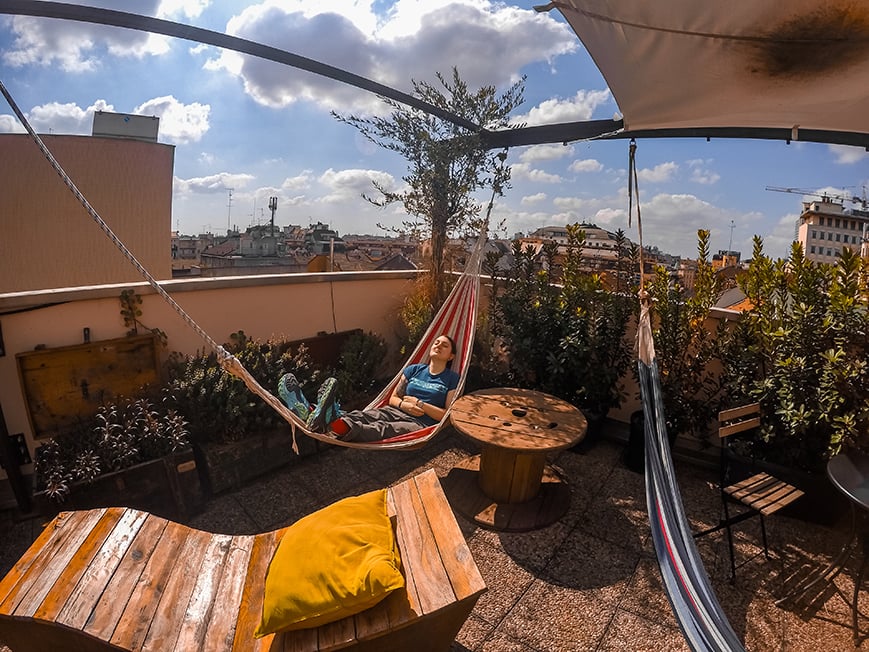
But not all of them are dedicated to parties. You’ll also find loads of boutique hostels for flashbackers, quiet rooms for families, and even some female-only hostels for solo female travellers .
Well, back to the good stuff. When you’re backpacking Europe, you find accommodation is generally very safe, clean, and fun. Pub crawls and get-togethers are a staple in almost any hostel.
But if you’re wanting to plan a trip to Europe on a budget… well, you’ll have to make do with sharing the bigger dorms. Even hostels can sometimes be a bit pricey in Europe, especially in France or Switzerland. Still, they’re way cheaper than Airbnbs or hotels.
Airbnb is a great option if you want some space away from travellers and a more authentic experience. Though they’re not always the cheapest way. If you’re in a group, the prices can be more reasonable.
- Where to Stay in Spain
- Where to Stay in Portugal
- Where to Stay in France
- Where to Stay in Italy
- Where to Stay in Scotland
- Where to Stay in Ireland
- Where to Stay in Switzerland
- Where to stay in Greece
Backpacking Europe does not have a reputation as a budget-friendly place for travellers . The prices in the popular tourist destinations have sky-rocketed in recent years, and it doesn’t look like they’re slowing down any time soon.
It’s pretty cunning actually. The cheap flights entice you in and BOOM: you’re stuck paying the price for it – literally.
For most travellers, booking hostels is your cheapest option. Cheap hostels range from around $25 – $50+ a night for a bed. If you’re in a group, Airbnbs can (but not always) be cheaper.
Though, where there’s a will, there’s a way. There is, and always have been, savvy travellers making their way around Europe with clever tricks to save money.
I recommend both of these options over hotels mainly because you usually get a kitchen to prepare your own food. Doing this can bring your food bill down to around $10 – $15 a day. You could easily spend more than this on one meal of you eat out. You can find street food for around $6 but it’s not always the best quality.
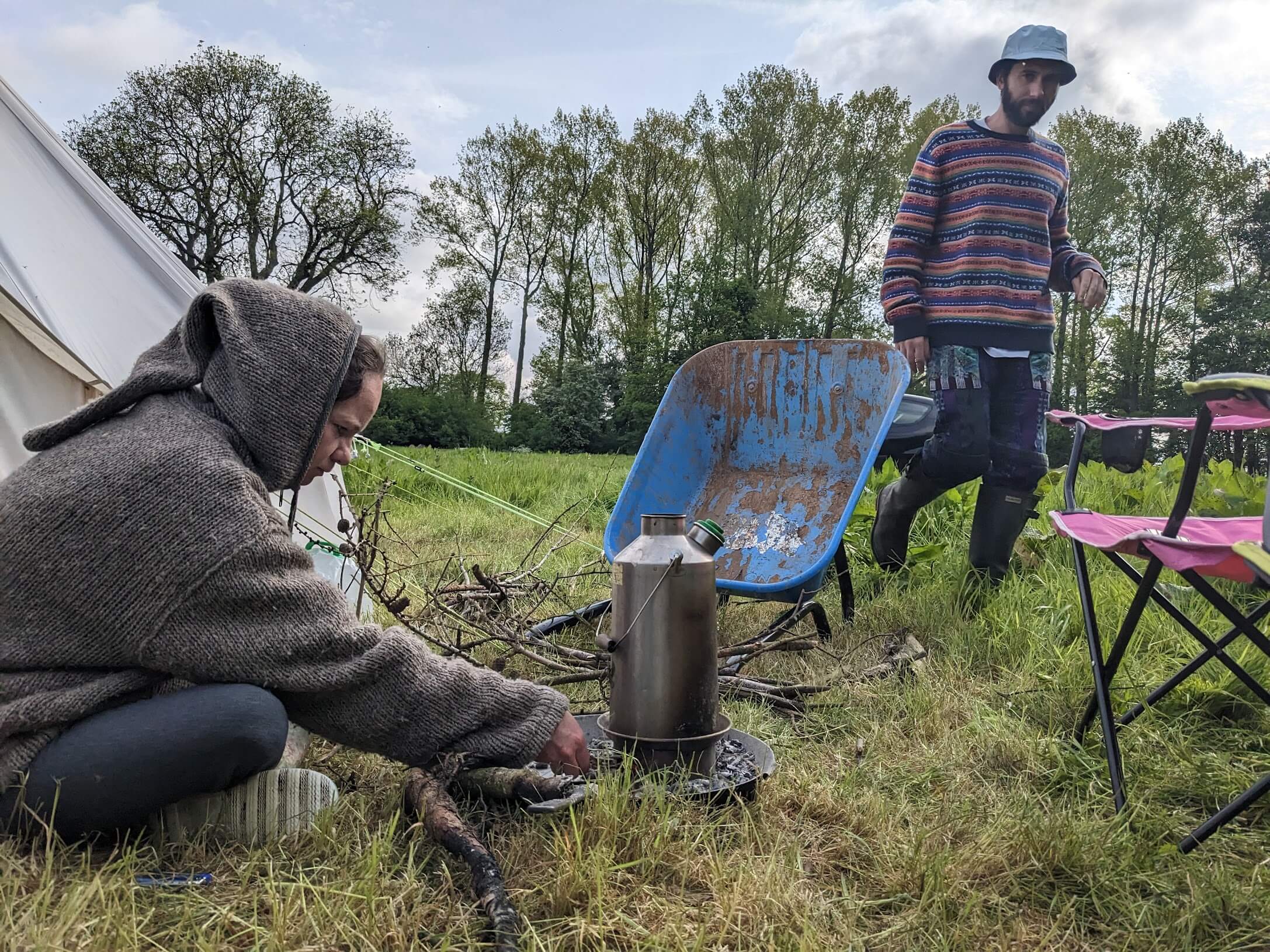
Booking flights, trains, and buses in advance is the best way to save money. That way, flights go for as little as $20 and buses $10. The same goes for accommodation: the sooner you book, the better deal you will get.
If you want to let loose a bit, drinks in bars are generally quite expensive which can be up to around $10 in some places! So most people in Europe pre-drink (buy cheap drinks from the supermarket to drink a home before they go out) . Hostel bars usually have the most reasonable prices.
One budget-saving tip for first-time backpackers is to sort out your travel banking . Currency conversions and ATM fees stack up.
Get a travel card like Wise (formerly Transferwise) . With this, you can easily combat extra charges. Especially if you’re backpacking trip through Europe has many countries, this will make things much cheaper.
A Daily Budget For Europe
I have broken down the average daily travel costs in Europe you can expect in order to help you get to grips with your own Europe backpacking budget.
Travel Tips – Europe on a Budget
Okay, so now that you got an idea of the average costs for backpacking in Europe… What if I told you that you could save even MORE? Here are some of the best money saving tips for travelling Europe on a shoestring budget.
- Camp : With plenty of awesome beaches, forests, stunning countryside, and far-flung mountains, camping whilst backpacking Europe on a budget is a great option. Grabbing a solid backpacking tent is never a bad idea! Just be aware that wild camping is illegal in most of Western Europe. So if you want to do it, you gotta be a little sneaky about it.
- Cook your own food: Travel with a portable backpacking stove and cook your own food to save some serious cash whilst backpacking across Europe. If you are on a tight budget, cooking grocery store food is your best option to save. With a stove in tow, you can do this even without a kitchen.
- Hitchhike : Hitchhiking is a 100% free and adventurous way to get around. In Europe, it’s pretty safe and easy although some countries are tougher than others.
- Couchsurf: The Portuguese, Greeks, Spanish, Germans — they are all awesome folks. Get to know some! Check out Couchsurfing to make some real friendships and see a country from the perspective of locals.
- Dive some dumpsters: Dumpster diving helps if you’re a little broke for a store-bought meal, too. There’s an art to it but you can soon get the hang of it.
Why Should You Travel to Europe with a Water Bottle?
Plastic washes up on even the most pristine beaches… So do your part and keep the Big Blue beautiful!
You aren’t going to save the world overnight, but you might as well be part of the solution and not the problem. I hope you become more inspired to continue being a responsible traveller .
Plus, now you won’t be buying overpriced bottles of water from the supermarkets either! Travel with a filtered water bottle instead and never waste a cent nor a turtle’s life again.

Drink water from ANYWHERE. The Grayl Geopress is the worlds leading filtered water bottle protecting you from all manner of waterborne nasties.
Single-use plastic bottles are a MASSIVE threat to marine life. Be a part of the solution and travel with a filter water bottle. Save money and the environment!
We’ve tested the Geopress rigorously from the icy heights of Pakistan to the tropical jungles of Bali, and can confirm: it’s the best water bottle you’ll ever buy!
So precisely when is the best time to visit Europe on a budget?!
Western Europe is a total madhouse in the summer; millions upon millions of tourists descend on the continent. Cruise ships fill the harbours, tour buses clog the road, and flight prices increase.
Whilst the middle of the summer can be a very beautiful time to visit, the summertime is the most crowded season and it is also the hottest. Portugal, Spain, France, Italy, and Greece can be so hot in July and August that all you want to do is switch places with that white wine bottle sitting in the bucket of ice.
Europe is also very prone to seasonal pricing. Prices rise with the temperatures in the summer.
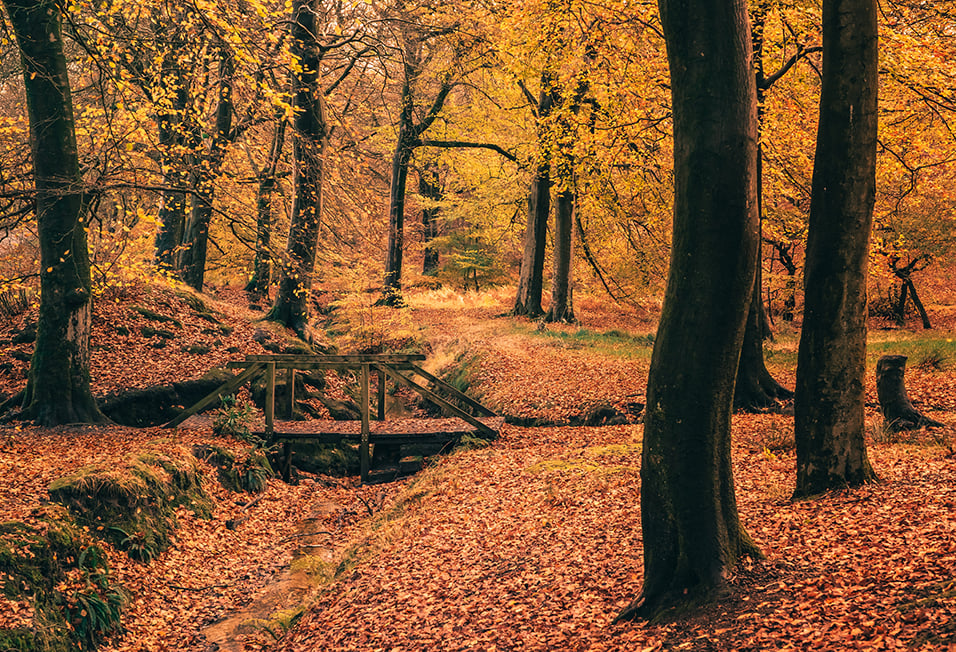
Point being, come in the summer if you must, but I don’t recommend it. The spring and the fall seasons are the best time to visit Europe on a budget. The temperatures are mild, and a majority of the people who were here on summer holiday have now sulked back to their offices and suburban hells.
Springtime in Paris and other European cities is as romantic as it sounds. Flowers are blooming and the birds are out. You can go in a t-shirt during the day without having the sun cook you alive.
You will find the lowest prices in most regions in the winter. Southern Europe – Algarve in Portugal, Andalucia in Spain, and Greek islands – is still pretty warm in the wintertime.
If you love winter sports, a winter visit is an obvious choice to explore the French, Swiss, or Italian Alps. Just note that pricing in ski destinations goes heads-up in the winter. The snow season is hugely more expensive than the summer.
Also, note on common European holidays: Europeans get around on their own continent a LOT during peak school holidays. This doesn’t necessarily mean higher prices but it DOES mean impenetrable crowds. Times to avoid outside of the peak summer season are usually mid-September, mid-February, Easter, and New years/Christmas.
What to Pack for Europe
When you’re backpacking Europe, depending on where you’re going and WHEN you’re going will change your packing list. Spain in the summer looks very different from Germany in the winter. But on every adventure, there are some things that are an excellent addition to your backpacking packing list that will really help your Europe backpacking trip.
On every adventure, there are 6 things that are an excellent addition to your backpacking packing list. They will greatly enhance your Europe backpacking trip too.

Snoring dorm-mates can ruin your nights rest and seriously damage the hostel experience. This is why I always travel with a pack of decent ear plugs.

Hanging Laundry Bag
Trust us, this is an absolute game changer. Super compact, a hanging mesh laundry bag stops your dirty clothes from stinking, you don’t know how much you need one of these… so just get it, thank us later.

Sea To Summit Micro Towel
Hostel towels are scummy and take forever to dry. Microfibre towels dry quickly, are compact, lightweight, and can be used as a blanket or yoga mat if need be.

Monopoly Deal
Forget about Poker! Monopoly Deal is the single best travel card game that we have ever played. Works with 2-5 players and guarantees happy days.

Grayl Geopress Water Bottle
Always travel with a water bottle! They save you money and reduce your plastic footprint on our planet. The Grayl Geopress acts as a purifier AND temperature regulator. Boom!
In order to get the most of your backpacking trip around Europe, you want to ensure that you get your phone plugged in and connected to a local network as soon as possible. That way you can use map apps to save yourself hours of being lost in city streets, get on Tinder to find yourself some company, and order in food on those days when you just can’t be bothered to go outside.
Note that if already have an EU SIM then it will work seamlessly in all over EU member states. However it will stop working when you leave the EU (such as when you cross from Eire to Northern Ireland or Montenegro to Serbia) . Likewise if you are visiting Europe from the US or Australia, you may find yourself having to change sims multiple times during your trip…unless…
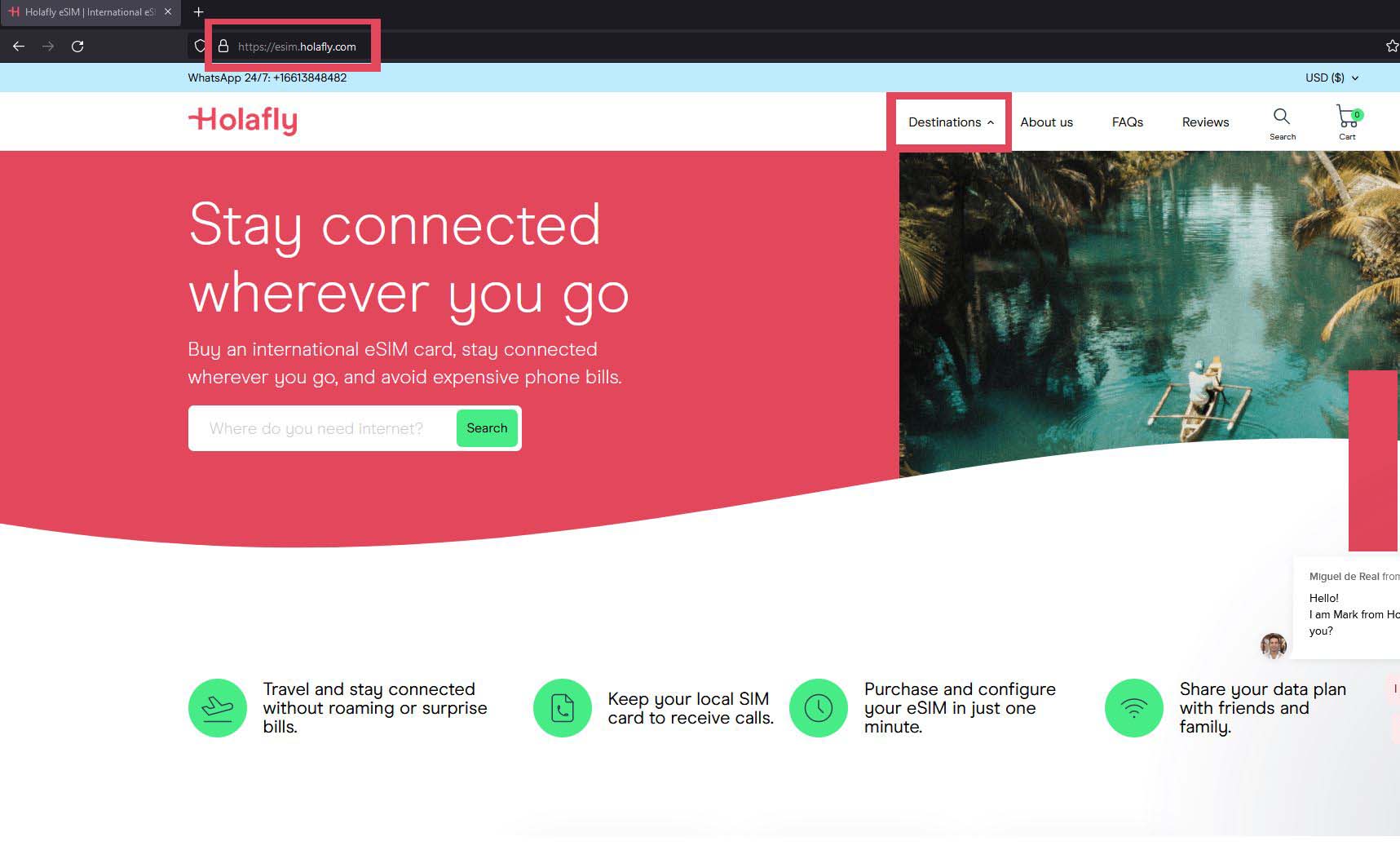
Our recommendation is to get yourself the HolaFly e-SIM Europe package . It works in 32 different European countries and offers unlimited data. There are a number of different packages available and the 30-day one costs $64 USD. What we particularly love about e-Sim is that you don’t need to remove your native sim, and can download your e-Sim package before you even leave home!
We have previously written a full HolaFly eSIM review which you can check out or else you can just hit the button below and check out the European Packages.
So how safe is Europe ? Very, very safe, actually.
There’s very little violent crime in Europe, traffic is mostly organised, and there are few natural disasters… The possibility of something bad happening to you on your journey backpacking Europe is slim, to say the least.
Your biggest concern is probably pickpockets and thieves. They particularly target crowded markets and train stations. Always be alert when moving about in big cities especially if you have all of your gear with you.
And those operating in big European cities are true pros – it’s not always enough to just keep your wallet in a purse instead of a back pocket. Keep a keen eye out, especially in Paris, Barcelona, and Rome.
The most popular European tourist sites are also teeming with scammers. With a little research on the most common tourist scams in Europe, it’s not hard to avoid them at all.
It is never a good idea to be out shit-faced drunk, alone, and loaded with cash – especially not at 3 am. Be smart, make good choices and it shouldn’t be too difficult to guard yourself and your belongings.
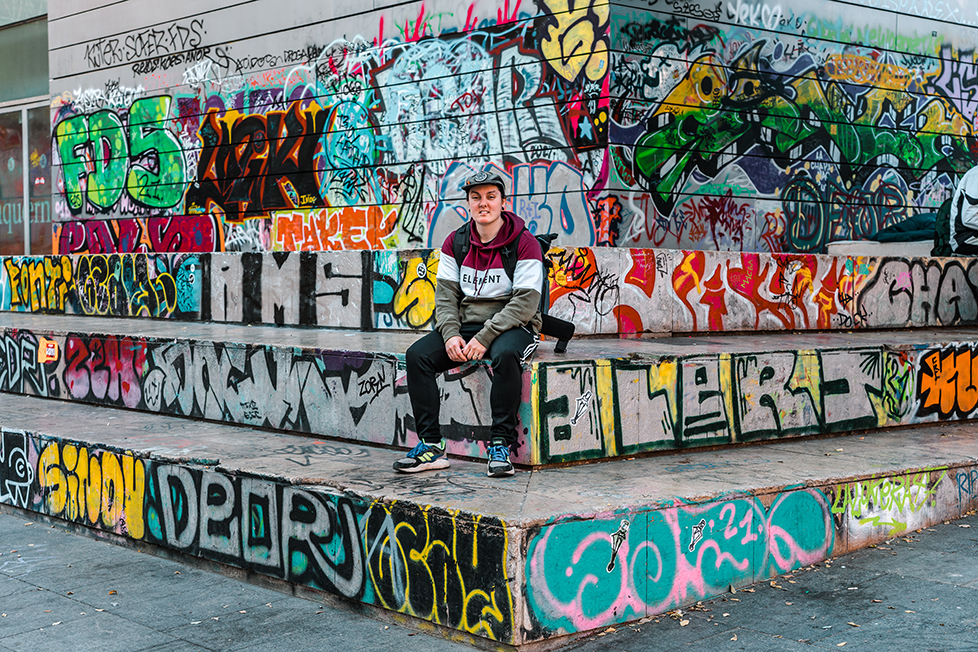
A few years back, Europe faced a string of terrorist attacks. Nothing new has arisen in the past few years so travellers shouldn’t feel worried about terrorism… And besides, unfortunately, we now know that these kinds of attacks are not only happening in Europe.
These events were rare but they did receive a lot of attention and negative press. That led to a lot of pro-nationalist anti-Muslim rhetoric across Europe even though plenty of other groups were also committing acts of violence.
And as diverse as a lot of cities in Europe are, Europeans, in general, are pretty damn white, and everyday racism is still well and alive. This doesn’t necessarily make Europe unsafe, it just means that it’s not impossible that ethnically diverse travellers might hear some snide commentary.
However, there are some happy news for other possibly-vulnerable backpackers: solo female travellers and LGBTQ+ travellers can thrive in Europe since Western Europe is generally safe for them.
- Is Amsterdam Safe?
- Is London Safe?
- Is Barcelona Safe?
- Is Naples Safe?
- Is Berlin Safe?
- Is Paris Safe?
Sex, Drugs, and Rock n’ Roll in Europe
Europe likes to party, a lot .
And not just one kind of partying, but all kinds of European Backpacking trip debauchery. There are your squats in Paris, beach clubs in Ibiza , warehouse raves in Berlin, music festivals in the Netherlands, all of that, and then some. You can’t beat chilling on some church steps at 3 am sipping negronis with friends either.
When it comes to partying, each culture has its own way of doing things. The Italians like the slow burn, starting with a spritz at aperitivo, then a nice dinner with wine, a cocktail at a local bar, before finally moving on to shots at the bar.
The Spanish are similar except they start all of this at 9 pm and go until 4 am. The Dutch appear to be hydrating all the time, but don’t be so sure; they’re big fans of the molly water.
You get the gist though. If you’re going to tour the party cities in Europe , you need to choose your parties well .
There are a couple of parties that shouldn’t be missed:
- Staying at one of the legendary party hostels .
- Going to a nightclub in Berlin. (Berghain is overrated – there are multiple that stay open 24/7!)
- Drinking in the piazzas of Rome.
- Dipping into a baggy in Amsterdam.
- A night in the Delirium Brewery in Brussels.
Also, be aware that not all European cultures take kindly to drunkenness. The Mediterranean cultures tend to frown upon people who can’t handle their shit. The further north you go, the less people care about your state of mind.
Getting Insured BEFORE Visiting Europe
Europe is a safe place to travel but that doesn’t mean you’re completely invulnerable. Sometimes you fall down the stairs in a club in Athens… or get your iPhone nicked on the Paris metro…
Going anywhere without travel insurance is too risky – so do consider getting good backpacker insurance sorted before you head off on an adventure. The best kind of travel insurance will cover both your material stuff as well as your physical self. Backpacking Europe can be a dangerous occupation.
ALWAYS sort out your backpacker insurance before your trip. There’s plenty to choose from in that department, but a good place to start is Safety Wing .
They offer month-to-month payments, no lock-in contracts, and require absolutely no itineraries: that’s the exact kind of insurance long-term travellers and digital nomads need.

SafetyWing is cheap, easy, and admin-free: just sign up lickety-split so you can get back to it!
Click the button below to learn more about SafetyWing’s setup or read our insider review for the full tasty scoop.

Of course, there is no one answer to this question. Where do you want to go backpacking?!
Once you dial in where you plan to go, it is only natural to start your backpacking Europe trip in the country first on your list. Easy!
Whilst looking for cheap airfare to your destination, I advise that you look at multiple cities and find cheap flights – even if that city isn’t in your targeted country. You can easily fly between capitals in Europe on the cheap, or take a super-cheap bus.
For example, if you want to begin your backpacking Europe adventure in Spain but the tickets to Paris are going for $200 less, odds are you can score a budget flight to Madrid or Barcelona from Paris for less than you would have paid flying directly to Spain.
Be wary that the Schengen zone is threatening to introduce a nice new piece of red tape for anyone outside of the EU for 2024. Keep up to date on the ETIAS website , where the EU are concocting new ways of making it hard to travel.
Insider tip : Those budget-friendly flights often charge an arm and a leg for baggage. If you just travel with hand lugagge, you’ll save money and spend less time in the airports. That means more time to actually visit Europe.
Entry Requirements For Europe
If you want to travel long-term in Europe , then you may need a Visa. Entry and Visa requirements vary between different European countries although many of them do follow broadly similar criteria.
For travel in EU countries, a Schengen Visa is required (unless you are from another EU country in which case all you need is your passport/ID). Note that some EU countries are not part of the Schengen agreements and separate visas are required for visiting. Thanks to almost borderlessness of the EU though, travelling between EU/Schengen countries is usually super easy.
The ETIAS system will begin working in 2024, so make sure you stay prepared for that!
Out of the countries covered in this guide, countries that are not part of the EU are the UK, Ireland, Switzerland, and Liechtenstein.
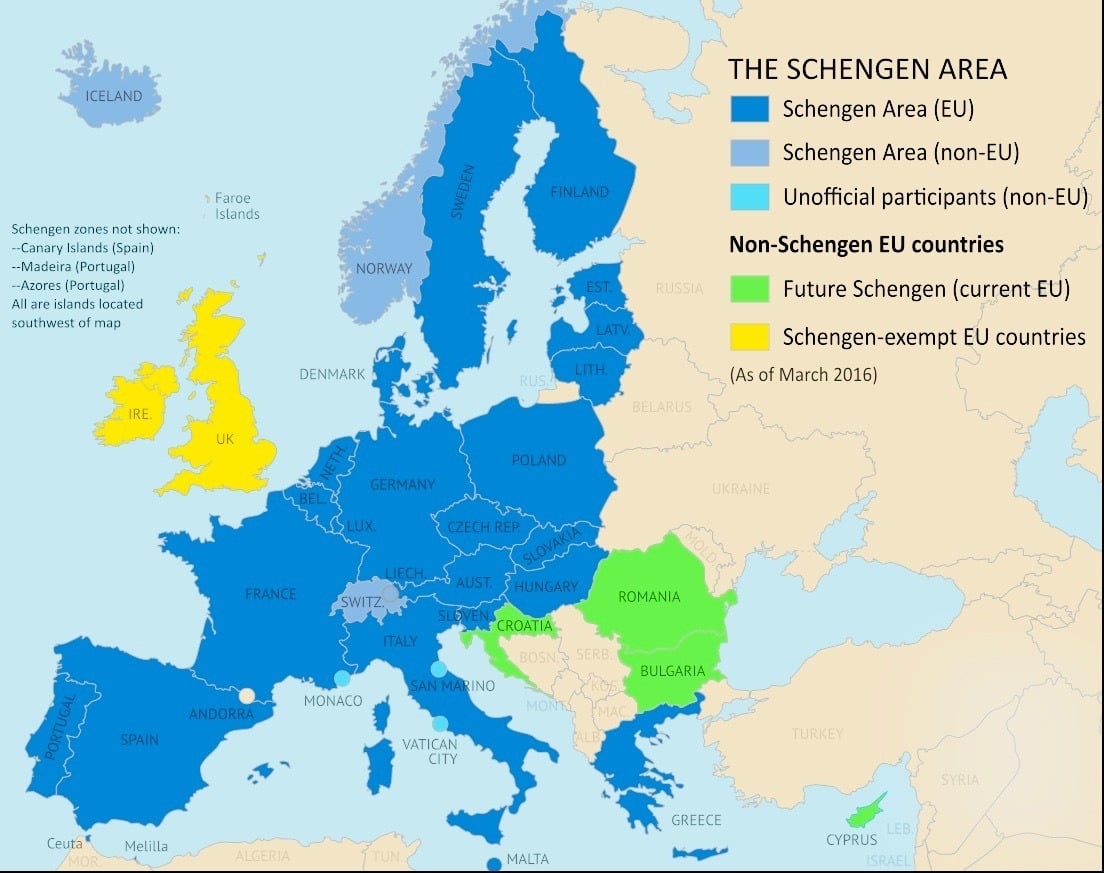
Citizens of the US, Canada, Australia, New Zealand, and Singapore can usually obtain visas for most European countries on arrival. It can be significantly harder for everybody else. Overstaying visas is not recommended.
It is very wise to work out which countries you wish to visit and check their individual entry requirements before you set off. Regarding overland travel, note that even if you are only passing through a country en route to another, entry requirements will still apply.
There are many great ways to get around Europe – and it’s super easy! Western Europe has excellent transportation networks and usually booking tickets online is hassle-free.
The cost of travelling around Europe CAN lighten your wallet though, especially if you travel a lot. To be able to travel Europe cheaply, you have to know the tricks to do it.
Here’s a quick breakdown of the best ways to travel Europe.
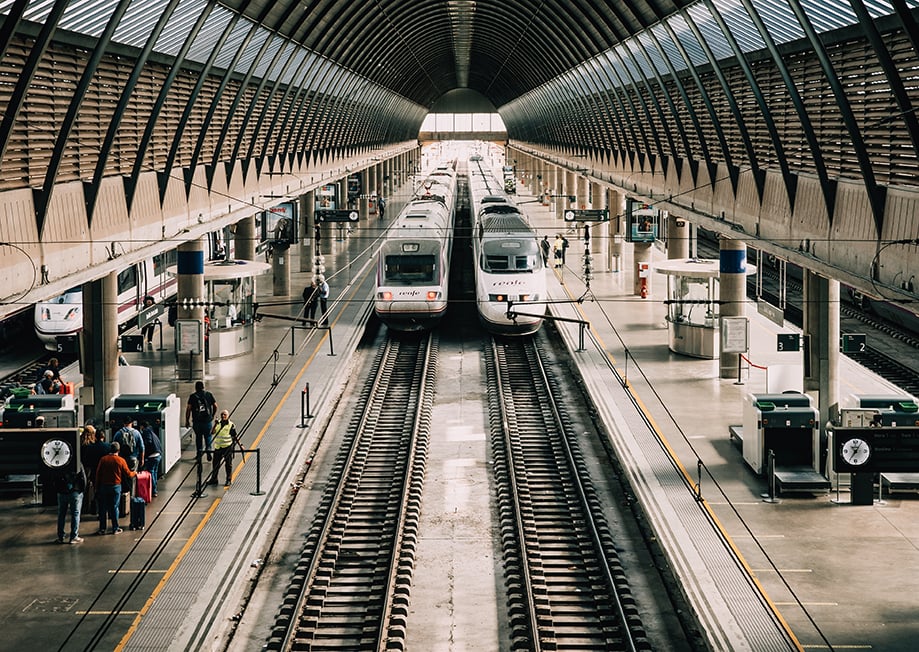
Long-distance buses are probably the cheapest option, though they tend to be the most time consuming as well. A 9-hour journey with a company like Flixbus is likely to cost you between 25-50 Euros depending on when you book.
I like Flixbus because, if plans change, you can cancel for a small fee and re-book when you’re ready. You can score long-distance buses for as little as 10 Euros if you’re really on it.
Many Western European countries might also have their own national budget bus lines.
Train travel is an awesome way to backpack Europe. Many backpackers specifically build their backpacking Europe itineraries around travelling on a train – this is called interrailing.
They’re really easy to use and there are all different kinds. Smaller domestic trains connect all corners of the countries.
High-speed trains and sleeper trains connect countries. The central train stations are usually right in the middle of the major European cities, often making it more convenient than flights.
If you plan on hitting up multiple countries in Europe, the Eurorail Pass is a great option. You can buy a rail pass for one country or for all of Europe. Buying train tickets individually adds up fast, so buying a pass is a great trick to travel Europe on a budget.
Renting a car is surprisingly affordable in Europe and will give you unrestricted freedom to go and do what you want. And finding a car rental is no trouble at all.
Booking in advance is the best way to ensure you score the lowest price and your choice of vehicle. Often, you can find the best car rental prices when you pick up the rental from the airport. You can easily rent a car from any major city in Europe.
Driving in Europe is also pretty easy with lots of well-maintained highways and clear signage ahead!
You don’t feel like driving yourself? BlaBlaCar is a great website for connecting drivers with people interested in carpooling. You do have to pay for the ride. However, it’s usually cheaper than a train, faster than a bus, and more fun than travelling alone!
Travelling by campervan is the most classic, most awesome option. You have unparalleled freedom and access to places you would not otherwise have. You also eliminate the need to pay for accommodation every night.
If you’re travelling long term, it can be a great way to travel Europe on a budget if you buy your own campervan. For shorter term travellers, renting a campervan is easy to do all across Europe. Then you get complete freedom within the contient.
Those long, long highways of Europe are just begging for someone to get on them on two wheels… Europe is an excellent destination for long-distance motorbikers and bicyclists.
For motorbiking, France and Germany are particularly popular. For bikepackers , the Netherlands is pleasantly flat to cycle around.
Europe is one of the best places in the world to hitchhike, even long distances. I recommend studying a map before sticking your thumb out there.
Try to get an idea of which roads you need to take to get to your destination. Europe is full of tiny, winding backroads that splinter off in all directions.
It goes without saying that you should not try hitchhiking in major cities. While hitchhiking in Europe is safe generally, it is important to be on your guard and use good judgement when accepting rides.
From personal experience, hitching rides in Western Europe can be tricky. Finding rides along major highways – that Western Europe is full of – can be hard as there aren’t good places for cars to stop (looking at you, Germany and Northern Greece).
In other places, like Spain, I struggled to find rides because lots of people (falsely) seemed to think that hitchhiking was illegal. Plus, Western Europeans’s got places to be and might not be receptive to picking up a stranger.
The best hitching luck I had was in Switzerland, Austria, and France. I highly recommend trying it everywhere though!
Onwards Travel from Europe
Europe is home to many major global travel hubs and international airports. This means you can get anywhere in the world – often with a direct flight – depending on where you’re going. If you are on a grand European or world tour, heading to Eastern Europe and making your way into Turkey and beyond is a straightforward affair.
In fact, you can fly from London or Paris to Istanbul for as little as 20 Euros with some forethought (although rare). Plus, you’ll find lots of train options going to Istanbul from all over Europe.
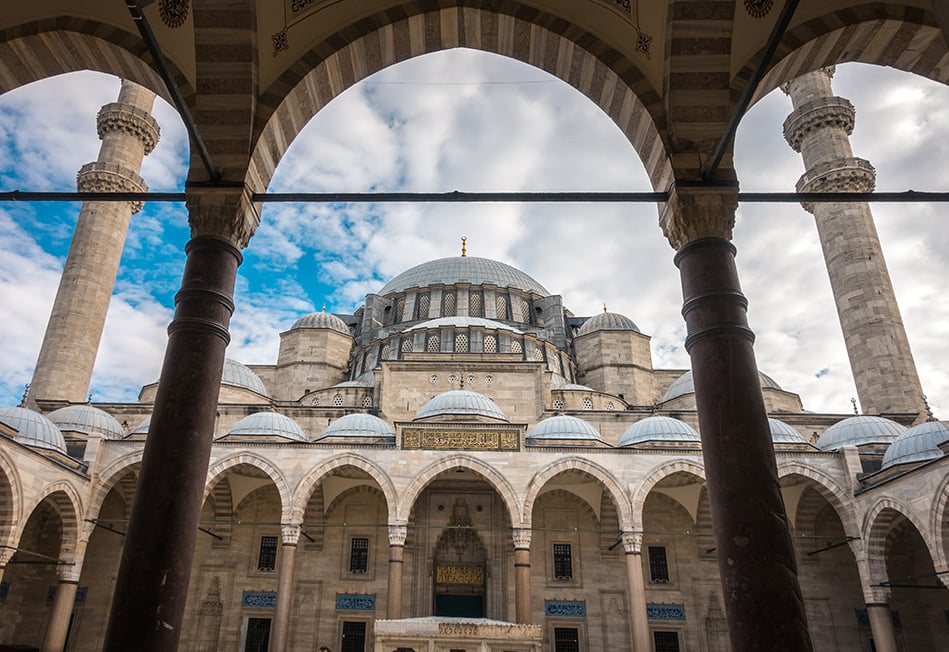
Keep in mind as well that countries in North Africa are sometimes just an hour or two flight away. Backpacking Morocco and Tunisia are great options after travelling Europe on a budget. There are also daily boats from Southern Spain to Morocco for about $40 USD – not too pricey at all!
Boats run to North Africa from Sicily too, so if you fancy marauding in Tunisia , you can easily hop over from Italy. I would strongly advocate for this, because backpacking Europe is not complete without a little Africa.
Want to spend more time in Europe? No problemo!
While the cost of living in most Western European countries is quite high and work visas can be tricky to navigate, there are lots of options available for industrious backpackers. (Though you DO need a work visa pretty much everywhere.)
The UK and Ireland are especially popular for native English speakers; there are tons of Aussies living in London.
EU nationals don’t usually need visas to work in other EU countries so things are easier for them.
And you didn’t hear this from me… but there might be a chance for backpackers to do a bit of work under the table as well. Get chatting with locals, stay open, and keep your ears perked. There are lots of backpackers earning a bit of extra cash from helping out in bars, farms, and festivals, especially in the summer travel season.
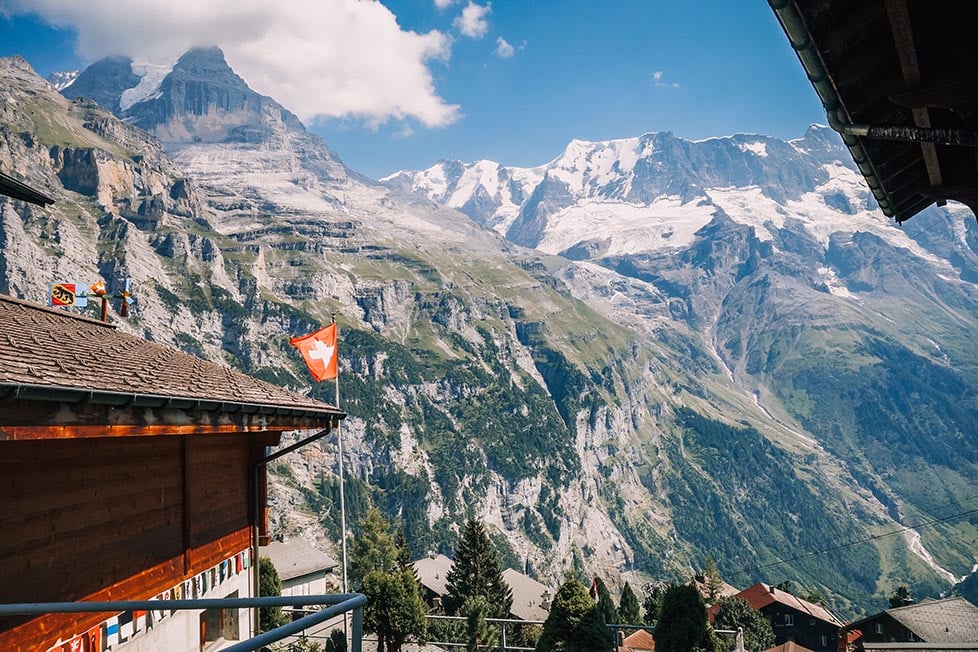
A new country, a new contract, a new piece of plastic – booooring. Instead, buy an eSIM!
An eSIM works just like an app: you buy it, you download it, and BOOM! You’re connected the minute you land. It’s that easy.
Is your phone eSIM ready? Read about how e-Sims work or click below to see one of the top eSIM providers on the market and ditch the plastic .
The Digital Nomad Scene in Europe
Despite certain weather challenges, Europe is HUGE for digital nomads. Sure, most countries in Western Europe are real expensive to live in. That doesn’t mean they wouldn’t attract digital nomads.
London, Berlin and Amsterdam all have massive digital nomad communities. However, these nomads may not stay in the city all year. They are also usually more high-earning nomads.
Those just starting to learn how to be a nomad prefer to head to eastern Europe – Bulgaria, Ukraine, Romania, and Hungary are all top destinations for broke nomads.
Portugal is hands down the best country for digital nomads in Europe. It’s one of the more affordable countries (although getting more and more expensive), extremely nomad-friendly both in terms of community and locals’s attitudes towards nomads, and super fun. The weather also isn’t half bad! In the Algarve, you can get +30 Celsius temperatures even in the winter.
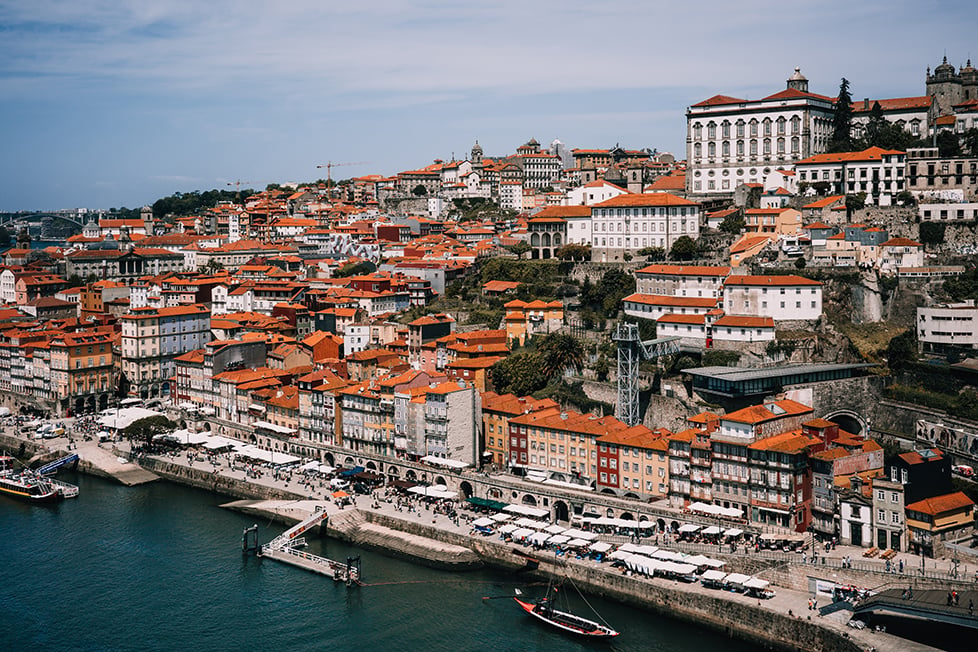
If Lisbon and Porto are not your speed, definitely consider staying in Madeira . The Portuguese island is rapidly becoming one of the top destinations in the world for digital nomads.
Other cool places for nomads are Greece (especially Athens) and the Canary Islands in Spain. Both are affordable on Western European standards.
Internet is pretty much a non-issue in Europe . Most of the major cities have high-speed fiberoptic cables lain and the more remote villages have decent coverage. Whilst hiking the Dolomites, I even got 4G using my local SIM card. I could’ve worked in a local rifugio for a few days!
Is this the best digital nomad-friendly hostel in the world?

Come visit Tribal Bali – Bali’s first specially designed, custom-built co-living hostel…
Bali’s most special backpacker hostel is finally open…. Tribal Bali is a custom-designed, purpose-built co-living hostel – a place to work, rest, play and stay. A place to find your tribe and hands down the best place in Bali to hustle hard and make new friends…
Volunteer in Europe
Volunteering abroad is an amazing way to experience a culture whilst helping your host community. There are plenty of different volunteer projects in Europe including teaching, construction, agriculture, and pretty much anything.
The list of volunteering opportunities in Europe is pretty much endless. Will you run pub crawls at a hostel in Spain? Help herd sheep in the French Alps? Give hand to a music festival in the UK? The sky’s the limit.
Short-term volunteers usually won’t need a permit, but anyone from outside the EU will need a Schengen Visa to volunteer in Europe for over 90 days.
There are many ways to find volunteer opportunities but the best way is to start online. Check out some of the best work exchange websites to get started.
The team at The Broke Backpacker have used and can personally recommend Worldpackers . I feel like Workaway is the biggest platform but that doesn’t make it the best.
A heap of the European cultural identity is built on its history. Italy and Greece are home to some of the most brilliant ancient cultures; France is considered the origin of enlightenment; Portugal has a strong (although complicated) history in seafaring and exploration.
It’s no coincidence that Europe has more UNESCO World Heritage sites than any other continent. When it comes to art, heritage, sports, and music, Europe is considered by many to be the heart and origin of Western culture.
The first and absolutely most important thing that you need to know about culture in Europe is that people are not “just European”. In fact, using “European” as a blanket term for everyone who lives on the continent is pretty ridiculous since it doesn’t really begin to describe anything.
According to Britannica , there are over 160 distinct cultures in Europe, though if we’re being honest this number could be higher. Within each of these cultures are sub-sections and divisions with their own national, religious, and historical identities.
There are over 160 distinct cultures in Europe , though if we’re being honest this number could be higher. Within each of these cultures are sub-sections and divisions with their own national, religious, and historical identities.
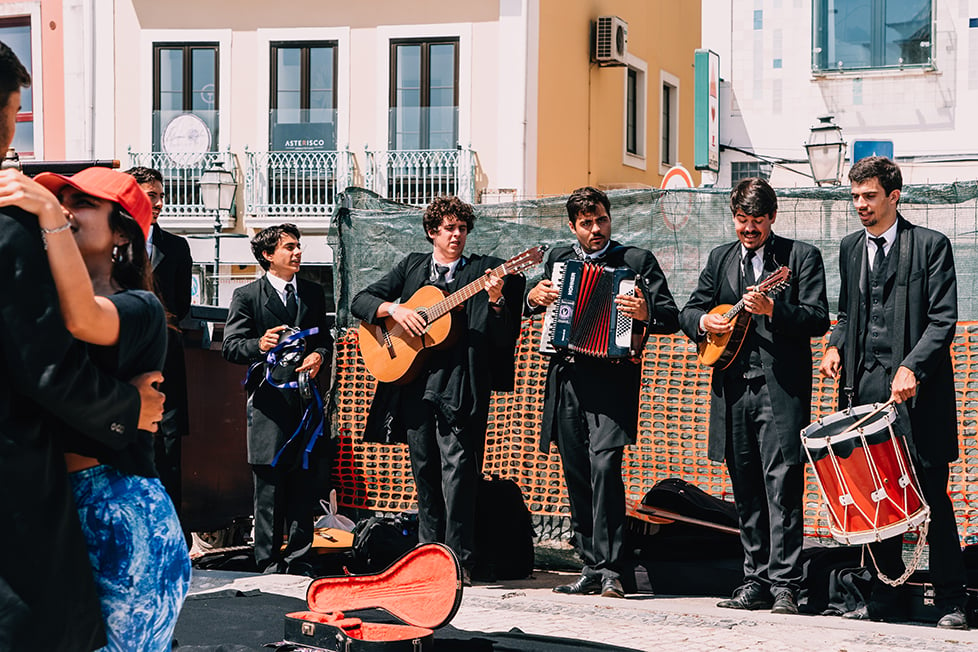
What this means is that many people are very proud of their cultural identities and can be mildly offended if you try to paint everyone in the same colour. For example, the Scots are very proudly Scottish, and you definitely shouldn’t try to call them English.
At best, culture in Europe shows in celebration. At worst, rising tensions related to immigration have given wind to some ultra-right nationalist ideals. (Yikes.)
Europe is also, overall, very modern. Expecting “traditional” stereotypes is a bit silly. People mostly don’t dress in national costumes; at Oktoberfest, the people wearing the fake lederhosen and dirndl are tourists. Not everyone knows flamenco in Spain – in fact, it’s a dance that originated from the Romani community especially in Southern Spain.
Football fans are crazy everywhere though, that much is true.
What to Eat in Europe
The food in Europe is so varied that my mind reels just trying to think about it. Where do I even begin?
First off, people are extremely proud of their culture’s cooking. Italians sing praise about the quality of ingredients and the simplicity of their style. The French boast about their prowess in the kitchen and complex techniques. The Spanish of course love to talk about their tapas culture.
Secondly, though European culinary traditions have very long histories, most changed completely in the last few centuries. The introduction of new ingredients from the new world was nothing short of revolutionary. The Italians received the all-important tomatoes, the English imported curry, and the Germans got the Turkish kebab.

Most European culinary traditions have very multicultural pasts. North African traders and immigrants have had a profound effect on the Mediterranean diets and cultures as distant as China have purportedly influenced the creation of pasta.
All I can say is that a backpacking trip through Europe will be like a tour of heaven for your stomach. There are so many different kinds of food to try and a staggering amount of diversity. My best advice: try the usual suspects but be sure to experiment a bit.
Must-Try Dishes in Europe
Here are some of the best foods you have to try while backpacking in Europe:
- Pasta (Italy) – A VERY general term: pasta can mean a lot of things. Be sure to have more than just spaghetti.
- Coq Au Vin (France) – A simple, yet delicious stew made from chicken, wine, mushrooms, and garlic.
- Pies (UK) – A staple of just about every pub and inn in the UK. Simple and satisfying.
- Haggis (Scotland) – A slightly spicy mixture of internal organs cooked in a lamb’s stomach is actually really delicious.
- Pastel de Nata (Portugal) – A small, custard-filled egg tart that originates in Lisbon.
- Paella (Spain) – Rice prepared in a special pan and often prepared with seafood.
- Moules Frites (Belgium) – Mussels prepared in different kinds of sauces and served with fried potatoes.
- Souvlaki (Greece) – What most people imagine to be “gyros” when gyros is just a general term for shaved meat.
- Schnitzel (Germany) – Meat flattened, breaded, and fried.
- Sachertorte (Austria) – A delicacy of Vienna and perhaps one of the best cakes in Europe.
- Stroopwafel (Netherlands) – The best sweet treat ever.
Europe’s super-varied landscape and wealth of cultures mean that there are heaps of cool new experiences to have. Go beyond your regular pub crawls and walking tours and check out some unique experiences you can only have in Europe.

Things go wrong on the road ALL THE TIME. Be prepared for what life throws at you.
Buy an AMK Travel Medical Kit before you head out on your next adventure – don’t be daft!
Hiking in Europe
Europe is a land blessed of incredible hiking opportunities with trails both for expert trekkers and beginner hikers . Each country has a wide range of day hikes and multi-day treks on offer. Trekking is a great way to get to know any country by experiencing its wild side.
In addition to well-maintained trail systems, many regions in Europe have a network of mountain huts. For a fee, you can enjoy these super comfortable and unique fixtures of the European mountains.
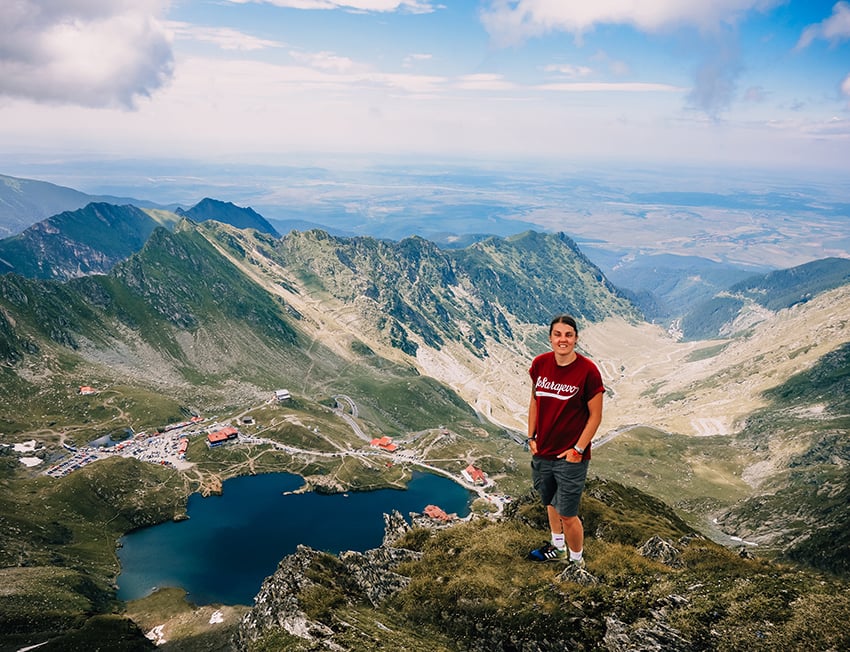
Here are a few of the best hikes in Europe to get you psyched for an outdoor adventure of your own.
- Mt. Etna Trek, Sicily, Italy : Climbing an active Volcano in Sicily is as much fun as it sounds.
- Walkers Haute Route, France-Switzerland (Chamonix to Zermatt): A famous high route from Chamonix to Zermatt. The trek features absolutely classic alpine scenery, snowy peaks, glaciers, high meadows and deep valleys, and close-up views of such icons as Mont Blanc and the Matterhorn.
- Tour Du Mont Blanc, France: The unforgettable circuit around the Mont Blanc massif. Outstanding views up to Mont Blanc, Western Europe’s highest at 4,810m, and out across the dramatic peaks, glaciers, and deep green valleys of the high Alps. If you have the time, this might just be the most scenic (and most trafficked) hike in Western Europe.
- El Camino de Santiago, France – Spain: Perhaps the most popular long-distance trek in the world , El Camino is an important trek in the hearts of religious pilgrims and outdoor enthusiasts alike. The Camino is actually multiple trails leading to Santiago de Compostela and eventually Finisterre, “the end of the world”.
- Mount Olympus, Greece: The fabled mountain where the ancient Greek Gods were supposed to have lived is very climbable in just one day.
Surfing in Europe
Many backpackers are unaware that there is some killer surf to be found all across Europe. Portugal is certainly famous for having massive waves and the associated surf competitions.
That said, if you are keen on surfing at some point as you’re backpacking through Europe, you do have some options. Below I have provided a shortlist of surfing hotspots in Europe.
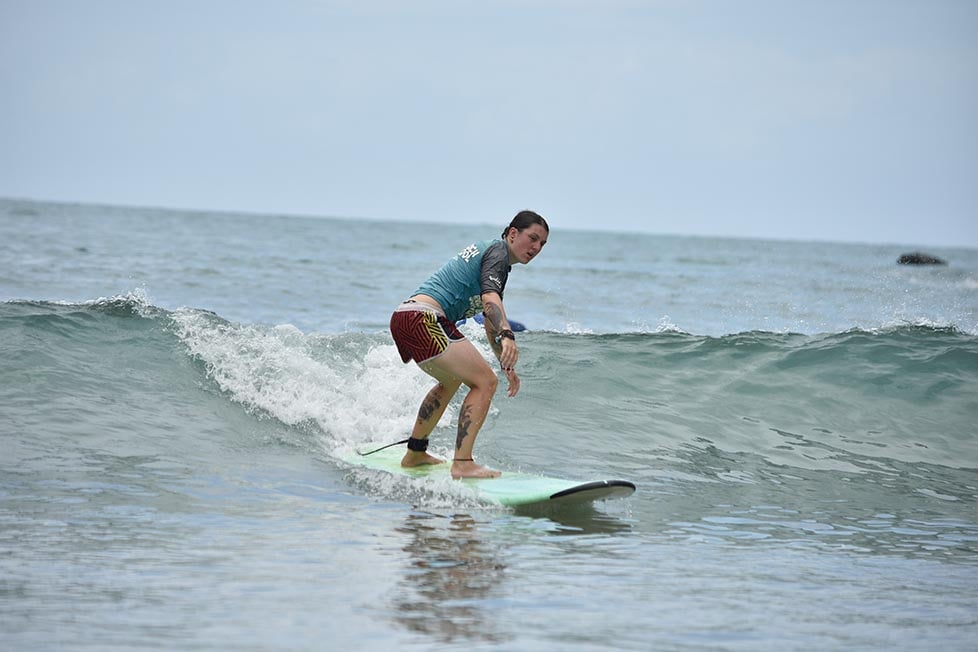
- Biarritz, France : One of the oldest known surf meccas of Europe. The surfing here is great for beginners as well as seasoned rippers.
- Newgale, Wales : Surfing on this beautiful stretch of coast facing out towards the Irish Sea; the waves here are powerful and the views are epic.
- Belhaven Bay, Scotland : This surf spot is only an hours drive from Edinburgh! Make sure you have a good wetsuit. Not the warmest water in the world, but the waves are good at times.
- San Sebastian, Spain : When not eating and drinking, it is easy to hit the beach and catch a few waves before resuming the former.
- Lagos, Portugal : Probably the unofficial capital of surfing in Portugal. There are many surf schools across Lagos that will help you tune up your surfing game in no time.
Museums in Europe
Europe is the world’s best continent to tour museums, both art and history adjacent. (That might have something to do with plundering other countries’ national treasures and refusing to return them… But uh, let’s not focus on that.)
Europe’s best museum city is London. Most of London’s museums are free to visit, and they have some of the best collections of art and historical relics from everywhere in the world. (Again, for certain reasons…) My favourite museums in London are The National Gallery, The Natural History Museum, The British Museum, and Victoria and Albert Museum.

Paris is strong in the museum game too. Definitely visit the Louvre and its most iconic resident Mona Lisa. Don’t grumble about it being small, it’s still awesome. For more morbid explorers, the Paris Catacombs offer a cool glimpse into the city’s history.
More honourable mentions to go Reina Sofia in Madrid, Rijksmuseum and Anne Frank House in Amsterdam, and Dachau concentration camp in Germany (it counts).
Bring your ID – some places, like the Louvre, have free admission to students and people under 25.
Got questions about backpacking Western Europe? I’ve got the answers!
Where should I start backpacking through Europe?
Backpacking through Europe is a momentous task, but starting in Britain or Portugal will stop you having to make tedious back and forth journeys. You don’t want to be doubling back on yourself when distances are so large! That said, you can really start anywhere, just make sure you’ve got enough cash to fly home 😉
How long is the average backpacking Europe trip?
On average, backpackers make a 2-3 week route travelling around Europe. If you want to visit Europe properly, you can easily spend 6 months or more pedalling around. Try going for 2-3 months if you want to get a much fuller picture of what it is like.
What is the Cost of Backpacking Through Europe?
As with anywhere, the cost of backpacking Europe will be down to you, where you go, and how you spend. Western Europe is more expensive and will most likely require $50-$90/day, whilst heading east can put your budget lower, at around $30-$60/day. On top of transport and flights, Europe can seriously add up…
Where are the hottest people in Europe?
I’d say Finland. Source: I’m Finnish. Apparently Nordic people are, statistically, very sexually liberated on a global scale. But I would personally like to guide your attention towards Southern Europe… Greek Tinder is something else, hey.
Who feeds the Loch Ness monster in Scotland?
The park rangers feed the sea snake with tourists that behave badly and/or ask stupid questions. There’s also a bloke who has been on the lookout for years and never seen it. Take from that what you will.
Congratulations! You made it to the end of my Europe travel guide!
I hope the information I have provided will help you navigate the exciting European journey you have decided to embark on. Backpacking in Europe will be one of the most fun experiences of your life, I have no doubts about that.
Europe can be one hell of a place to let loose and have a good time. Between the party-hearty music festivals, discotheques, rave scenes, pub crawls, and other venues of hedonistic tendency, there is ample opportunity for backpackers to get down.
Have fun on your Europe backpacking journey – but like my mum would say, not too much fun! Partying every day is one of the most common backpacker traps that travellers fall into.
When visiting historic sights or religious monuments, be respectful. Certainly do not climb on old ruins or touch priceless paintings. Europe is full of historical treasures. Don’t be that dickhead that contributes to their demise and destruction.
When you can, make an effort to learn at least a few words of the local language of the country you are backpacking in. It’s a challenge as every country has a different language, but a little effort goes a long way. The world need not revolve around us native English speakers!
Do your best to support local artisans, organic farmers, and craftspeople while travelling around Europe. Keep your dollars local, especially in small villages or towns.
Never take it for granted that you are healthy and financially able to go travelling. Show the world around you some gratitude and help to make a positive impact on it.
Most of all, have the time of your life and spread the love!
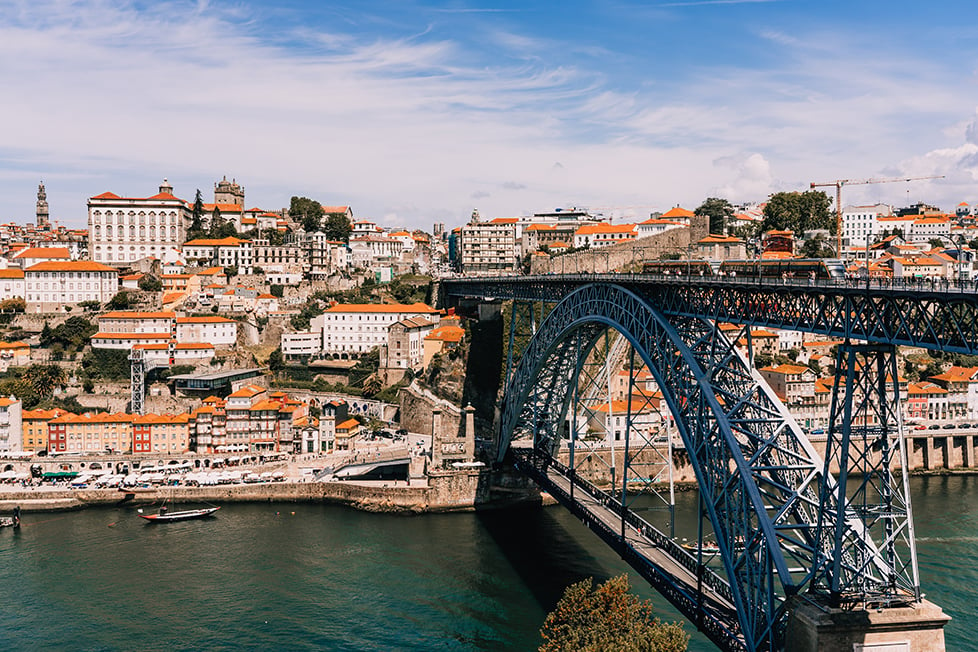
Updated May 2023 by Abe Lea

Nic Hilditch-Short
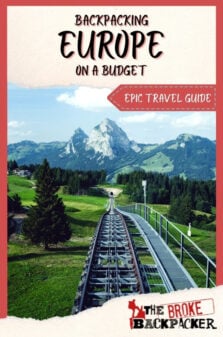
Share or save this post

16 Comments
I am dreaming of backpacking Spain. The only thing I found out of the league in this country is the timing of breakfast, lunch, and dinner. Anyway, given the fact that Spain never sleeps, it can be understood.
Great post! I can’t wait to start planning my European backpacking trip.
My big dream is to visit Oia, Santorini. This place is just magical.
I would suggest you to put Slovenia in this list. In this small country you can find beautiful places for low price and save society
We can’t wait to get there! Once we do, we will add it to the list! cheers.
the most honest and helpful backpacking guide yet. thankyou!!!!!
I really enjoyed reading this post. Especially as a European.
Some insider tips of my own. UK: * Trains are expensive, budget airlines and coaches are great though. Maybe even cycle, we have some amazing National Cycle routes that really open up the countryside (borrow a Boris bike in London-great cheap way to discover the city) *The coastline in the UK is so varied, some of my favourite beaches in the world are on the West cost of Scotland (check out the isle of Skye and the fairy pools). Or try surfing in Cornwall. *Accommodation, Hotels are pricey but try the Youth Hostel Association (YHA) it’s a charity that run hostels up and down the country, usually near iconic landmarks and hiking trails. You can wild camp in Scotland but not the rest of the UK so you’ll have to find a proper campsite in England and Wales.
As for what season to go to Europe: My general rule of thumb is Mountains in the Summer, beaches in the Autumn. Ski resorts are much cheaper in the summer and offer amazing hiking opportunities (think the Dolomites of Ital or Soca Valley in Slovenia). It is simply too hot to be in Greece in August 100 degrees quite frequently. Places like Greece and Croatia are amazing but a lot less hot, and less crowded at the end of September/early October. Netherlands is great in the spring- think colourful fields of tulips. Also consider that the sun doesn’t really set in the summer in places like Iceland and northern Scandinavia.
For almost all parts of Europe wear layers and pack a light weight, windproof waterproof jacket. The temperature and weather conditions can vary so much in just a couple of hours. Leave high heels at home. Trainers are perfectly acceptable almost everywhere…A lot of streets across a lot of Europe are cobbled you don’t want a twisted ankle.
Some awesome tips there, thanks Kayleigh!
Wonderful post.Very helpful and awesome info.really informative post!Nice post.Amazing article.
Thanks for sharing ideas, really informative post! I’m thinking about to do The Kings Trail in Sweden. Is it possible to do only in summer or spring should be fine as well. I’m traveler with tents, so would like to sleep outside as much as possible. Cheers, Rob
You can do the King’s Trail hike in the spring, but you must be aware that there will be few other hikers (maybe that’s a good thing for you), it will be really cold still, and there will be lots of snow to walk through. You would need to be outfitted with the right gear for it to be possible/enjoyable for you. The later in the spring your start (Late April/Early May) the warmer it will be and the less snow you will find on the trail. The best weather for sleeping outside is obviously in the summer. You won’t need to carry as much cold weather gear then either. Hope that helps! Good luck on your hike 🙂
Very helpful and awesome info. Very entertainingly written as well!
Nice post. I’d have to recommend checking out Poland though if you haven’t already (it isn’t mentioned). It is great for backpacking through.
Amazing article. Each and every information shared here is very useful. I went to Europe on a short trip. Visited Switzerland and fell in love with its beauty. A must visit.
Wonderful post. Europe is super backpack friendly – I did Eastern Europe and it is full of hidden gems.
Leave a Reply Cancel reply
Your email address will not be published. Required fields are marked *
Save my name, email, and website in this browser for the next time I comment.
Notify me of followup comments via e-mail.
The Backpacker Network
Backpacking Europe Routes: 4 Epic Itineraries!
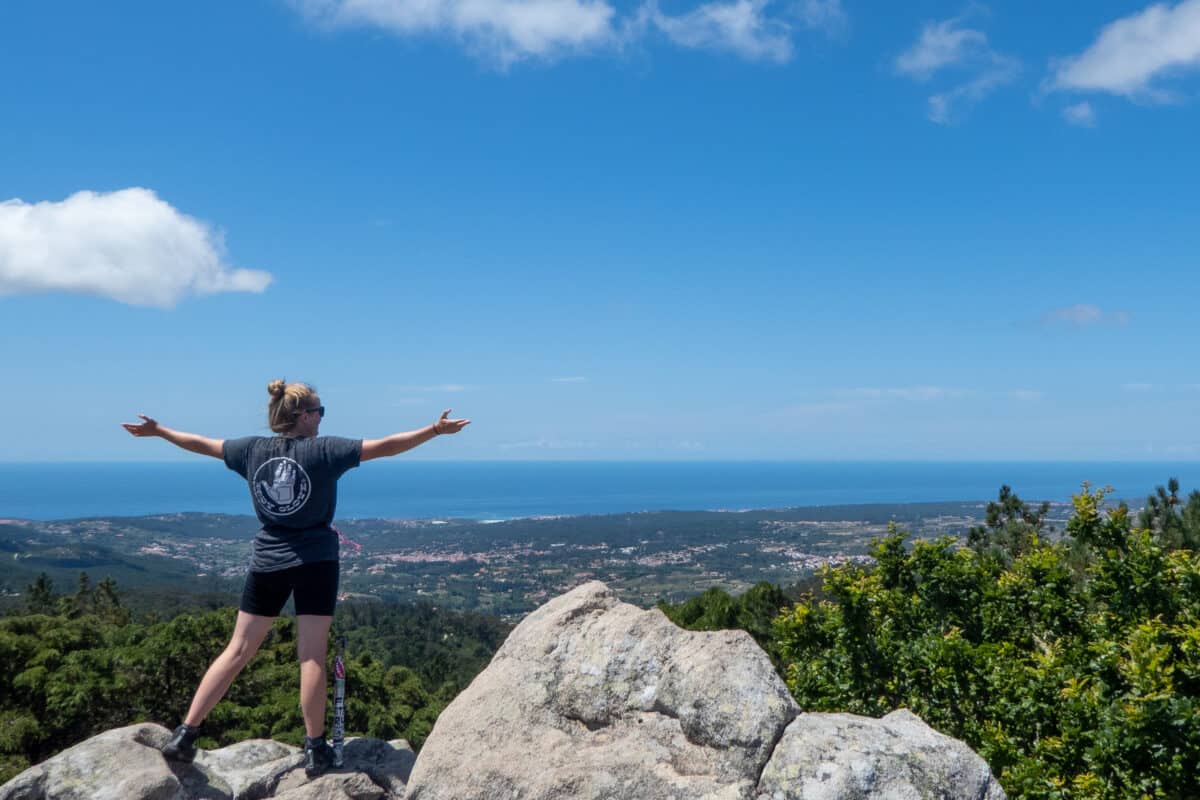
If you’re planning the Euro backpacking trip of your dreams but don’t know where to start, fear not! We’ve put together four Europe backpacking routes that appeal to different interests and types of travelers – the ‘Grand Tour’ of most commonly-visited places; a history buff’s guide to Southern Europe, a budget guide to Eastern Europe and for those of you who just can’t stop traveling, an epic around the continent route at the end!
These handpicked Europe itineraries will suit all kinds of travelers, from those on a blow-out gap year to backpackers who want to get the most adventure for their buck. Sit back and grab a cuppa as we’re about to take you on a whirlwind tour of Europe.
Related: (opens in new tab)
- How Much Does it Cost to Backpack Europe?
- A Guide to Visas for Europe
- Amazing Hostels in Europe for Backpackers
Top Europe Backpacking Trips: 4 Travel Itineraries
While you may associate backpacking through Europe with train travel and dormitory-style hostels, it’s been a rite of passage since the 18th century, when young people (mostly men) would spend a few years traveling around ‘The Continent’ prior to fully joining society. This was seen as a capstone educational experience – both in terms of seeing classical antiquity up close and interacting with new and different situations, people, and challenges.
This is still the case today too. While Europe’s countless museums , cuisines, and cultural contributions make it a premier travel destination, long-haul travel is also a fantastic way to learn about yourself.
There are countless combinations of countries, sights, and transit options for a backpacking trip in Europe, and it can be easy to get overwhelmed. The itineraries we’ve mapped out below are very customizable for this very reason. You can add more destinations, or stop a route partway through depending on how much time you have.
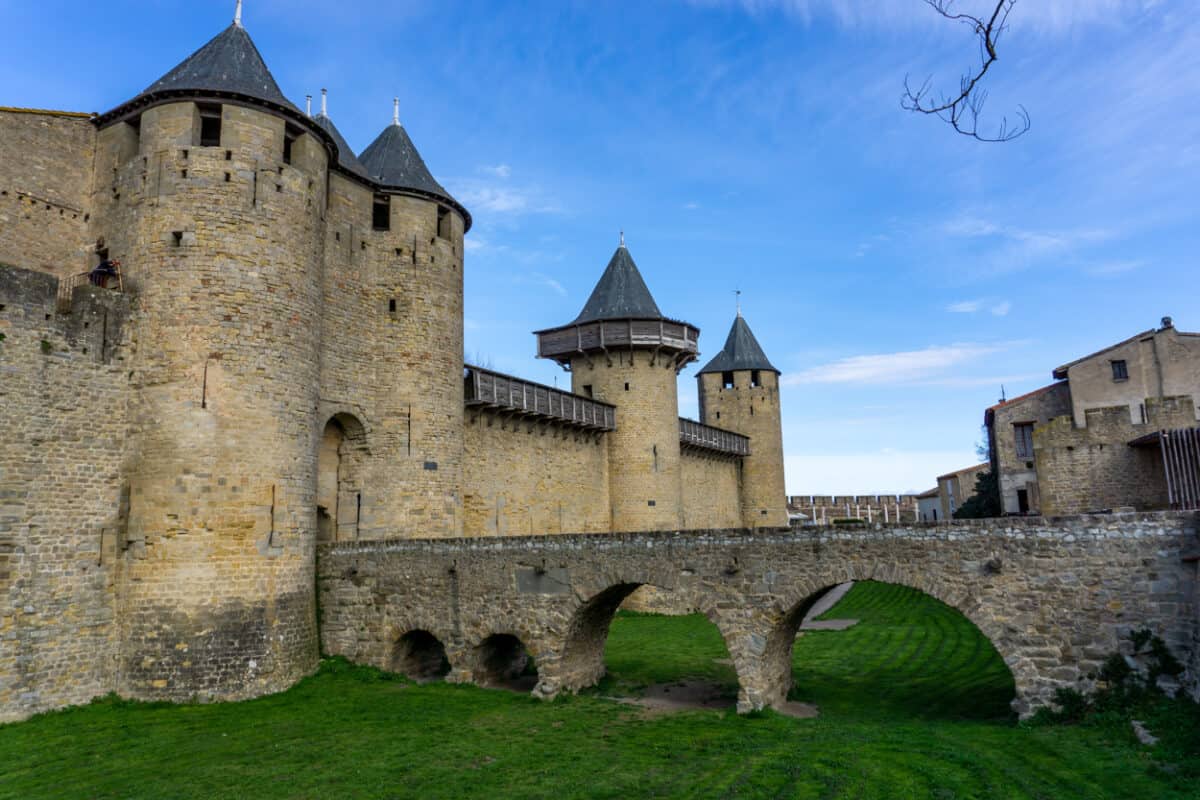
We recommend not squeezing in too much as things will start to blur together and you may find yourself getting fatigued. If you’re limited on time (say, you only have a month or so), pick your favorite neighboring countries to explore in-depth. That way, you’ll still get a bit of the backpacking experience, but you won’t run yourself ragged.
As you plan your Europe backpacking route, consider the best time to visit each place . Southern Europe in particular gets very hot and very busy in the summertime but is very comfortable in the winter. The Low Countries are very gray and rainy in the fall and winter but have mild and lovely summers.
Relatedly, countries like Austria and Switzerland, as well as the Scandinavian region, are typically not considered budget-friendly destinations. Depending on your funds, you may want to plan to spend a bit less time in these countries or forgo them entirely if you’re sticking to shoestring style travel. Off-season travel can also be a way to save if you can be flexible with dates!
If you’re travelling solo and are nervous about the safety aspect of your trip, we urge you not to worry. There are a number of really safe European countries with excellent tourist infrastructure in place. This means that you can backpack worry-free!
1. Western Europe Backpacking Route: The ‘Grand Tour’
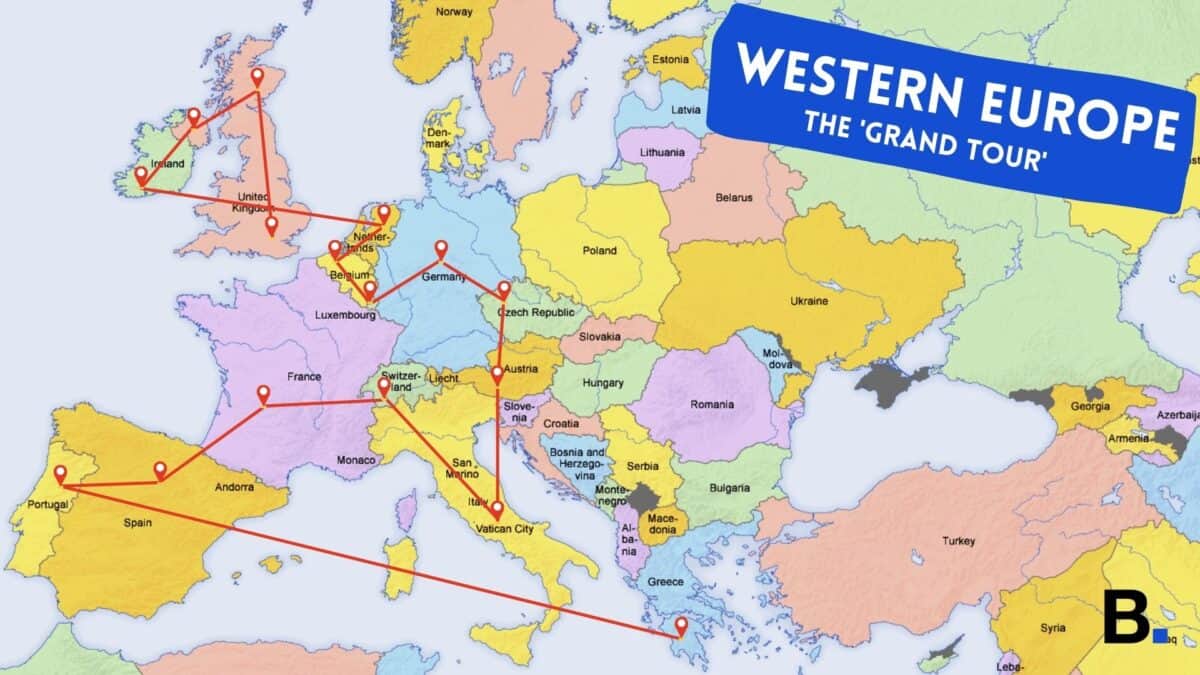
This tour starts in London because Heathrow is a great international hub for incoming flights, but we encourage you to shop around a bit and see if another city (like Paris, Frankfurt, or Amsterdam) is a cheaper place for you to start.
London is one of the world’s premier cities. It’s absolutely massive and would take months to explore in full. As such, it’s good to prioritize based on your budget and interests. First-time visitors usually hit the following sites:
- Westminster Abbey
- Buckingham Palace (the residence of the Queen) and its changing of the guard ceremony for royal enthusiasts
- The Houses of Parliament
- Number 10 Downing Street
- The Churchill War Rooms for fans of politics
- Big Ben clock tower
- The (free!) British Museum
- The Victoria and Albert Museum
- The Tower of London (home to the Crown Jewels)
- The National Gallery
- Covent Garden and Neal’s Yard
- Piccadilly Circus
- Notting Hill for its Portobello Road Market
If you’d like to stay in England a bit longer, consider some cozy cottage time in the Cotswolds , a football match and a few pints in Liverpool or Manchester , or some seaside charm in Brighton . You can also visit famed educational institutions at Oxford and Cambridge , as well as Roman-era baths in Bath .
Glasgow has great art galleries, like the notable Kelvingrove Art Gallery and Museum. It’s the largest city in Scotland, particularly known for an architecture style that mixes Art Nouveau and Victorian styles.
Edinburgh , Scotland’s capital, is a great student city, with all sorts of things to do. Trek up Arthur’s Seat or Calton Hill, visit the Edinburgh Castle and don’t forget to check out both the Old Town and New Town.
See more: Edinburgh itineraries.
Other great places to backpack in Scotland include Inverness , Dundee , and of course, Loch Ness where you can go monster hunting! The Cairngorms and Glencoe have beautiful mountains for hiking, and fans of critters will love the puffins, ponies, and otters on the Shetland Islands .
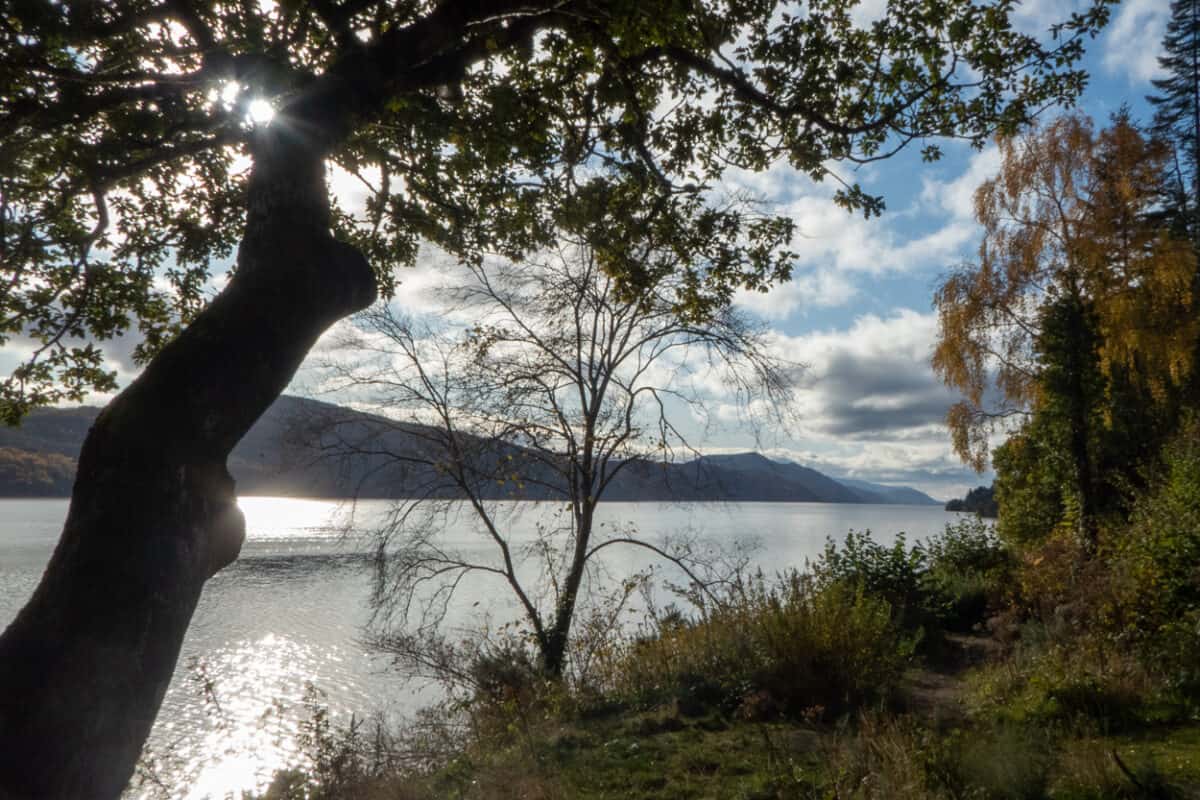
Ireland and Northern Ireland
Dublin , Ireland’s capital, has castles, museums, cathedrals, universities, and of course, great pub culture in the Temple Bar area. St. Stephen’s Green and Phoenix Park are beautiful emerald green spaces, and the Guinness headquarters is here as well.
Galway is an easy day trip from Dublin by bus and is a great example of relaxed, charming Irish life. The home to the Claddagh ring, its Latin Quarter still has medieval city walls, and the city is quaint and adorable.
Many visitors flock to the astounding Cliffs of Moher in County Clare, which offer 14 kilometers of sea cliffs along the Wild Atlantic Way.
If you’d like to spend more time in Ireland, the Aran Islands , or smaller cities or counties like Cork , Killarney , and Sligo are good options. Ireland also has fabulous nature to explore and ample national parks for hiking, swimming, and outdoor fun.
Northern Ireland is also a destination to consider, famous for the gorgeous Giant’s Causeway. A quick stop at the beautiful capital of Belfast is also highly recommended.
The Netherlands
Amsterdam is perhaps best known for its tolerant attitude towards partying, prostitution, and recreational drug use, but it’s so much more than that.
The canal area (Grachtengordel) is like stepping into the Golden Age, the museum district (home to the Rijksmuseum, van Gogh Museum, and more) is world-class, and the funkier Noord and West districts allow you more of a taste of local life. Haarlem is just 15 minutes away by train and offers much of what Amsterdam does so well (in terms of cute houses, cute canals, and cute cafes) with a lot less chaos.

Rotterdam was bombed almost to nonexistence in World War II, so it’s one of the only cities in the Netherlands that doesn’t have the Golden Age architecture. Instead, it is modern and utterly cool, a stark departure from the rest of the country.
If you’re visiting in the spring, don’t miss the world-famous tulips in bloom at the Keukenhof or other family-owned farms in the Lisse area.
Other lovely day trips in the Netherlands include Giethoorn , called the ‘Venice of the Netherlands’ for its extensive canal system; the cheese market in Alkmaar ; the collection of windmills in Zaanse Schans ; Utrecht , a quaint college town with ‘double-decker’ canals; the hub of human rights in The Hague ; pottery and history in Delft ; or the North Frisian Islands on the Wadden Sea for super-cool seascapes and sand dunes, namely Texel .
Don’t miss these Amsterdam itineraries written by our resident writer!
The capital of Belgium , Brussels has a chic and cosmopolitan vibe. You can’t miss the Grand Place with its stunning guildhalls, as well as the Town Hall. Belgians are also well-known for fries and waffles, treats to indulge in on any visit!
History enthusiasts will enjoy visiting the historic diamond district in Antwerp , as well as the Ardennes , the site of the Battle of the Bulge in World War II. For your dose of medieval charm, check out Ghent or Bruges , which aren’t too far from Brussels.
Luxembourg is a great day trip if you’re passing through en route to France or Germany. It has medieval fortifications, a cute old town called the Grund, and a fascinating interconnected tunnel network called the Bock Casemates. You can see the city from above from the Chemin de la Corniche viewpoint.
If you’d like to stay longer, other cute cities include Clervaux , the medieval castle in Vianden , and the historic abbey at Echternach .

Berlin has fantastic clubs and nightlife, a wide range of museums on Museum Island, and a variety of historical monuments, including the Brandenburg Gate and the Memorial to the Murdered Jews of Europe.
It has a very different vibe to other German and European cities, much grittier and more modern, and is also quite budget-friendly. Close by on the metro, visit Potsdam for your dose of royal life, with its beautiful Sanssouci Palace and park.
Munich is a popular destination for tourists, and for good reason. Bavarian culture is perhaps what most foreigners associate with Germany , and you can have your fill of beers, pretzels, and German pub culture here. While away an afternoon at the English Garden, and don’t miss the Nymphenburg Palace and Gardens.
Frankfurt is a banking capital and financial center, as well as being the home of the European Central Bank. It also has a lot to offer tourists in terms of museums and culture. Note that this may be a good hub to fly into, as it is home to one of Europe’s largest airports.
As you can see on a map, Germany is quite large! If you like German culture or want to brush up on your German language skills, this is a great place to spend some extra time if you have it.
Other popular cities in Germany include Hamburg , Düsseldorf, Stuttgart, Nuremberg, Heidelberg, and Hanover. Baden Baden and Freiburg in the Black Forest are beautiful as well, and there are myriad quaint small towns in the countryside to enjoy.
Czech Republic
Prague is nicknamed ‘the City of a Hundred Spires,’ due to its baroque Old Town and surrounding Gothic churches. While a relatively small city, it’s one of the most popular tourist destinations due to its quaint and compact center. Don’t miss the Astronomical Clock show and the iconic Charles Bridge, which dates back to the 1400s.
Český Krumlov is best known for its castle and mix of baroque, Renaissance, and Gothic styles. For more modernist architecture, check out Brno . If you’d like to visit the home of one of the world’s most popular beers, check out Pilsen .

Vienna is another historical heavyweight, with loads of cultural contributions and museums. It is very calm and quiet for a large city, and you’ll enjoy strolling through its parks and gardens, including the Hapsburg summer residence at Schönbrunn.
Salzburg packs quite a punch for a small town. While perhaps most famous as the setting for the iconic film The Sound of Music , it is also the birthplace of Mozart and has a fantastic medieval fortification called the Hohensalzburg Fortress. Don’t miss the great vegan food available here !
Fans of winter sports will enjoy skiing at Soelden , Saalbach , and Lech , in addition to the winter dreamland at Innsbruck . Many visitors also flock to Hallstatt for the classic view of the church reflected on the water.
Milan is one of the world’s fashion capitals and home to the Duomo of Milan, one of the world’s most iconic churches. Nearby Lake Como is a haunt of the rich and famous during the summer months, but is lovely off-season as well (and cheaper!)
Rome is a must-stop on any European backpacking route, for fantastic cuisine, awe-inspiring history, and beautiful fountains. Don’t miss the Colosseum, the Roman Forum, and the Pantheon for history, and the Trevi Fountain, Piazza Navona, and Spanish Steps for iconic photo opportunities. St. Peter’s Square and Basilica are iconic Catholic sites, and the Vatican Museums hold many treasures.
Venice is a one-of-a-kind place, built exclusively on canals. The Doge’s Palace, St. Mark’s Basilica (and its resident pigeons), and yearly Carnival celebrations attract a lot of visitors, and you can’t miss the Grand Canal and Rialto Bridge. Keep in mind it gets very muggy (sometimes stinky) and crowded in the summertime.
Florence, San Gimignano, Lucca, Siena, and broader Tuscany are in a class all their own, with rolling countryside, Renaissance icons like Michelangelo’s David and the Duomo cathedral, and wonderful cuisine and wine. A quick pit stop in Pisa to see its iconic Leaning Tower is never a bad idea while you’re in the area.
In the south, check out Naples, Sorrento , and the Amalfi Coast for a bit of a seaside escape. Neapolitan pizza is arguably the world’s most famous and originated here. Nearby Pompeii is quite a sight to behold, totally buried under the eruption of Mt. Vesuvius in 79 AD. Alternatively, consider Cinque Terre for a similar vibe to the Amalfi Coast.
There are countless things to do in Italy , and it may be best to prioritize based on what you like best – history, the outdoors, the coast, etc. as well as your budget. While cities like Rome, Florence, and Venice are considered must-sees, customize the rest of your time in Italy with a mix of other things.

Landscapes, cultural contributions, weather, and dialects vary hugely depending on where you are, and you’ll want to get a good mix in order to make the most of your trip. In general, southern Italy is much cheaper than northern Italy.
Switzerland
Switzerland is a very pricey location, and as such, may be a country to skip unless you have your heart set on certain destinations. Geneva and Zurich are its most popular destinations, for beautiful lake views and glamorous city life. Its smaller cities, like Basel , Lucerne , and Lausanne are lovely as well, with Interlaken a hub for winter sports fans.
Paris is another of the must-sees on any Europe backpacking itinerary. Similarly to London or Rome, you could spend months in Paris easily, so it’s important to prioritize based on your budget and preferences. Don’t forget, there are plenty of free things to do in Paris too!
Alongside its most popular attractions like the Eiffel Tower, the Louvre, the Arc de Triomphe, and the Notre-Dame Cathedral, don’t miss Sacre Coeur and the Moulin Rouge in the iconic Montmartre neighborhood; the Latin Quarter; shopping (or window-shopping) along the Champs-Elysées; the Luxembourg and Tuileries gardens; and its variety of other museums, like the d’Orsay, the Orangerie, and the Pompidou.
Versailles is an easy day trip from Paris as well. If you’re spending a lot of time in museums, consider buying a museum pass. It includes a surprising wealth of museums, and if you plan accordingly it will save you a lot of money.
To get out of the big city, consider spending some time in Provence on the Cote d’Azur or Nice on the French Riviera. Both are fairly posh locales, but possible to do on a budget with some planning.
Wine fans can flock to Burgundy or Bordeaux , and film aficionados to Cannes . The beaches at Normandy are a sobering and reflective place, and in the intriguing Alsace-Lorraine region, don’t miss the half-timbered houses in quaint Strasbourg , Kaysersberg , or Colmar .
Also read: Top Destinations for Wine in Europe .
Madrid is a hub of culture, from the amazing art museum El Prado to its wide boulevards and romantic Buen Retiro park. You can also check out the Royal Palace, home to Spain’s royal family, the main square in Plaza Mayor, or catch a Real Madrid game at Santiago Bernabéu Stadium. Don’t miss the delicious ‘Chocolate y Churros’ at the San Miguel Market.
Barcelona , the capital of the semi-autonomous Catalonia region, is home to whimsical architecture from native sons Gaudí and Miró , like the Park Guell, Casa Batlló, and Sagrada Familia church. Another church you shouldn’t miss is the iconic Cathedral of the Sea or Maria del Mar. The famous shopping area La Rambla is home to Mercado de la Boqueria, where you can get lots of fresh juices and other goodies.
Sevilla is a regal place, boasting the sprawling Plaza de España, a massive gothic cathedral, and Royal Alcázar palace. The former Moorish presence is quite felt here in converted architecture like La Giralda, a former minaret-turned belltower. Sevilla is also the birthplace of flamenco dancing, so be sure to catch that while you’re in town.
Overall, the south of Spain is a particularly wonderful part of the country, with a relaxed vibe, amazing cuisine, and the bonus of being a bit more budget-friendly.
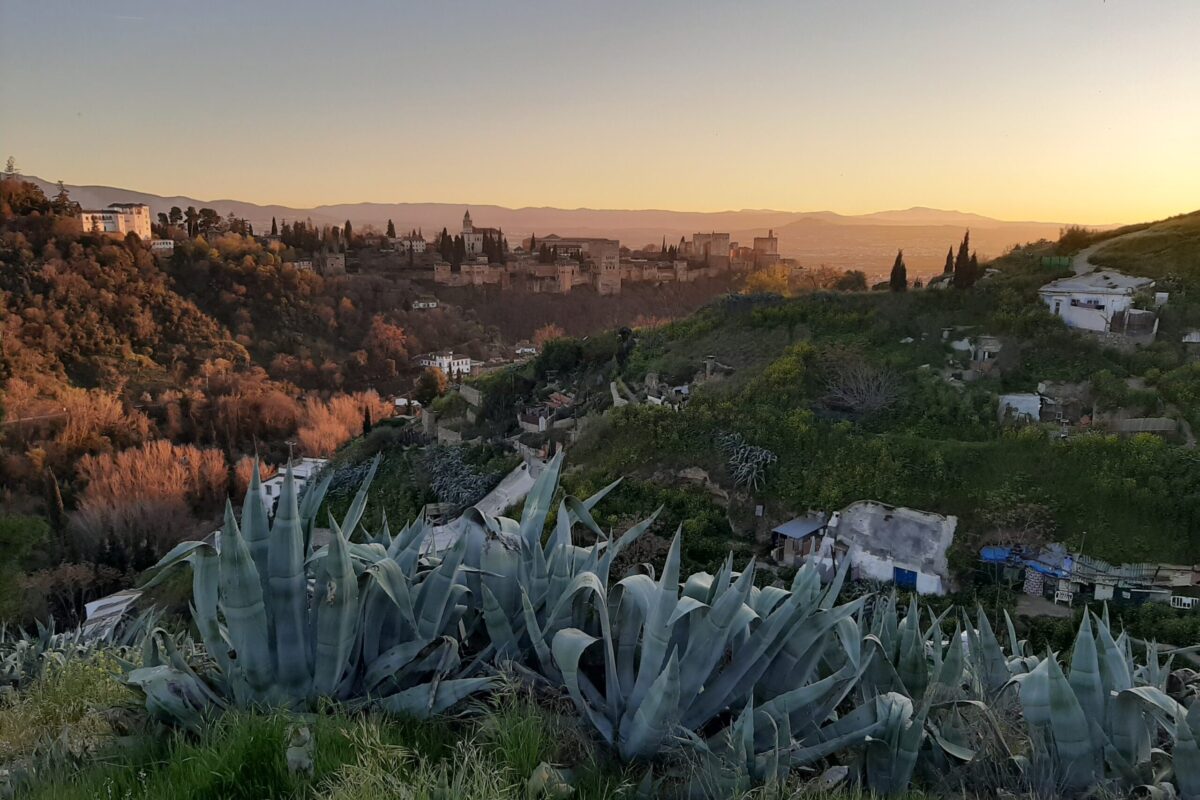
Check out Valencia, Córdoba, Granada , Ronda, and Málaga for sunshine, citrus fruit, and stunning historical sites like the Mezquita in Córdoba and the Alhambra in Granada .
For something different, consider spending some time in Bilbao and San Sebastián in the Basque Country, beautiful and modern cities with museums and skyscrapers. Relatedly, one of Europe’s most popular hikes is in this area: the Camino de Santiago . While formerly a religious pilgrimage, many people undertake this journey for non-religious reasons. There are places to stay each night and you can walk anywhere from a day to several weeks.
If you’re seeking a beach-and-partying break, the beaches in the Canary Islands or the Balearics, like Ibiza, Tenerife , and Majorca . can’t be beaten. Keep in mind transport and lodging can get very pricey in the wintertime, as these boast some of the warmest temperatures in the region.
Lisbon is a fantastic budget destination, with great weather, delicious cuisine, and a laid-back vibe. The iconic yellow streetcars are a quaint way to travel, or you can trek up the hills to the breathtaking São Jorge Castle for sweeping city views. Don’t miss the lovely azulejo tiles adorning the buildings, and the cool fortifications at Belem Tower and Jerónimos Monastery.
Close to Lisbon, don’t miss the unbelievable castle and gardens at Sintra . Porto has a cute, cobblestoned medieval district and (of course) fantastic port, and Faro boasts Moorish walls and a great gateway to the rest of the beautiful Algarve region.
Athens is a vibrant ‘old-meets-new’ place, boasting ancient relics like the Acropolis complex and the Parthenon, amid a great food scene, parks, and gardens.
The Greek Islands are a really special destination suitable for all sorts of backpackers. Party animals will love Mykonos, while Santorini’s white-and-blue buildings are a common bucket-list destination. Milos and Paros are a bit more off-the-beaten-path, and Crete is quite large, perhaps giving you more bang for your buck. Keep in mind the Greek Islands are not often a budget destination, so if you’re traveling shoestring consider planning ahead and comparing transportation options.

2. Southern Europe Backpacking Route: The ‘History Buff’
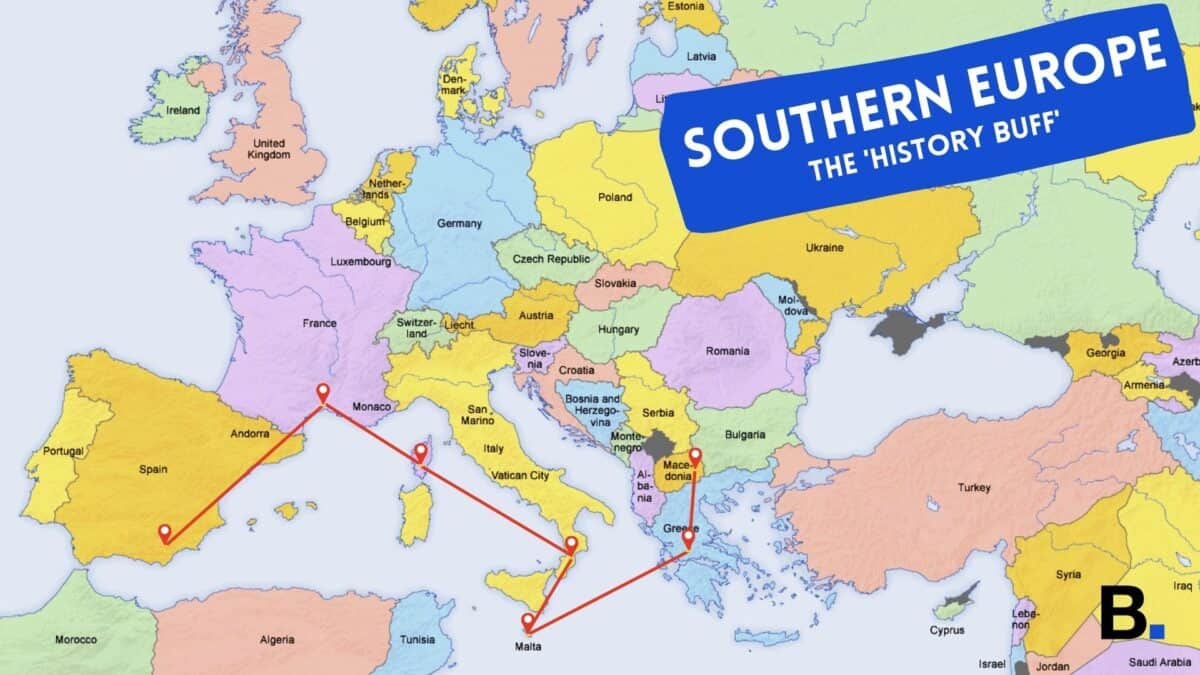
History buffs will love Southern Europe for its jaw-dropping array of ancient ruins, medieval fortifications, art, and beyond.
Southern Spain has a wealth of historical attractions. In Andalucía alone you have the Mezquita in Córdoba , the Alcazaba in Málaga , the Real Alcazar in Sevilla , the Alhambra in Granada , and Baños Árabes and Puente Nuevo in Ronda . Outside of Andalucía, Tarragona has a Roman Amphitheare, and Cádiz has the Castillo de Santa Ana, as well as a storied naval history.
Southern France has Roman history, Gallic history, papal history, and beyond, with innumerable sites to check out. Visit the iconic double-walled medieval fortifications in Carcassonne ; canals and chateaus in Annecy ; scenes of papal intrigue in Avignon and Orange ; the site of a 2nd-century fortified town in Uzès ; the ‘red city’ of Albi ; Roman ruins in Nîmes ; and The Calanques from the fortifications of Cassis .
Larger cities in southern France are chock-full of history as well. Arles is one of the oldest cities in France and pre-dates the Romans. Marseilles was originally founded by the Greeks and is thought to be the oldest city in France. Toulouse changed hands from the Visigoths to the Merovingian and Carolingian Franks, originally known as Tolosa in Roman times.
Check out the Bonifacio Citadel and Citadelle de Calvi, as well as Napoleon’s birthplace in Corsica (part of France.)
Italy has a wealth of historical attractions, and not just in Rome. After you’ve seen the Colosseum, the Appian Way, the Forum, and beyond in Rome , be sure to check out some sites in the rest of the country.
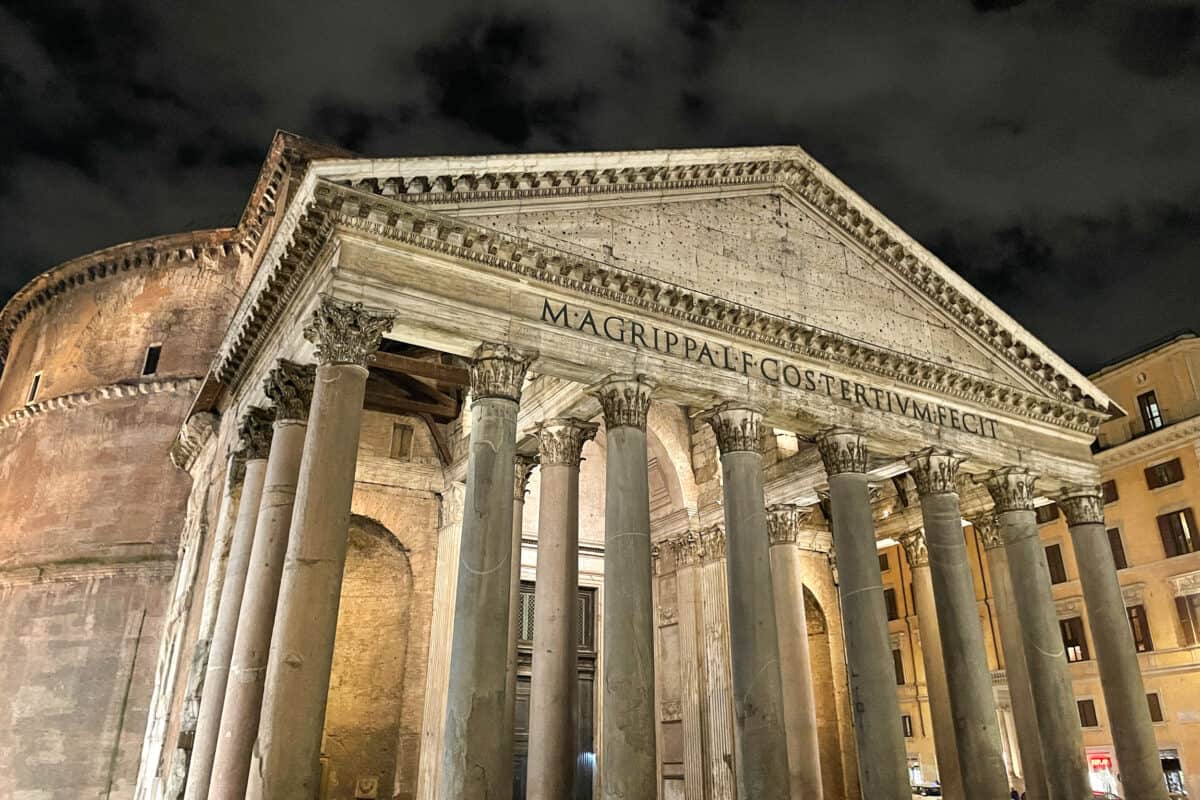
In southern Italy, check out the scene of the volcanic eruption at Pompeii and Herculaneum, lovingly-preserved Doric-style temples at Paestum; ancient cave dwellings at Matera ; and intriguing stone huts in Alberobello . For Napoleon buffs, you can also visit Elba , where he was exiled in 1814.
Sicily has a wealth of ancient sites and offers a great bang for your buck for a Euro backpacking trip. Agrigento is famous for its Valley of the Temples, and the Villa Romana del Casale outside Piazza Armerina boasts one of the most complete mosaics collections in existence today.
Siracusa and nearby Ortigia Island also have large complexes of ruins in excellent conditions, well worth at least a day or two to explore. For other standalone sites on the island, consider the Tempio di Segesta in Trapani , the Cathedral in Palermo ; the Necropolis of Pantalica ; and Taormina’s Greek theater.
UNESCO describes Valletta, Malta as “one of the most concentrated historical areas in the world.” Established by the Knights of St. John, a Catholic order, Valletta has fabulous gardens, churches, and fortifications dating back to the 1500s. Even older than Valletta is Mdina , the capital of Malta before the arrival of the Knights.
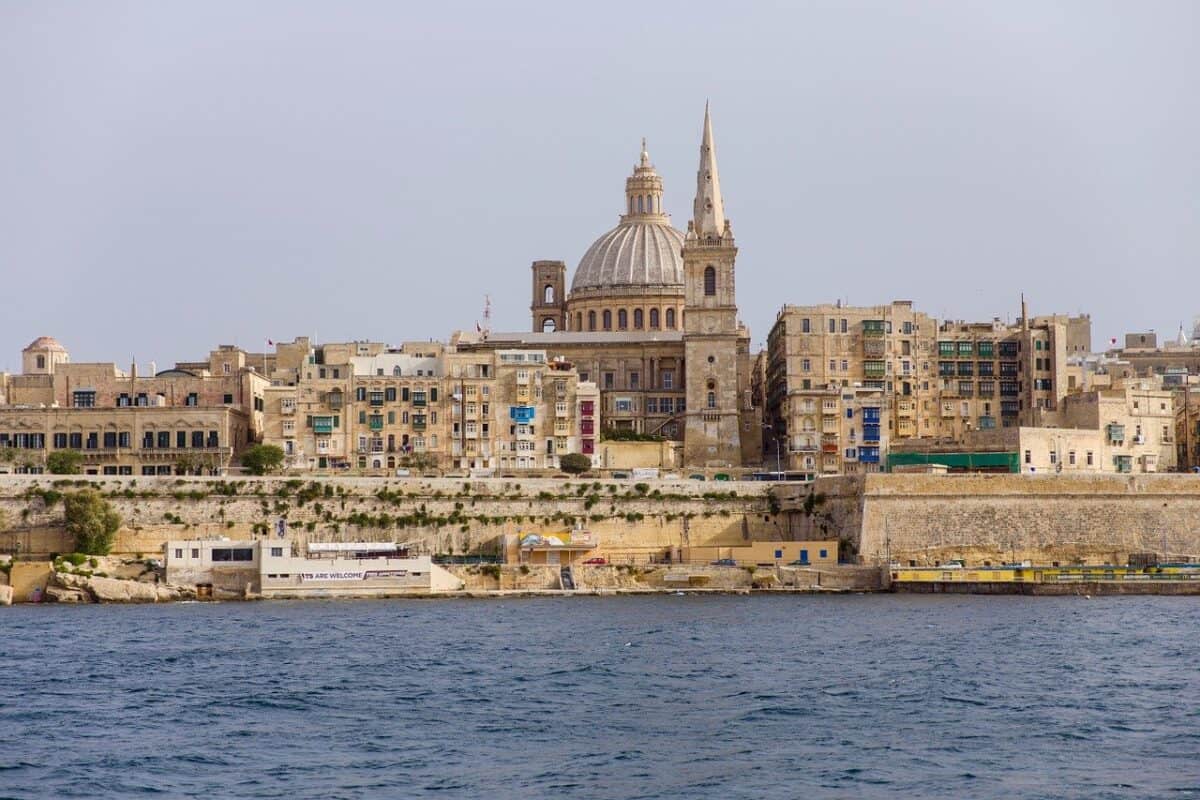
It goes without saying that a large draw of Greece is its historical offerings, similarly to Italy. As mentioned in the itinerary above, you can’t miss the Acropolis and Parthenon complex in Athens , and the country is littered with other ancient sites of interest.
A small selection of your endless historical options include:
- Byzantine frescoes in Mystras
- The Oracle at Delphi
- Eastern Orthodox monasteries atop spindly rock formations in Meteora
- The site of the original Olympic Games at Olympia
- The canals at Corinth
- The world’s oldest city in Knossos , Crete
- The Ancient Theatre at the Sanctuary of Asclepius in Epidaurus
- The Mycenae archaeological site of Trojan War fame
- Delos , the birthplace of Apollo
- The remains of the walled city of Philippi
- The site of the Battle of Thermopylae
North Macedonia
Similar to Greece, North Macedonia has much to offer the history buff. The area around Skopje offers fortresses, bridges, and a market dating back to the 12th century. There is also a Byzantine fortified town at Bargala , the ‘Jerusalem of the Baltics’ in Ohrid , the archaeological site of Tauresium in Gradište , and another fabulous fortress in Isar .
3. Eastern Europe Backpacking Route: The ‘Budget Maximizer’
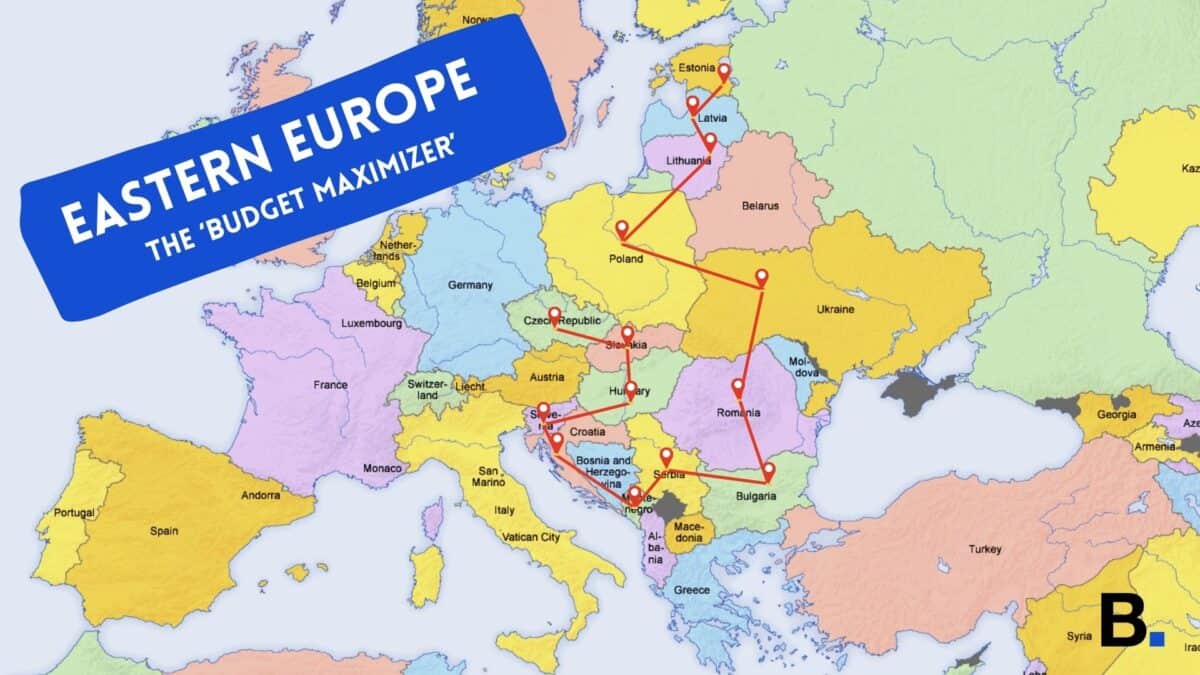
Eastern Europe is known for being a budget-friendly destination, and this is definitely true. The region is also chock-full of amazing cities, nature, and things to do and explore so it’s a win-win for aspiring backpackers!
You can start this tour in the Czech Republic, flying into Prague and following the Grand Tour itinerary for Prague, Český Krumlov, Brno , and beyond . From there, head to Slovakia!
Slovakia has the most castles per capita in Europe, and its capital of Bratislava has a charming old town that is pedestrian-only, lined with cute shops and restaurants. In addition to its castle and castle ruins, it also has majestic churches in different styles.
Košice dates back to the 13th century, and you can still visit the medieval city walls, with the largest preserved historic city center in Slovakia. Today, it is mainly known for steel production, but its historic center is arguably the best in the country.
For some nature, go bear-watching in the High Tatras National Park or hiking in the aptly-named Slovak Paradise National Park .
Hungary is also a great alternative in which to start this Europe backpacking route, flying into the large hub of Budapest . Budapest is an absolutely fantastic city, with a variety of attractions at a great price point.
The city is on a geographic fault line, so you have lots of options for thermal baths: check out Instagram-hyped Szechenyi, avoid the tourists at less popular but equally gorgeous Gellert, or have a truly local experience at Lukacs.
Don’t miss the jaw-dropping Hungarian Parliament building, stroll along the Fisherman’s Bastion and Matthias Church, and explore both Buda and Pest via the Széchenyi Chain Bridge. Have a beer at one of Budapest’s ruin bars, filled with all sorts of oddities, and try some Hungarian goodies at the Central Market Hall.
For a less urban experience, check out serene Lake Balaton , try some local wines in caves in the Valley of the Beautiful Women in Eger , or cycle around quaint Szentendre .
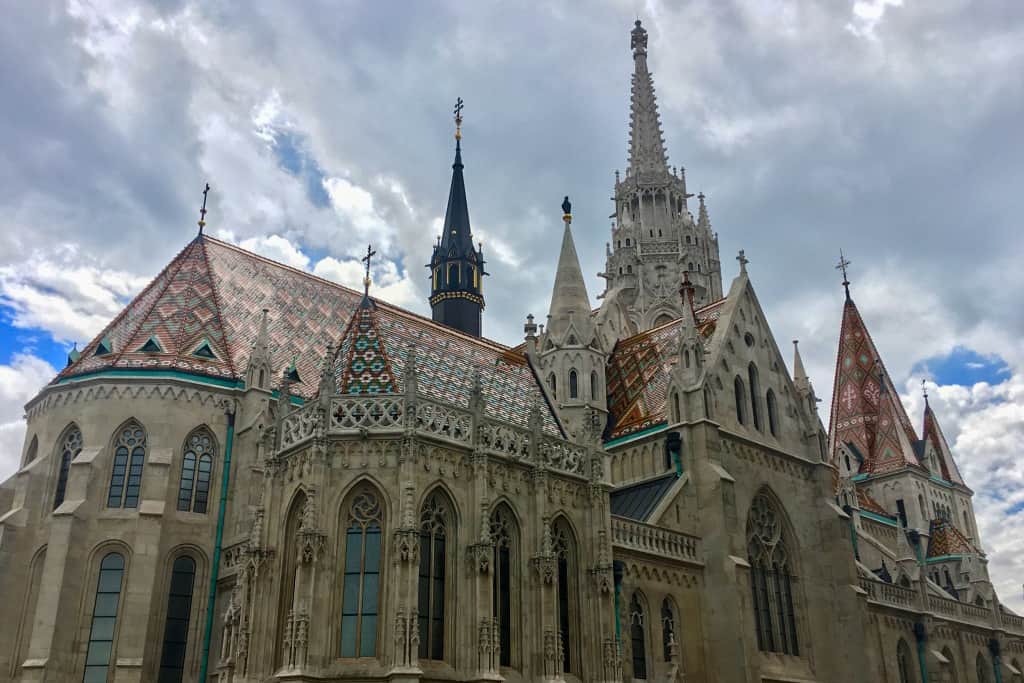
Slovenia is also a great destination for those seeking a mix of smaller, beautiful cities and lots of nature opportunities. Capital Ljubljana has a similar vibe to Prague and Budapest (with lovely castles, parks, bridges, and museums), and Piran is famous for Venetian architecture along the Adriatic coast.
Arguably the most popular location in Slovenia is Lake Bled and its iconic Bled Island and church, surrounded by surreal turquoise water. The Julian Alps surround the lake and are a great, nearby location for hiking.
Croatia has long been a favorite destination for backpackers due to low prices and few tourists. However, Game of Thrones has led to large crowds visiting very small Dubrovnik (AKA Kings’ Landing.)
Split is also on the Adriatic Sea and is fairly similar, but a bit bigger. This can lead to more reasonable accommodation prices and a bit more breathing room. Croatia’s capital, Zagreb , is also worth a visit for very different architecture to Split and Dubrovnik in a more Austro-Hungarian style, and also boasts the beautiful Medvednica area just north of the city.
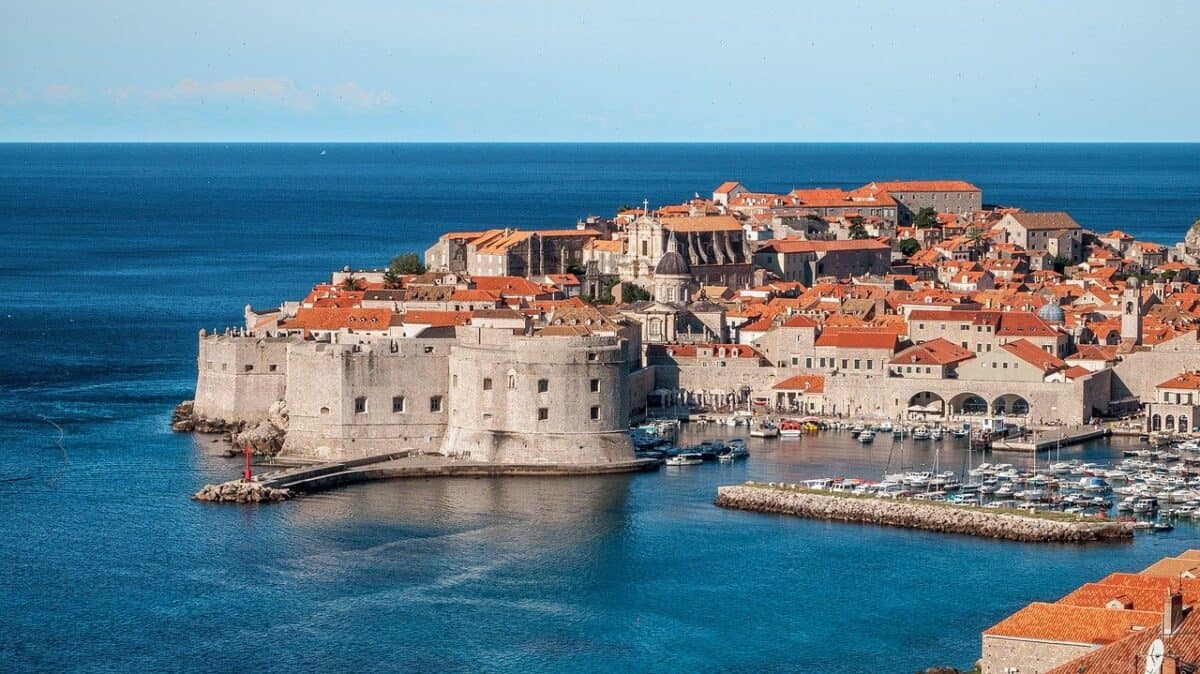
For natural splendor, nothing beats Plitvice Lakes National Park , a series of gorgeous turquoise lakes linked quasi-vertically by waterfalls. There are also all sorts of beaches in Croatia if you’d like to take a few days to relax by the water, like Golden Horn Beach ‘ s world-famous white sand.
Montenegro is a great destination for budget travelers and an ideal place for those seeking something a bit less touristy, but still gorgeous. The area around Kotor resembles a Scandinavian fjord, and the Stari Grad (Old Town) and city walls are fantastic to scramble around.
The capital Podgorica isn’t as exciting as other Eastern European capitals but has a cool clock tower and proximity to Lake Skadar National Park . If you want to splash out a bit, consider a visit to resort island Sveti Stefan , one of the most popular destinations in the country.
Serbia is often overlooked in favor of Croatia and Montenegro but is absolutely worth a visit. Capital city Belgrade is lovely, with competing Roman, Ottoman, Byzantine, and Austro-Hungarian influences as well as great green spaces and cuisine. Novi Sad has the Petrovaradin Fortress and its network of tunnels, as well as very different architecture and vibes to Belgrade.

Bulgaria is a treasure, with a long and storied history displayed in its folklore, like traditional dancing and arts and crafts. It is also said to be the birthplace of yogurt! Capital Sofia is a great place to see all of Bulgaria’s cultural attractions, or you can visit Nessebar on the Black Sea for a completely different vibe, and its world-famous Sunny Beach. For history and archaeology fans, check out Plovdiv in southern Bulgaria for Roman ruins.
Did you know? Bulgaria is one of the cheapest countries in Europe !
Romania is perhaps most famous for its mythical Transylvania region, home to beautiful gateway cities Cluj-Napoca and Brașov , medieval fortified towns like Sighișoara, and world-famous Bran Castle , said to be where Dracula lived.
In the Bucegi Mountains , hike to natural rock formations Babele and the Sphinx, or go underground for salt mine tours at Salina Turda . Capital Bucharest is known for its massive, Soviet-era Palace of Parliament and Old Town Lipscani district.
Ukraine also has a variety of places of interest for budget travelers. Capital Kyiv has beautiful Eastern Orthodox-style churches, museums, and a reconstructed medieval gate. Lviv is a great place to see Polish and Austro-Hungarian culture collide, and has a world-famous opera and ballet that may be worth a splurge for tickets.
For something a bit different, Odesa on the Black Sea is also famous for its opera and ballet, as well as the iconic stairway from The Battleship Potemkin and beautiful sea views. Intrepid travelers may be interested in visiting the nuclear disaster site Chernobyl . A tour to the exclusion zone has been determined to be safe and is possible with an official guide.

Poland has a wealth of cities, attractions, and natural wonders to offer travelers. Similar to other countries in the region, it is a great budget destination, with fantastic food, friendly people, and enough museums and cultural contributions to entertain any tourist for years.
Capital Warsaw suffered a lot of damage in World War II and was almost entirely rebuilt. The Soviet-style buildings aren’t everyone’s cup of tea, but don’t make the mistake of skipping the city! Spend some time eating pierogi, strolling Łazienki Park, visiting the Warsaw Uprising Museum and POLIN Museum, and taking a tour of the Royal Castle as an absolute minimum.
Cute Krakow is much more popular with tourists for its medieval Rynek Glówny quarter, as well as its proximity to underground marvel Wieliczka salt mine and concentration camp Auschwitz . Poland also has a variety of former German cities with a distinct architectural flair, like Wroclaw , Gdansk , and Gdynia , which are all highly worth a visit.
In Lithuania, don’t miss baroque capital city Vilnius and nearby Trakai Island for its fairytale castle. At the Curonian Spit , you can see sand dunes that stretch up to 35 meters in height, and those seeking something a bit spookier can visit the sculpture garden at the Hill of Witches. A popular pilgrimage site is the Hill of Crosses , where over 100,000 crosses have been placed over the years.

Latvia is also an often-underrated country to visit. Its capital Riga has slightly different architecture to its Eastern European contemporaries, with a lot of wood-based and art nouveau buildings at a similarly great price point for budget travelers.
Nearby Rundāle Palace has a similar aesthetic to Versailles, and Jūrmala is a fantastic resort town that is also close to Riga.
The last stop on this Eastern European tour is in Estonia, a small country with over 1500 small islands. Its capital, Tallinn , has a cute old town with various structures dating back to the 13th century, as well as a medieval fortification tower called Kiek in de Kök.
Seaside resort Pärnu is known for its distinctive wooden villa-style houses and the ability to mud-bathe. Bog and wetland enthusiasts will love Lahemaa National Park , the former USSR’s first national park.
4. Around Europe Backpacking Route: The ‘Whole Shebang’

And for those of you who refuse to take your backpack off, we’ve created this final mammoth Europe itinerary. An amalgamation of the Western and Eastern routes (with a couple of tweaks for logistical reasons), this comprehensive Europe backpacking route showcases the best of what the continent has to offer, from balmy beaches, to dramatic castles and everything in between!
The adventure is limitless with this Europe itinerary, you just need to hope that your wallet is too!
Ways to Travel Around Europe
One of the best things about backpacking in Europe is the relative ease of transport between countries. As you plan out your trip, start by analyzing how you can best get between the countries you want to visit.
A tip here is to combine trains, buses, and flights strategically. These vary widely in price, and you may be surprised at what deals you may find.
Overall, the big advantage to buses and trains is that they usually drop you off at a more central location, sparing you transport to and from a farther-away airport. However, sometimes you may find that flights are the best fit for your budget or timeline.
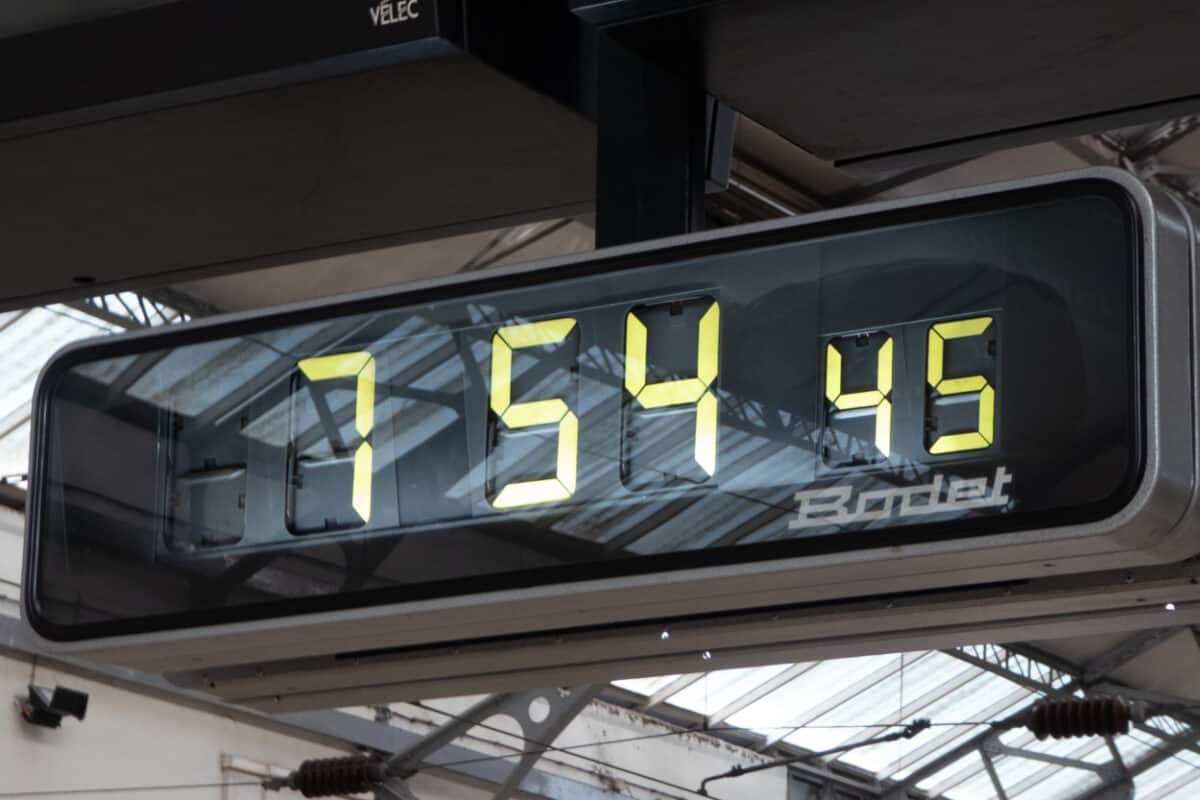
Traveling by train is often considered to be the quintessential way of getting around Europe. Companies like Eurail offer customizable train passes between 33 countries, with regional options and timing options (e.g. 15 days, 30 days, etc.) now on a mobile app.
This ‘all-in-one’ style pass can be as simple as a hop-on-hop-off, where you show your pass to board the train of your choice. However, some places (like France and Germany) sometimes charge supplements or have a limit on how many passengers can board with a pass per train. For that reason, you may want to book tickets in advance during busy seasons, and always make sure that the journey you are taking is included in your pass!
The associated downside to Eurail is that it is quite pricey, so you should do the math carefully to make sure you’ll actually save money with this pass. As a rule of thumb, it is largely worth it if you’re spending a lot of time in countries like Switzerland. Conversely, if you’re doing a trip mostly focused on central or eastern Europe, it’s probably cheaper to buy single tickets.
Although train travel is the most talked-about transport for backpackers in Europe, don’t count out buses ! Companies like Flixbus and Eurolines sometimes have absolutely jaw-droppingly low fares, and charter buses are largely comfortable and reliable.

Like trains, buses also usually drop you off in central locations, and it’s a really economical way to get from place to place. The associated downside is, of course, time. Buses get stuck in traffic and delays can be common, as well as the fact that buses are without a doubt slower than trains and planes.
Like Asia, Europe has a variety of budget airlines that have ultra-low fares, like RyanAir, EasyJet, Wizz Air, and beyond. Be warned though, f the fares seem too good to be true, that’s because sometimes they are.
These airlines are infamous for nickel-and-diming travelers, with add-ons for anything larger than a (small) backpack and hidden fees. However, that said, if you’re at a point in your journey where you have a longer distance to travel, or want to visit an island or somewhere logistically more challenging, you should definitely look into plane travel.
Time to Plan Your Europe Backpacking Trip!
Backpacking through Europe is definitely something that you should take advantage of. It’s totally doable to stick to a budget with some savvy planning, and you will make memories that will last a lifetime.
We hope this article has helped to show you a few ways to put together your dream Europe backpacking trip. Of course, these routes are just a few among infinite options!
In case nothing has tickled your fancy just yet, we’ll leave you with some more food for thought…
- An island tour through the Canary Islands, the Azores, the Greek islands, Sicily, Sardinia, Corsica, and Malta
- A royal jaunt through castles in the British Isles (England, Scotland, Wales, and Ireland) France, Germany, Romania, and Slovenia
- An Alpine ski bum tour through Switzerland, Austria, Italy, France, and Monaco
If you have questions about specific countries not mentioned, or have another idea for cool groupings, we’d love it if you’d share it with us in the comments! Happy travels!

Tegan George & Alex McKenzie
- DIY Norway in a Nutshell: A Budget Traveller’s Guide
- Visiting Lake Como in Winter: A Budget Guide
- Europe Travel Budget: How Much Does it Cost to Backpack Europe?
- Cheapest European Countries To Visit


My Step-By-Step Guide to Backpacking Europe
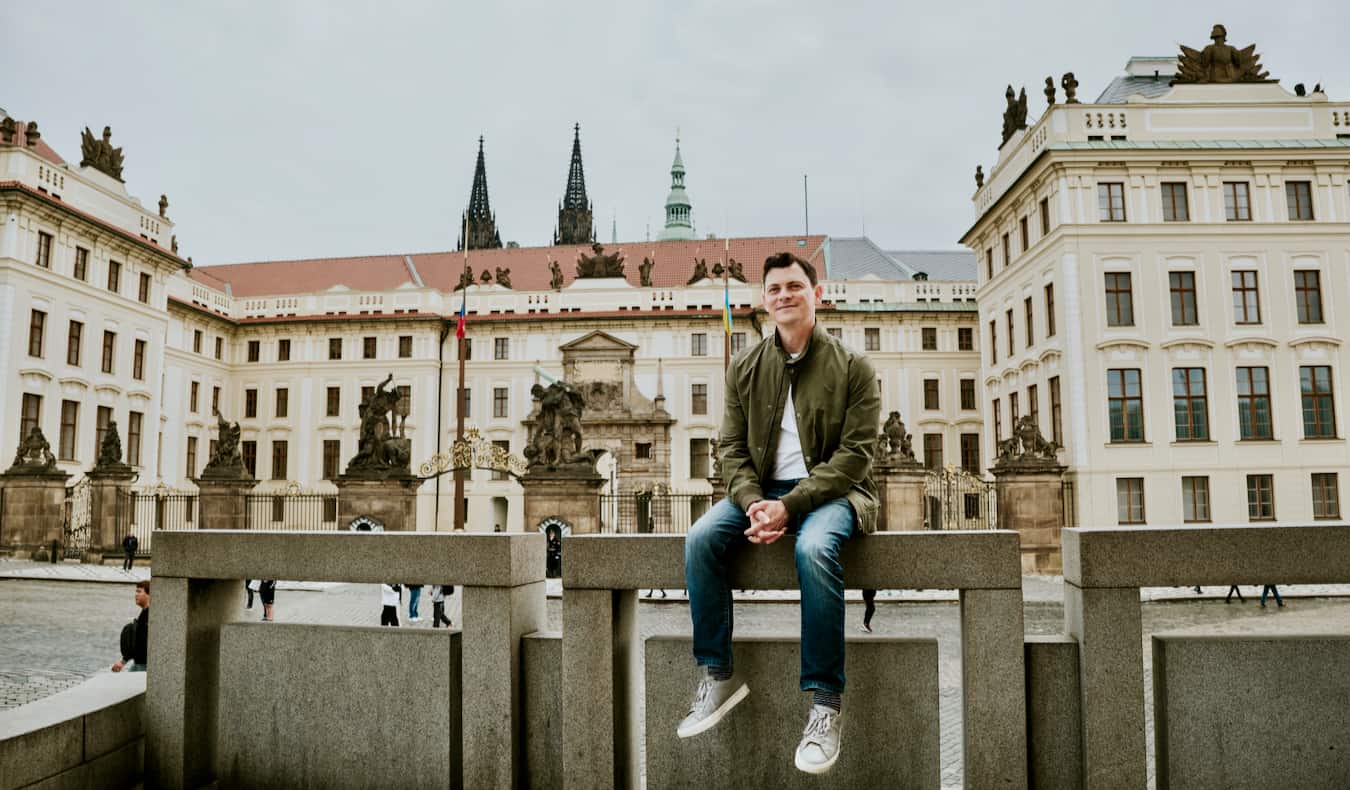
Backpacking Europe is one of my favorite things to do as a traveler. There isn’t a year I don’t criss-cross the continent (except 2020 when no one was crossing Europe).
During the summer, hostels burst with life, the Mediterranean sparkles, streets fill with people drinking wine and enjoying the day, and the late night setting sun leads to long wonderous days. Winter brings Christmas markets, skiing, fewer crowds, and lower prices! And Spring and Fall bring the right mix of people, temperatures, and prices that make these two my favorite seasons to travel Europe.
Since starting this website in 2008, I’ve written a lot of posts on Europe. I visit Europe multiple times a year, have been all over the continent, lived there on multiple occasions, and I have even run tours there.
With so much content on the blog, I wanted to create a resource page that will help you plan your backpacking trip to Europe with ease. That way you don’t miss anything! In this post, you’ll find all my best resources on planning a backpacking or budget trip to Europe, including destination guides, transportation tips, accommodation information, ways to meet people, and so much more!
So, without further ado, here’s everything you could ever want to know about backpacking Europe:
Table of Contents
Step 1: Plan Your Backpacking Europe Trip
Step 2: get your gear for backpacking europe, step 3: how to get amazing accommodation in europe, step 4: get around europe on the cheap, step 5: save money while backpacking europe, step 6: find out what to see and do in europe, get your in-depth budget guide to europe.
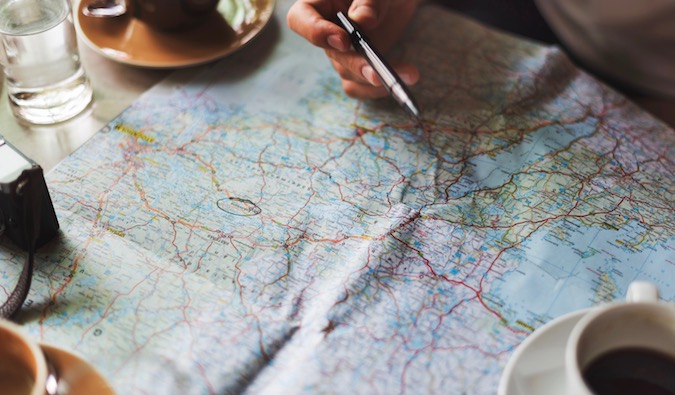
How Not to Feel Overwhelmed While Planning – Planning the perfect trip to Europe can be daunting and overwhelming. I’ve been there and I understand, but I can tell you from years of experience that the more you plan your trip, the more anxiety you will face.
How to Save for Your Trip – Is money stopping you from taking the trip of your dreams? Here are 22 easy ways to cut down on your daily expenses so you can save money to backpack Europe.
How to Find a Cheap Flight – Getting to Europe can be half the challenge. Luckily, there are a ton of flight deals to the continent now if you know when and how to look for them. This article will show you how to always get a cheap flight to Europe.
How to Earn Points for Free Flights and Hotel Stays – Free travel is my favorite kind of travel! This post shows you eight strategies I use to get over a million frequent flier points. These will get you out of your house faster, cheaper, and in comfort!
How to (Legally) Stay in Europe for More Than 90 Days – Every year, thousands of travelers wonder how they can stay in Europe for more than 90 days, which is the limit in the Schengen Zone. The good news is that there are a few different ways to stay. In this post, I share what you can do to stay legally beyond 90 days and on the continent in general.
How to Avoid Paying ATM Fees – You should never have to pay any bank fees while you are accessing your money in Europe! Here is my advice on how to avoid bank fees as your backpacking Europe.
Is Europe Safe to Visit? – Here is how to ensure you stay safe while traveling across the continent.

What to Pack for Your Trip – What should you pack on your trip? Well, there is no one right answer, but this list will give you a good place to start. It’s what I take on my trips with me (though you’ll need to make some seasonal variations, I’m sure!).
The Ultimate Packing List for Female Travelers – In this post, Kristin Addis shares her packing insights for women, so that you can travel just about anywhere without spending a fortune on gear.
How to Buy Good Travel Insurance – Travel insurance is one of the most important things you’ll need for your trip. You wouldn’t have a car without car insurance or a home without home insurance, and you can’t have a trip without travel insurance!
The Best Travel Cameras – Wondering what kind of camera you should get for your trip? This post will show you exactly what you need — no matter your budget!
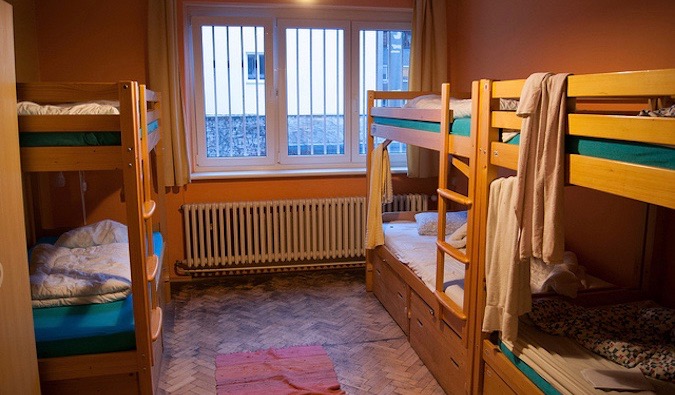
How to Find a Good Hostel – This article features my best tips on how to find an affordable, clean, and fun hostel where you can meet a lot of amazing people.
The Best Hostels in Europe – This is a list of European hostels that I would definitely use again if I have the chance. Hope this helps with your next European backpacking adventure!
How to Become a House Sitter – This is a how-to guide to house-sitting, a wonderful opportunity that allows you to stay in a location rent free in exchange for watching someone’s house.
For more budget accommodation suggestions, check out my hostel hub page . It has all my favorite hostels around Europe!
If you’d rather stay in hotels, this page has all my favorite hotels in Europe .
And to find out where to stay in each city, visit my list of the best neighborhoods in Europe!
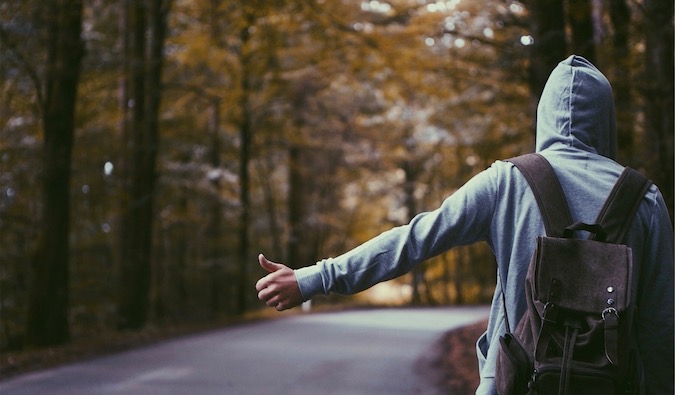
The Ultimate Guide to Saving Money with Eurail Passes – Everyone traveling to Europe wonders if they will save money by buying a rail pass or if it’s cheaper to buy tickets as they go. This detailed post outlines everything you need to know about buying a rail pass!
Europe is also an amazing destination for road trips. Countries like Iceland , Scotland, Ireland, Portugal, and Norway are all amazing places to explore by vehicle.
If you’re planning to drive around Europe, use Discover Cars to find the best rental prices. They search rental companies big and small to find you the best deals.
You can use the widget below to get a quote. It’s fast and free:

How to Save Money on Food – While traveling Europe, food often becomes a major expense. Here are some tips for saving money on food so you still can afford a nice meal out every now and then.
How to Use the Sharing Economy to Save Money – The rise of the sharing economy has made backpacking Europe so much easier and cheaper. This post lists all my favorite ridesharing, house sharing, local meeting websites so you can get off the tourist trail and experience day-to-day life with locals!
61 Tips to Make You the Savviest Traveler – These 61 travel tips will help you become an expert traveler who gets around Europe cheaper, better, longer, and smarter!
14 Major Travel Scams to Avoid – Losing money to a preventable travel scam sucks. Learn what scams to look out for in Europe and save yourself a potential headache!
How to Crush it on Couchsurfing – While Couchsurfing isn’t as popular as it once was, it’s still an option for intrepid backpackers. This post can introduce you to the basics and help you find hosts around Europe.
How to Become a House Sitter & Get Free Accommodation – Pet sitting is a great way to get free accommodation when traveling Europe. It’s easy to get started too! This post will show you everything you need to know.

Additionally, here are a few of my favorite companies in Europe. These are the comoanies I use when I’m looking for things to do, food tours, walking tours, and more!
Walks – Walks offers in-depth history, food, and cultural tours in cities around the world (especially Europe). Its small-group tours offer exclusive behind-the-scenes access other companies can’t get and use really incredible and knowledgeable guides. I can’t recommend them enough.
Devour – Devour has all kinds of amazing food tours around Europe. If you’re a foodie who wants to learn more about the history and culture behind each dish, these tours are the best on the continent. I take them every chance I get.
GetYourGuide – Get Your Guide is a huge online marketplace for tours and excursions. The site has tons of tour options in cities all around the world, including cooking classes, walking tours, street art lessons, and more! It’s a good resource to search for specific tours in any destination.
And for a complete overview of Europe in one easy-to-read post, you can check out this free guide . It covers all the basics, including ways to save money, things to see and do, when to go, and more!
This massive resource list will help you plan your trip to Europe in an easy-to-follow, step-by-step pattern so you won’t get lost, overspend, or stress out about your upcoming dream trip. Europe is one of my favorite regions of the world (which is why I spend so much time there). There’s so much variety in food, culture, and language, as well as so much history. I love the continent and hope you use these tips to plan your ultimate backpacking adventure in Europe!

My detailed 200+ page guidebook is made for budget travelers like you! It cuts out the fluff found in other guides and gets straight to the practical information you need to travel while in Europe. It has suggested itineraries, budgets, ways to save money, on and off the beaten path things to see and do, non-touristy restaurants, markets, bars, safety tips, and much more! Click here to learn more and get your copy today.
Book Your Trip to Europe: Logistical Tips and Tricks
Book Your Flight Use Skyscanner to find a cheap flight. They are my favorite search engine because they search websites and airlines around the globe so you always know no stone is left unturned!
Book Your Accommodation You can book your hostel with Hostelworld as they have the biggest inventory and best deals. If you want to stay somewhere other than a hostel, use Booking.com as they consistently return the cheapest rates for guesthouses and cheap hotels.
For suggestions on where to stay during your trip, here are my favorite hostels in Europe !
Don’t Forget Travel Insurance Travel insurance will protect you against illness, injury, theft, and cancellations. It’s comprehensive protection in case anything goes wrong. I never go on a trip without it as I’ve had to use it many times in the past. My favorite companies that offer the best service and value are:
- Safety Wing (best for everyone)
- Insure My Trip (for those over 70)
- Medjet (for additional evacuation coverage)
Looking for the Best Companies to Save Money With? Check out my resource page for the best companies to use when you travel. I list all the ones I use to save money when I’m on the road. They will save you money when you travel too.
Want More Information on Europe? Be sure to visit our robust destination guide to Europe for even more planning tips!
Got a comment on this article? Join the conversation on Facebook , Instagram , or Twitter and share your thoughts!
Disclosure: Please note that some of the links above may be affiliate links, and at no additional cost to you, I earn a commission if you make a purchase. I recommend only products and companies I use and the income goes to keeping the site community supported and ad free.
Related Posts
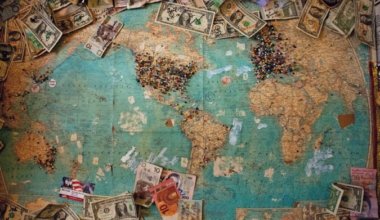
GET YOUR FREE TRAVEL STARTER KIT
Enter your email and get planning cheatsheets including a step by step checklist, packing list, tips cheat sheet, and more so you can plan like a pro!

The Gallivanting Spoon
A Custom Travel Planning Service
The Ultimate 2-Month Europe Backpacking Trip

This post contains affiliate links. If you use these links to buy something I may earn a commission at no additional cost to you. Thank You and Happy Gallivanting!
Table of Contents
2-Month Europe Backpacking Itinerary & Tips
Europe is one of the most popular travel destinations in the world. It is made up of 44 countries, all connected with a system of trains making it one of the easiest places to travel. Whether you are backpacking through Europe on a budget or no budget at all, you will get to see the same stunning landmarks. We spent two months backpacking through Europe in the Fall of 2021. Planning a trip like this does take some time, but that’s where this guide comes in. This guide will give you tips on backpacking, what cities to visit, what to pack, transportation, and more!
Europe Trip Highlights
- Wandering the Charming Streets of Prague, Czechia
- Scirocco Restaurant Collaboration in Naxos
- Blue Caves Boat Tour in Zakynthos, Greece
- Eating Endless Authentic Cheap Greek Gyros
- Seeing Venice, Italy for the First Time
- Staying at a 5-Star Luxury Hotel in Florence
- Hiking the Amalfi Coast
- Relaxing by the beach in the Surf Town of Ericeira, Portugal
- Touring Barcelona for just One Day
Europe Backpacking Route
Backpacking Tips:
- Time of Year: I recommend visiting Europe in the Spring or Fall to avoid the crowds and cold weather.
- Main Forms of Transportation : Europe offers great transportation services that allows you to travel on a budget. We took advantage of the metro and public transportation services in each city. Planes, buses, and trains are a great way to travel long distances.
- Be Flexible: If you are a Type A Planner like me you will most likely have your entire trip planned out, before leaving. Not everything always goes to plan! If you are visiting Europe for an extended time, I recommend having a rough layout of where you want to visit and for how long. Some places you may love and want to extend your stay!
- Always have Extra Water and Snacks : You never know when hunger might strike, so pack some extra snacks and water. Protein bars are my go to. Many cities throughout Europe have FREE drinking water spouts, bring your reusable water bottle to fill up.
- Accomodation : We stayed in a variety of accomodations. Hostels are very budget friendly and a great place to meet people. Depending on how many people you travel with, Airbnb can be a great option with a full kitchen and extra living space. If you have the extra money, don’t be afraid to splurge on one luxury stay even if it is for just one night!
- International Drivers Liscense: Get your international driver’s license before heading to Europe. Rental shops will ask for it and if you are renting a scooter you may want to look into getting your motorcycle license as well.
- Currency: I highly recommend exchanging USD for a couple hundred Euros with your bank before crossing the pond. Europe is very credit card freindly but it is always a good idea to carry the local currency.
Europe Packing Guide
- Carry On Backpack
- Tripped Travel Gear Day Pack
- Walking Shoes
- Travel Sized Curling Iron/Straightener
- Compressable Packing Cubes
- Noise Cancelling Airpods
- Reusable Water Bottle
- Think! High Protein Bars
- USB Portable Charger
- Outlet Adapter
- Power Converter
Subscribe for my Full Packing List Free Download
Email address:
Paris, France
24-hours, 1 night.
Paris, France is one of my favorite European cities to visit. This charming city takes my breath away each and every time. Paris does a great job of making you feel like you are immersed in their culture with the numerous landmarks, stunning buildings, and delicious French cuisine. Paris was the beginning of our two-month Europe backpacking trip, and I couldn’t have been more excited.
Why only 24-hours?
We were not planning on visiting Paris at all during our two-month Europe trip because we had both spent some time in the city prior. We found cheap flights from New York to Paris that we could not pass up. Our plan was to head straight to Prague when we crossed the pound but there were not many flights to Prague until the next day. We thought we would make the best of our one night in Paris.
How Long to Spend in Paris : 5 Full Days
Must-Try Foods : French Dinner at Brasserie Dubillot , Warm Flakey Croissants, French Macarons, and Duck Confit

Prague, Czech Republic
3 days, 2 nights.
Prague is the capital of the Czech Republic and home to colorful baroque-styled buildings, the Vltava River, and the stunning Charles Bridge. Prague is very traditional with its rich and hearty cuisine. At most restaurants, you will find goulash, Svíčková (braised beef) with dumplings, Grilované klobásy (grilled sausages), and the sweet treat Trdelnik. This was our first time visiting Prague and I quickly fell in love with this romantic city, I cannot wait to return!
How Long to Spend in Prague : 4 Full Days
Must-Try Foods : Trdelnik, Tapas at Fortel , Staropramen Beer, and Svíčková (braised beef with dumplings)

Vienna, Austria
4 days, 3 nights.
Vienna is the capital of Austria and home to some of the most gorgeous buildings. You may also hear the city be called “Wien” this is the local’s way of saying Vienna. Being just south of Germany, the prominent language spoken here is German. Many people will speak English, making it easy to navigate and explore the city. There are numerous things to see in this historic and expensive city. If you are traveling on a budget but still want to get the full Vienna experience then this is the guide for you!
How Long to Spend in Vienna : 2 Full Days
Must-Try Foods : Goulash, Manner Wafers, Sachertorte, Viennese Coffee, Apple Strudel, Wiener Schnitzel

Budapest, Hungary
4 days , 3 nights.
Budapest is separated into two cities by the large winding Danube River. On the east side of the river is Pest which is known for a lively experience for tourists with bustling cafes and modern shops. Buda lies directly opposite of Pest and is home to the Buda Castle and Castle Hills. You may notice things are a little bit quieter and more relaxed here. I highly recommend visiting both sides, as they are just one mile apart with the famous Chain Bridge connecting the two.
How Long to Spend in Budapest : 4 Full Days
Must-Try Foods : Goulash, Drinks at the Ruins Bars, and Töltött káposzta (Stuffed Cabbage)

Zakynthos, Greece
6 days , 5 nights.
Zakynthos is a large northern Greek island known for its stunning Navagio beach and bright blue waters. This is a hidden gem that you may have not heard of but I highly encourage a visit! Zante (what the Greeks call it for short) is an exotic island with a natural landscape of olive trees, beaches, large cliffs, and rolling hills. We stayed in Zakynthos, Greece for one week and absolutely loved our time. If you love adventure as much as us I highly encourage a visit to this stunning Greek island.
How Long to Spend in Zakynthos : 4 Full Days
Must-Try Foods : Greek Salads, Portokalopita (Orange Cake), Lamb, and Olives

Athens, Greece
3 days , 2 nights.
Acropolis means the city at the top, Athens is home to one of the best Acropolis sites that still stands today. Millions of people visit Athens Acropolis each year, making it one of the top attractions in this large city. The Parthenon is the main building atop the Acropolis with over 60 marble columns built at a small angle. The symmetry and attention to detail is an incredible work of art that dates back to 447 BC. The Athens Acropolis is one place you should visit once in your lifetime!
How Long to Spend in Athens : 1 Full Day
Must-Try Foods : Gyros, Mousakka, Greek Dips with Homemade Bread, and Dolma

Naxos, Greece
4 days , 4 nights.
Naxos, Greece is one Greek island you need to add to your bucket list. This stunning island is home to white-sand beaches, the Temple of Apollo, and charming white stone narrow streets. The port city and capital of Naxos is Chora, Chora is a small touristy town where the ferry meets the island dropping off visitors from around the world. Keeping with the traditional Greek cuisine Naxos has some amazing restaurants, including one of my favorites in all of Europe!
How Long to Spend in Naxos : 3 Full Days
Must-Try Foods : Gyros, Saganaki, Orzo (Greek Pasta), and Naxos Cheese

Santorini, Greece
Santorini is one of the most visited and well-known Greek Islands. Its pristine white-painted buildings, blue domes, and cliff views have been posted all over the internet making this one of the top Greek islands to visit. I first thought Santorini was going to be a bit overrated and overly touristy but it ended up being one of my favorite Greek islands!
*Crete is also a stunning island I highly suggest visiting. It is great for solo travel and adventure.
How Long to Spend in Santorini : 4 Full Days
Must-Try Foods : Gyros, Saganaki, Greek Wine, and Spanakopita (spinach pie)

Venice, Italy
Venice is by far my most favorite city in Italy, with its winding canals, charming streets, and gothic palaces. This unique destination is also called “The Floating City” because it is made up of over 100 small islands. San Marco is the most popular island in Venice with historic landmarks, restaurants, and shops. This charming city will surely feel like a dream with delicious Venetian food and romantic gondola rides through the Grand Canal.
How Long to Spend in Venice : 3 Full Days
Must-Try Foods : Cicchetti, Aperol Spritz, Pasta E Fagioli, A full Italian Dining Experience, and Baccalà (local fish)

Florence, Italy
Florence is the capital of Italy’s Tuscany region and home to many museums and art galleries. Fiorenza is the birthplace of the Renaissance, the piano, and the famous frozen Italian dessert, the gelato. The famous red tin roofs and large Duomo have been photographed for years and have become a large tourist attraction with over 16 million visitors each year. This is one charming city that you will fall in love with!
How Long to Spend in Florence : 2 Full Days
Must-Try Foods : Gelato, Famous Italian Sandwiches from All’antico Vinaio, Florentine Steak Dinner, and a 5-Star Dinner at Mimesi Restaurant

Rome, Italy
We spent four days in Rome exploring all of the major landmarks. The Rome Collesuem was a highlight with the wealth of history and large presence it has. Besides eating the best Pasta Carbonaro of my life we also delved into some delicious Neopolitan and Roman food. Visit the charming Ristorante da Barbara for some classic Neopolitan and Roman dishes.
How Long to Spend in Rome : 4 Full Days
Must-Try Foods : Pizza, Pasta Carbonara, Cannolis, and Tiramisu

Positano, Italy
Positano is an Italian village located on the Amalfi Coast of Italy. This colorful city has become one large tourist destination with fancy restaurants and charming hotels overlooking the blue waters of the Tyrrhenian Sea. The city is built on a steep cliffside with winding narrow streets and lots of stairs. Positano is not the cheapest place to visit in Italy but with my top 10 budget-friendly things to do, you can enjoy all that Positano has to offer without breaking the bank.
How Long to Spend in Positano : 3 Full Days
Must-Try Foods : Pizza, Gelato, Anything Lemon, and Italian Charcuterie

Lisbon, Portugal
Lisbon (Lisboa) is Portugal’s capital and one of my favorite cities to visit in Europe. This large city is home to some of the best food with multiple Michelin Star restaurants, authentic pastel de natas, and the famous Time Out Market. Its rolling hills and yellow trams remind me of San Francisco, USA. The colorful tiled buildings and orange-painted city views will take your breath away! Lisbon is a wonderful place to visit with many things to do, famous landmarks, and great food.
How Long to Spend in Lisbon : 5 Full Days
Must-Try Foods : Pastel de Natas, Anything at Time Out Market, Salted Cod, Port Wine, and Ginja

Ericeira, Portugal
10 days , 9 nights.
Ericeira is a small surf town on the west coast of Portugal. This stunning place was added to the World Surf Reserve in 2011 making this a surfer’s paradise. Whether you surf or not you will find plenty to do here. The charming downtown offers fun shops and delicious restaurants. My favorite part was the warm ocean views and watching the waves crash in. Ericeira was a great place to regroup and relax after a lot of travel and sightseeing.
Tip: Book a long stay in a relaxing and low-cost area to take a moment and relax after traveling every 3-4 days!
How Long to Spend in Ericeira : 2-14 Days
Must-Try Foods : Seafood, Smoothie Bowls, and Pastel de Natas

Barcelona, Spain
1 day , 2 night s.
Barcelona is one of my favorite cities in Europe. The ease of living, stunning architecture, sandy beaches, and amazing food won me over after our quick visit. Antoni Gaudí paints this bustling city with architectural works of art. The grandest of them all is the La Sagrada Familia, it will take your breath away. I cannot wait to be back in Barcelona to explore more of this wonderful city!
How Long to Spend in Barcelona : 4 Full Days
Must-Try Foods : Croquetas, Seafood Paella, Patatas Bravas, and Jamon Iberico

Valencia, Spain
Valencia is Spain’s third-largest city. It is one of the country’s most beautiful places with charming warm colors, unique buildings, and large food markets. It is home to the first Paella, an authentic rice dish. The most famous attraction is the City of Arts and Sciences. Valencia is not a very popular city to visit but it will welcome you with delicious comfort food and fun activities.
How Long to Spend in Valencia : 3 Full Days
Must-Try Foods : Paella, Healthy Lunch at Salad Planet, and Fideuà Paella’s (seafood-and-noodles)

Madrid, Spain
3 days , 3 nights.
Madrid is the capital of Spain and is filled with a variety of things to do. It is home to the Royal Palace of Madrid which is the largest functioning palace in Europe. Madrid reminds me of a European New York City with a multitude of food types, large parks, and famous boulevards. The welcoming people, delicious foods, and easy transportation make this one of the top places to visit in Spain.
How Long to Spend in Madrid 3 Full Days
Must-Try Foods : Spanish Hot Chocolate with Churros, Sushi at Sakale, and Huevos Estrellados (fried eggs and potatoes)

Recommended Articles
A foodies guide to st. augustine, florida.

Top 10 Places to Eat in NYC

The Ultimate Santorini Travel Guide


Backpacking Europe: A Beginners Step-by-Step Guide (2023)
Some links in this post contain affiliate links. I receive a small commission if you use the links at no extra cost to you! Happy reading 😀
A detailed guide to planning and booking a trip around Europe, whether you’re travelling solo, in a couple or with a friend!
Europe is a continent that you could travel to hundreds of times, yet still, find something new to discover. Diverse and culturally rich, Europe is just the gift that keeps on givin’.
Backpacking Europe is for anyone and everyone .
As someone who has visited Europe more times than I can count, I can guide you through the necessary steps to make your dream backpacking trip become a reality.
Planning a successful backpacking Europe trip will take a bit of time, dedication, and research, but it will all be totally worth it!
But first and foremost, I’ll let you in on a secret. If you’re backpacking Europe for the first time, the best way is get around is by interrailing. I speak about this more in my post later, but you can view some of my other posts below. Bookmark them for later!
🚝 Want to buy an interrailing pass for travelling Europe? I recommend checking this website for the best discounts and deals!
- Interrailing Spain: Travel Spain By Train
- Best Hostel In Copenhagen: Steel House Review
- Interrailing Routes 3 Weeks: FOUR Routes You’ll Love!
- Interrailing Italy: Ultimate Guide and Route
- 21 Interrail Tips for First-Timers: Interrailing Europe
- What To Pack Interrailing Europe: Packing List Essentials
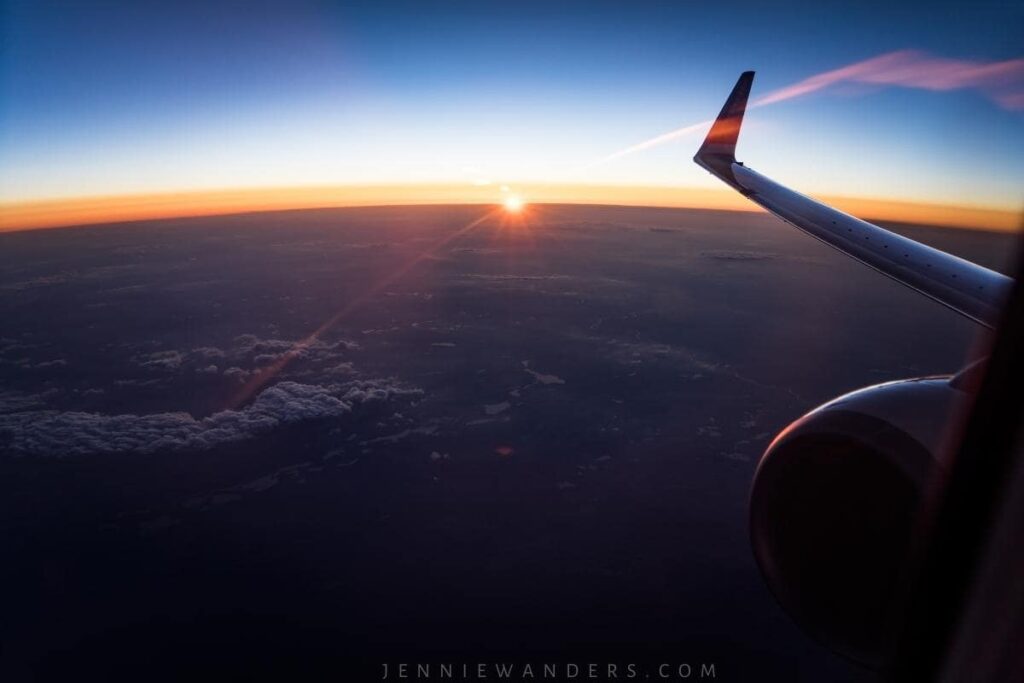
Want to see epic photos and videos from these experiences?
Follow me on Instagram! As we travel, I post everything live on Instagram, so check out my recent highlights and posts. If you can’t find what you’re looking for, drop me a DM!
Backpacking Europe : A Step-By-Step Guide
Planning a successful europe trip.
Europe lies solely in the Northern Hemisphere and is the world’s sixth-biggest continent . It crazily only contains 7% of the world’s land. Hard to believe when you think of all of the diverse countries it includes!
Whilst backpacking Europe, you have 50 unique countries to choose from.
A trip to Russia , the biggest in the continent situated in the North, is completely different to a visit to the smallest country on Earth; The Vatican City , which is actually located in the centre of Rome, Italy.
Whilst planning a backpacking Europe trip, there are some big factors that need to be considered.
For example, the weather! The weather within the continent can be completely different from one country to the next. For example, the UK has an average temperate of 14°C, whereas Turkey tends to linger in the high 20s more often than not.
Even visually, a country like Turkey is going to be an entirely different trip to a visit to the Scottish Highlands. That’s why knowing how to plan a Europe trip successfully is so important.
This post is a one-stop tour of all the important aspects to consider when backpacking Europe. Whether you’re riding solo, with a partner, friend, kids or Nan ( I mean, I wish I was travelling with my nan), I’ve got you covered.
When using this post to plan your Europe trip, feel free to post any questions in the comment box, or contact me directly on social media! I’m here to help you live out your Europe dreams without the stress 🥰
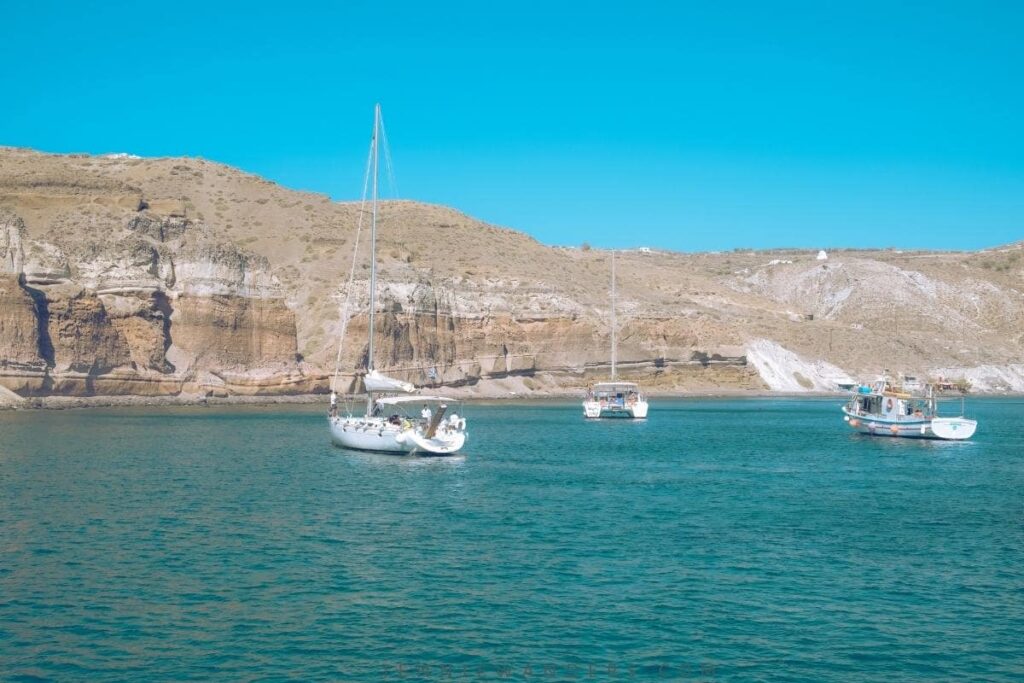
Step 1: Get together the right travel documents!
Let’s start out with some all-important boring stuff. Travel documents and admin for travelling Europe!
How does Brexit affect travelling around Europe?
If you’re backpacking Europe from the UK, it’s pretty simple on the visa front, even with the new Brexit changes.
Even after Brexit, we are able to travel freely around Europe, as long as it is for a short stay (up to 90 days in any 180 day period).
So a weekend in Italy could be followed up by a fortnight’s stay in France. This would all be covered in your 90-day stay limit.
When planning a bigger backpacking trip around Europe, this is something to bear in mind. How long are you going for? Is your visa going to allow this?
If you are looking to stay for a longer amount of time, you will need to apply for an extended visa. This includes staying for tourism, work, or study.
This may change in the future. Please always check the latest Government advice.
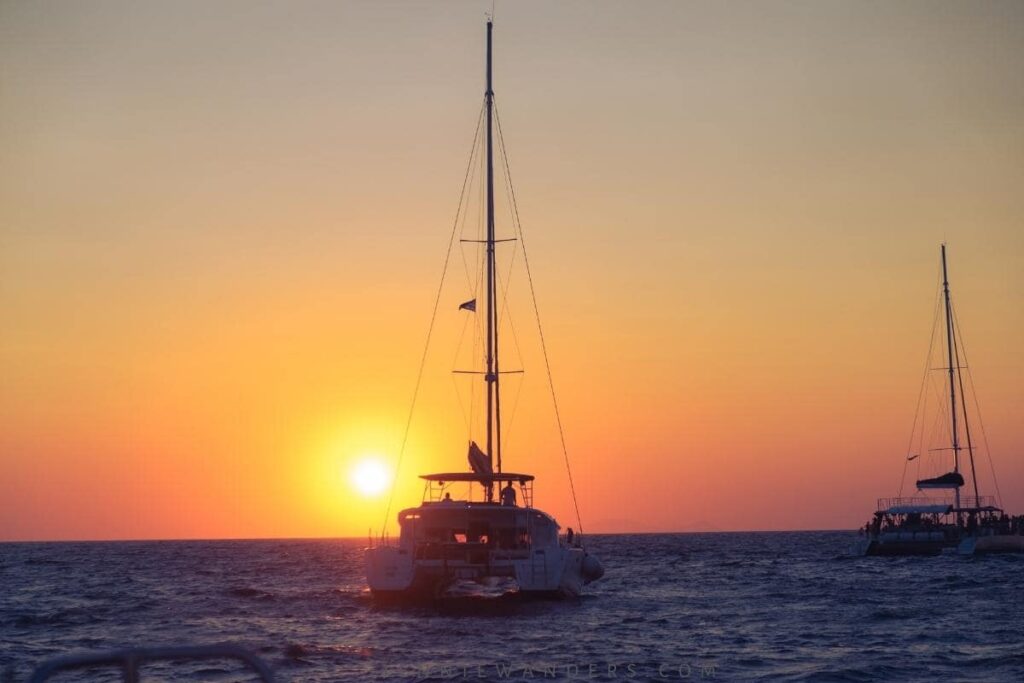
Is my European Health Insurance card (EHIC) still valid?
Yes. If your EHIC was issued before the end of 2020, your card is valid until the expiry date on the front of your card.
After this, the government has said they will issue a different type of card for emergency medical care. There is no confirmation of this and no details have been released.
It is advised that you buy medical insurance before travelling (anywhere), especially if you have a pre-existing health condition.
Want to start your digital nomad life?
Check out my ebook page (click here!) to see if there’s a guide that suits you. I’m here to help you leave the 9-5 and work remotely around the world! 💻 🌎
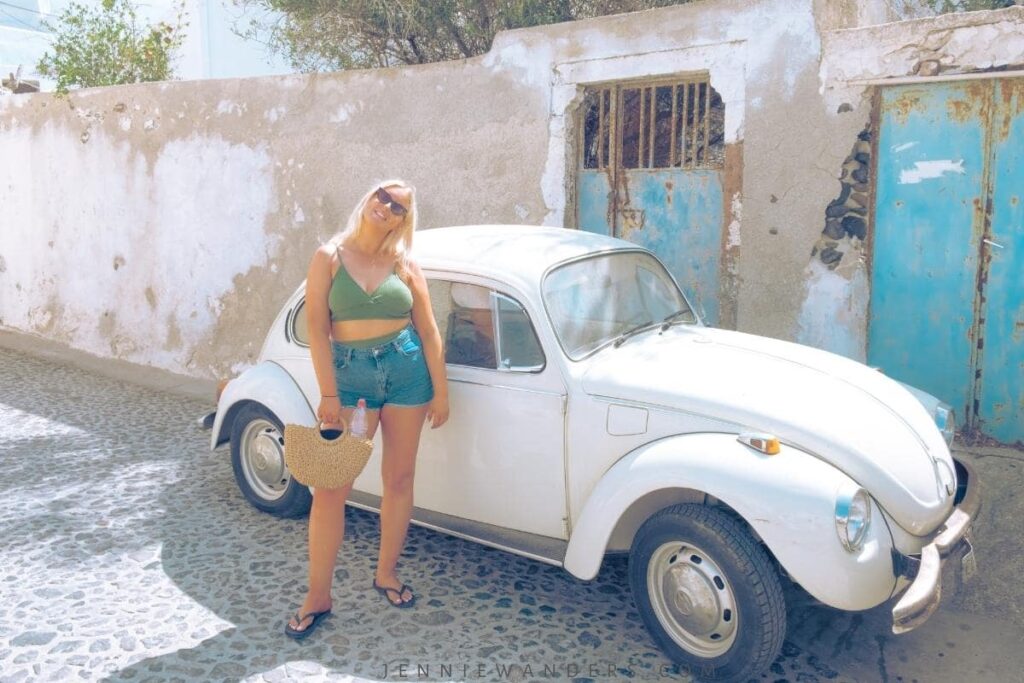
Is my UK driving license accepted across Europe?
Remember to take your driving licence with you, as well as your logbook (V5C) and valid insurance documents if you are taking a car that you own. You don’t want to be caught short!
If you are taking your own car, you will need to contact your insurer around 6 weeks before travel to get a ‘green card’ to prove your insurance is in date and in use.
Anyone over the age of 19 can hire a car in most places throughout Europe. There are a few countries (like the Netherlands, Hungary and Greece) where you will need to be 21+.
Without a doubt, the best way to backpack Europe is by interrailing . This is travelling Europe by train, and this blog is full of information to help you plan an epic interrailing trip!
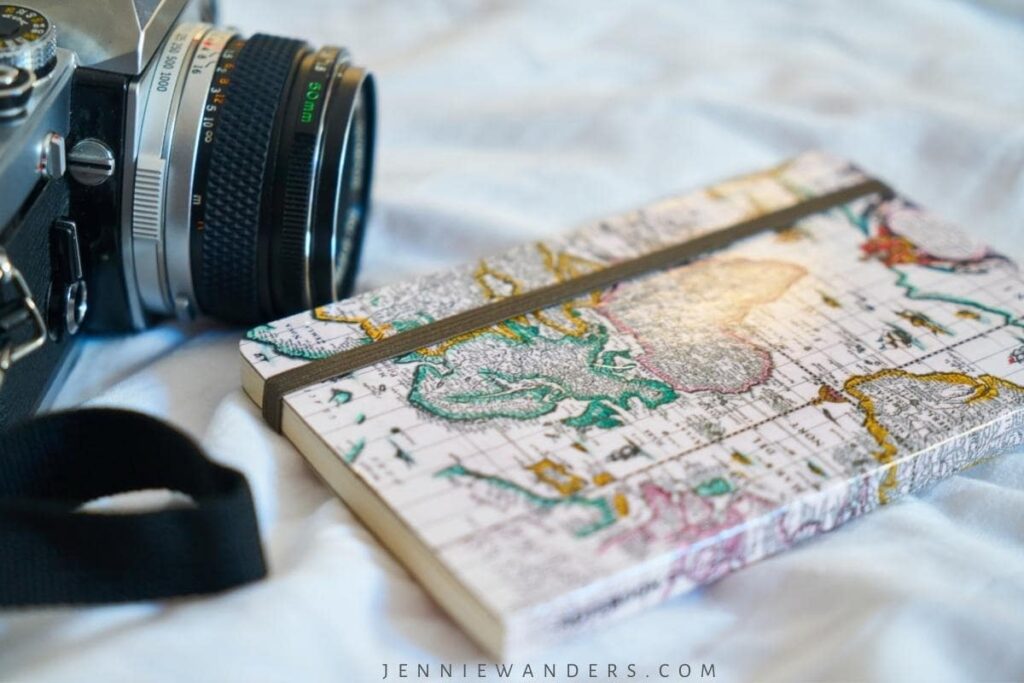
I’m arriving from outside of Europe, what documents do I need?
First of all, the no-brainer of a passport. Make sure it has 6 months left before its expiry date and you’re sorted (if not, get that ticket to freedom renewed).
If you’re from America, Canada or Australia (and most other major countries), you will not need a visa for short stay trips. This is similar to UK travellers; where you’re allowed a trip of up to 90 days.
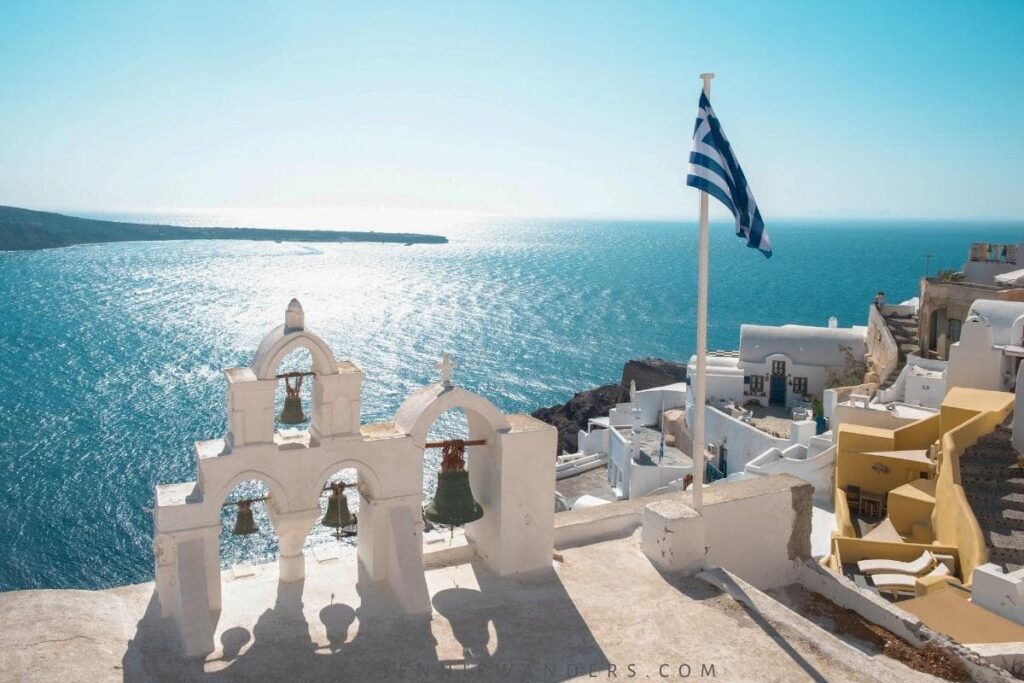
Step 2: Get a rough idea of where you want to go whilst backpacking Europe
Now, when you are ready to plan your backpacking Europe trip, you do not need to make a definitive list of destinations (unless you know a lot about Europe already).
However, it’s good to have some idea of what you want to see and where you want to go on your trip!
Like; are you a beach person and want to hit up the European coastlines? Or would you rather the history and culture of an old city, like London or Paris? You don’t have to decide now, but most people know without a lot of thought what they’re into.
GOOD TO KNOW: Europe is split into Eastern, Northern, Central and Western sections (which is actually quite rarely referred to).
As you know, Europe is a pretty big continent and each country is extremely different from the next.
Therefore, for practical reasons, you might want to focus on one section to keep your journey between each European country shorter.
Check out my interrailing posts if you’re serious about backpacking Europe!
Which part of Europe is best to travel?
- Eastern Europe – Belarus, Bulgaria, the Czech Republic, Hungary, Moldova, Poland, Romania, Slovakia, Ukraine and most of Russia
- Western Europe – Belgium, France, Luxemburg, Ireland, Monaco, the UK, Netherlands
- Central Europe – Austria, Belgium, the Czech Republic, Germany, Hungary, Ireland, Liechtenstein the Netherlands, Poland, Slovakia, Switzerland
- Northern Europe – Denmark, Estonia, Finland, Iceland, Latvia, Lithuania, Norway, Sweden
( FYI – these sections literally change depending on which site you look at. They provide a rough guide if your European geography is a bit pants.)
When I travelled across Europe interrailing , I did cross quite a few sections, so it is possible! Especially if you have an Interrail pass . The trains are super well connected and you can get to most countries in Europe easily (but more on that later).
Don’t worry if you have zero ideas about what’s in each country or why you might want to visit. So many European countries will surprise you with their beauty, especially the least expected ones!
I’d strongly advise researching different countries in Europe (even ones you haven’t heard of!) before planning your route; just to see what else is out there!
I have detailed posts on interrailing Spain , France and Italy . Make sure you read them before you go!
Need more information about interrailing? I have a whole section on the blog about travelling Europe by train. Check out the most popular blog posts here!
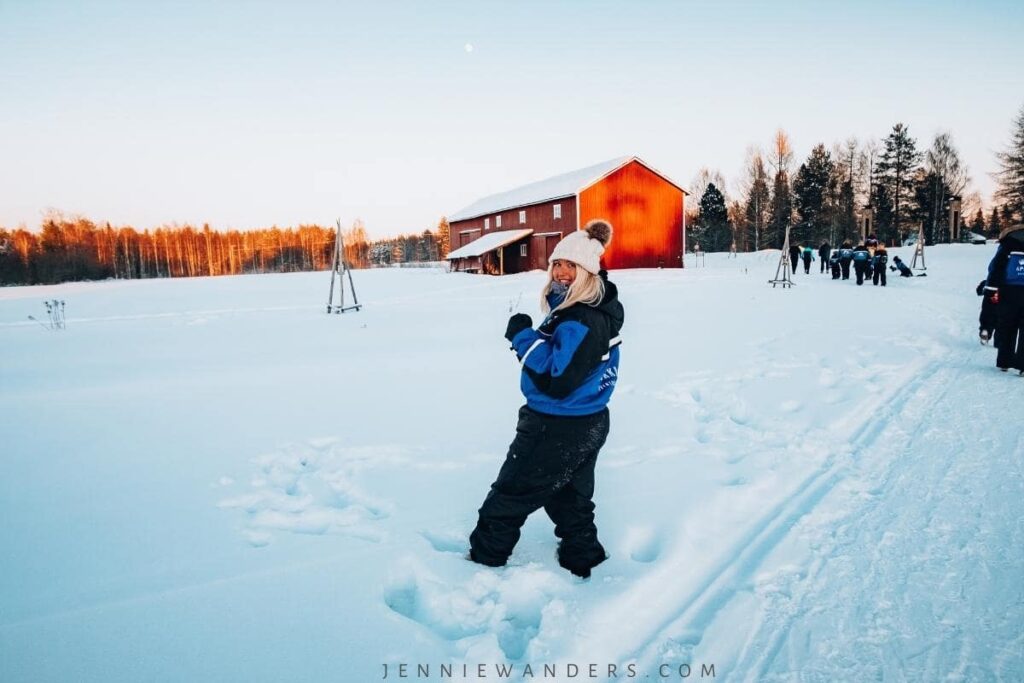
Step 3: Think about your duration:places ratio
Now, I am a big advocate of taking things slow when travelling, especially when backpacking Europe. I made the mistake of planning hundreds (well, nearly) countries into a 2-week trip and ended up burnt out, exhausted, and if I’m honest, a trip that could have been better if I’d not planned as much.
If you cram too many places into a short amount of time, it just won’t be worth it.
My advice to backpackers would be to plan to visit fewer European countries and give yourself more time to explore each one.
This also works in your favour when you meet new people and want to tag along with them to a crazy beer festival or realise you’re in a city with the world’s oldest pizza restaurant and have an extra few days to visit.

How long should you spend in each European destination?
Here are my recommendations for travelling to European countries and cities.
- Major Cities: 2-3 nights minimum
- Small towns/coasts: 2-4 nights minimum, unless you are likely to spend a lot of time on the beach
- Hiking/Camping: 2 nights +, especially if you are planning on a lot of activity during the day. Having to pack up and be ready to leave the next morning can add extra pressure to your (already) strenuous activity.
Of course, these guidelines are adaptable and personal. If you are on a tough time restriction, just plan less. Plan to go to fewer places in Europe, plan to see or do less, otherwise, you will end up frazzled and end up falling asleep halfway through your strawberry gelato.
I know some of you might be saying “but I want to see everything!” and I get that. If you’re absolutely set on stretching yourself thin and doing a non-stop whirlwind tour of a country in a couple of days; go for it. Maybe plan a few days off work when you return to recover (and be prepared to have to whizz through some of your plans because of how much you have organised).
I have detailed posts on interrailing Spain , Switzerland , France and Italy . Make sure you read them before you go!
Step 4: Decide on HOW you’re backpacking Europe
You’re in luck here; as backpacking Europe is one of the easiest continents to travel around (and comfortably!). There are quite a few options to choose from, from budget to luxury options.
You’ll find whilst backpacking Europe that most countries will have their own transport systems that have basic hygiene and comfort levels. I’ve been on a few rickety trains through Eastern Europe, and even they were nothing like the rickety-ness of Southeast Asia (if you’ve been to Thailand, you’ll know what I mean).
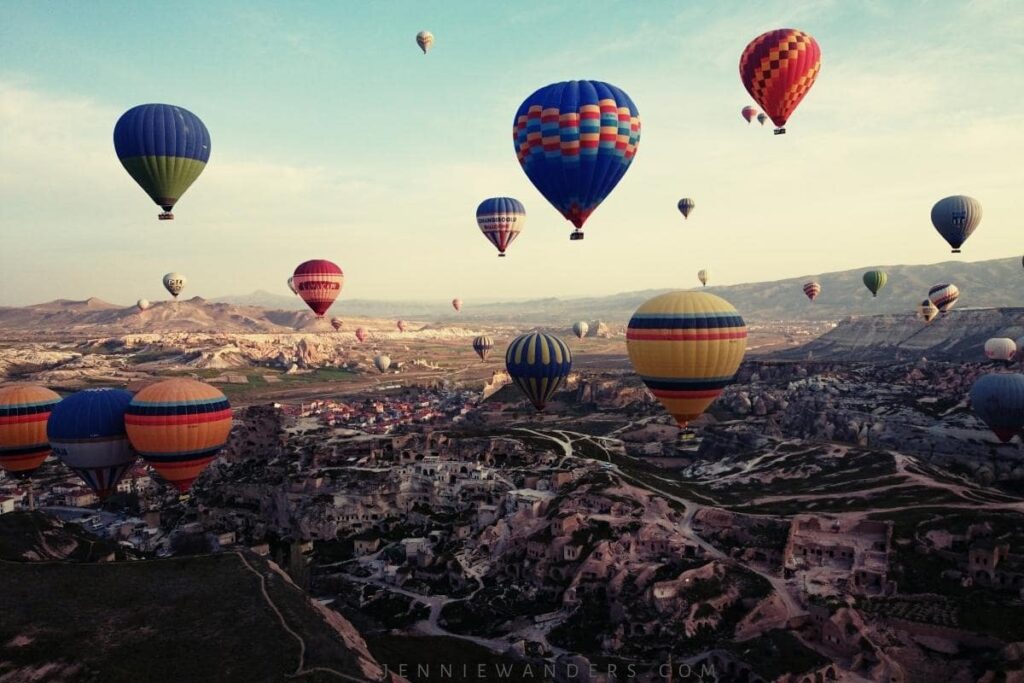
Train (Interrailing Pass) around Europe
One of the most popular ways to get around Europe is via train. This is due to the easy ‘Interrail’ system . Buying this pass will allow you to travel freely around most countries in Europe, on modern and comfortable trains.
There are different types of interrail passes , such as;
- Global Pass (2nd Class) – this allows you to visit the entire continent on one ticket. Prices start around £150 for 4 days, up to the 90 day mark for around £500.
In regards to the class, 2nd isn’t hugely different to 1st and definitely better for those on a budget.
The Global Pass lets you travel in these 33 countries:
Austria, Belgium, Bosnia-Herzegovina, Bulgaria, Croatia, Czech Republic, Denmark, Estonia, Finland, France, Germany, Great Britain, Greece, Hungary, Ireland, Italy, Latvia, Lithuania, Luxembourg, Montenegro, Netherlands, North Macedonia, Norway, Poland, Portugal, Romania, Serbia, Slovakia, Slovenia, Spain, Sweden, Switzerland, Turkey.
- One country pass : If you’re more of a thorough traveller and want to take your time, this one is perfect for a one-country trip. Prices do vary depending on the country you’re wanting to visit, so check out the Interrail Site before purchasing.
🚝 Need to buy your interrailing pass ? I recommend checking this website for the best discounts and deals!
Still unsure about the interrailing pass? I’ve written a detailed post on why it’s so wonderful here.
Bus around Europe
- Megabus : I love this option. I love Megabus! Although I am a bit weird and love long coach journeys (I just love the chill and snacks, okay?!)
Megabus is a super cheap way to travel to some parts of Europe. So if you’re hitting up the UK, Brussels, Paris or Amsterdam, Google Megabus and find some cheap-as-chips bus tickets to travel the entire length of your chosen country. Seriously, some journeys can be as cheap as £3!
If you’re backpacking in England, trains are going to be your last option due to the incredible amount of £££ they cost. A £5 Megabus journey may cost £50+ on a train. Take it from me, I wouldn’t get a train in England unless I really, really needed to!
- Busabout/FlixBus: These are essentially the Megabus, but spread further across Europe. Just check out your destination and what bus service the country uses.
Most of the buses have free Wifi, toilets onboard and are pretty comfy.
Busabout also sells hop on/hop-off tickets for a set price. If you’re planning on taking multiple trips in a short amount of time and want some activities thrown in, it might be worth looking into.
Prices start at around £250 for a 2-week pass.
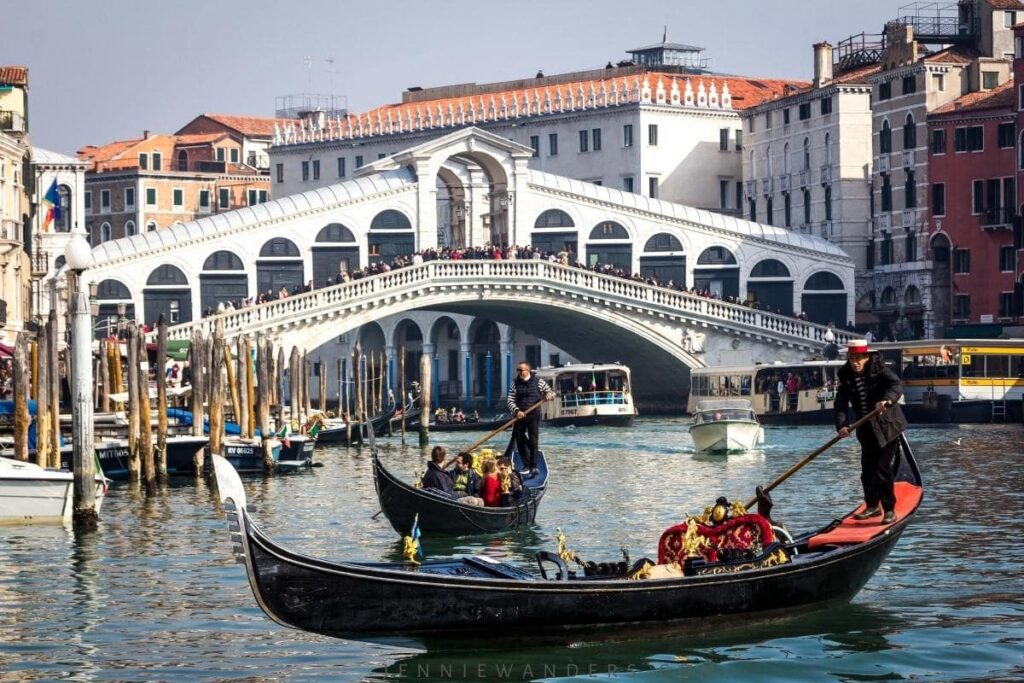
Flying around Europe
Europe definitely isn’t the cheapest continent to fly around, but if you’re lucky and travelling out of school term time, you may get some budget deals.
Have a look at Ryanair , EasyJet , Vueling , Flybe , Norweigan Air and Wizz Air for the cheapest deals (even though they add about 6 grand on for luggage. Sometimes I think they don’t actually work out that cheap *rolls eyes emoji*).
My go-to for booking flights is Google Flights and Momondo . I find they tend to be the cheapest.
Whenever I have travelled through Europe, I have completely mix-matched my modes of transport. I’ve flown, drove, train-ed and bus-ed. It really is all down to where you’re travelling to (for example, if you’re in Ibiza it’s going to be pretty impossible to get on a bus to Italy).
Step 6: What time of year is best to visit Europe?
Europe is situated in the Northern Hemisphere of the world, so the seasons pretty much look like this;
- Winter: December – February
- Spring: March – May
- Summer: June – August
- Autumn: September – November
The temperatures do vary from country to country, but it’s a good guide to have for when you’re planning your trip.
☀️ Spain, Portugal and Greece generally have good weather all year round. Although, they do have times where it can be quite brisk and windy, especially over the winter time.
❄️ If you’re planning on hitting the slopes, January – February tends to be quieter than the peak season in March. For further info, check out On The Snow to compare each country’s weather for the best skiing time.
Wherever you’re going, check out the weather first before you start packing.
You really don’t want to be left in your flip-flops when there’s a monsoon going on overhead. Been there, done that. It isn’t great.
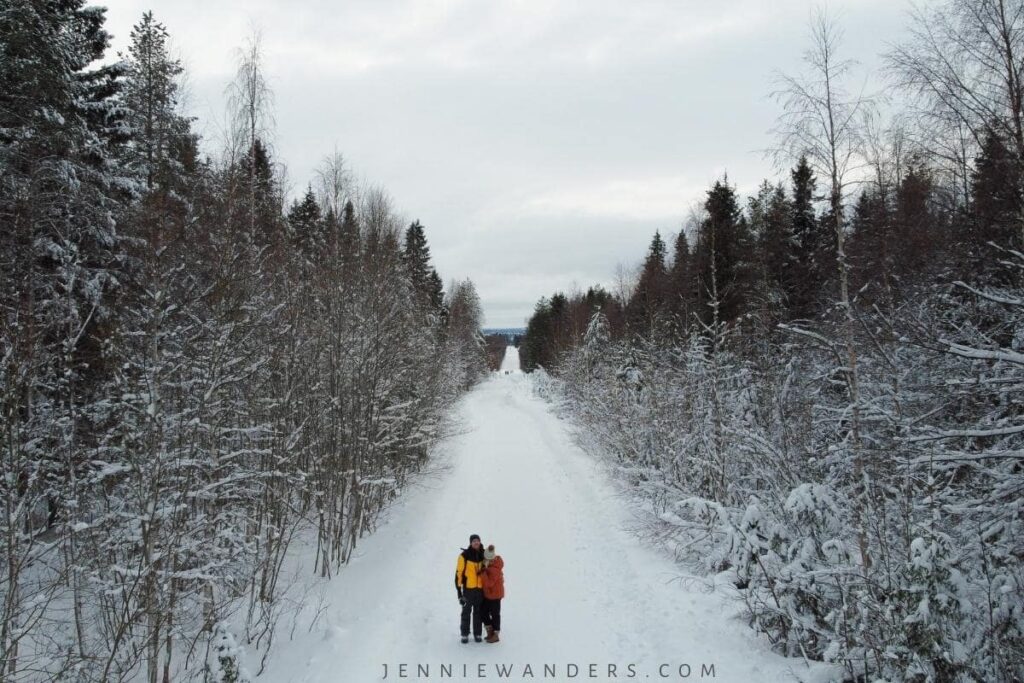
Step 7: What to Pack for a Europe trip
Packing can seem like an unbearable task; especially before you’ve started. I find the best way to get the job done quickly and efficiently is to make a list (or if you’re my boyfriend, pack 5 plain t-shirts and a pair of shorts).
You can check out my detailed interrailing packing list here.
If you’re travelling to a snowy part of Europe (like Finland or Norway) I have an extensive Arctic Circle packing list here!

Step 8: Deciding on a budget and saving money whilst travelling Europe
Now we’re down to the nitty-gritty. How much money do you save to take when backpacking Europe?
The answer? It depends. (Sorry). The question you need to ask yourself really is, HOW do you want to travel Europe?
On a tight budget? In luxury? A mix of both? Hostels ? Airbnbs? Signing up for every activity known to man in the entire continent?
I know when I travel, I’m a mix of cheap and “do I really need to go on that 8th wine tour?” type of spender. I hate missing out on anything, so my priority is usually activities over accommodation.
On my travels, I have met so many people who are the same as me. Dorm rooms, shared bathrooms, messy kitchens – no problem if I’m able to scuba dive the Meditteranean.
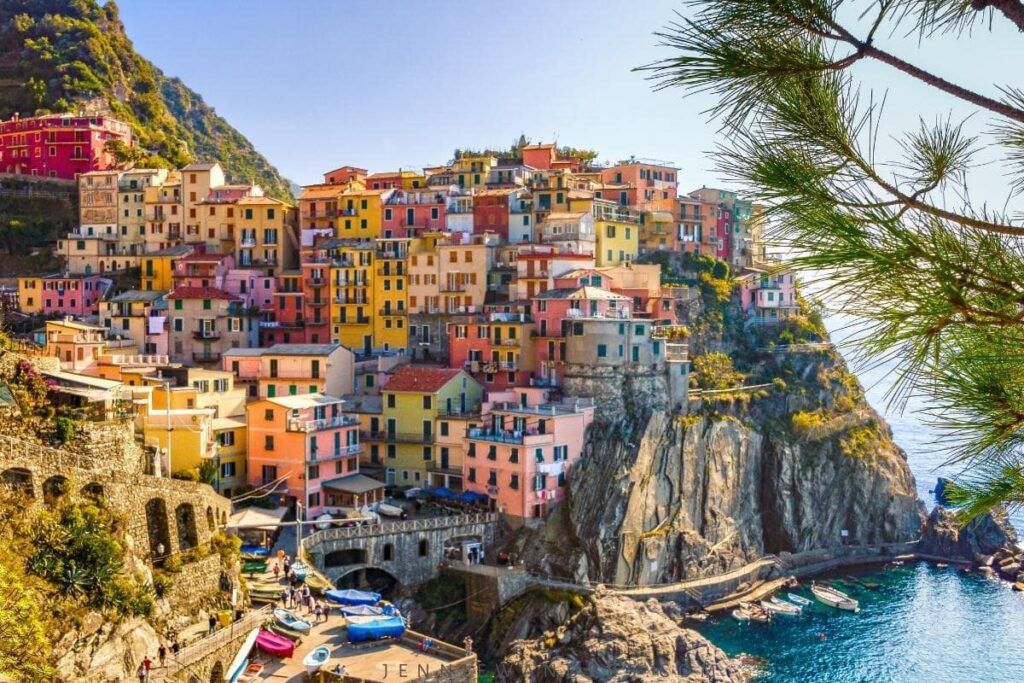
Budgeting for a Europe backpacking trip
The first time I travelled Thailand in 2015, I jetted off for a month in August and spent £1000. Total.
The following year, I spent a month travelling Europe. Total price: £3500.
Exact same time of year, exact same amount of time. Just a whooooole lot more money.
My trip around Europe was anything but luxury. We did have a few private rooms and Airbnbs but they were pretty standard.
But, we didn’t scrimp on the activities. We did everything, every excursion, nice meal out, we partied, drank (alcohol probably was 50% of my budget…maybe) and we really pushed the boat out when it came to enjoying ourselves.
Could we have travelled around Europe for less? Probably. I made some rookie mistakes and it was one of my first backpacking trips, so don’t let it put you off.
But, I do think, especially for newbie travellers, it is important to highlight how expensive travelling can be. Especially if you really want to enjoy every moment and live your trip to its fullest.
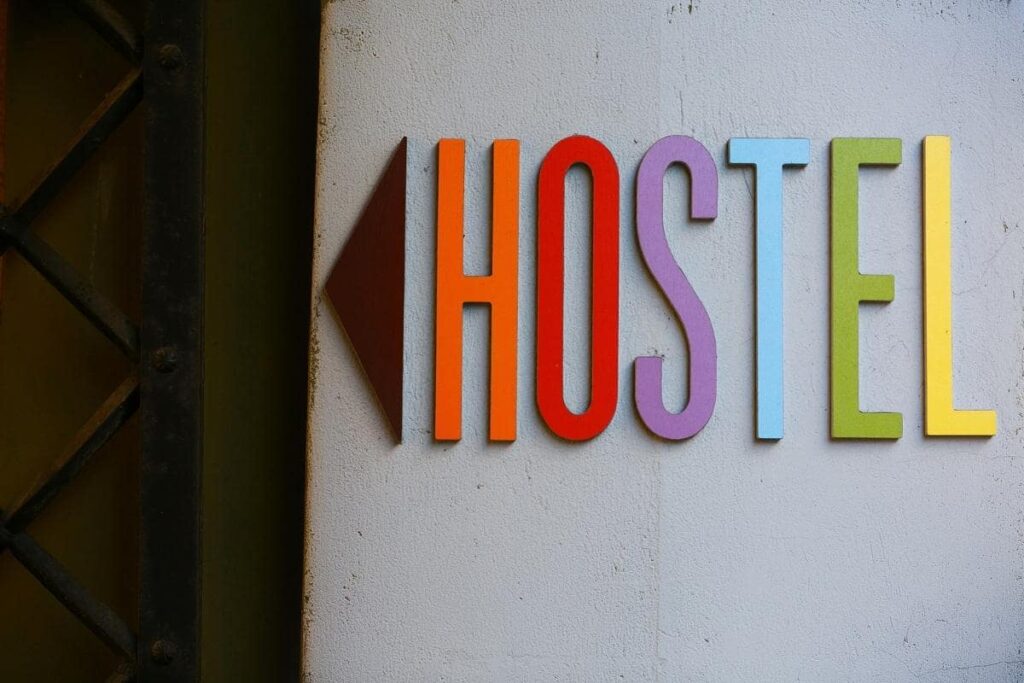
Step 9: Choosing accommodation whilst backpacking Europe
This is the part where I should probably say to get the cheapest room possible and rough it out whilst backpacking Europe, but I won’t tell you to do that.
Instead, I’m going to speak from personal experience here. I have stayed in all types of accommodation (and I really mean, all types).
If you’re starting out, travelling solo or with a friend, I’d strongly recommend a shared room throughout Europe.
Don’t always look for the cheapest – look for the most popular. Highest reviews, shares on social media, tagged photos etc.
If you’re anything like me when travelling (a severe social butterfly), you want to be where everyone is at. Is there anything worse than hostel FOMO?
Do your Europe hostel research. The best kind is speaking to someone else who’s been there before and knows the lowdown on the best spots in town to make hundreds of like-minded pals. (Ahem, shameless plug to myself).
If sharing a room isn’t your thing, I have also been a more ‘private space’ traveller. The first month I backpacked through SE Asia, my best friend and I were huge fans of private rooms (still in a hostel though, not that loaded).
Yes, you do get the privacy and luxury of your own bathroom, but we met about 90% less people and drank about 90% less alcohol because of being so isolated from others.
I’d recommend private rooms if you are a couple, or need a bit of a ‘detox’ from the 20-man dorm room, but shared dorms will always be my go-to for solo travelling.
CHECK OUT THE BEST HOSTELS IN EUROPE HERE!
Best hostels whilst interrailing Europe
One of my best interrail tips is to at least book your first hostel in advance . During the summer months, hostels in Europe will be fully booked. It will be tough finding a good hostel last minute.
Use Hostelworld to pre-book any hostels . They have excellent cancellation policies and you can usually get your money back right up until 24 hours before staying , so if you have any last-minute changes, you have that flexibility.
Whilst I can’t list every single hostel in Europe, these are some of the best, well-known hostels to stay in whilst interrailing. Simply click the link to check prices and availability!
- 🇫🇷 Paris: Generator Paris or The People
- 🇭🇺 Budapest: Maverick City Lodge
- 🇳🇱 Amsterdam: Ecomama
- 🇩🇪 Berlin: The Circus Hostel
- 🇵🇹 Lisbon: Home Lisbon
- 🇦🇹 Vienna: Hostel Ruthensteiner
- 🇪🇸 Madrid: Sungate One
- 🇮🇪 Dublin: Gardiner House
➡ Check out other European hostels here.
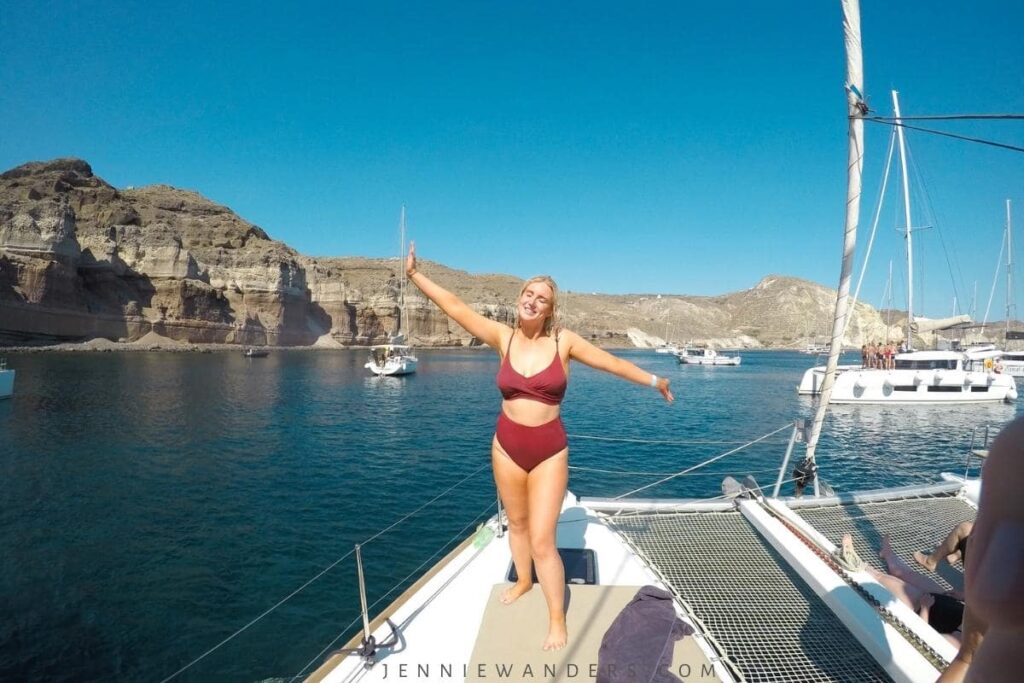
Step 10: Should I buy an Interrailing Pass to travel Europe?
Using an interrailing pass is definitely the easiest way to travel Europe.
Your interrailing pass covers all of your travel, and all of the timetables and routes are online for you to easily access.
The interrailing pass will save you money, as some single trips between destinations can cost between 50 – 100 EUR. If you buy the Interrailing Pass at the start of your trip, you won’t have to spend any more money on travel (unless you wanted to use a ferry or another mode of transport).
Also, if you book individually with local trains, you’re not going to be able to spontaneously change your plans or get any refunds if things go wrong.
If you’re still worried, sit and do the maths and work out whether the pass is right for you or not. Personally, I love the flexibility of the pass and being able to chop and change right up until the last minute.
Still unsure? Check out my Is the Interrail Pass Worth it? An Honest Review and decide for yourself!
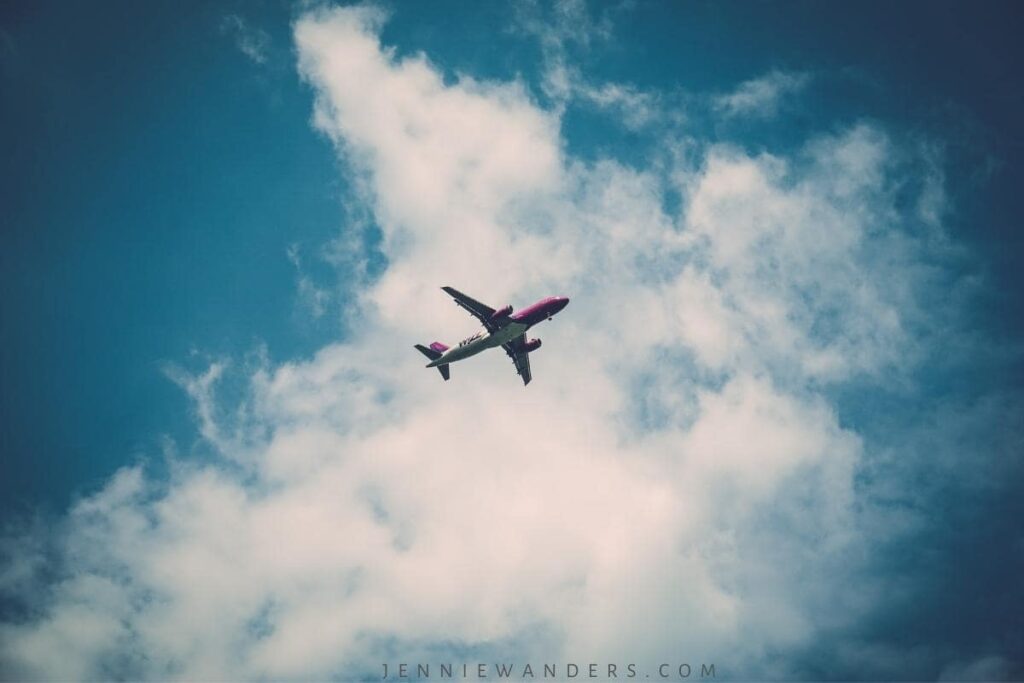
Backpacking Europe: When You Arrive
Yay! If you’ve made it this far in the post, so you must be pretty serious about your trip across Europe. How exciting!
Ok – do this. Close your eyes.
Seriously do it.
Well, maybe read the next bit first and then close your eyes or you won’t actually have a clue what’s going on. (I’m just trying something here).
When you envision your beautiful future in Europe, living out your dreams, what do you picture yourself doing?
- Drinking champagne at the top of the Eiffel Tower?
- Skiing the slopes of the Alps?
- Hiking through the forest in Scandinavia?
- Eating tapas in Barcelona?
- Sunbathing on the beaches of Santorini?
- Watching the sunrise on a boat in Croatia?
Ok, I’ll stop. I’m close to booking another trip to Europe here myself.
Anyway, my point here is – if you’re planning a backpacking trip around Europe, do it the way you want to do it. Drink that champagne, eat that bowl of pasta, hike that forest…you get what I mean.
Don’t miss out on an adventure of a lifetime and regret not doing something for years to come.
Skip buying the dress for your night out in your hometown and save that £50 for a wine tour in Paris. I promise, it’s worth it.
What to see and do in each country really needs research per destination.

Backpacking Europe FAQs
Is it easy to backpack through europe.
Backpacking Europe is easy if you have done the right planning and have enough money to keep you going. Europe isn’t the cheapest of continents, but it is known for its fast transport systems and comfort.
The problem with Europe (or pro, depending on how you’re looking at it) is that it’s so diverse. You can spend weeks backpacking Europe and still feel like you didn’t see half of it. This can be something difficult to wrap your head around, but it just means you’ll need to plan return trips!
Technically speaking, it is easy to backpack Europe due to modern transport systems, clean and modern hostels, clear and direct signposts and easy driving on roads.
Is it expensive to backpack through Europe?
This really depends on how you want to backpack Europe. However, even backpacker hostels will set you back around £20-30 per night (whereas SE Asia can be as low as £4-5 per night).
It is one of the most expensive continents to travel, but with good planning and savvy spending, you can keep costs to a minimum.
Is backpacking Europe safe?
Like travelling anywhere, travelling Europe has its risks and reasons for you to be vigilant. On a whole, backpacking Europe is safe, and even as a solo female, I have never felt ‘unsafe’ anywhere in Europe.
Of course, keep your guard up, don’t walk in quiet places alone at night, and use your common sense when it comes to staying safe. But overall, Europe is a safe place to travel.
How long should you backpack Europe?
This all depends on your budget and what you want to see during your trip.
If you want to see a fair amount of the continent, you’re going to want to plan for at least 4 weeks. When staying in European cities, you’ll want at least 1-2 nights, and locations out in the countryside or in the mountain ranges, you might want extra time to explore a bit more.
Think about what’s important to you, and how well feasible it would be for you to slow travel Europe.
How much should I budget for a month in Europe?
Excluding flights, I would recommend budgeting at least £1500+ for a month travelling Europe.
This includes all accommodations, trips, activities and food. Food alone will set you back a fair bit on your trip, and you don’t want to miss out on bucket list experiences by not having enough money.
Spend some more time saving so you can experience Europe to its fullest.
How do I prepare for backpacking Europe?
- Check your passport is in date, and you have all the relevant travel documents.
- Buy your backpack. My favourite is this Osprey wheeled 65L , because you can roll it when you’re feeling tired!
- Make a packing list. I have a backpacking essential list here!
- Book your flights and look up how you will travel from the airport to your first hostel or hotel.
- Use Pinterest, travel blogs and Instagram to find places you really want to visit.
- Decide on whether or not you want an Interrailing Pass.
- Pack your bag and GO! Don’t think any more about it, just prepare yourself for a European trip of a lifetime.
Backpacking Europe : In a Nutshell
Now, you truly are all set to book that incroyable trip around Europe!
There is a lot of information here and it may be quite overwhelming, so save or share this post to come back to it later.
But GO YOU for getting this far in a 5000-word post. You must really want that dreamy Europe trip.
And guess what? You deserve it!
👀 Do you have something to share about planning a trip around Europe? Want to add something to the post? Comment below!
Happy travelling!
PSSST, I’m a bit of an expert when it comes to interrailing Europe. Check out my posts here:
- Best Backpack For Interrailing: Ultimate Europe Backpack Guide
- Best Time To Go Interrailing (Europe) Guide: MUST-READ!
- Interrailing Spain: ULTIMATE Guide to Travelling Spain By Train
📍LIKE THIS POST? PIN IT FOR LATER! 📍
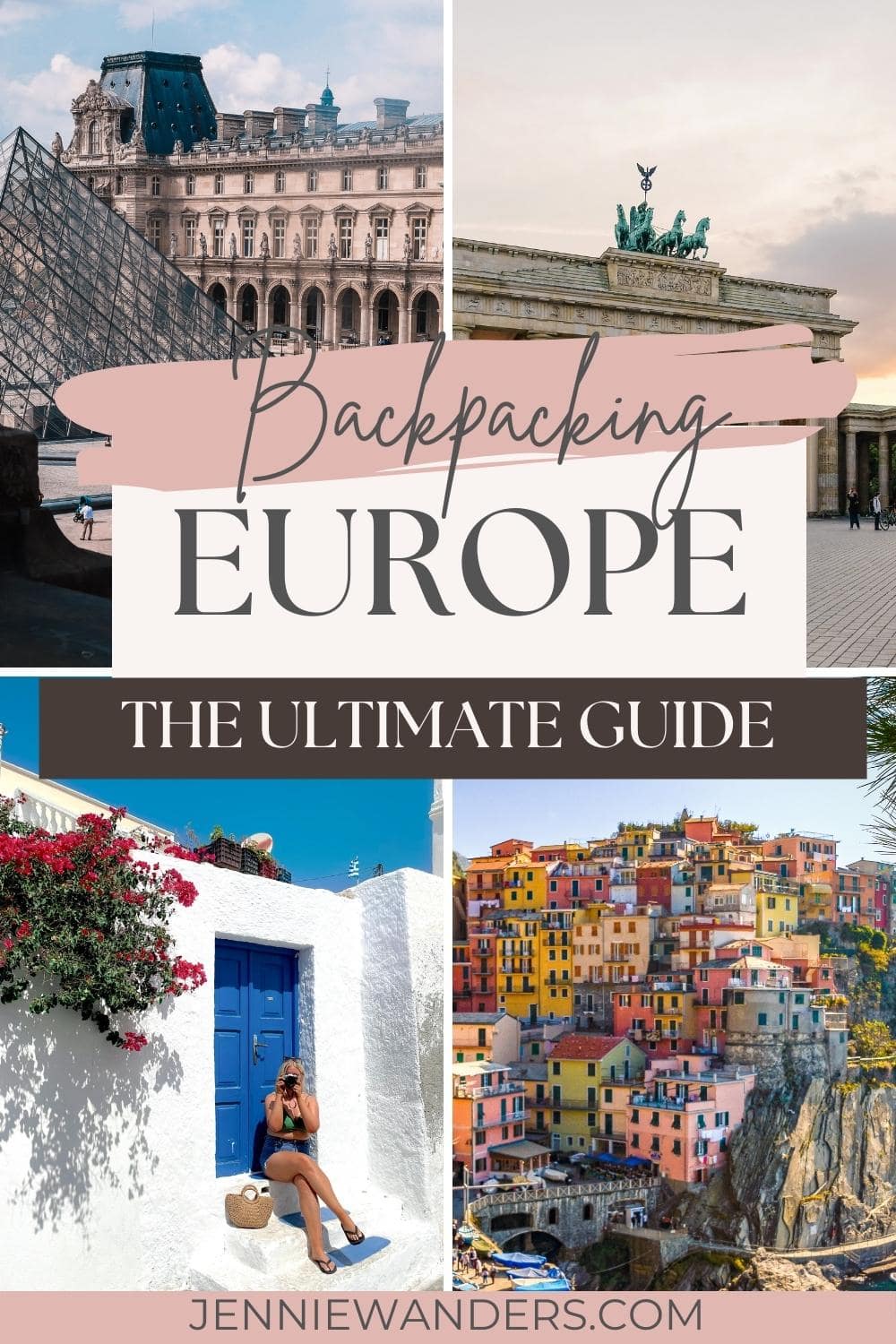
MEET THE AUTHOR!

Hi! I'm Jennie! As a part-time travel blogger based in London, I'm using my 10+ years of travel expertise to encourage & inspire you to step out of your comfort zone through sustainable, mindful and purposeful travel.
If I'm not writing, I'm either reading, drinking coffee or taking a wild swim (all at the same time if I'm feeling impressive).
Similar Posts
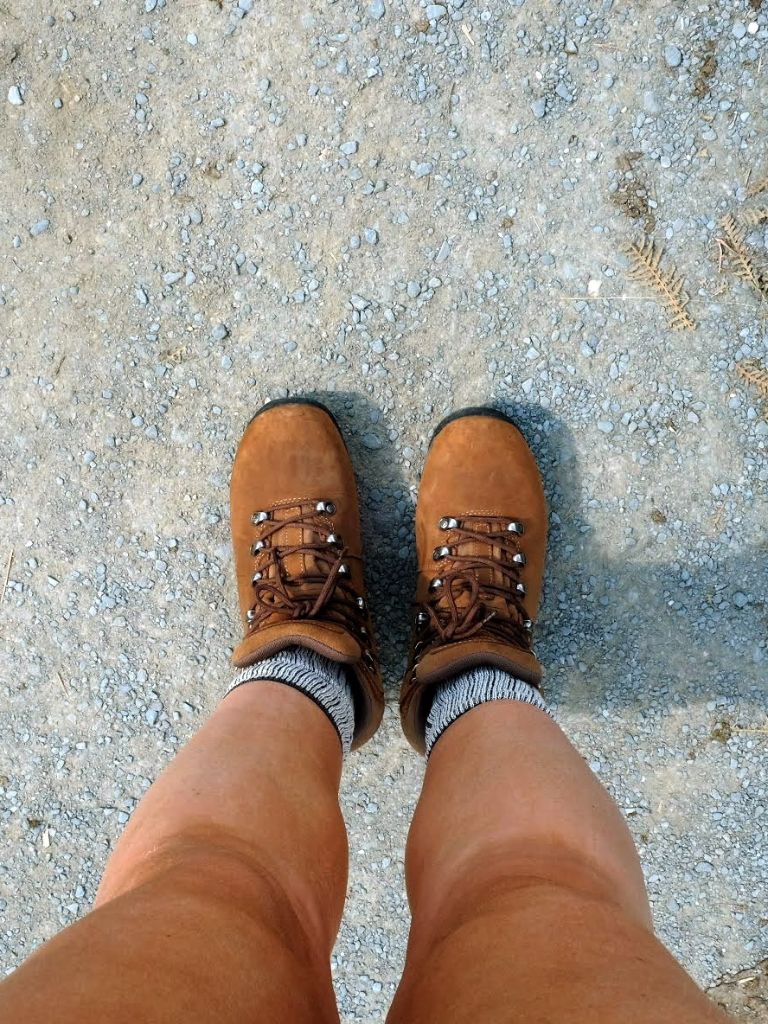
Best Hiking Boots for the Lake District (2023 Review)
Looking for the best hiking boots for the Lake District? This hiking boots guide has reviews, pros and cons and all the details you need to buy your next pair of hiking boots. One of the most commonly asked questions about the Lake District is; “Do you need hiking boots for walks in the Lake…
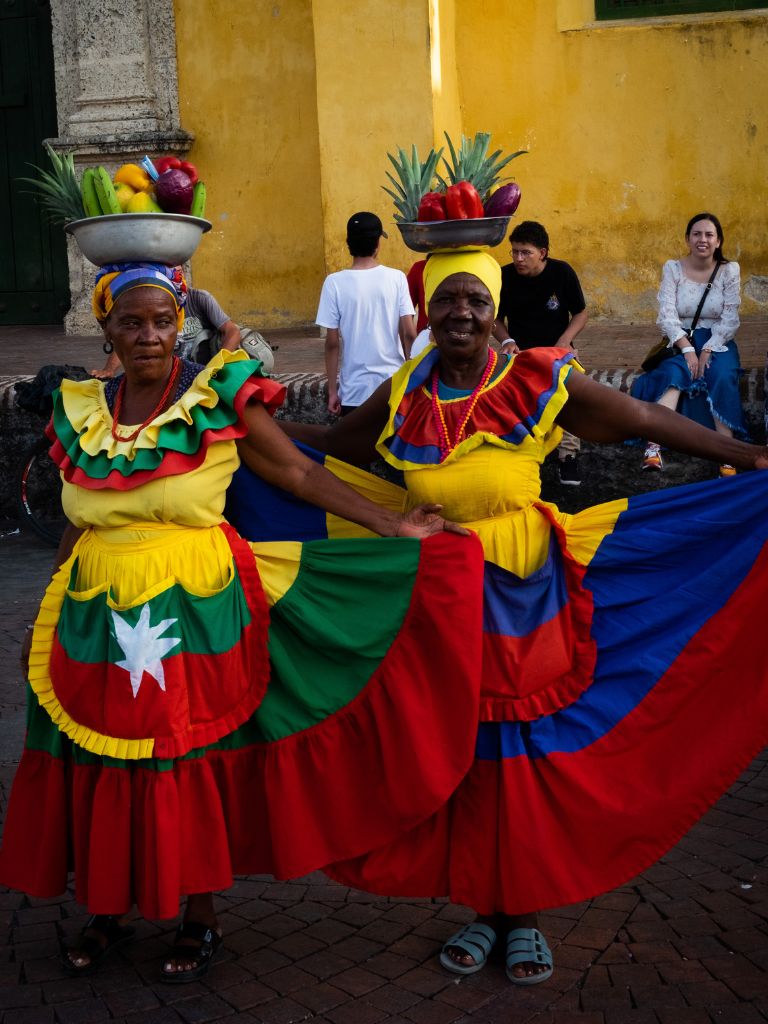
2 Days In Cartagena Colombia: Perfect Itinerary! 2023
Looking for a perfect itinerary for 2 days in Cartagena? You’re in the right place! Cartagena was one of our most memorable places in Colombia (and even in South America), and is known for being a city of vibrance, life, history and culture. With its traditional Spanish colonial buildings, street art painted by talented local…
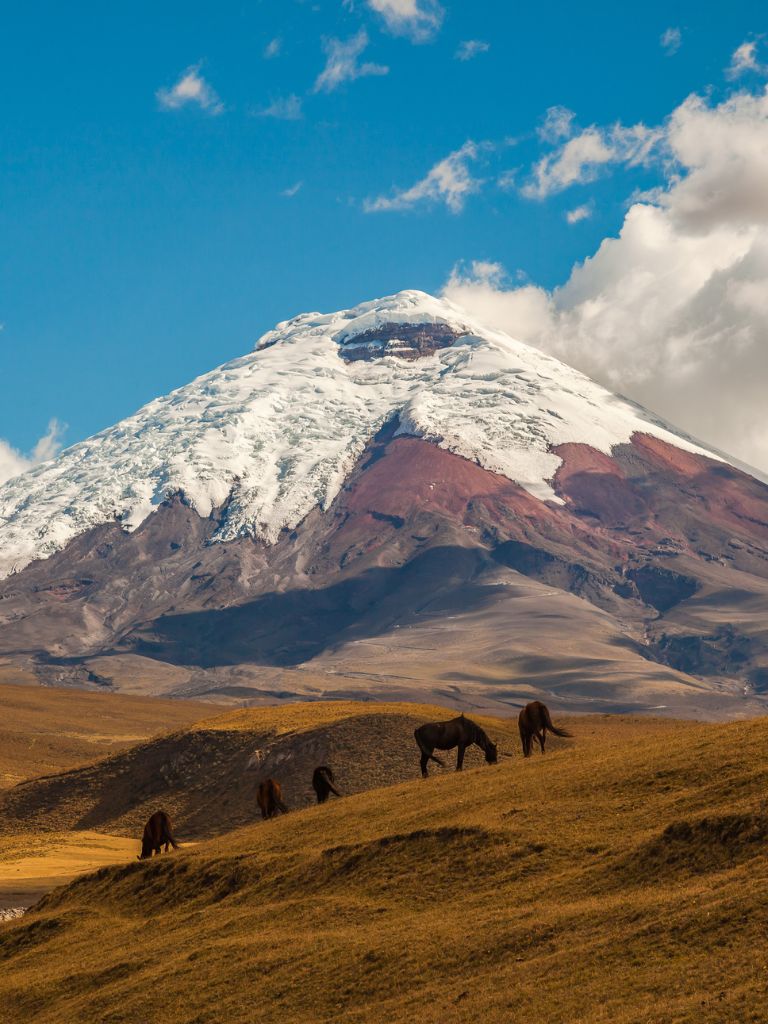
10 Days In Ecuador: Route, Itinerary & Tips (2023)
Need some help planning 10 days in Ecuador? You’re in the right place! I know how overwhelming planning trips to countries you’ve never been to can be, so I’ve put together the *perfect* route for 10 days in Ecuador. Whilst some destinations in Ecuador are cheaper than others (cough cough, the Galapagos), Ecuador is one…
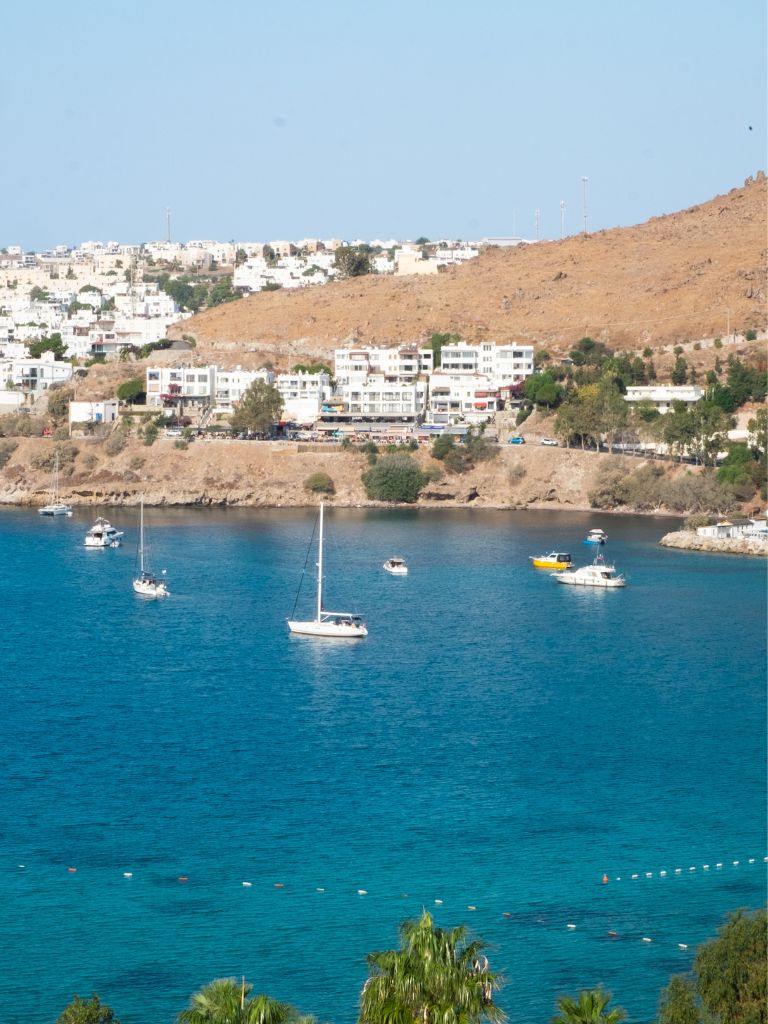
Bodrum Travel Guide: A Turkish Gem by the Aegean Sea
Bodrum is a hidden gem along the beautiful Turkish coastline. Before we visited, we knew very little about what Bodrum had to offer, and we were simply blown away by how beautiful it was! Located on the southwestern coast of Türkiye, Bodrum is a stunning destination that combines ancient history and culture with the beauty…

Best Time To Go Interrailing in Europe: Complete 2023 Guide
Looking for the best time of year to interrail Europe? You’re in the right place! Europe is a continent of diversity, and the weather is no exception. From stifling hot summers to 2m thick snow in winter, when you choose to go interrailing in Europe will mainly depend on the weather you would like to…
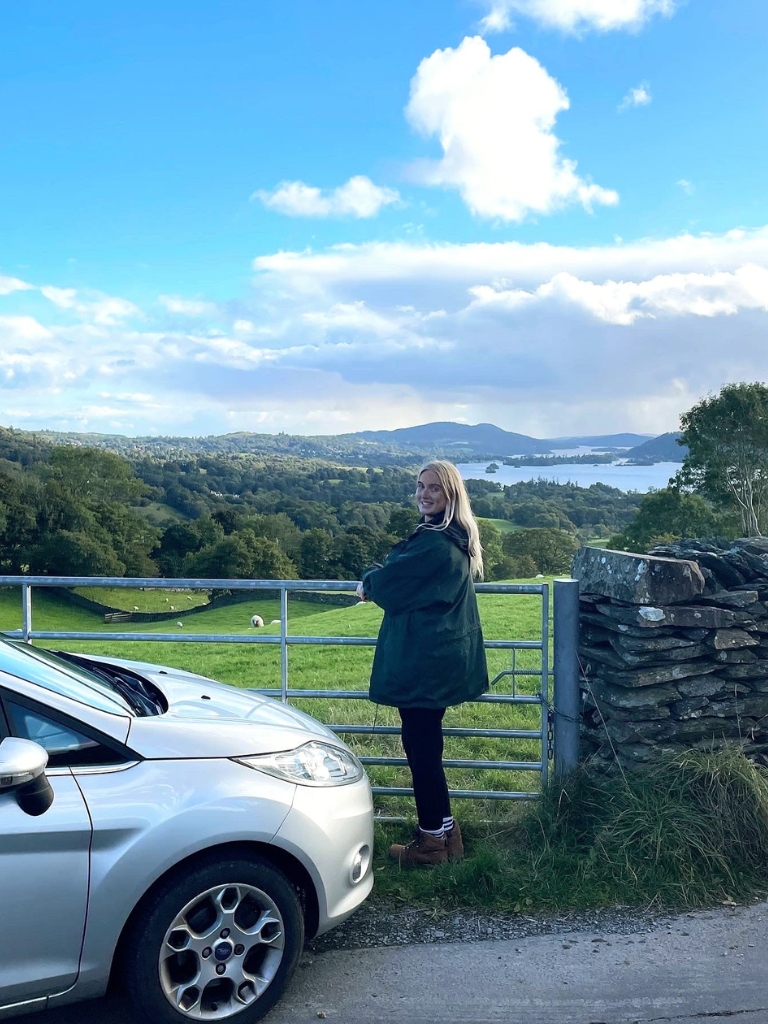
Lake District Itinerary 1 Day Plan: The BEST Day Trip!
Even if you only have a day to explore the Lake District, it’s still a chance to see some of the most beautiful scenery England has to offer. The 2362 square kilometres of English countryside is famous for its mountains, lakes, hiking trails, and traditional English villages, and it is undoubtedly one of the most…
Everyone would like to travel to Europe, especially Paris. You can travel by a commercial plane or via private jet. If you want convenient and more safe travel, I think choosing a private jet is a good choice.
Hi Melissa! Unfortunately, most of us can’t afford a private jet, especially my predominantly backpacker audience 😅 however, I will leave your post here just incase anyone can! (And hopefully they take me with them! Haha)
Comments are closed.
Deals of the Week Captivating Costa Rica Up to 50% OFF
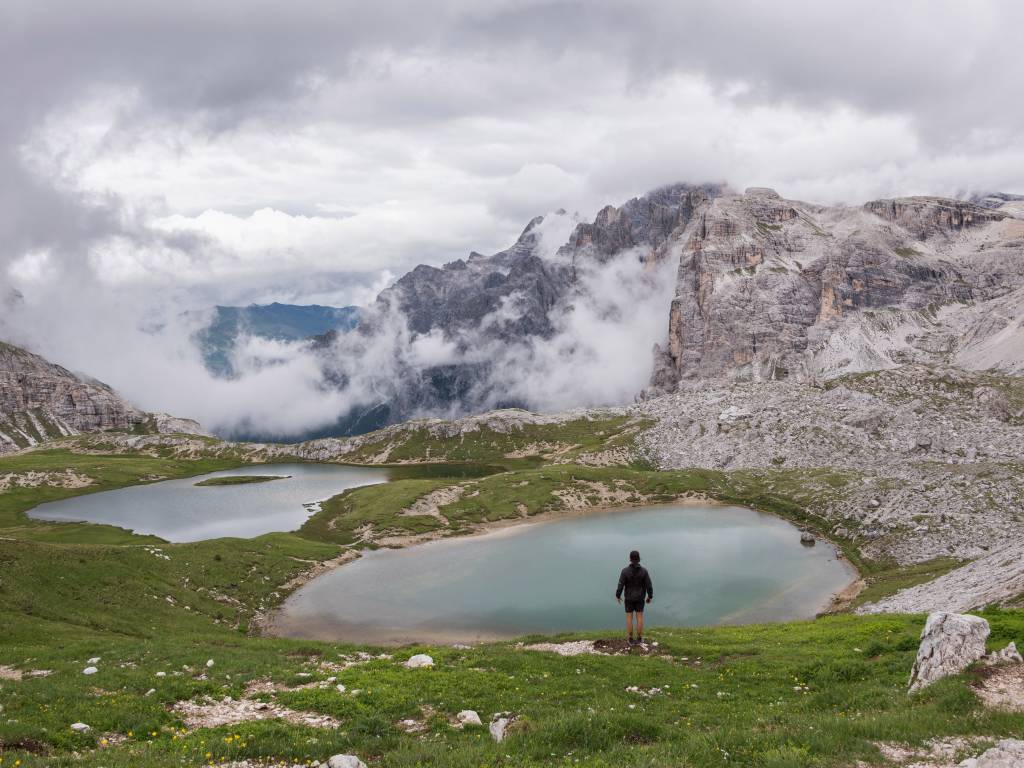
Europe Backpacking Tours
If you want to immerse yourself in different cultures and experience some incredible adventures along the way, a Europe backpacking tour should be at the top of your bucket list. Hop around the continent or explore a single country like Greece — either way, this style of travel delivers the perfect balance of must-see sights and once-in-a-lifetime activities!
6237 reviews on
Backpacking Europe routes
Backpacking northern europe.
If you want to travel slightly off the well-trodden tourist trail, Northern Europe might just be the perfect option for your European backpacking adventure. Destinations in this region — including Scandinavia, Finland , Iceland , and the Baltics — boast some of the most beautiful, diverse, and otherworldly landscapes on the planet. Discover the best of these underrated gems on the following tours: Iceland Express Duration: 5 days Highlights: Explore the Golden Circle route, experience the sheer power of the Gullfoss (Golden) double waterfall, soak in the famous Blue Lagoon Scandi Highlights Duration: 7 days Highlights: Explore the city of Olso, experience Stockholm by bike, see the Little Mermaid statue in Copenhagen Absolute North Duration: 12 days Highlights: Soak up the scenery at Nyhavn in Copenhagen, marvel at the gorgeous fjord coast of Norway , explore Tallinn’s medieval centre Iceland’s Magical Northern Lights Duration: 6 days Highlights: See the geothermal fields of Geysir and Strokkur, gaze at the sky in search of the Northern Lights Explore more Northern Europe backpacking tours here .
Should I backpack Europe?
- Backpacking is a fun and affordable way to make your Europe travel dreams a reality
- With efficient and reliable trains, planes, and buses galore, it’s relatively easy to travel across the continent
- Staying at hostels means you’ll end up meeting new people and making lifelong friends — even if you’re travelling solo
- Carrying your belongings on your back gets tiring fast
- The crowds and queues at major attractions can quickly ruin your travel experience
- Certain cities, such as Barcelona and Paris, are notorious for scams and pickpockets, so you’ll need to be extra cautious when travelling to these destinations
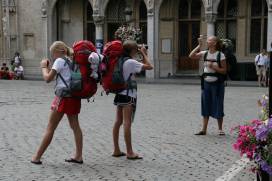
More about Europe
- Backpacking tours & trips
- Trekking companies in India
- Nepal trekking companies
- Camino de Santiago routes
- Patagonia trekking companies
- Climbing Mount Kilimanjaro
- Permits for Mont Blanc
Contact our Travel Experts

+1 844 311 8331
24/7 Support
Our team of experienced tour specialists have travelled to hundreds of countries around the globe and have decades of first-hand travel experience to share. Contact us now to have all of your tour-related questions answered!
More destinations for backpacking
- Asia (2356)
- Nepal (2238)
- East Africa (821)
- Africa (765)
- Tanzania (729)
- Europe (715)
- Western Europe (605)
- South America (603)
- Latin America (535)
- Mediterranean (462)
- North America (355)
- Far East (266)
- Central Europe (225)
- Balkans (212)
- South East Asia (210)
- Indochina (195)
- Vietnam (165)
- West Africa (151)
- North Africa (143)
- Morocco (139)
- Italy (111)
- Austria (88)
- Bhutan (83)
- Australia (82)
- Middle East (71)
- Australia/Oceania (71)
- Nordic / Scandinavia (59)
- Argentina (58)
- Albania (57)
- UK and Great Britain (55)
- Greece (53)
- Eastern Europe (48)
- Canada (45)
- Uganda (44)
- Ecuador (41)
- Argentina and Chile (40)
- Austria and Germany (40)
- Germany (40)
- 5 stans (39)
- Central Asia (39)
- Portugal (37)
- France (37)
- Iceland (36)
- Turkey (35)
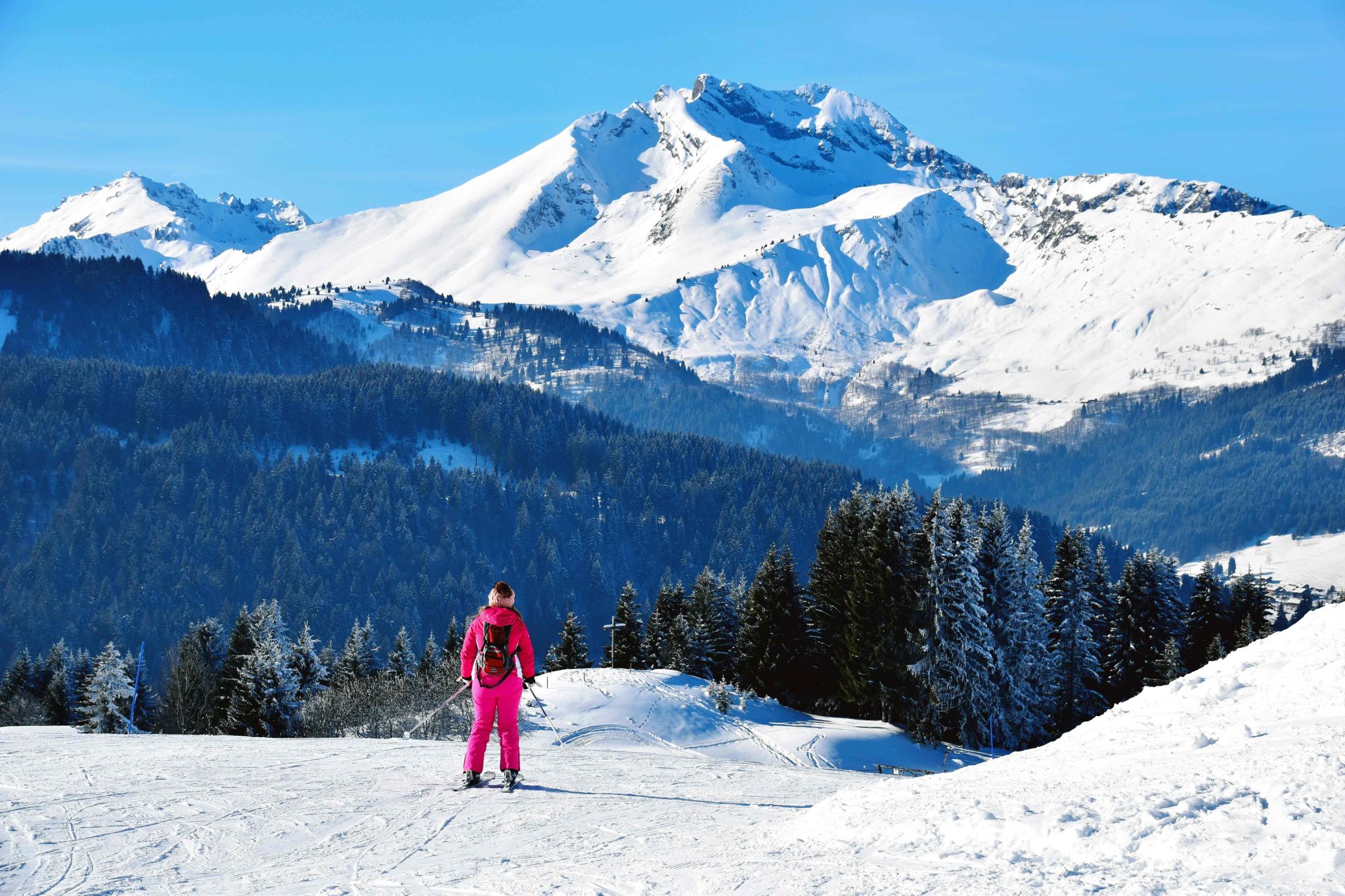
The Best Winter Activities in Europe
Mary Novakovich

Patagonia Travel Guide
Jehangir Irani

The Seven Hardest Hikes in the US, Ranked
Jesse Warner

Top Six Tours to Stunning Alberta
Felipe Rosen Mosquera

40+ Super Helpful Travel Tips for Backpacking Europe
Last Updated: January 26, 2023
*FYI - this post may contain affiliate links, which means we earn a commission at no extra cost to you if you purchase from them. Also, as an Amazon Associate I earn from qualifying purchases. Check out our Privacy Policy and Disclosure. for more info.
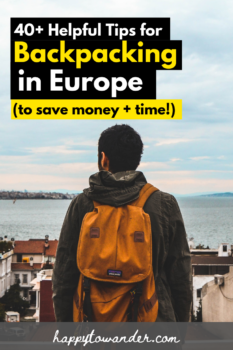
Backpacking Europe for 1.5 months when I was 20 changed a lot of things for me.
There was of course my plumper waistline and newfound devotion to Belgian beer, but more importantly, I had some pretty big epiphanies about traveling and money.
Now, don’t get me wrong – traveling is a huge expense, but for the longest time, I always saw it as impossibly expensive.
I never knew that there were alternatives to hotels, I didn’t know it was possible to cook for yourself, and genuinely, I thought airplanes were the only way you could travel places.
Thankfully, I picked up a lot of tips and tricks along the way, and much wiser for it. I may no longer be a backpacker, but I did it for years and picked up plenty of golden tips for backpacking in Europe along the way.
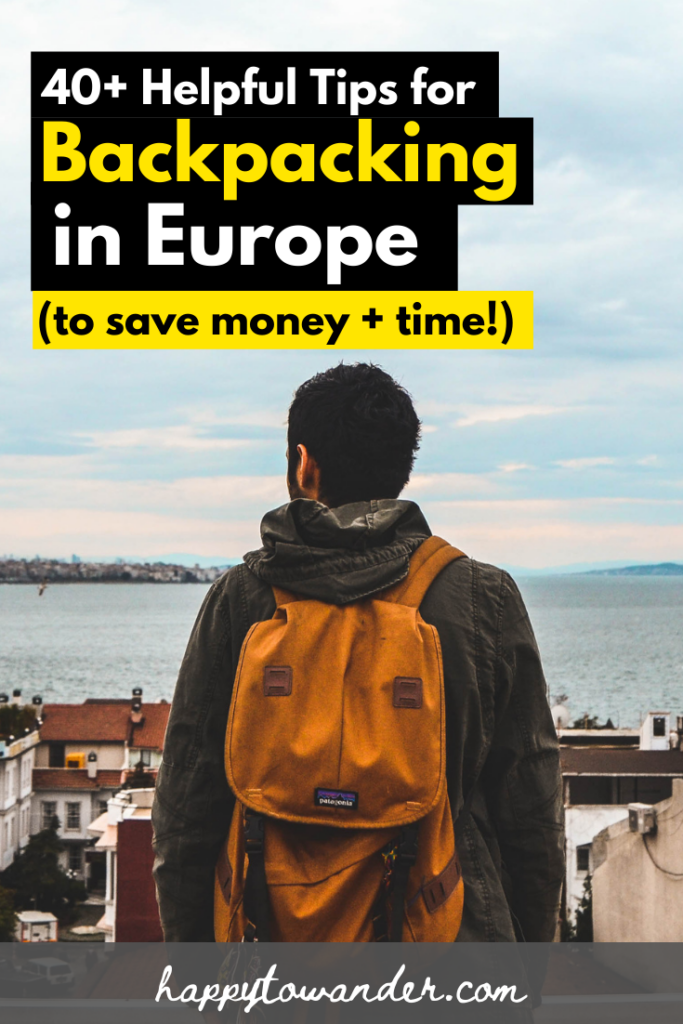
Save this list of Europe backpacking tips for later!
You’ll be very glad you did.
So, here are some of my best travel tips for backpacking Europe, divided into helpful categories.
In this post, I’ll be sharing:
- My top travel planning tips for backpacking Europe
- How to save money on food and drink when backpacking in Europe
- How to save money on attractions when backpacking in Europe
- Safety tips for backpacking Europe
- Packing tips for backpacking Europe
- Other random handy tips for backpacking Europe
I hope you find it all helpful!
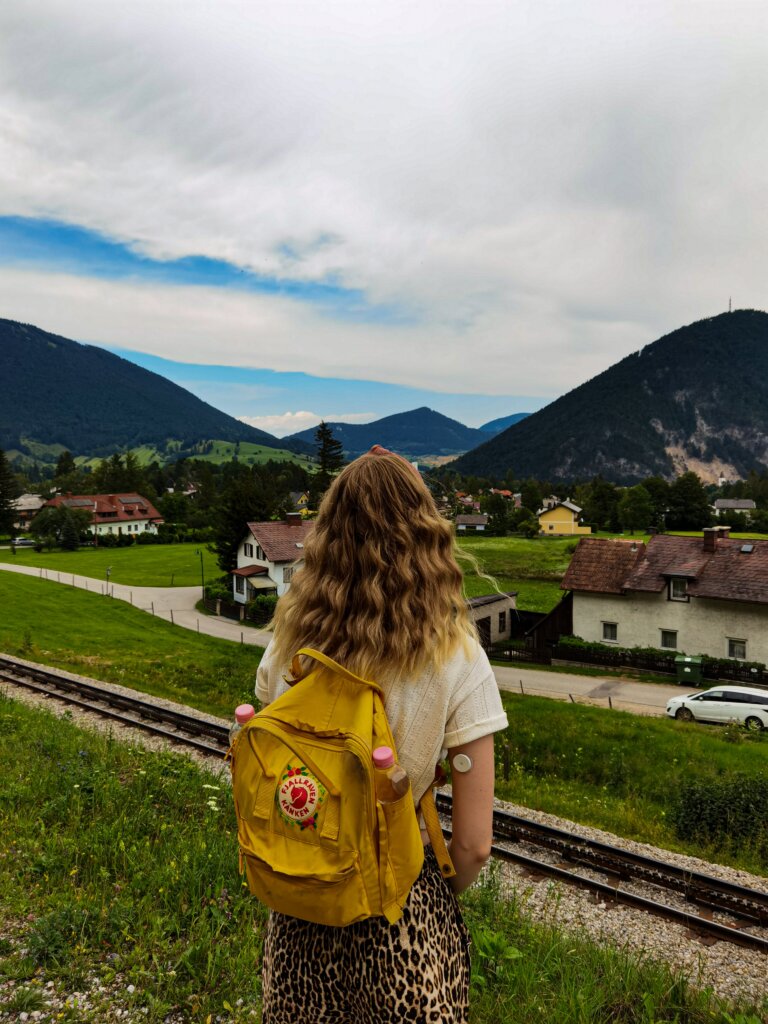
Travel Planning Tips for Backpacking Europe
First, let’s tackle Europe backpacking tips to keep in mind before you leave – i.e. when you are planning your trip with tips for planning your itinerary, flights, and accommodation.
Understand the Schengen Zone and how long you’re allowed to stay in Europe
There’s a common misconception among first-time backpackers that all of Europe has open borders, or that you can stay as long as you want.
This is not the case.
The area in Europe with free movement is known as the Schengen Zone, and includes:
- Czech Republic
- Liechtenstein
- Netherlands
- Switzerland
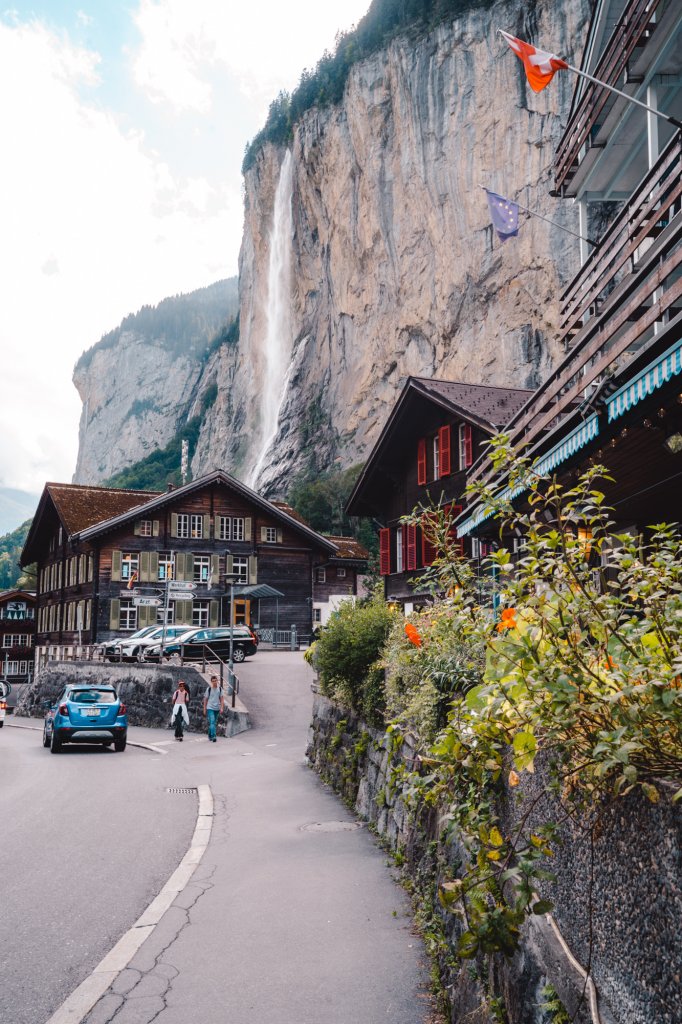
How long you can stay depends on the kind of visa you have, but for Canadians and Americans for example, your allowance is 90 days within a 180 day period.
This is kind of confusing, but the simplest way to look at it is: if, by the time you fly home, you have not stayed more than 90 days in the Schengen Zone in the past 180 days, you’re good. Anything more, and you risk getting fined or (at worst) blacklisted from the Schengen Zone.
So how long can you really backpack Europe for without getting a longer-term visa?
Honestly, if you’re crafty with your Schengen Zone allowances, you can even stay indefinitely so long as you alternate between Schengen and non-Schengen Zone countries.
Non-Schengen Zone countries include:
- Bosnia & Herzegovina
- North Macedonia
- United Kingdom
So, to stay long term, you could do 90 days in the Schengen Zone, hop around non-Schengen countries (e.g. maybe a Balkans tour!) for 90 days and then re-enter the Schengen Zone.
NOTE: It is very important to note that your Schengen allowance doesn’t reset once you leave. Again, the best way to look at it is to see whether in the past 180 days, you’ve spent more than 90 days in the Schengen Zone.

Don’t try to cover the entire continent in one trip
Unless you’re devoting months or years to your Europe backpacking trip, there’s no way you can cover the entire continent in one go. I’ve been living here for 5+ years and even I haven’t been everywhere!
Remember, Europe isn’t going anywhere, and you can always come back.
The last thing you want to do is over-extend yourself on your itinerary by moving huge distances constantly. This will also be more expensive…
So, the smartest way to plan your itinerary is to choose a few destinations close-ish together.

Plan your trip for shoulder or off-season
I know that “summer in Europe” sounds super romantic, but trust me… if you’re visiting the most touristy cities in Europe, it’s actually not romantic at all. In fact, it’s pretty sweaty, crowded, and gross.
One of the top Europe backpacking tips I can give you is to plan your trip away from peak-periods. Usually peak periods would be Easter, summer, and Christmas break. During these times, crowds and prices skyrocket.
In my opinion, May and September are some of the best months to travel around Europe. Spring in Europe is also amazing. During these times, the weather tends to be pleasant, but you’ll be shielded from peak season crowds.
NOTE: Peak season depends on your destination, so be sure to research busy periods for wherever you’e going.
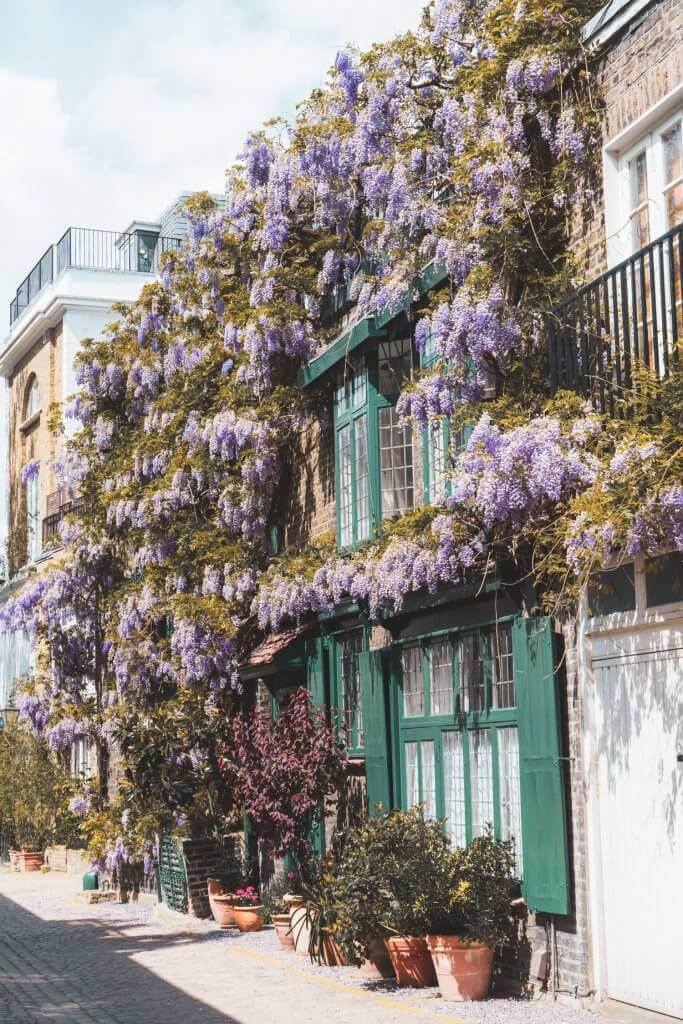
Alternate between busy and chill destinations
One of the biggest mistakes I made during my first backpacking trip in Europe was I crammed SO many huge cities into my itinerary, one after another.
When your itinerary is nothing but European heavyweights like Paris, London, Amsterdam, Rome and Florence… yikes, you’ll be sightseeing your eyeballs off daily with zero chance for breaks.
So, here’s a very important Europe backpacking tip when planning your itinerary: try to space out the “big” cities with chiller destinations, maybe nature or beach breaks so you have time to rest up before sightseeing like the Energizer bunny once more.

Understand where your money goes further
Most first-time backpackers to Europe will go to the most famous cities: Paris, London, Amsterdam, etc.
I’m guilty of this too! My itinerary was full of all the names I knew best.
BUT, of course, these cities are very expensive. If you’re truly backpacking Europe on a budget, it would be in your best interest to mix up your destinations so you’re not visiting only wallet-draining places.
Here are some areas to avoid/minimize time in if you’re backpacking Europe on a budget:
- Switzerland – So beautiful, but so, so expensive
- Nordic countries like Norway, Sweden, and Finland
- Iceland – Again, stunning, but very pricey
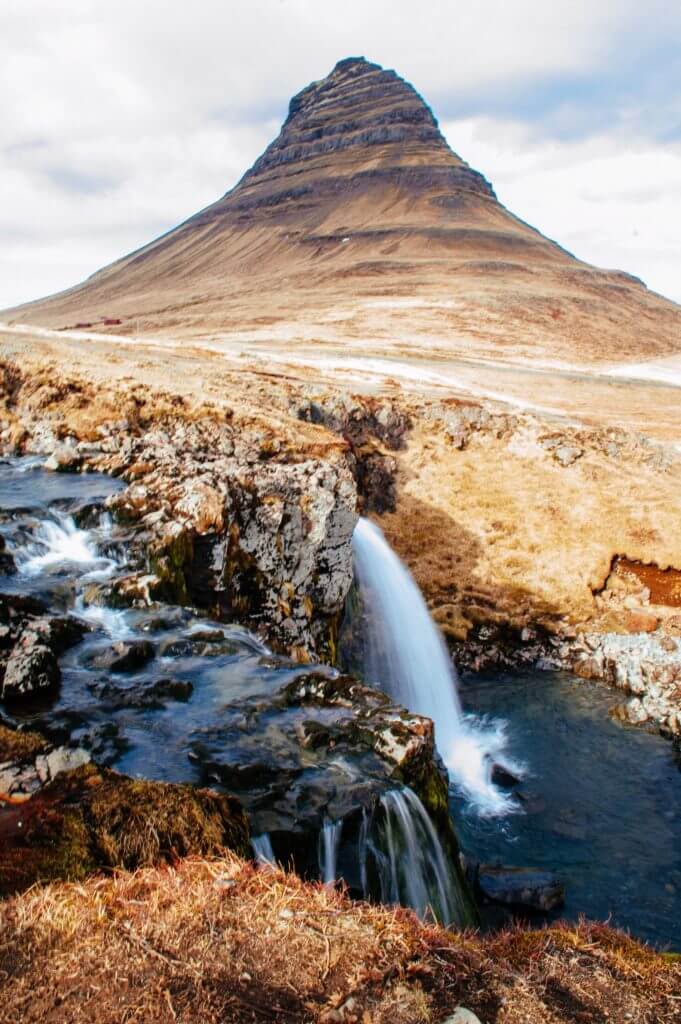
Alternatively, here are some cheaper travel destinations in Europe to consider:
- The Balkan countries, like Bulgaria , Albania, Serbia, Montenegro, North Macedonia & Kosovo
- The Baltic countries, like Lithuania ( Vilnius is amazing!), Estonia, and Latvia
Of course, it’s possible to do any destination on a budget, but it all depends on how willing you are to subsist off bread and salami 😉

Know the tricks to get cheap airfare TO Europe
Hands down, if you’re coming from overseas, your biggest expense when backpacking Europe is going to be your flight there (and back, assuming the croissants don’t trap you here for good).
I’ve already written a full guide to how to find cheap flights to Europe , so read that for more tips.
But, here are some general tips to help you score cheap flights to Europe for your backpacking trip:
- Use Google Flights to compare costs flying into different airports
- Use Skyscanner to find the cheapest possible option from your departure destination
- Use deal sites like Secret Flying to pounce on cheap flights/error fares when they pop up
- Use a VPN like Private Internet Access to search flights from different locations, to see if you can find a better deal
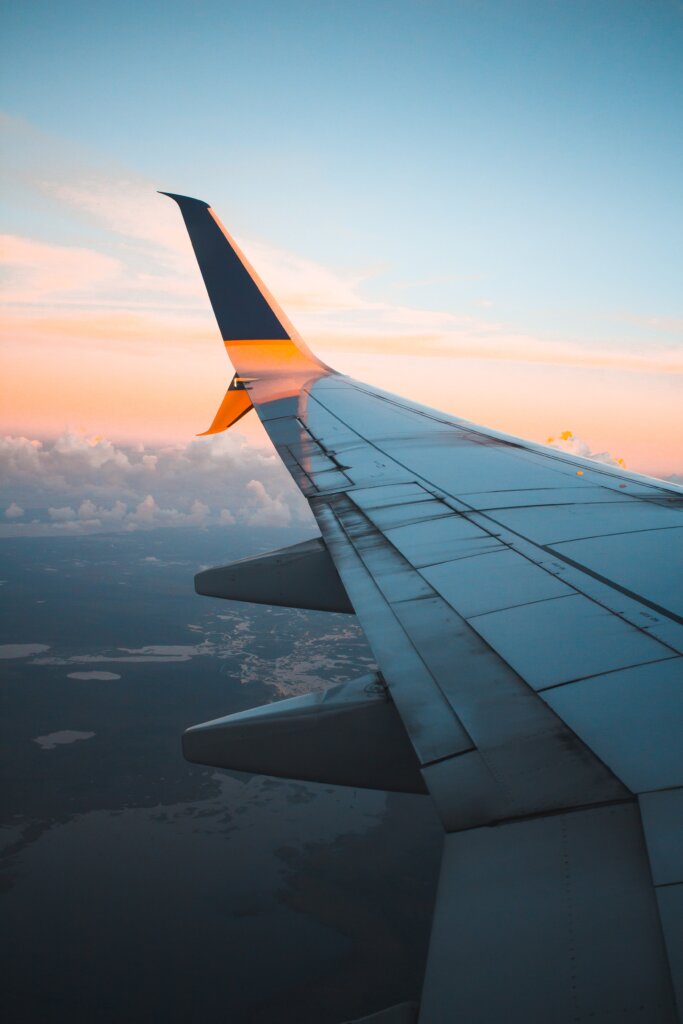
Ensure you have proof of onward travel
“Proof of onward travel” is a very important consideration that many first-time backpackers forget about.
Long story short, it’s proof that you’re leaving your destination before your visa or allowance expires. This is usually in the form of a return ticket, or a ticket elsewhere to prove that you’ll be leaving at some point and not staying for longer than your documents allow.
I know that one of the most intriguing perks of backpacking Europe is the spontaneity, but it’s VERY important that you can prove to the airline employees (or passport control officers) that you intend to leave before you overstay your visa allowance.
I was once almost barred from boarding a flight to Germany because my return flight was after the 90 day Schengen Zone allowance, and I didn’t have proof I would be leaving the Schengen Zone before the 90 days was over. I intended to spend some time out of the Schengen Zone to ensure I never overstayed, but they demanded proof… so yes, they do check!
Want to learn more? I have a full article if you want to read more about proof of onward travel and my experience lawyer-ing myself out of that (very awkward) situation.
Get to know the cheapest ways to travel around Europe
After you get to Europe, transportation options are abundant (and for the most part) very affordable.
I’ve written a full guide on the cheapest ways to travel around Europe , but here are some of the options available to you:
- Budget airlines like easyJet , RyanAir or WizzAir : No frills and loaded with hidden costs, but potentially very cheap if you’re smart and read the fine print
- Buses like Flixbus : Perfect for shorter trips & if time is not an issue as punctuality with buses can be a total crapshoot
- Rail passes like Eurail : Ideal if you want flexibility and the nice bucket list experience of traversing some of Europe’s most scenic train routes , but usually not the cheapest
- Renting a car: Often not cheapest by a long stretch (here is my guide on how much a rental car in Europe costs ), but possibly worth it if you’re travelling with many companions and plan to visit places where public transport isn’t well served
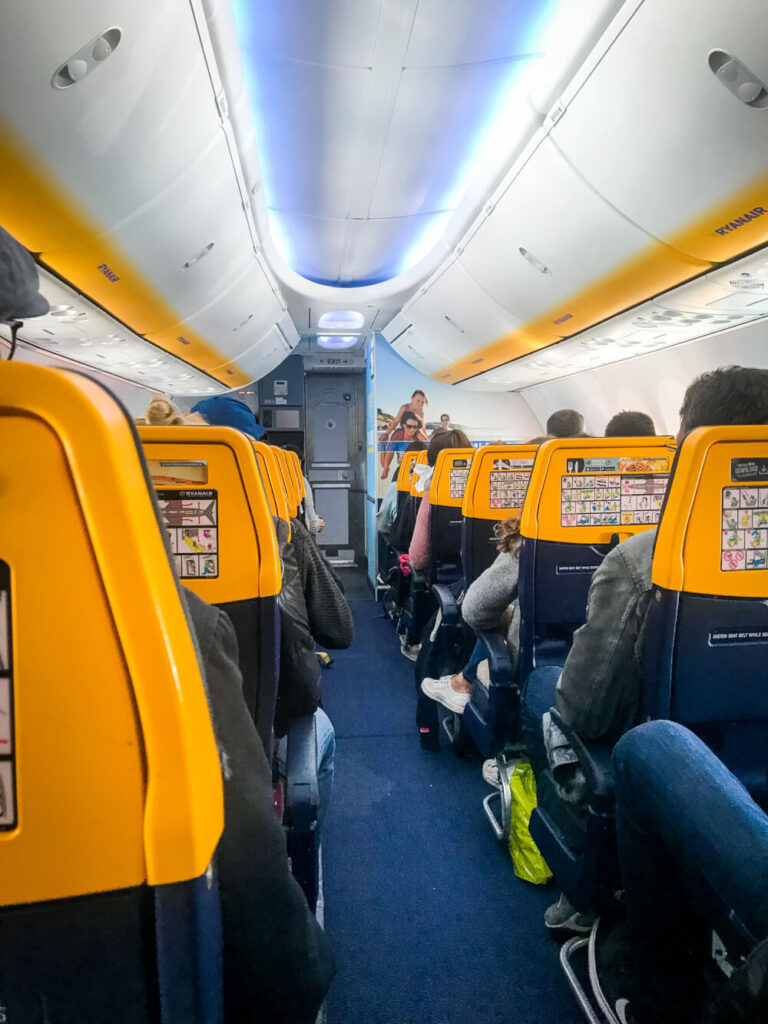

Learn how to book the perfect hostel every time
By and large, the most common accommodation option for backpackers are hostels.
If you are new to hostels, I have written this guide in how to book the perfect hostel every time, with tips on how to gauge safety and other things based on reviews.
My favourite tools for booking hostels is Hostelworld – they let you sort by price and rating very easily, and often you can just pay a small deposit rather than the entire payment upfront.
A few things to consider when booking hostels for backpacking Europe:
- Age limits : If you want hostels for the social aspect of meeting people your age, definitely book a hostel with an age restriction, otherwise you’ll often get school groups with teenagers or older travelers not as interested in mingling
- Free breakfast/activities: When you’re backpacking, every penny counts!
- Cheap hotels masquerading as hostels: Often you’ll find budget hotels that label themselves as hostels which aren’t geared as much to the social aspect of things… so be sure to read reviews to get a feel for the the social aspect of things.
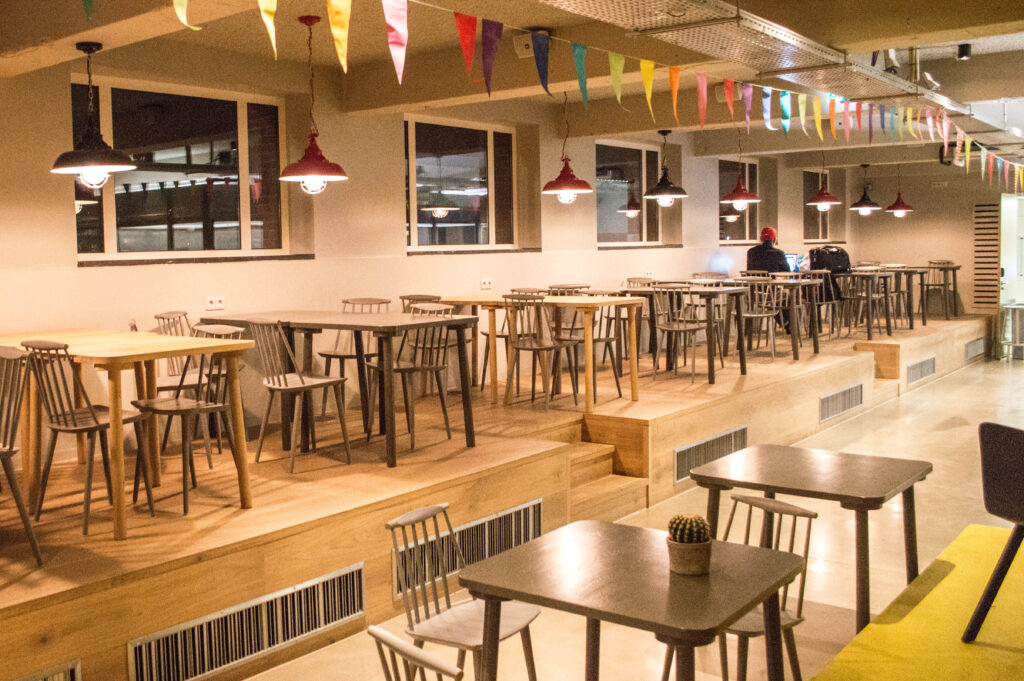
Book hostels with freebies
Another excellent way to save money while backpacking Europe is of course to exclusively book hostels that offer freebies like breakfast or tours.
A lot of hotels and guesthouses will provide free meals to their guests, and I’m not just talking about breakfast!
I stayed at a hostel in Prague that had a free dinner every night, and at others that offered free dinners a few times per week. Not only is this cost-effective, it’s a great way to meet new people too.
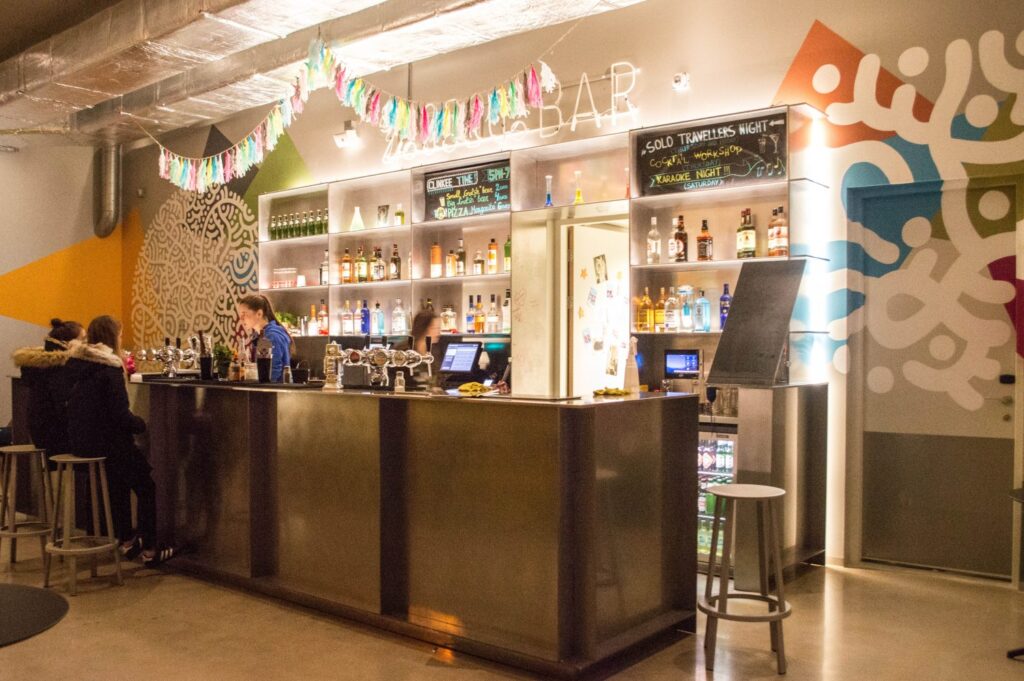
Try booking hostels and accommodation directly for more free perks
This is a secret tip that most travel bloggers leave out because it can cost them affiliate commissions, but since you’re here, I want to give you the best of the best tips for backpacking Europe.
99% of the time, when you book a hostel or even hotel directly (i.e. not through a booking platform like Booking.com or Hostelworld ), they will give you some kind of discount or additional perk. This is because properties would much rather you book directly with them, since those platforms often take a sizeable cut of the booking.
In the past, I’ve seen tons of perks for booking hostels directly, including…
- Ordinary discounts (often 10% off)
- Free towels
- Free activities
- Free bedsheets (in properties where they cost extra)
So, if you really want the best deal possible when you’re booking hostels and backpacking Europe, then make sure you book with properties directly (i.e. on their website or by the phone).
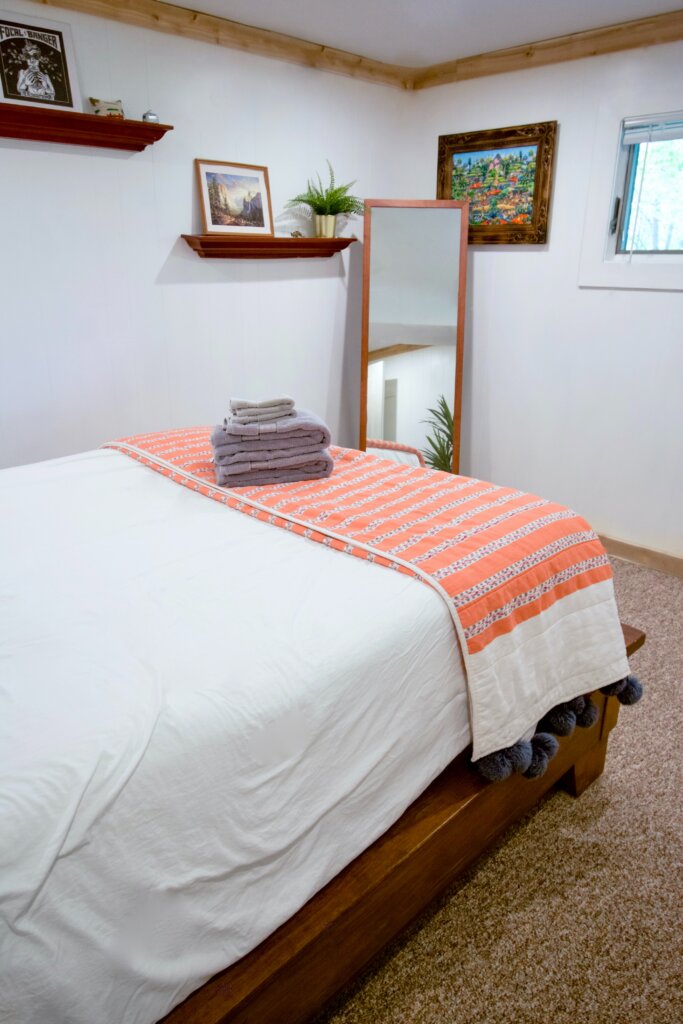
Learn more about AirBNB
If hostels aren’t your thing, or if you’re travelling with a group and want you own privacy, then AirBNB is probably the next cheapest option.
Besides being cheaper per night than hotels, there are also many other money saving perks that come with an apartment rental such as being able to cook for yourself, laundry facilities, etc.
If you’ve never stayed at an AirBNB before, don’t fret. If you take the necessary safety precautions, they are a very safe and pleasant way to travel.
Check out my guide to AirBNB for First Timers for more information.

Get an official student card
Here’s a very important Europe backpacking tip for students. If you’re a student, you should know a) that caffeine dependency WILL catch up with you at some point and b) there are a LOT of amazing discounts available to you when you’re backpacking Europe.
Most major attractions will offer student rates/discounts, and often transportation will be cheaper too if you can prove you’re a student.
Unfortunately, just having your student card from your own school isn’t enough, because these can be easily forged and every school’s looks different. An ISIC Card however is an internationally recognized student ID that costs about twenty bucks, but will save you at least that much in discounts.
I’d recommend getting one for sure if you plan to backpack Europe for several weeks/months because the discounts it can unlock are amazing.
NOTE: Your regular Student ID can sometimes work, but places are getting increasingly strict and asking for ISIC cards specifically.
Download all the right apps before you go
There are a variety of amazing apps that can help you a lot when you’re backpacking Europe.
I’ve previously outlined a full list of the best travel apps for Europe , so read that guide for a comprehensive roundup.
But, here are some must-have apps that are all free:
- Omio: A search app that lets you quickly compare/book transport options from Point A to Point B, including buses, trains, and flights
- Google Translate: Absolutely essential for countries where you don’t speak the language. Best of all, you can save languages for offline use so you don’t use data
- Google Maps: A must-have for getting around easily and saving places you want to visit
- TripIt: An organization app that collates all your hostel/transport bookings, attraction tickets, etc. all in one place by scanning your email inbox for confirmations
- PIA: My VPN of choice – great for having on your computer & phone so you can browse securely on public WiFi networks & also spoof your geographical location to access restricted sites, or country-specific streaming offerings.

How to Save Money on Food and Drink When Backpacking in Europe
Next to hard costs like accommodation and transport, food & drink is probably the biggest expense for any backpacking budget. So, here are some Europe backpacking tips for saving money on food and drink!
PS: You might want to read this article on ways to save money for travel as well.
Remember grocery stores are your best friend
I have a geeky obsession with visiting grocery stores everywhere I go – it’s such a fun insight into different products/foods, plus they can help you save a LOT of money.
Snacks, drinks, water and pretty much everything will be cheaper at a grocery store vs. kiosks, takeaway joints or or convenience shops.
So, if you feel like you need fuel throughout the day, buy some goodies in advance so that you don’t make hungry and impulsive spending decisions.

Master the art of the picnic
Restaurants are expensive, no doubt, which is why you’ll quickly learn when backpacking Europe that picnics are your best friend.
Grabbing grocery store meals or street food is comically cheaper than eating out, so haul your goodies to a park and enjoy. This is also an excellent opportunity to people watch and soak in the unique atmosphere of wherever you are.
To be even more cost-effective, consider splitting picnic costs with a friend. A hunk of cheese and a huge baguette can feed more people than you think!
Or, really, when in Europe, bakery treats are always a good idea:

Book accommodation with a kitchen
This is one of the most important Europe backpacking tips I wish someone had told me. If you’re really looking to cut your food costs, you can always prepare your own meals. It might seem obvious, but newbie-me never even registered this as an option.
Many hostels and guesthouses will provide kitchens (and often free food shelves left by other guests).
I didn’t do much of this because a) I could barely crack an egg and b) cooking is time-consuming, but this is an amazing way to save.
Of course, don’t forget to splurge a little and treat yourself to local foods too! There are ways to do that cheaply to, for example…
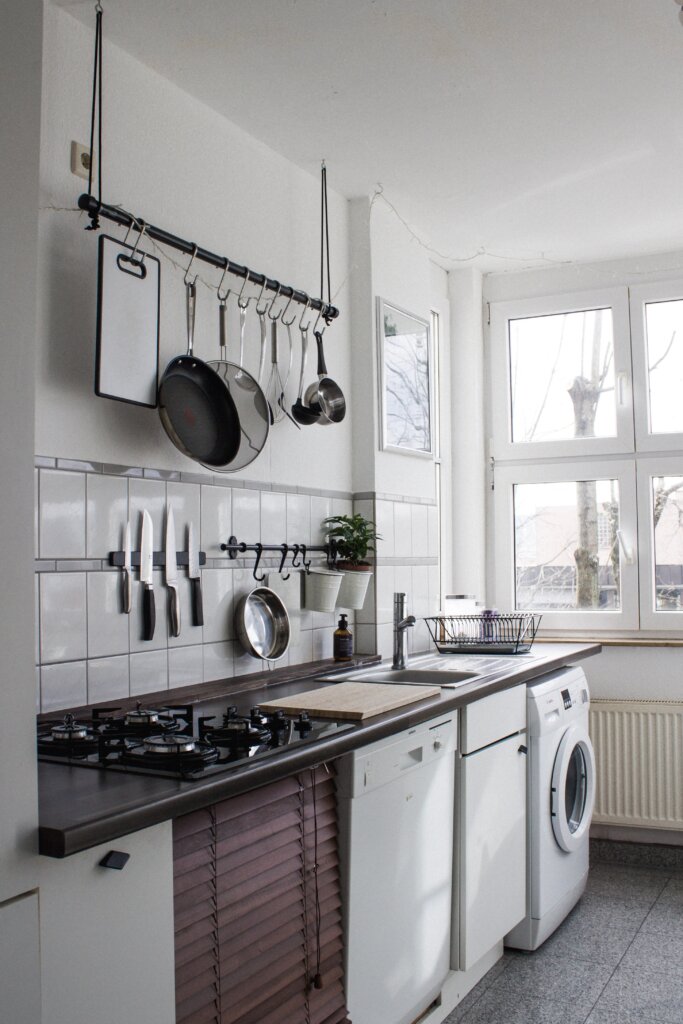
Take advantage of lunch deals to sample local cuisine
I love food, and sampling local specialties is one of my top priorities whenever I travel.
But, dining out can quickly eat away at your budget.
The best backpacking hack I can give you for eating well while also saving money is to eat like a king during lunch hours, and then having a more basic dinner. Oftentimes, restaurants in Europe will offer set lunch menus where their dishes are a fraction of the cost than at dinner.
This is a great way to eat well without breaking the bank.
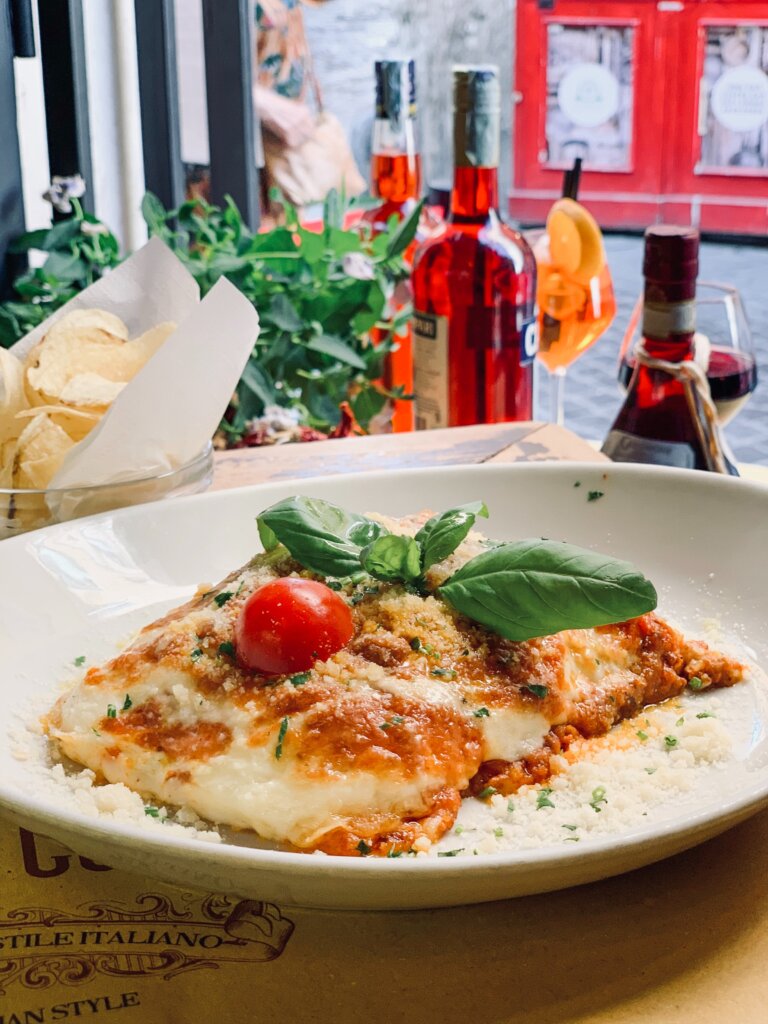
Dine far away from tourist attractions
And another Europe backpacking tip for dining out is to steer clear of food establishments close to big tourist destinations.
It shouldn’t be a surprise that prices around these areas are grossly inflated, and the quality is often questionable as well since they’re catering to tourists who will likely never come back.
Often, even moving 2-3 blocks away from main tourist attractions can make a huge difference cost and quality wise.

Skip bars in favour of boozy picnics
I love going to bars, but going “out out” can add up.
Fortunately, alcohol is usually very cheap at grocery stores across Europe, and having boozy picnics is a popular past time. Yup – drinking in public is fairly lax in most European countries, so why not partake in the name of culture?
One of my most valued memories from Paris was drinking cheap wine along the Seine as the sun came down… surrounded by both locals and tourists all doing the same. Get creative – you don’t need bars to be social.
After all, why pay 5 euros for a glass of wine in a restaurant when you can get a full litre for 1 euro? (Okay sure the quality is questionable, but you can literally find wine that cheap here!)
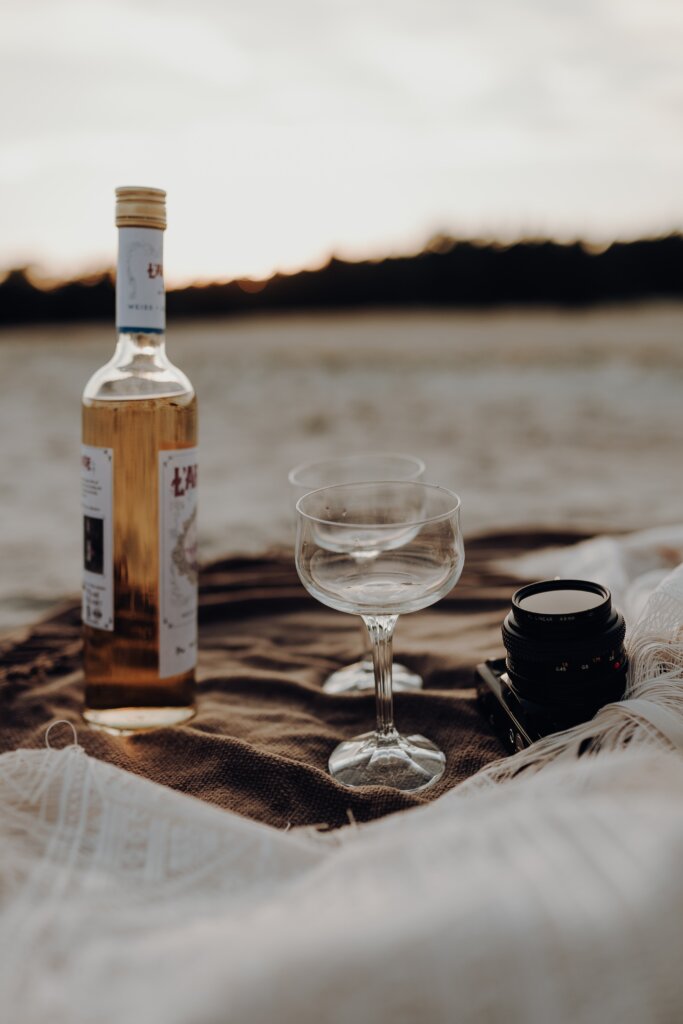
Get takeout for super cheap with Too Good to Go
One of my favourite (little-known) Europe travel apps is called Too Good to Go.
They service many major European cities, and basically, it’s a free app that restaurants use to sell their leftover food at the end of the day (sometimes at lunch too).
This helps minimize food waste, and means you can pick up an entire take out meal for less than 5 euros.
Sure, you don’t get to choose what you get, but it’s an excellent way to eat cheap and help reduce waste at the same time.

How to Save Money on Attractions When Backpacking in Europe
Another huge cost when backpacking Europe is attractions and things to do. Here are some tips for saving money on this part of your trip.
Become a master of free attractions
Everywhere you go in Europe, there will be free things to do and see, ranging from free museums to beautiful architecture and street art.
So, be sure to research beforehand and see what free things there are to do at your destination.
NOTE: A lot of museums across Europe offer free admission on particular days of the month. Take advantage of these offers!
Or hey, if you want to be very extreme…
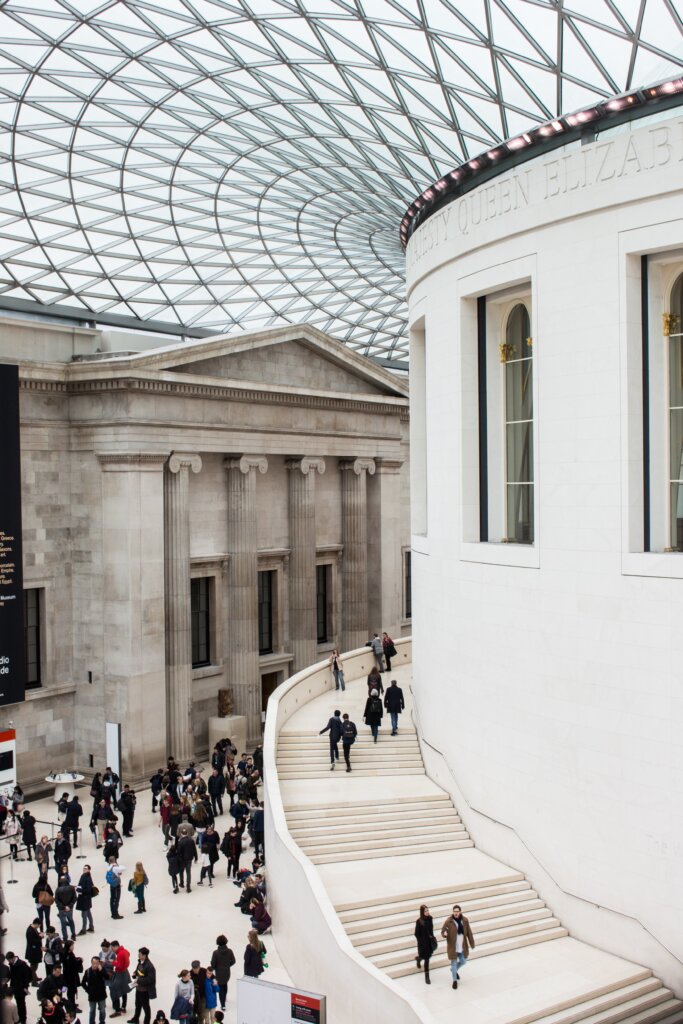
Plan your backpacking trip destinations around free days
As I mentioned, many museums and attractions in Europe have ‘free days’ where admission doesn’t cost anything!
If you have the luxury of flexibility, one of my top Europe backpacking tips is to consider researching these free days and planning your itinerary around them.
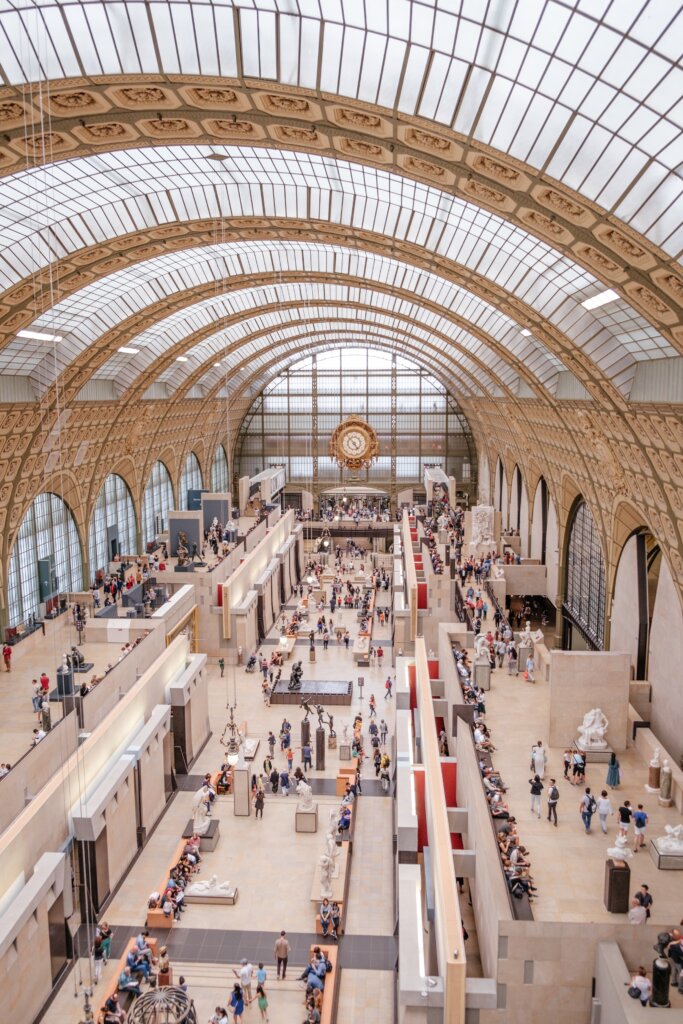
Learn how to seek out awesome, offbeat activities, rather than touristy ones
I love being a cheesy tourist. There’s zero shame in it…
I mean if you’re visiting Paris for the first time, no way you’re going to skip Paris’ main landmarks or Montmartre , you know?
That said, some of my favourite memories while backpacking have revolved around going a bit off the beaten path and doing weird attractions/spots that aren’t recommended in every single guidebook.
I have a lot of tricks for finding cool things to do around you no matter where you are, but here are some of the best ones:
- Search up your destination on Atlas Obscura , which has a lot of amazing offbeat ideas
- Find websites that cater to locals to discover events, new restaurant openings, etc.
- Use Google Translate to search in the local language (often you’ll find lots more content that way)

Always ask for a (student) or other kind of discount
Many attractions will offer special discounts for particular groups like residents of that country, students, military, etc.
In addition, discount codes and coupons are just a Google away.
If you know you’re hitting up a particular attraction, be sure to check the Internet quickly for deals, and ask your hostels & local tourist centres if they have coupon books.
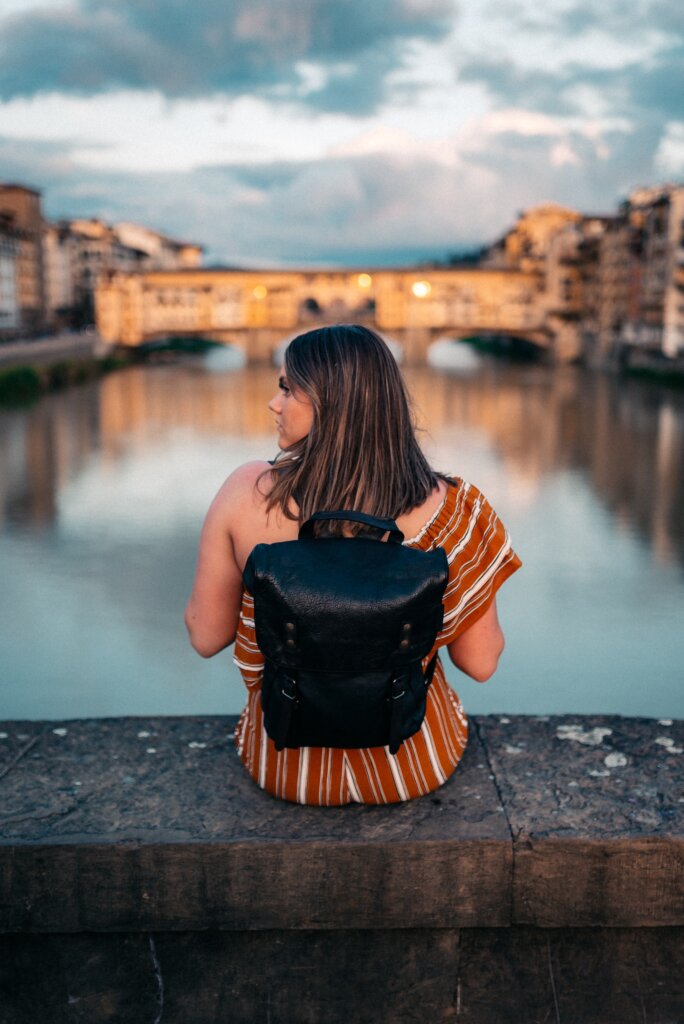
Get a City Card or pass
In some destinations, you’ll want to visit as many attractions and museums as possible.
This was me in Paris, London and Amsterdam. There’s just so many iconic must-do attractions that I knew I wanted to check as many as possible off my list!
In cases where you know you’ll be doing a LOT of sightseeing, my best tip is to get a City Card of some kind. Most major cities will have them (like the iAmsterdam Card for example), and they give you unlimited access to museums/attractions for a certain time period, for one set price.
Often these cards are expensive at first glance, but with proper planning and strategy, can save you literally hundreds of euros per city.
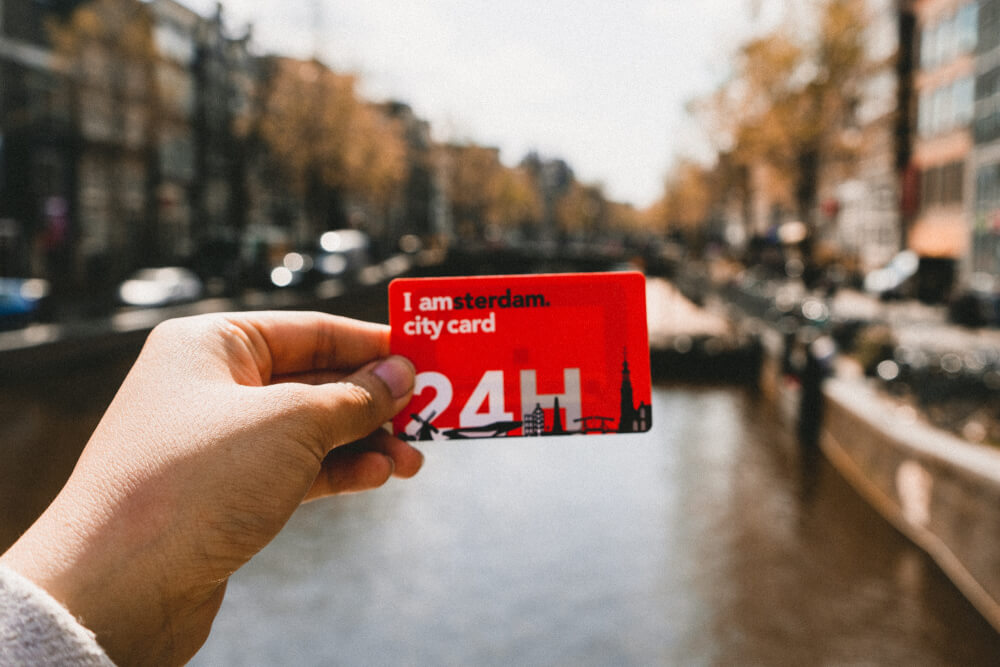
Safety Tips for Backpacking Europe
While we often think of backpacking as a fun and carefree experience, there are often very real safety issues and potential threats to be mindful of. The best way to safeguard yourself against threats is by familiarizing yourself with the risks involved, so here are some safety-related backpacking Europe tips you should keep in mind.
Look into theft-proof bags and accessories
There are a lot of amazing theft-proof travel accessories out there these days. The bad news is they’re not always the cheapest.
If you’re willing to splurge a bit on something high-quality and designed to thwart pickpockets, here are some options:
- PacSafe’s products are all made to be theft-proof, including their signature backpack here and day bag here
- Secret passport scarves like these are a great way to stash THE most important things in a subtle and discreet way
As a DIY solution of course, look into jackets or bags that have inner pockets – this extra layer of security can work wonders in terms of deterring pickpockets, and can be useful for everyday wear and not just travel!

Get familiar with common European pickpocket scams
Backpackers are easy targets in Europe – one quick glance at us and our oversized back destroyers, and it’s clear we’re not exactly “local”.
One of the best ways to protect yourself against pickpockets though is to know their usual tricks. Generally speaking, you should know that pickpockets tend to…
- Thrive on distraction – they will often work in groups or bump into you to get close
- Frequent busy places like train stations and crowded tourist areas
I’ve written a full guide on how to avoid pickpockets in Europe if you want to know all the common tricks/scams they use, but the best defense is always to avoid letting strangers get close to you, and to stash your valuables somewhere safe and difficult to reach.

Look up common taxi rates and scams before arriving
While I’m a firm believer that public transport is the way to go when you’re on a backpacker’s budget, sometimes you might need to take a taxi, whether it’s because you’re arriving late, running late, or just want to splurge a little.
While this varies depending on the country, taxis are often prime scam zones! I’ve personally been scammed by taxis in Prague and also in Sofia.
Particularly if you are leaving from busy areas like airports or train stations, some opportunistic drivers will take advantage. This is how I got charged 4x the usual fare in Sofia, mainly because I didn’t know better.
So, if you plan on taking a taxi, make sure you search up how much that route should generally cost, and also familiarize yourself with common scams.
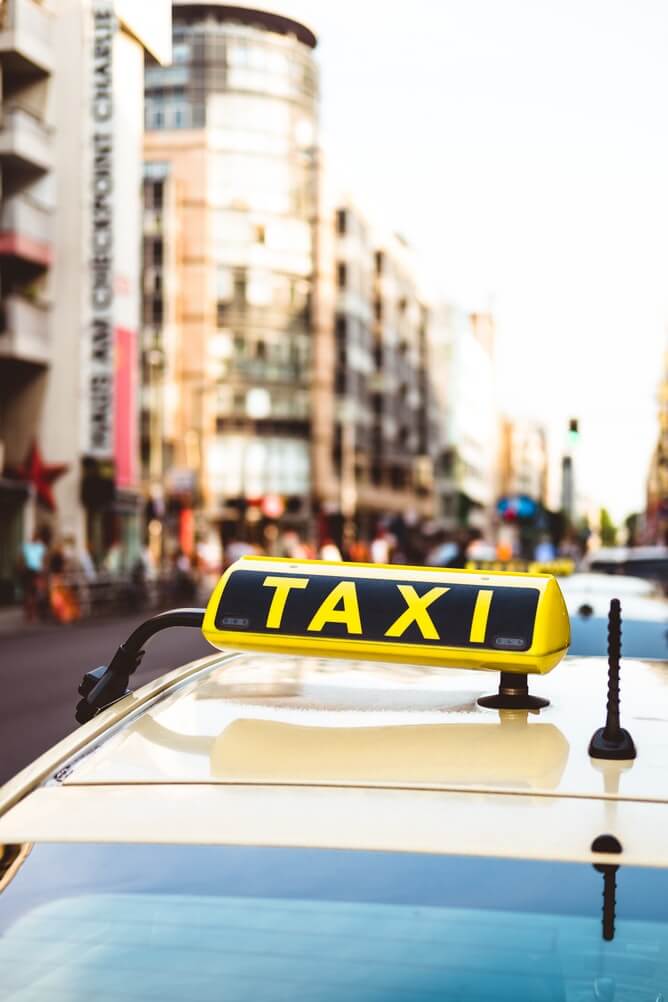
Get a good VPN
If you plan to be travelling longer-term, getting a reliable VPN is a must.
In short, VPNs (or Virtual Private Networks) mask your IP address and encrypt your data so that you can protect your identity online, browse anonymously, and even change the geographical location you’re browsing from.
This can be helpful in a lot of backpacking situations. In the past, I’ve used a VPN to…
- Access streaming for my favourite TV shows that weren’t available in the country I was travelling in
- Visit sites that were blocked in the country I was travelling in
- Access important sites (e.g. banking portals) that flagged my visit as suspicious because I was in a new country
- Securely browse the Internet with public WiFi knowing my data/identity was protected
As a real cheapskate (especially in my earlier travel days), I’ve tried every free VPN under the sun, and always found them to be unreliable or buggy.
After doing lots of research, I decided to splurge on Private Internet Access , which I’ve been using for the past few years, and I’ve been loving it. It’s super easy to use, very reliable, and actually (when you break it down) not expensive it all.
Subscribe via this link and you can get it for under 3 bucks a month.

Make a “worst case scenario” plan
I never expected to get robbed while backpacking Europe, but I did! In Rome, actually… right at the train station upon arriving.
I was really lucky I was with two friends who helped calm me down and got me the right phone numbers to call so I could cancel all my cards.
No matter how prepared you are, the worst case scenario (e.g. losing your passport, getting your phone stolen, getting all your money stolen, etc.) can happen. So, it’s best to prepare yourself and have a plan in place, including….
- A copy of your passport and IDs
- Important phone numbers (e.g. your bank and credit card company) to call
- A way to get emergency funds in case all your money gets stolen

Packing Tips for Backpacking Europe
Hands down – the most stressful part of my first backpacking trip in Europe was deciding what to pack. I 100% did it all wrong, so here are some packing-related tips for backpacking Europe that you should keep in mind.
Get good at minimalist packing
One of the biggest mistakes I made when I was backpacking Europe for the first time was I way overpacked.
Wayyyyyyy. overpacked!
Remember: anything you bring with you will HAVE to be carried by you several times throughout your backpacking trip… often in the worst of times – like apocalyptic weather, searing heat, and *whispers* even when you’re hungover.
So, it’s really in your best interest to learn how to pack minimally and smartly.
Luckily, I have just the guide for that, even with packing lists you can steal. Check out my free minimalist packing lists for more.
To get you started though, here are some basic tips for minimalist packing while backpacking Europe:
- Make sure every top matches every bottom
- Pack versatile multi-purpose wear (e.g. active wear that doubles as PJs)
- Pack convertible items like this dress that can be tied in 8 different ways
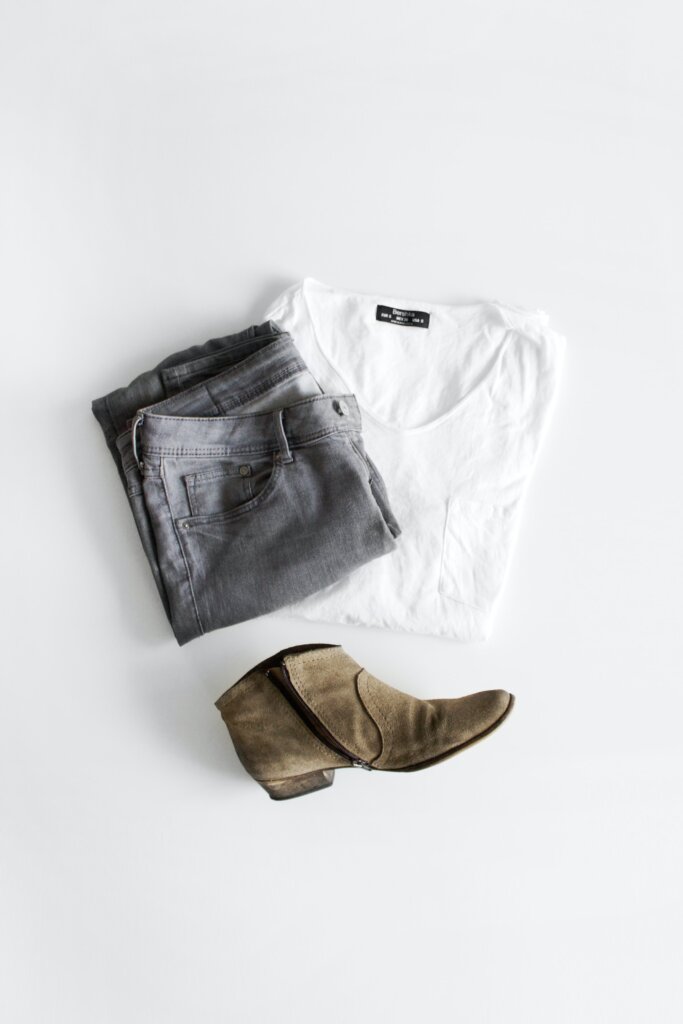
Invest in an excellent travel towel
Allow me to gush about one of my favourite travel purchases of all time: this travel towel.
It folds up to almost no space at all, is ultra absorbent, dries quickly and can double as a beach towel in warmer countries. I am in love with it and still use mine 7 years later, so I would say it’s amazing value.
I’ve literally bonded with people in hostel dorms over the absorbent amazingness of this towel, so I promise you won’t be disappointed!

Organize your stuff with packing cubes
I honestly have no idea how I lived prior to purchasing packing cubes .
These beauties are a magical way to keep all your goods organized, while saving space in your bag as well. Gone are the days that you rummage through your entire pack for a particular t-shirt!
Not all packing cubes have to be expensive either. There’s plenty of affordable options on Amazon, like this blue set from Amazon Basics , but you definitely get what you pay for.
PS: I’m a total packing cube nerd and once bought a bunch of different brands to compare. See my full packing cube showdown for more.
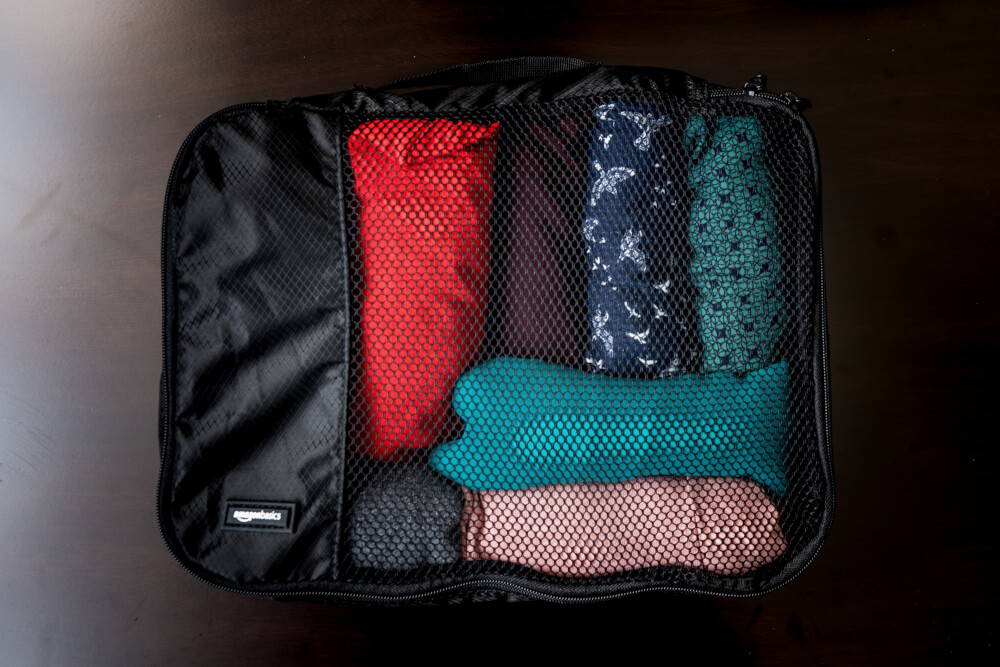
Bring a lock
While most hostels will offer padlock rentals, having your own is a great money saver and an essential item if you’re hostelling during your trip.
It can also help you lock up the zippers on your backpack on travel days, to ward off any pickpockets!
I’d recommend getting a combination lock rather than a lock/key combo, mainly because if you’re anything like me, you will 100% lose that key within seconds.
TIP: A multi-pack like this is cheap, and then you can have one lock per bag and back-ups in case you lose one.
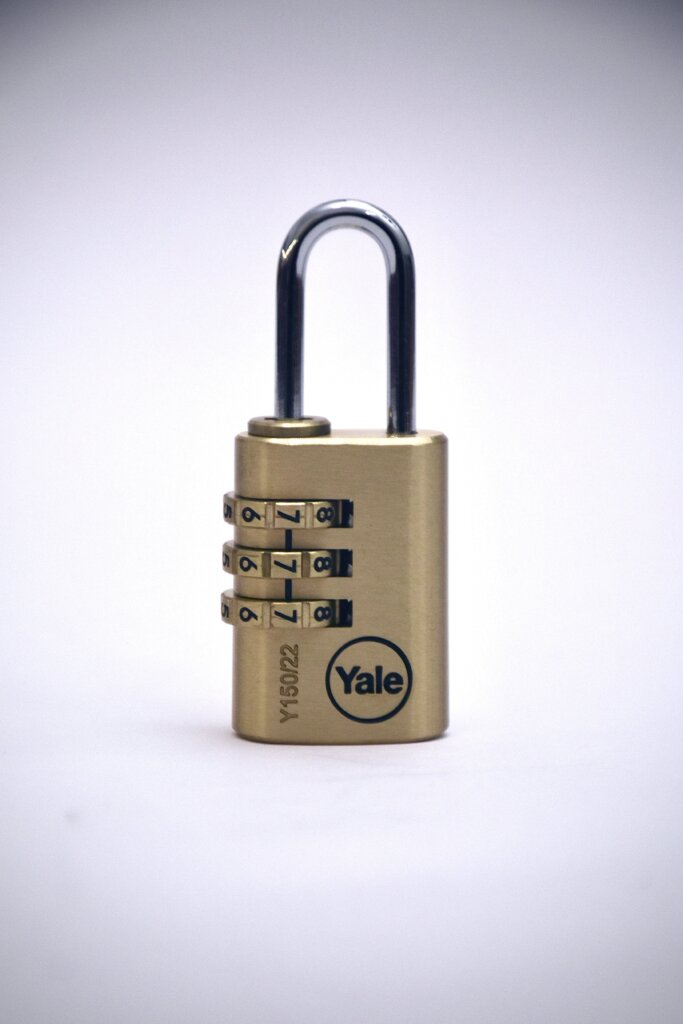
Have a great pair of flip flops
Why do you need flip flops? Two words: hostel showers.
They’re also great shoes to have around if your feet need to breathe, or if you’re headed to the beach.
I swear by this pair from Crocs (I know – don’t worry! They don’t look like Crocs!) Not only are they waterproof, they have a sleek and unique “dressier” design than typical flip flops which means you can get away with pairing them with dresses.
Fun fact I learned while backpacking: Australians call flip flops ‘thongs’. Needless to say, when a hostelmate told me she found someone’s thongs under her bed, I didn’t think she meant shoes.
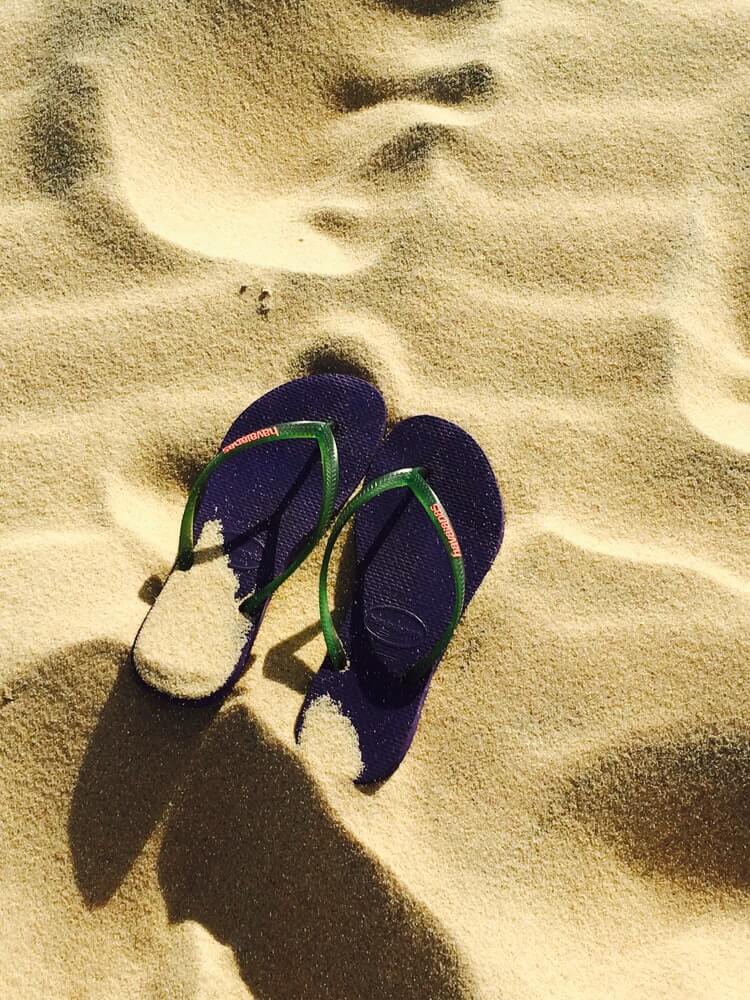
Bring a lightweight cutlery set
As I mentioned above, picnicking is a backpacker’s best friend when it comes to eating affordably.
While many grocery stores will have plastic cutlery for you to take, having your own set just-in-case will save you a lot of stress when you want to cut up your baguette or eat your store-bought gelato in peace.
This is the versatile and cheap spork I travel with these days. It’s super light and handy to have just in case!

Pack duct tape
A random, but essential item for your backpacking trip is duct tape.
From patching up broken bags to sealing up shoes that randomly split (true story), it’s a light and versatile item that travellers often forget to pack. No doubt, it has saved my butt numerous times.

Other General Tips for Backpacking in Europe
Last but not least, here are some miscellaneous tips to keep in mind for your backpacking trip in Europe.
Walk as much as possible
Walking is the absolute best way to explore a city, and most European cities are wonderfully walkable (moreso than many North American cities I’ve noticed anyway, which tend to be more spread out).
Bus and taxi fares add up quickly, so walking from place to place will save you a ton of money.
You’ll also get to see the city better while working off all those carbs you’ve been inhaling!
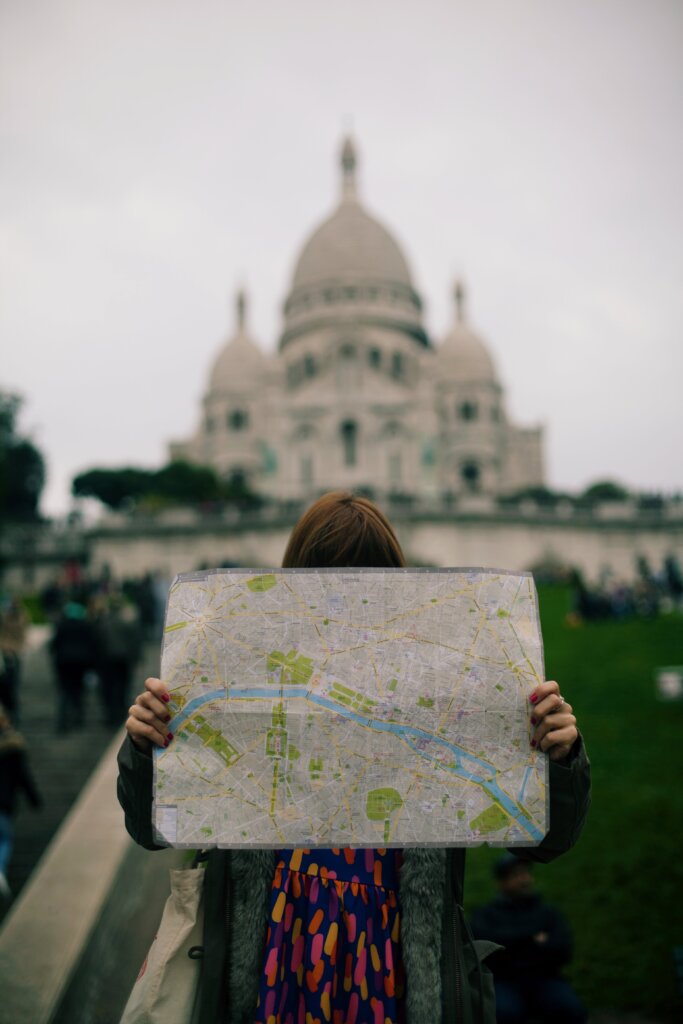
Read up on the public transport system before you arrive anywhere
Generally speaking, public transport in most major European cities is incredible, and often the most cost-effective way to get around (besides walking of course).
But, unfortunately, they’re not always intuitive… and they vary a lot from city to city.
SO, minimize the stress of arriving in a new place by researching public transport beforehand – how to buy tickets, how much tickets cost, which tickets are the best deal, etc. This will save you the panic of not understanding a thing when all your bags and valuables are in tow.
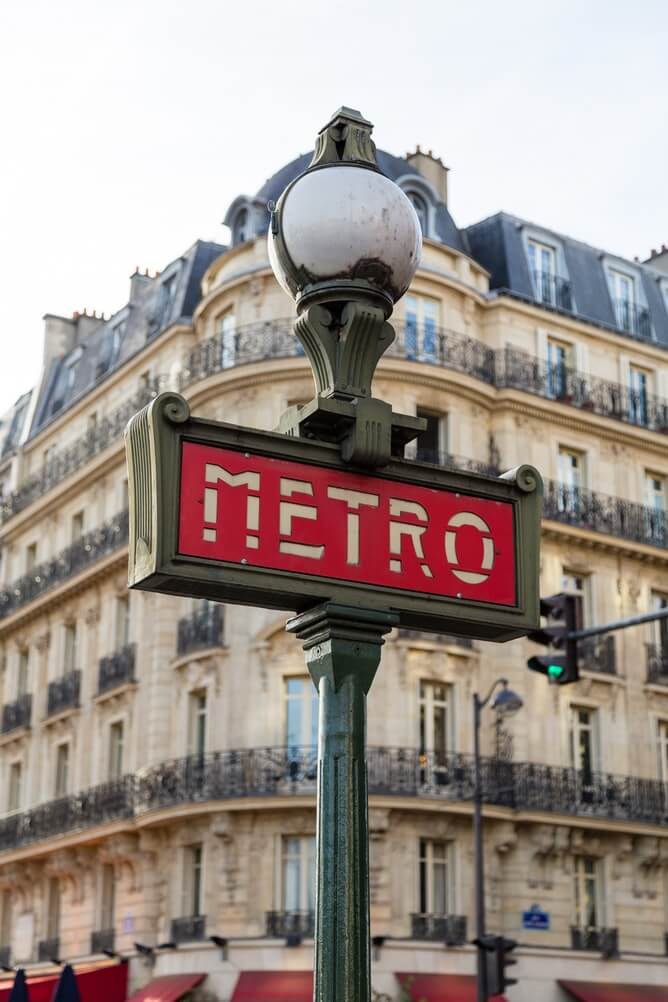
Think about free souvenirs (or non-physical ones)
You know that saying, “collect moments, not things?” It’s definitely true.
While it may be tempting to collect small trinkets throughout your trip, these little expenses add up and also take unneeded space in your bag.
In my experience, the best souvenirs are free, like photos, ticket stubs, etc. You can then buy a cheap travel stub diary like this one once you get home to organize it all. Much more personal than fridge magnets!
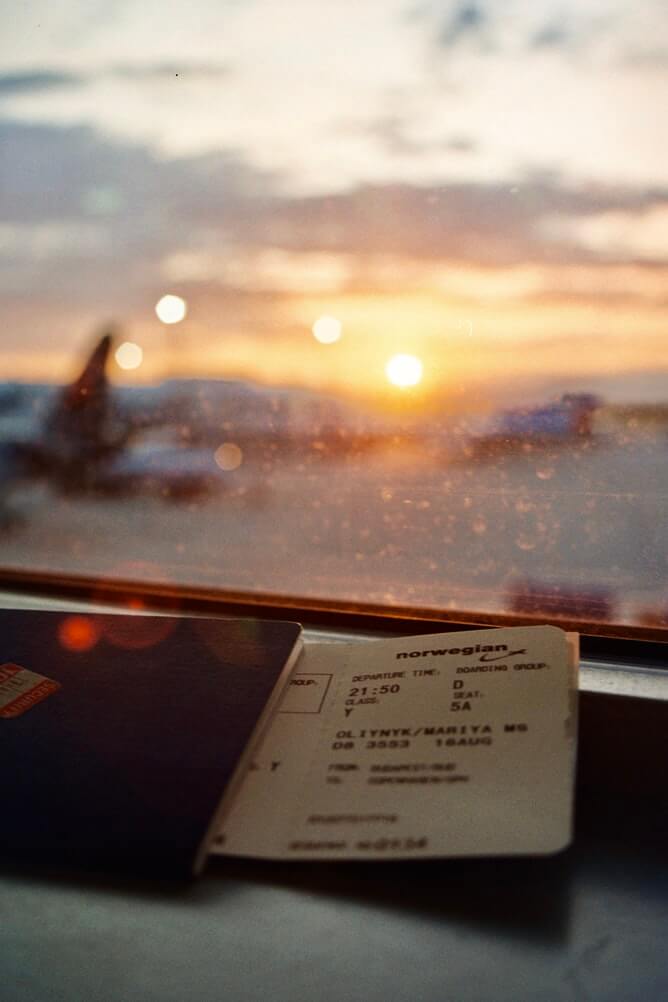
Learn how to haggle
You’ll be amazed at how much money you can save by haggling at markets, particularly in touristy cities where they often inflate the price with the expectation that you’ll haggle it down.
It doesn’t matter what you’re buying, whether it’s clothes or a keychain, you’ll be able to drive the price much lower if you stand your ground.
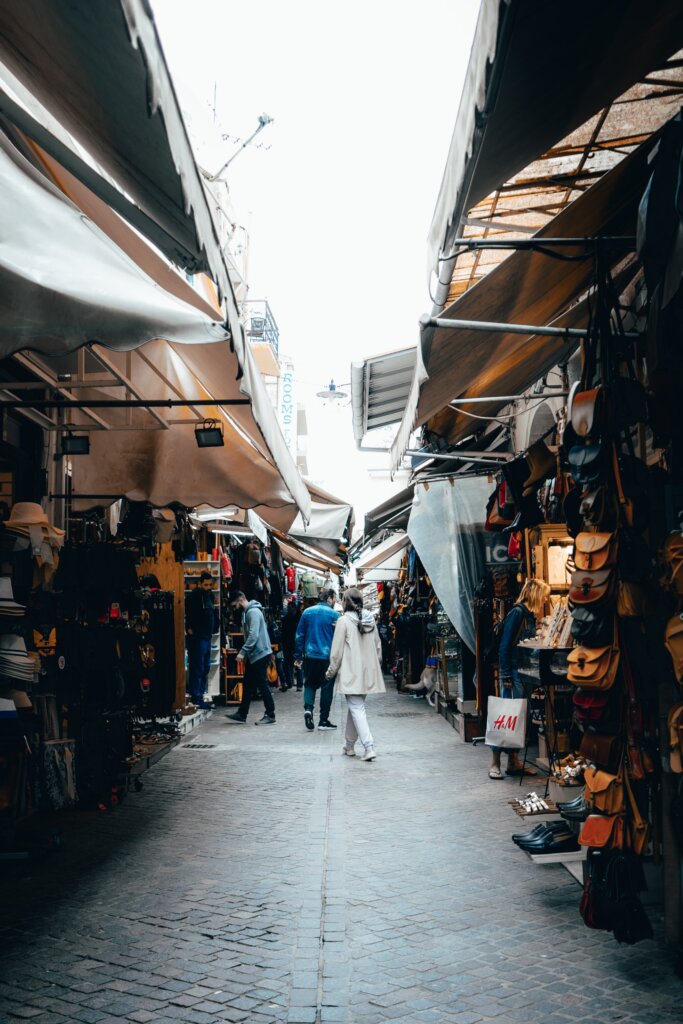
Always have cash and change
Depending on which destinations you visit in Europe, you WILL be charged for things that are usually free in your home country, like for instance going to the bathroom!
In Germany, Switzerland, and Austria for example, it’s common for public restrooms to cost between 50 cents to 1 euro per use… The upside is of course that the facilities are sparkling clean.
So, never rely on cards, make sure you have cash and change on you.
PS: If you’re headed that way, make sure you read my list of must-knows before you travel to Germany … because there’s a lot of very random and hilarious surprises.

Be friendly and social
This goes without saying, making friends while you travel brings an infinite number of benefits.
One of the most selfish ones being saving money while splitting the cost of supplies and food!
On a more wholesome level though, I’ve met some truly incredible people while backpacking, some of whom have encouraged me to derail my plans, go with the flow, and see some wonderful places I would have otherwise never visited.
All in all, talk to strangers while backpacking Europe. You never know what might happen!

Don’t be afraid to splurge and treat yourself
Last but not least, I know what it’s like backpacking Europe on a budget, that feeling like every penny counts and you’ll never financially recover if you dare pay more than you budgeted for…
But remember, backpacking Europe is a huge bucket list experience! You deserve to treat yourself every once in a while.
At the risk of sounding too “deep”, your money will come back, but your time will not… So definitely treat yourself to some amazing experiences on your bucket list while backpacking Europe, even if they are a bit pricey.
I promise you’ll never regret it.

I hope these Europe backpacking tips were helpful!
Let me know in the comments if I missed any tips you’d recommend, or if you have any more questions. Have an amazing trip!
My Go-To Travel Favourites:
🧳 Eagle Creek: My favourite packing cubes
💳 Wise: For FREE travel friendly credit cards
🍯 Airalo: My go-to eSIM
🏨 Booking.com: For searching hotels
📷 Sony A7IV: My (amazing) camera
✈️ Google Flights : For finding flight deals
🌎 WorldNomads: For travel insurance
🎉 GetYourGuide: For booking activities
1 thought on “40+ Super Helpful Travel Tips for Backpacking Europe”
This blog is amazing and informative .These Travel blogs provide practical information and tips that can be incredibly helpful when planning a trip. From accommodation recommendations and transportation options to local insights and budget-saving strategies, travel blogs can offer valuable firsthand knowledge to make your travel planning smoother and more efficient.
Leave a Comment Cancel reply
By using this form you agree with the storage and handling of your data by this website. *

Backpacking Europe Packing List & Pre-Trip Checklist
Last Updated on December 11, 2023
by Maggie Turansky
Disclaimer: This article contains affiliate links. That means if you click a link and make a purchase, we may make a small commission. As an Amazon Associate we earn from qualifying purchases. For more information, see our privacy policy.
Your flight is booked, you’ve secured your first few night’s accommodation, and you’ve had “going away drinks” with friends. You’re nearly ready to embark upon your European adventure, but you still haven’t packed your bag! Figuring out the perfect Backpacking Europe packing list can be a daunting task, but luckily I have been there before and can offer sage words of advice to guide you through this stressful time!
Table of Contents
Checklist Before You Start Packing
Before you start thinking about what items to include on your packing list, it’s worth taking time to make sure you’ve got all the crucial components of your trip organised. It’s worth taking care of these items at least 1-2 months before you depart to ensure you have everything organised in time!
Have a Rough Route & Budget
It’s worth picking out a few must-sees for your trip and then determining a rough route around those destinations. There’s no need to over-plan your route as you’ll undoubtedly want some flexibility when you finally arrive in Europe.
However, if you want to visit a popular festival or city that is known for getting a lot of tourists in high season then it’s worth planning that well in advance.
Once you have a rough route in mind, this will help determine what daily budget you need. An average daily budget for backpacking Europe is around €42 – 105/day.
This will cover you for most places in Central and Eastern Europe, however, you can expect to pay more in Western European countries and less in the some of the more affordable countries in the East.
This daily budget will cover you for a dorm in a hostel, cheap meals (with the occasional splurge meal), transportation and one or two activities per day.
In addition to your daily budget, you need to make sure you have enough funds to cover pre-trip expenses such as flights, gear and travel insurance.
Organise Your Transport
Hopefully, by the time you’re thinking of packing, you’ve already got flights booked to Europe. If not, it’s worth taking the time to play around on Skyscanner to find deals on flights to Europe.
You also need to consider, how you will get around Europe when you land. If you plan to make use of the extensive rail network, it can be worth booking some popular trains in advance (particularly in summer!) as you will get cheaper rates and there will be a lot more availability.
Finally, if you’re planning on using the train extensively over a short period of time, a Eurail or Interrail pass can be incredibly good value.
If you’re living outside of Europe, you can browse Eurail passes . Alternatively, if you’re based in Europe, browse Interrail passes.

Choose the Right Debit or Credit Card
What is the right debit or credit card you might ask? The ones with no foreign transaction fees!
The last thing you want to be doing on your backpacking Europe trip is giving away part of your daily budget to the banks!
Applying for a debit or credit card without foreign transaction fees will mean you won’t get charged extra each time you withdraw money which can save a lot over the course of a few months backpacking.
It’s worth making sure you do this as soon as possible as it can sometimes take a little while for banks to approve your application.
Consider Travel Insurance
For many backpacking trips, we have used World Nomads . They offer flexible and simple travel insurance policies with coverage for more than 150 activities that you can buy or extend while on the road.
An alternative option is SafetyWing which offers travel medical insurance policies.
Book a Night or Two or Accommodation
After getting off a long flight and being jetlagged, the last thing you want to be doing is walking aimlessly around a new city trying to find somewhere to stay. Book your first few nights in a hostel and have the comfort of knowing that you have somewhere to stay when you get off the plane!
Alternatively, if you prefer a bit of privacy for a couple of nights to recover from jetlag, booking a private room in an Airbnb can be a good option to start your trip to Europe.

Top Things To Consider When Packing for Backpacking Europe
Choosing a travel backpack.
One of the biggest tips I or anyone else could give when you’re assembling your packing list for backpacking Europe is to make sure you travel light.
There is nothing more uncomfortable than having to lug an outrageously heavy backpack through winding European streets, which is why I would suggest that you aim to keep the weight of your bag under 15 kilos (33 pounds), and ideally under 10 kilos (22 pounds).
It is also more convenient to have lighter luggage when you are moving between cities. Obviously, you need to be conscious of weight when you are flying as anything over 20 kilos (44 pounds) in order to avoid exorbitant extra fees.
However, though it is highly unlikely you will be financially penalised for it, it is so much easier to have lighter luggage when you are on ground transport, as well. If your bag is very heavy, you’re going to have a lot of trouble hoisting it onto luggage racks or carrying it up or down a flight of stairs.
The second thing you need to consider is the actual bag you plan to take. It can be really confusing as there are seemingly endless options.
I would suggest you try to keep the main bag under 50 litres, mainly because it both prevents overpacking and also because a smaller backpack is a lot easier to manoeuvre.
You want to look for luggage — whether you are planning of going for a backpack, wheeled backpack, or even a traditional suitcase — that is durable and can withstand a fair amount of wear and tear.
Constant packing and unpacking and lugging through city streets and on and off transport can do a considerable amount of damage to luggage and you are going to want to buy something that can withstand that for many trips to come.
Personally, I use the Osprey Farpoint 55 (also available on REI here or direct from Osprey here ). The main pack itself is 40 litres and it also comes with a 15-litre detachable daypack. It is incredibly well-made and also comes with a lifetime warranty.
It’s come with me on many a trip and I’ve yet to come up with any complaints. Michael uses the Osprey Farpoint 70 over the Farpoint 55 which is slightly bigger but essentially the same backpack.
If you’re looking for more stylish options for your European backpack , then other options include Peak Design which can be used as carry-on luggage or the Osprey Farpoint Wheels (also available on REI here or direct from Osprey here ) which is a great choice if you’re after a wheeled backpack.

Organising Your Gear
The third thing to consider is how you actually pack your backpack. There are a number of techniques you can use in order to maximise the space in your bag, from rolling your clothes to stuffing your socks and undies in your shoes.
However, I’ve found that the best way to keep organised and to save space in my backpack is to use packing cubes.
Both Michael and I use Eagle Creek compression packing cubes (also available direct from Eagle Creek here ) and don’t have enough good things to say about them. They’re super lightweight and really durable and well-made.
Honestly, they’ll just completely change the way you pack and I don’t know what I’d do without them.
Decide Which Electronics You Need
Before you start packing, it’s worth thinking about which electronics you need with you in Europe. Unless you’re working online there’s little point lugging around a large laptop during your backpacking Europe trip and it’s best to pack light.
However, you might still be keen on having something to browse the web, upload photos or chat with friends back home. In this case, a lightweight tablet like the Amazon Fire Tablet might be a good option.
This is a good option if you plan to access WiFi on your trip, just make sure you have a subscription to reliable VPN such as ExpressVPN before you leave!
Another electronic item that I specifically bought for my travels was a Kindle Paperwhite . If you like to read while travelling but want to reduce weight in your bag then this is a must!
Finally, make sure you have a camera so you can document some of the amazing memories you will undoubtedly have.
If you’re not into photography, then the camera you have on your smartphone is likely to be sufficient. If you want to get more professional with your snaps, then I recommend the Sony A6400 .
It’s a mirrorless camera, lightweight and a good mid-range camera if you want to learn more about photography. There are also a number of fantastic travel lenses for Sony A6400 cameras available on the market.

Backpacking Europe Packing List
The packing list for Backpacking Europe below is a variation of what I brought for three months travelling through the Balkans and Eastern Europe , but could just as easily last you two weeks to six or more months. It also can be used in any season, with some variations.
The biggest tip I could give when you’re wondering what clothing to bring is to only pack versatile, neutral-coloured clothing that can be mixed and matched with most things you’ve included in your backpack.
Basically, don’t bring anything that only goes with one other thing. You’ll regret it and, honestly, you might even end up dumping it along the way.
- Depending on the season you are travelling, I recommend taking a mix of short and long-sleeved t-shirts. Obviously, in summer you should take more short-sleeved and in winter increase the number of long-sleeved!
- These long-sleeved t-shirts ( men’s click here ) make a great base layer in the colder months and will keep you nice and toasty!
- These fleece sweaters will keep you WAY warmer than cotton and stays warm even when wet. Great to have if you’re travelling outside of summer or plan on going hiking
- I would also recommend bringing a sweater that can be dressed up, so you can look nice even when it’s chilly outside.
- They’re super warm, durable, lightweight, pack down very small and are quite affordable. I really can’t say enough good things about these jackets.
- I like this North Face jacket. It’s lightweight, durable, and keeps you dry above anything else. It’s also great for layering on top of a jacket and a sweater to keep you extra warm.
- One pair of jeans, I like darker jeans that I can easily dress up or down depending on the circumstance
- One pair for hiking/walking pants/trousers or another pair of jeans or chinos if you don’t plan to be that active
- You can browse some great options in our best travel pants in Europe guide.
- Leggings/thermal pants are great if you’re travelling in winter for an extra layer under your jeans .
- I also wear leggings when hiking and opt to bring two pairs of jeans rather than a dedicated hiking/exercise pant. Basically, leggings are super versatile and should definitely be on your list.
- For late spring, summer, and early autumn. If you’re travelling outside of these seasons, then don’t bother bringing them. It will be too chilly and they’ll just take up unnecessary space.
- For nicer restaurants/going out
- Collared shirt for men, dress/skirt/nice pants for women (or whatever is a little bit nicer than your typical backpacker wear and makes you feel comfortable)
- Bluffworks has a great range of nicer clothes that are still practical for travel – you can read more about them here.
- How many pairs you bring really depends on how often you want to do laundry!
- If travelling in winter, make sure to bring a couple of pairs of thermal underwear ( men’s click here )
- Again, this really depends on your typical laundry habits.
- If travelling in winter, make sure to pack some thick wool socks ( men’s click here )
- Good as a base layer in the winter or chilly autumn days, or as a top when it’s hot outside
- One regular, one sport — obviously for women
- I’ve also noticed a lot of men (Michael included) tend to wear just a comfortable shirt over underwear
- If you’re travelling in summer and planning on swimming a lot, I like to pack two just in case one hasn’t dried when I have to pack up to avoid a mildew situation
- I also tend to bring a swimsuit even if I’m travelling to a colder climate. You never know when you might need it!

When packing for backpacking Europe, one of the most important things to do is ensure you have comfortable shoes to walk in. After all, you will probably be spending a lot of time on your feet!
The most important thing to do is to make sure you plan appropriate footwear for the activities you plan on doing and the season you are travelling in.
I’ve listed the shoes that I always recommend taking below. I have also written a detailed guide for choosing the best shoes if you want some more advice!
- For autumn and winter or if you plan to do a fair amount of hiking.
- They are also available on REI for women here or for men here
- If you’re travelling in summer and don’t plan to do any hiking or outdoor activities, then don’t bother to bring these
- Nice trainers or other comfortable & breathable shoes for traipsing city streets
- For the beach and grubby hostel showers — no one wants athlete’s foot ruining their travels!
- For spring and summer, I like Birkenstocks (also available on REI here ). I know they’re a bit geeky, but I never have sore feet even if I’ve been walking all day in them. Also, the arch support is out of this world.
- For women wanting a nicer shoe, there are a number of foldable ballet flats on the market that can make your outfit look nicer without taking up a bunch of space .
- I tend not to bring these, however, some might want a nicer shoe .
Need your gear in a hurry? Sign up to a FREE 30-day trial with Amazon Prime and get fast shipping for your items!
Electronics To Pack
The number and type of electronics you take with you depends on your planned usage and whether you need to do any work on the road.
As we work when travelling we tend to pack additional electronics, however, if travelling purely for the sake of travelling, then you should consider carefully what you actually need and plan on using.
- Michael is the photographer among us and he travels with a Son y A6400 . It’s a mirrorless camera that is lightweight and a good entry-level camera for budding photographers.
- Bring an extra battery and SD card for your camera. You don’t want to be short of power outlets or storage space and not be able to photograph something amazing.
- He also travels with a Joby GorillaPod Kit which is a fantastic lightweight tripod.
- I never thought I would be able to give up paper books, but I’ve found an e-reader is essential for a traveller who likes to read!
- Michael and I both love our Paperwhite Kindles – particularly the inbuilt backlights which are great for hostels without bedside lamps!
- If you’re not working online then we recommend bringing a lightweight tablet (such as the Amazon Fire Tablet ) or simply leaving the electronics at home!
- As I work online, I travel with my Dell XPS 13 and think it’s the best lightweight laptop on the market!
- I love this adaptor as it works in all countries and contains two USB ports meaning you can charge multiple electronics overnight!
- I like in-ear, noise-cancelling headphones because they take up less space.
- For charging your electronics when there are no power outlets!
- Various electronics chargers
- For playing games with friends, you make on the road!

Travel Accessories
- Like I mentioned earlier, these are invaluable on any trip and will make your life so much easier.
- If you prefer to travel with a more stylish purse for walking around cities then I recommend purchasing an anti-theft travel purse from Pacsafe.
- Check out our detailed guide to the best purse for Europe for more tips on choosing a great travel purse
- These towels pack down small and are super light-weight and quick drying. A lot of hostels, especially in western Europe, don’t provide towels so one of these can be invaluable.
- I recommend buying a prepaid SIM card before leaving home to ensure you have data access as soon as you arrive
- Check out our detailed guide to the best international SIM card for Europe with data for more tips!
- Because you don’t want the snorer or to impede your sleep in a hostel dorm!
- For the times when the drunk asshole leaves the lights on at 3 AM.
- Great for both securing your luggage and for a hostel locker.
- Great for locking your bag to a stationary object (i.e. your hostel bunk!)
- So you can keep exploring in the rain!
- There are plenty of water taps around Europe to fill up your bottle
- For writing a journal or your new friends’ contacts details!
- While many people opt for a swiss army knife, I personally like the Leatherman Wave . It’s an all-purpose tool that includes both a serrated and regular knife, a saw (perfect for hacking through baguettes when you’re picnicking!), a bottle opener, pliers, and screwdrivers.
- I recommend including some basic medicines such as paracetamol/Tylenol and cold & flu tablets
- A useful accessory for all seasons!
- For winter and chilly autumn evenings
- Winter and autumn
There is no need to overpack on toiletries when travelling to Europe. You can find a pharmacy almost anywhere and chances are if you’ve forgotten something, you’ll be able to find it quite easily.
- If you’re travelling for a shorter period of time or packing only for carry-on, I would recommend getting refillable shampoo bottles rather than wasting money on travel sized bottles.
- Hairbrush/Comb
- Women’s Razor/ Men’s Shaver
- Hand sanitizer
- Contact lenses
- For some reason, in a lot of places in Europe you can only purchase this in optical shops. So if you wear contact lenses, sometimes it can be hard to find solution if you forget it.
- Because it’s better to be prepared!

While it may not seem like much, this packing list for Europe should be enough to sustain you through any long-term trip!
Obviously, there is always room for flexibility when packing for your backpacking adventure. However, I would always advise packing on the lighter side and trying to avoid letting your pack weigh over 15 kilos. This is altogether just more comfortable.
Remember as well, that if you forget anything you are almost always able to purchase it on the road, often at a cheaper price than at home!
Checklist After Packing
Once you’ve packed your bag for Europe, make sure you have a bit of time left over to take care of these things to make your life easier once you land in Europe!
Call your bank
Remember that new debit card you got a few months ago with no foreign transaction fees? Before using it in a new country, make sure your bank knows about it! Give your bank a call and let them know what countries you’re planning on travelling to so they don’t flag any of your transactions as suspicious and cancel your card while you’re overseas!
Get some local currency
It’s worth trying to get enough local currency to last you a day or two for when your first arrive. While it is usually possible to withdraw money from an ATM in the airport, there is always the chance that the ATM doesn’t work or you have an issue with your bank card. By having a bit of local currency you can be comfortable in knowing that you have enough money to at least get to your accommodation!
Work out your airport transfer
Speaking of getting to your accommodation, take the time to research the best way to get from the airport to wherever you’re staying. Whether it’s public transport, an airport shuttle bus or an Uber – having these details sorted will mean you don’t encounter any unnecessary stress when you first arrive in a new country.
Make copies of important documents
Your passport and bank cards. If something happens and you lose these, you want to easily have their details on hand so you can cancel them. Make some copies, upload them to your e-mail and send them to a family member or friend so you can easily retrieve them.

Are you wondering what to pack for Europe? Anything that you can’t travel without? Let us know in the comments!

Related Posts:

LEVEL8 Luggage Review: Textured Carry-On 20″ Suitcase

The Best Backpack For Backpacking Europe in 2024

The Best Wheeled Backpack For Europe Travel in 2024

About Maggie Turansky
Maggie is a co-founder and writer for The World Was Here First. Originally from the US, she has lived in five different countries and has travelled to dozens more, both solo and with her partner, Michael. She particularly loves exploring Spain and spending time in the Caucasus and the Baltics. Read more about Maggie
I’m planning on a month long backpacking trip and was wondering if you were able to take your osprey backpack as a carry on or if you checked it then brought another bag as a carry on? Just not sure if I should check my big backpack and bring a smaller one as a carry on/purse.
Hi Joann, thanks for your comment! It depends on what size of backpack you have. The Osprey Farpoint 40 satisfies most airlines’ requirements for carry-on but none of the other models do, so they will have to be checked, unfortunately.
Hi! This is a great article! I’m trying to plan a backpacking trip for Europe soon. I was wondering if I would need to bring or am allowed to bring like, dry food and small dry snacks to help save money on some days. Thanks!
Hi Chole, if you’re really travelling on a shoestring budget and want to make your money stretch as far as it can, then it could be helpful to bring those things with you. However, this isn’t something I’ve ever done (I normally just stick to shopping in local supermarkets and cooking my own meals rather than adding extra weight to my bag).
hi there. super helpful for packing wise. but I’m curious about accommodations. I will be doing my first back pack trip alone for three weeks in about a month. should I book all my hostels before I go or just book as I go along as I’m still unsure exactly my route of where I will be headed! any advice will help thanks x
Hey Carly, glad you found the packing list helpful! As for booking accommodation, if you want to be flexible and just go where the road takes you, I don’t think it’s necessary to book everything for your entire trip in advance. I, personally, like to make sure I have at least my first few nights of accommodation booked and then I tend to go from there. Especially if you’re staying in hostel dorms or going to places with ample accommodation choices, there isn’t much of a need to book more than a week out, I would say. Obviously, this depends on where you are visiting and the popularity of the destination — but this is a general rule of thumb. Hope you have a great trip!
hey! this list is super helpful thanks 🙂
whats your opinion on rainboots? tbh I hate rain and have been to EU several times, but never backpacked, so not used to the volume/wt constrictions.
Hi Priya, thanks for your comment and I’m glad you’ve found the list helpful! Personally, I’ve never found rainboots to be necessary, especially if you’re trying to pack. I always tend to bring a pair of waterproof hiking boots and that has never led me astray (I’ve actually never even owned a pair of rainboots!). Hope this helps 🙂
I just tripped on this site. My daughter left today for her first backpack trip in Europe. She did a ton of research and was delighted that you gave so much “no nonsense” advice. Thank you so much for putting your advice out there!!
Thanks for the comment, Lysa! I hope your daughter has a wonderful time backpacking in Europe and I am glad that we were able to help her plan for it 🙂 Cheers!
I am so happy to have happened upon this site.
We’re happy you found us! Hope this packing list has helped! 🙂
Leave a Comment Cancel reply
15 tips for backpacking through Europe
Book your individual trip , stress-free with local travel experts
Select Country
- roughguides.com
- backpacking-through-europe
Plan your tailor-made trip with a local expert
Book securely with money-back guarantee
Travel stress-free with local assistance and 24/7 support

written by Eleanor Aldridge
updated 10.06.2024
Europe has it all: sprawling cities and quaint villages; boulevards, promenades and railways; mountains, beaches and lakes. Some places will be exactly how you imagined. Others will surprise, with their under-the-radar nature or statement-making modern architecture. Whether you're planning to see it all or explore the hidden corners of the continent, these are our top 15 tips for backpacking through Europe.
1. Pick your season wisely
2. take the train, 3. be savvy about accommodation, 4. plan your trip around a festival, 5. eat like a local, 6. find the freebies, 7. get outdoors, 8. allow yourself the odd splurge, 9. stay up late, 10. hit the beach, 11. go under the radar, 12. stay safe, 13. try street food, 14. stay at least two weeks, 15. pack your luggage smartly.
The information in this article is inspired by the Rough Guide to Europe on a Budget - your essential guide for visiting Europe.
Travel ideas for Spain, created by local experts

Andalucía Explored
Discover the best of Andalucía's breathtaking palaces, churches, museums, vineyards, and more, as you travel through spectacular scenery dotted with pueblos blancos and bordered by rugged mountains and coast en route to Granada, Seville, Ronda and Jerez de la Frontera.

A culinary experience in Seville
Explore the cuisine and surroundings of Seville in Andalucia. From Iberian ham over sherry wines to the production and secrets of olive oil, this tour is an ideal weekend getaway. Decide yourself if you prefer a rental car or a chauffeur-driven car to explore the beauty of Andalucia.

Spanish Honeymoon
Discover Andalusia, starting with the cultural city of Seville, then on to Córdoba and Granada, home of the stunning Alhambra Palace. Next you'll visit Granada and the Albayzin Arab quarter, then enjoy a stunning hot-air balloon ride, before ending your trip with a luxury boat trip from Marbella!
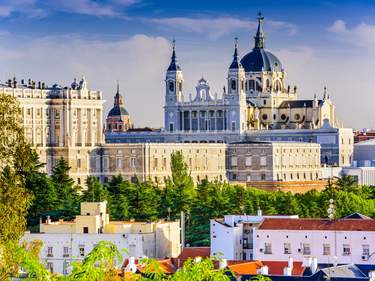
Made for Madrid
Take to the Spanish capital for art, culture and a taste of life in the city, Madrileño-style. Explore age-old churches and pretty plazas, stroll through the lovely Buen Retiro Park and visit captivating Toledo. Then, come sundown, discover the city's vibrant barrios and lively nightlife.

A Madrid getaway
Spend four days discovering the wonders of Spain's capital Madrid: from fascinating museums like El Prado and Reina Sofia over exploring unknown corners with your private guide to a day trip to the surroundings, this itinerary packs the best of Madrid.

Hidden Spain - From Barcelona to Basque Country
Do you want to explore highlights in Spain while staying in nature at the same time? Look no further. Start your Spanish adventure in Barcelona before heading off to the mountains - drive your rental car to Andorra and further on to Basque Country. Decide between driving yourself or guided tours.
For fewer crowds during the summer season , you could consider heading east. The Balkan coastline, the Slovenian mountains and Baltic cities are all fantastic places for making the most of your money. When tourist traffic dies down as autumn approaches, head to the Med. The famous coastlines and islands of southern Europe are quieter at this time of year, and the cities of Spain and Italy begin to look their best.
Wintertime brings world-class skiing and epic New Year parties. Come spring it’s worth heading north to the Netherlands , Scandinavia, France and the British Isles, where you’ll find beautifully long days and relatively affordable prices.
Getting around by train is still the best option, and you’ll appreciate the diversity of Europe best at ground level. Plus, if you make your longest journeys overnight and sleep on the train, you’ll forego accommodation costs for the night. Most countries are accessible with an Interrail Global pass or the equivalent Eurail pass.
Depending on your time and budget, choose one corner of the continent then consider a budget flight for that unmissable experience elsewhere.

Travelling by train is perfect for backpacking through Europe Pixabay/CC0
Although accommodation is one of the key costs to consider when planning your trip, it needn’t be a stumbling block to a budget-conscious tour of Europe. Indeed, even in Europe’s pricier destinations the hostel system means there is always an affordable place to stay – and some are truly fantastic. Homestays will often give you better value for money than most hotels so they are also worth considering.
If you’re prepared to camp, you can get by on very little while staying at some excellently equipped sites. Come summer, university accommodation can be a cheap option in some countries. Be sure to book in advance regardless of your budget during the peak summer months.

Choosing accommodation is one of the essential tips while backpacking through Europe © pikselstock/Shutterstock
There’s always some event or other happening in Europe, and the bigger shindigs can be reason enough for visiting a place. Be warned, though, that you need to plan well in advance.
Some of the most spectacular extravaganzas include:
- St Patrick’s Day in Ireland , when Dublin becomes the epicentre of the shamrock-strewn, Guinness-fuelled fun
- Roskilde in Denmark , Glastonbury’s Scandinavian rival with a mass naked run thrown in for good measure
- Italy's bizarre battles of the oranges in Ivrea.

Attending amazing festivals is one of the best ways to get unique experiences during backpacking through Europe Pixabay/CC0
Related articles from the blog

You'll come across some of the world's greatest cuisines on a trip to Europe, so make sure to savour them. A backpacking budget needn't be a hindrance either. If you shun tourist traps to eat and drink with the locals, you'll find plenty of foodie experiences that won't break the bank.
Treat yourself to small portions but big flavours with a tapas dish or two in Spain; relish the world’s favourite cuisine at an Italian trattoria; or discover the art form of the open sandwich with smørrebrød in Denmark . Don’t skip breakfast, either – an oven-fresh croissant or calorie-jammed “full English” are not to be missed.

Smorrebrod in Denmark © Shutterstock
Being on a budget doesn’t mean you should miss out, even in some of the world’s most sophisticated cities. Many iconic European experiences are mercifully light on the pocket.
Look out for free city walking tours, try the great Italian tradition of aperitivo in Rome , make the most of the free museums in London and try cooking with local ingredients rather than eating out. We've got lists of the top free things to do in Paris , Barcelona , London , Lisbon and Berlin to get you started.
It can be tempting to focus backpacking through Europe on a succession of capital cities – but you'd be missing out on a lot. Europe offers a host of outdoor pursuits that animate its wide open spaces. From horseriding in Bulgaria ’s Rila Mountains and surfing on Portugal ’s gnarled Alentejo coast to skiing in Norway . Or, watching Mother Nature’s greatest show in Swedish Lapland .

Midnight sun in Swedish Lapland © Shutterstock
One advantage of budget travel is that it makes splurging all the sweeter – and for a little "flashpacking" guidance, we include Treat Yourself tips throughout our latest Rough Guide to Europe on a Budget . If you're mostly staying in dorms, splash out on the odd private hostel room or boutique hotel; swing by a speakeasy for cocktails in Paris; gorge yourself on pasta in Rome; and allow yourself a day of watersports in Croatia .
Whether it’s Berlin and London’s hipster dives, flamenco in Seville, or the enotecas that celebrate Italy’s rejuvenated wine industry, there are countless reasons to stay up till sunrise. Europe lives for the wee hours and you'll be following in some famous footsteps.
Think about ordering a knee-buckling Duvel beer at Brussels ’ historic La Fleur en Papier Doré , a time-worn café once the favourite hunt of Surrealist painter Magritte and Tintin creator Hergé. Sip a pint in one of Oxford's historic pubs , like the Eagle and Child, J.R.R. Tolkien and C.S. Lewis's old haunt.
Clubbed and pubbed out? It's time to hit the beach . If you're looking for heat, Formentera’s beaches are quieter and wilder than on neighbouring Ibiza, while Croatia and Italy have a slew of beautiful stretches of sand. If you want to head off the beaten track, consider Mogren in Montenegro , part of the so-called “Budva Riviera” that stretches either side of Montenegro’s party town par excellence.
Looking for ideas for your holiday? Explore our guide to the best beach destinations for holidays in Europe .

While travelling in Europe, don't miss the opportunity to enjoy its stunning beaches Pixabay/CC0
If you're looking for Europe's charm without the crowds, you'll want to consider straying from the well-worn routes. Some of our favourite under-the-radar towns include Olomouc in the Czech Republic, a pint-sized Prague with fewer people and more charm (and cobblestones). OR Berat — a gorgeous Albanian town where row after row of Ottoman buildings loom down at you from the sides of a steep valley.

The town hall in Olomouc © Shutterstock
Take some basic precautions to stay safe. It’s not a good idea to walk around flashing an obviously expensive camera or smartphone and keep your eyes (and hands if necessary) on your bags at all times.
Exercise caution in hostels and on trains. Padlocking your bags to the luggage rack if you’re on an overnight train increases the likelihood that they’ll still be there in the morning. It’s also a good idea to take a photocopy of your passport and keep it safe somewhere online.
When travelling around Europe, don't get hung up on restaurants and cafés; almost every major city has an amazing street food scene.
Also, keep in mind that 90 per cent of the time street food will cost you less than in a restaurant, and often it can be even better than restaurant food. For example, the latest trend in London is gourmet street food, with food trucks popping up all over the capital selling everything from pork sandwiches to custard cakes.

Street food truck © Shutterstock
Although longer backpacking trips through Europe seem more expensive than shorter trips, there are a number of advantages to long trips, and it's quite feasible to spend 1-2 weeks in Europe without breaking the budget.
On longer trips, you have the chance to fully experience and explore several cities or even countries in Europe. In addition, your travel itinerary becomes more flexible and allows you to edit your plan using, for instance, advice from travellers you meet during your trip.
Ready to explore Europe? We have prepared the most convenient European itineraries for you to explore the continent.
Europe is, for the most part, a year-round destination. However, backpacking through Europe imposes certain restrictions in terms of the number of things you can take with you.
Depending on your chosen destination and the season, you should approach your travel essentials wisely. Especially when travelling in colder seasons or to countries like Norway or Switzerland , make sure you take warm clothes and boots with you, even in summer, to help you explore the snowy mountains.
Feel inspired? Check out our Rough Guides books and start planning your perfect trip.
If you prefer to plan and book your trip without any effort and hassle, use the expertise of our local travel experts to make sure your trip will be just like you dream it to be .
We may earn commission from some of the external websites linked in this article, but this does not influence our editorial standards - we only recommend services that we genuinely believe will enhance your travel experiences.
Top image © RossHelen/Shutterstock
- Coasts & Islands
- Architecture
- Inspiration
- Travel Tips
- Czech Republic
Planning your own trip? Prepare for your trip
Use Rough Guides' trusted partners for great rates
Find even more inspiration here
Ready to travel and discover spain, get support from our local experts for stress-free planning & worry-free travels.
Popular destinations
Discover the Heymondo App

Your insurance always close to you

Backpacking through Europe, the ultimate packing list
15 March 2024
Are you planning a backpacking trip but feeling overwhelmed by the prospect of fitting your life into a backpack? Well, we have created the ultimate list for you! Embarking on a backpacking adventure through the enchanting landscapes of Europe is like stepping into a world of endless possibilities, especially for world nomads . The thrill of exploring vibrant cities, ancient ruins, and picturesque countryside makes anyone’s heart race with excitement.
Whether you’re a seasoned globetrotter or a first-time backpacker, this guide is designed to be your trusty companion, ensuring you don’t succumb to the temptation of overpacking or forgetting any essential item on your journey. From the essentials to the must-haves, we’ve meticulously curated a comprehensive list that covers all bases , making sure you’re equipped for any adventure that comes your way.
While passports, tickets, and toiletries are all undoubtedly crucial, one item towers above the rest in terms of importance: travel insurance . A good one, like Heymondo’s, is the safety net that grants you peace of mind , ensuring unforeseen circumstances don’t cast a shadow on your backpacking dream. Read on!
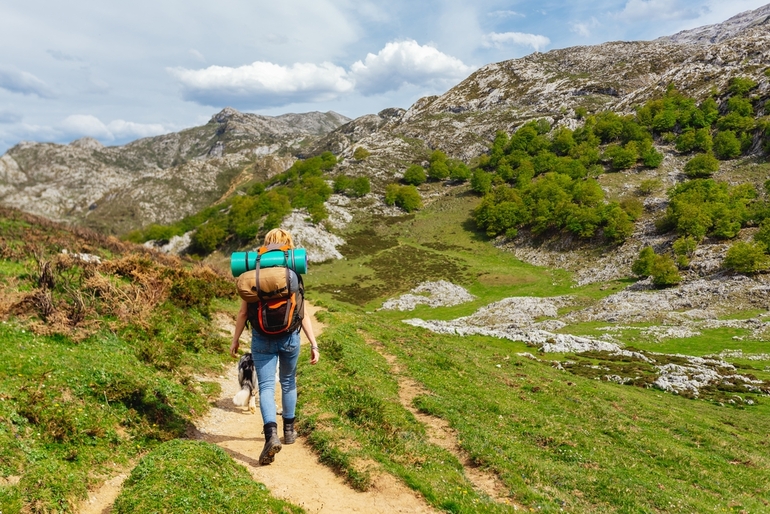
What do I need for a backpacking trip through Europe?
When setting off on a backpacking adventure through Europe, it’s essential to pack smart and prioritize the items that will make your journey smooth and enjoyable . This section will guide you through the must-have essentials, practical gear, and valuable tips to ensure you’re fully prepared for the adventure of a lifetime.
Packing cubes
Packing cubes are a game-changer when it comes to organizing your backpack . These lightweight and compact zippered bags help you categorize and compress your clothing, accessories, and other essentials. They not only save space but also make it easier to locate items quickly, keeping your backpack neat and efficient throughout your journey.
Universal adaptor plug
Europe has various electrical outlets , therefore a universal adapter plug is a lifesaver for keeping your devices charged. It allows you to connect your electronics to various power outlets without compatibility issues. Whether you need to charge your phone, camera, or laptop, a universal adapter plug ensures that you stay powered up no matter where you are.
Having a reliable power bank is essential when you’re constantly on the go. It keeps your devices charged when you can’t access a power outlet, making it indispensable during long bus rides, train journeys, or while exploring remote areas. A power bank provides peace of mind, allowing you to stay connected throughout your European adventure.
Travel Insurance
Travel insurance is a non-negotiable item on any backpacking checklist . It safeguards against unexpected medical emergencies, trip cancellations, lost luggage, and other unforeseen events that disrupt your travel plans. It provides financial protection and invaluable support when needed, ensuring you can enjoy your journey with peace of mind.
International SIM card
Staying connected while backpacking through Europe is essential for navigation, communication, and accessing vital information. An international SIM card allows you to make local calls, send messages, and access the internet at affordable rates, avoiding hefty roaming charges. It lets you stay in touch with loved ones, research destinations, and utilize helpful travel apps, making your journey smoother and more convenient.
Microfibre towel
A microfiber towel is a lightweight and quick-drying alternative to traditional bulky towels. It occupies minimal space in your backpack and is perfect for hostel stays, beach visits, or impromptu hikes. Its absorbent and fast-drying properties make it an excellent companion for staying fresh and dry while on the move.
Rain jacket
Europe’s weather can be unpredictable , and a compact and waterproof rain jacket is necessary. It protects you from unexpected showers and makes you comfortable during wet weather explorations.
Reusable water bottle
Staying hydrated is vital during your backpacking adventure, and a reusable water bottle is a sustainable and practical choice. Europe has numerous public water fountains where you can refill your bottle, saving money and reducing plastic waste.
Travel locks
Protecting your belongings is crucial while traveling. Travel locks provide extra security for your backpack, ensuring your valuables are safe during transit or when stored in hostel lockers. Choose TSA-approved and combination-based locks , as they are more convenient than key-based options.
A pair of lightweight, comfortable flip-flops are essential for hostel showers, beach trips, and casual strolls. They are easy to pack and provide a barrier between your feet and potentially unclean surfaces.
Eye mask and earplugs
Quality sleep is essential during your backpacking journey, especially in shared accommodations or noisy environments. An eye mask blocks unwanted light, while earplugs minimize noise disruptions, ensuring you can rest peacefully and wake up refreshed for your next adventure.
Travel first aid kit
A compact travel first aid kit is a smart addition to your backpack. It should include essentials like adhesive bandages, antiseptic wipes, pain relievers, blister patches, and personal medications. It gives you peace of mind and equips you to handle minor injuries or illnesses while on the go .
Pocket knife
A multi-purpose pocket knife comes in handy in various situations. From cutting food and opening packages to outdoor activities and emergencies, a pocket knife is a versatile tool that can be invaluable during your backpacking trip.
Good quality and quantity of socks for backpacking
Comfortable and breathable socks are a must when you’re constantly on your feet. Invest in good-quality socks that provide cushioning, moisture-wicking, and arch support. Packing an ample quantity of socks is essential to ensure you always have a fresh pair available while exploring Europe.
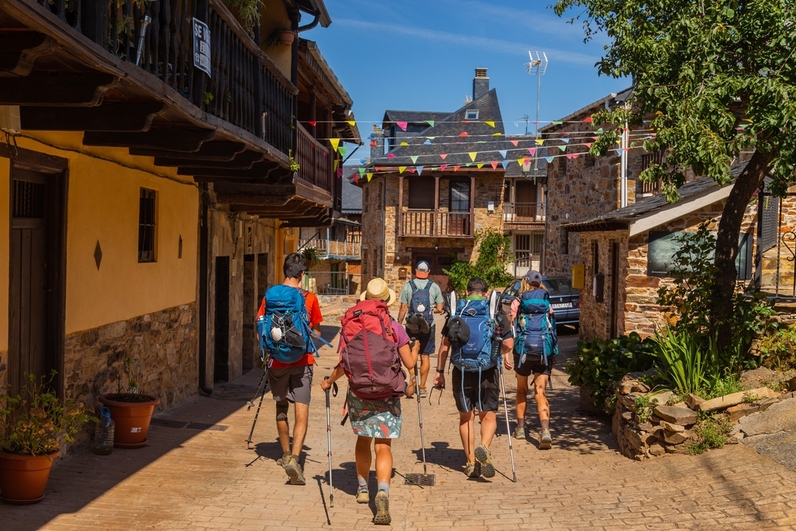
Small flashlight
A small, portable flashlight is a practical item to have on hand. It helps you navigate dimly lit areas, read maps in the dark, and find items within your backpack at night. Go for a compact, lightweight flashlight that can easily fit in your pocket or attach to your backpack.
Keeping your valuables safe and secure is paramount while traveling. A money belt is a discreet and secure way to store your passport, credit card, cash, and other important documents. Worn under your clothing, it provides an extra layer of protection against pickpockets and theft , giving you peace of mind while exploring bustling European cities.
An e-reader is a fantastic addition to your backpack for bookworms and avid readers. It allows you to carry many books in a single device , saving precious space and weight. Whether relaxing in a park or enduring a long bus ride, an e-reader provides entertainment and escapism at your fingertips.
Ziploc bags
Ziploc bags are versatile and practical for various purposes during your backpacking trip. They can organize and separate items, store snacks, protect electronics from water damage, keep toiletries leak-free, and even serve as makeshift waterproofing for documents or important items.
Besides your main luggage rack, having a smaller day pack is essential for day trips, hikes, or exploring cities. A day pack allows you to carry essentials like water, snacks, a camera, a jacket, and other items without weighing you down. Don’t forget to go for a pack that is lightweight, durable, and has comfortable straps for all-day wear.

How to pack for 2 weeks backpacking in Europe
Packing your hand luggage for a two-week adventure in Europe may seem daunting. Nevertheless, by following a few key principles and envisioning your pack as three distinct zones , you’ll be able to pack all your essentials while leaving behind unnecessary items efficiently.
Bottom of the backpack
The bottom of your backpack is best suited for lightweight items such as your sleeping bag . Placing your sleeping bag at the bottom not only provides structure to the base of the bag but also serves as a solid foundation for other items to be packed on top. This arrangement ensures that the weight is distributed evenly and prevents the bag from becoming top-heavy or unbalanced.
Against your backpack
When packing your backpack, it’s advisable to position your heaviest items closest to your back. This includes items like your laptop, camera, or any dense gear. Placing heavier objects against your back helps maintain balance and stability, preventing unnecessary strain on your shoulders and back . Additionally, it improves your overall posture and makes carrying the backpack more comfortable during travel.
Top of the backpack
The top of your backpack or the area down the front is ideal for packing medium-weight or bulkier items. This section suits items you may need to access more frequently or quickly, such as extra clothing layers for varying weather conditions, your water treatment system, or your first-aid kit. By placing these items near the top, you can easily retrieve them without having to dig through the entire contents of your backpack.
When packing your backpack for a trip, it’s crucial to maintain proper weight distribution to a void discomfort and maintain balance while on the move . The objective is to achieve a balanced pack, avoiding a top-heavy or bottom-heavy load.
To prevent any issues, pack heavier items close to your center of gravity, the middle of your back. This strategic placement ensures that the weight is evenly distributed and keeps you balanced while walking or hiking. By packing light and positioning the weight closer to your body’s natural balance point, you’ll find that the load feels more natural and easier to carry.

How to prepare a backpack for Europe
Preparing your backpack for an epic backpacking adventure through Europe is an exciting and essential step towards a successful journey. It is crucial to note that properly organizing and packing your backpack can make all the difference in terms of comfort, convenience, and ease of travel. Here are some tips:
Wash your clothes
Remember you can wash your clothes during the trip. There are many public laundry rooms available to all travelers. This way you can take the absolutely essential.
Wear your clothes more than once when backpacking
Maximizing the use of your clothing items is key to traveling light. Consider wearing your clothes more than once before washing them, especially if they are still clean and odor-free. This reduces the number of items you need to pack and saves time and effort spent on laundry during your travels.
Minimize your toiletry bag when backpacking
Toiletries can take up significant space and weight in your backpack. Minimize your toiletry bag by packing travel-sized items or transferring them into smaller containers . As you pack, consider if you truly need certain products or can find alternatives at your destinations. Additionally, you can coordinate with your travel companions to share common toiletries to reduce the load further.
Compression packing cubes
Utilizing compression packing cubes can revolutionize your backpacking experience. These cubes are designed to compress your clothing and other items, allowing you to fit more into your backpack while keeping everything organized. They help save space, prevent items from shifting, and make it easier to locate specific items without unpacking everything.
Don’t pack for the what if
It’s tempting to pack for every possible scenario, but it’s important to resist the urge to pack for hypothetical situations. Instead, focus on packing for the realities of your trip . Think of the weather, the activities you’ll be engaging in, and the duration of your journey.
Ditch bulky clothing when backpacking
Bulky clothing takes up precious space in your backpack. When packing, go for lightweight and versatile clothing items that can be layered for different weather conditions. Choose those that are breathable, wrinkle-resistant, quick-drying fabrics, and easy to mix and match. Just don’t bring everything!
Pack only 3 pairs of shoes that are light and can be compressed
Shoes can quickly consume space and add weight to your backpack. Aim to pack no more than three pairs of shoes, including the ones you wear during your journey . Select lightweight, comfortable, and versatile shoes to suit different activities.
Invest in a good backpack for backpacking through Europe
Your backpack is your travel companion, so investing in a quality backpack is essential. Look for a backpack that is durable, comfortable to wear, and properly fits your body . We highly recommend those with multiple compartments, padded straps, and a supportive hip belt.
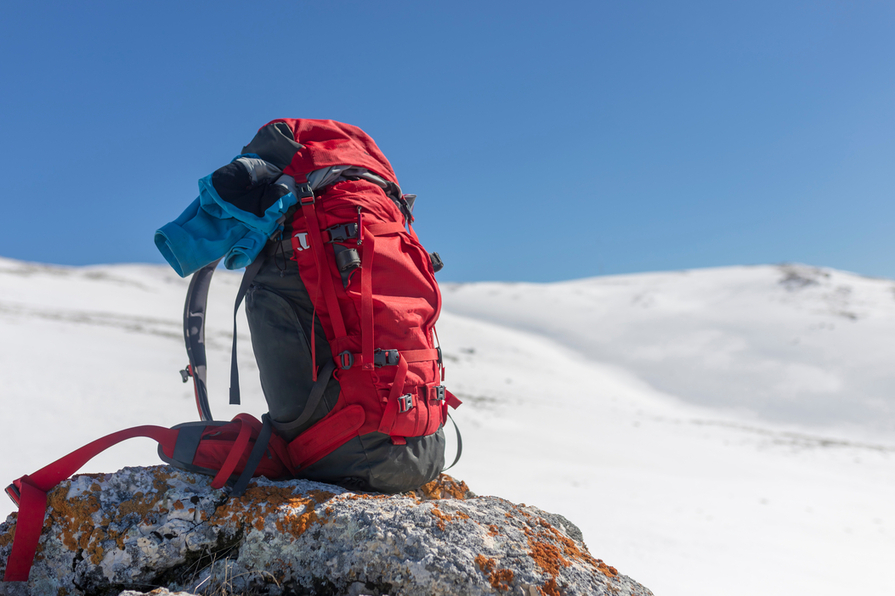
Don’t forget your travel insurance for your backpacking adventure
As you backpack Europe or anywhere else, having travel insurance is not just a luxury but an absolute necessity. Your health and well-being should always be a top priority, so we highly recommend our comprehensive travel coverage to safeguard you throughout your journey. Our insurance goes beyond just protecting your luggage; it also covers crucial aspects such as medical expenses, giving you peace of mind and a safety net in unforeseen circumstances.
Accidents and medical emergencies can happen unexpectedly, and without travel insurance, the financial consequences could be overwhelming. Our insurance coverage includes a wide range of essential benefits , such as medical assistance provided by experienced professionals, access to medical teams and specialists, necessary tests, hospitalization, treatments, and vital medical supplies. You can rest assured that in the event of a medical event, our insurance has you covered.
To ensure easy access to assistance, we have developed the Heymondo Assistance App , which is available 24/7. In the face of a medical emergency, you can quickly contact our app and receive prompt support and guidance from our dedicated team of doctors . This invaluable resource ensures you don’t have to worry about any challenges. Remember, your safety and peace of mind should never be compromised. Don’t embark on your backpacking adventure without travel insurance —it is an indispensable tool that protects you from the unexpected and ensures you can fully immerse yourself in the joys and wonders of your European journey.
Book your Travel Insurance
Featured stories
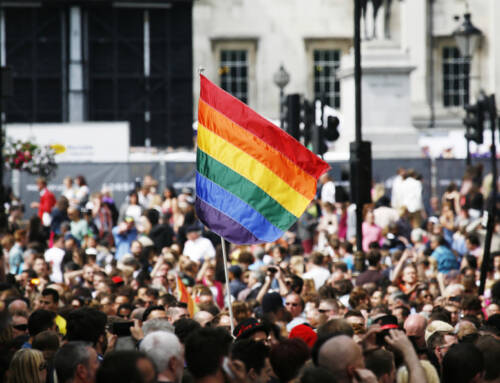
Best Pride parades around the world
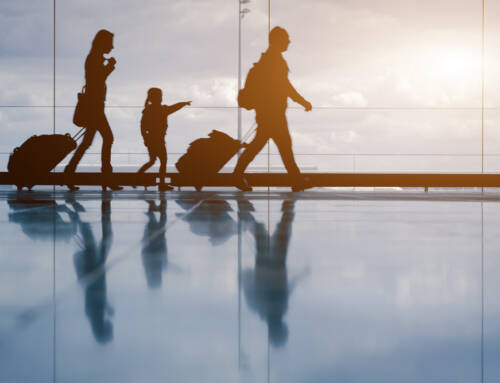
Why travel insurance is essential for traveling abroad

The Digital Nomad lifestyle, everything you need to know
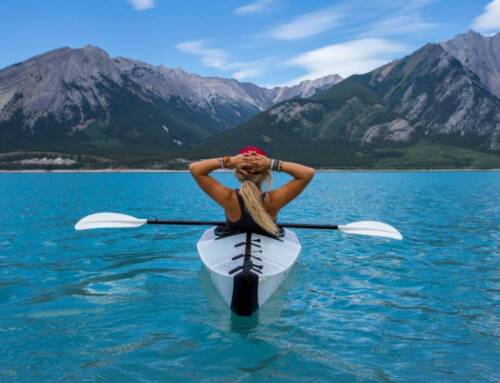
Reasons to buy travel insurance

Italy Digital Nomad Visa

How to make money while traveling
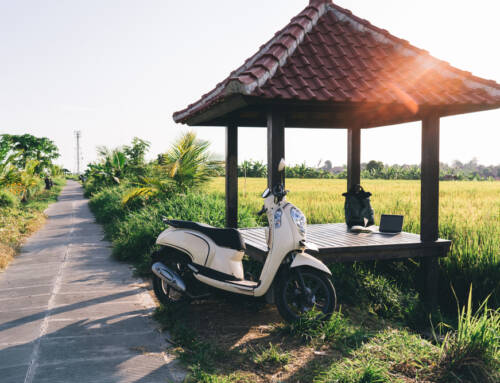
Bali Digital Nomad Visa; the complete guide

Digital Nomad Visa

Best music festivals in the world

Travel alone to Thailand: Useful tips for your next adventure

Subscribe to our newsletter for a wealth of travel content: expert guides, insider tips, deals, and so much more!
Travel insurance
Annual Multi-Trip travel insurance
Long Stay travel insurance
Travel insurance Covid-19
Travel insurance for Bhutan
Travel insurance for Chile
Travel insurance for China
If you are an existing Heymondo customer, download the App today:

Copyright © 2024 Heymondo
Privacy Policy
- Terms & conditions
Travel insurance for Brazil
Download our app, tailored to our customers’ needs!
Terms and conditions
Copyright © 2024 Mondo

The Ultimate Guide to Backpacking Through Europe on a Budget
D id you decide to finally take the plunge and embark on a backpacking journey through Europe in 2024? Congratulations, that's so exciting! You're in for a true adventure - from exploring diverse cultures, historic landmarks, and breathtaking landscapes, to trying out delicious meals and meeting fascinating people. However, we have to warn you. Just like anything else in life, it doesn't come without its risks. That means that you will have to do some careful planning. But are you also trying to do all of this with a frugal mindset? Backpacking though Europe on a budget is even harder! So let us share with you some tips and tricks on making the most of your European backpacking adventure without breaking the bank.
Budget-Friendly Transportation Is Everything
One of the keys to affordable travel in Europe is leveraging the continent’s extensive transportation networks. If you've never visited Europe before, you will be surprised at how inexpensive it can be to get around. But you have to be smart about it. Opt for budget airlines , such as Ryanair and EasyJet, or consider intercity buses like FlixBus and Eurolines for cost-effective travel between countries.
Also, don't underestimate train travel with passes like Eurail or Interrail for flexible and scenic journeys across Europe. Additionally, walking and cycling within cities offer not only budget-friendly options but also a chance to explore local neighborhoods intimately. Luckily, there are plenty of bike-renting stations everywhere across larger cities.
Accommodation Hacks
Next, let's talk accommodations. Obviously, if you want to travel frugally, it should be clear to you that five star hotels are out of the picture. But you can still explore alternative accommodation options that are significantly more budget-friendly. Hostels are a backpacker’s staple, offering affordable stays and a chance to connect with fellow travelers. Platforms like Hostelworld and Booking.com provide extensive listings and reviews.
You can also Embrace the sharing economy by using Airbnb for more affordable and authentic experiences. Especially if you're traveling with a group. Additionally, if you're feeling extra brave, you can consider couchsurfing. This could be a great chance to stay with locals and immerse yourself in their culture. However, remember that safety should always be your top priority.
Off-the-Beaten-Path Destinations
Traveling on a budget to expensive cities like Paris, Rome, Milan or Berlin can be hard to do. So, why not explore lesser-known destinations. This will not only offer you a more authentic experience but also tends to be more budget-friendly. Smaller towns and regions like Bruges in Belgium, Cesky Krumlov in the Czech Republic, or Porto in Portugal have a lot to offer too. However, they will be significantly less expensive (and crowded) than other tourist hot spots.
These places often offer unique charm, culture and history that you can explore without spending too much money. From accommodations, tickets, to dining out - almost everything will be less expensive. So make sure to keep your mind open, and explore places that aren't overhyped.
The post The Ultimate Guide to Backpacking Through Europe on a Budget appeared first on Malorie's Adventures .

Travel Europe on a Budget
The Savvy Backpacker
City Guides .\33 a132798-3f3b-4585-954d-7e70cf863447{fill:#231f20}
How to choose a backpack for traveling in europe.
How to find the perfect fitting travel backpack for exploring Europe.
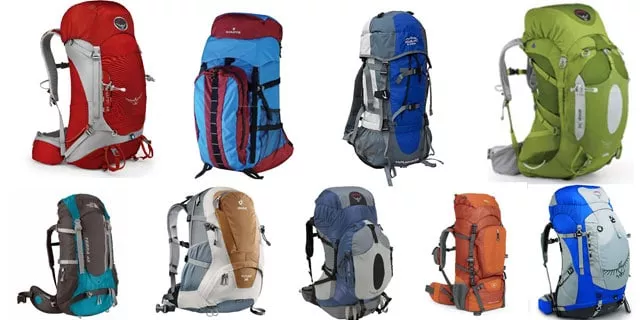
The first thing you need to backpack through Europe is a backpack—shocking, I know.
Choosing the right backpack for Europe can be confusing and time intensive but spending a little time finding the right bag will pay off in the long run. That’s because a properly fitting backpack is comfortable and allows you to travel swiftly and easily but a poor-fitting pack is like an anchor.
This guide will explain the different styles of travel backpacks available and how to choose the perfect one for you.
Travel Backpack Styles and Options

Read about the best travel backpacks for Europe o nce you’ve decided what style of backpack you want .
But First… Why Travel With A Backpack?
A backpack is a great choice for many travelers because it allows you to be highly mobile while on the road.
On the other hand, traditional suitcases and duffle bags can be inconvenient because they’re difficult to carry long distances. Wheeled suitcases aren’t well suited for Europe’s crowded streets, narrow train aisles, stairs, and cobblestones.
There are two main styles of travel backpacks — top-loading and front-loading.
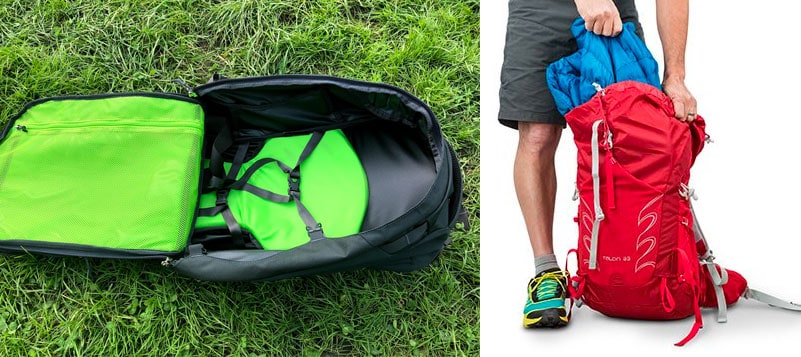
Top-Loading Backpacks
Top-loading backpacks have a single opening at the top that is closed by a drawstring and covered by a protective flap. These bags were originally designed for mountain/backcountry hikers, but many European travelers also use them.
Benefits of Top-Loading Backpacks
- No Zippers For Main Compartment: You can stuff a lot of stuff in your backpack without worrying about breaking a zipper.
- More Waterproof: The top closure means there is less chance of water getting into the bag.
- Lightweight: Top-loading packs tend to be lighter weight.
- Better Fit: These bags are slimmer and tend to fit better. They fit closer to the body and feel more natural.
- Good Support: The support systems are more advanced in top-loading bags because they were designed for long treks by serious backpackers. These bags are designed to be worn for hours at a time.
Negatives of Top-Loading Backpacks
- Difficult To Pack/Unpack: Since everything is loaded from the top, you basically have to take everything out of the bag to access your stuff. This can be somewhat alleviated if you pack your bag in a specific manner but it is still a hassle.
- Lots of Straps: These hiking-style backpacks have a lot of straps that can easily get caught and ripped off in the conveyor belts at the airport if you ever need to check your backpack.
- Less Secure: The top of the pack is closed via a drawstring, so it is a bit easier to gain access than compared to the front-loading style which can have its zippers locked.
- No Laptop Compartment: Most hiking-style backpacks aren’t built to hold a laptop if you’re planning in traveling with a laptop.
My favorite top-loading backpack is the Osprey Atmos .
Front-Loading (Panel Loading) Backpacks
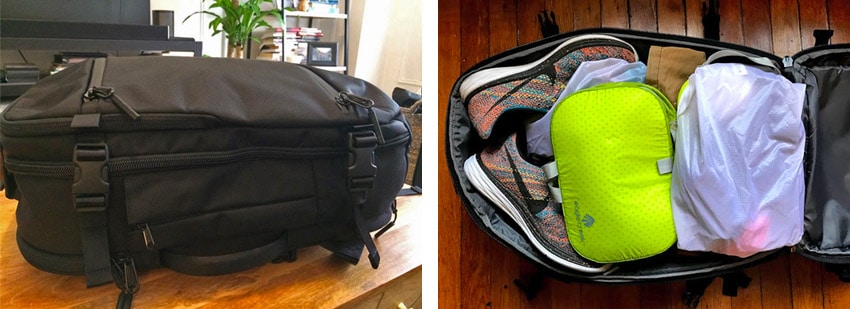
This style of backpack opens up like a traditional suitcase or a backpack you’d use at school. They are a cross between a suitcase and a backpack. This is the backpack style we recommend.
Benefits of Front-Loading Backpacks
- Easy access to all your stuff: You can simply unzip the zipper and get to whatever you need quickly. No need to totally unpack your bag when you need to get to something.
- Extra Pockets: Most bags of this style include a lot of extra pockets on the outside of the bag. This is nice because you will have easy access to the items that you use often.
- Easy to Organize: Add packing cubes to help make organizing your stuff much simpler.
Negatives of Front-Loading Backpacks
- Zippers can break: The zipper is one of the weakest points—higher-quality backpacks use heavy-duty zippers that can withstand more abuse, but zipper breakage is still a concern.
- Zippers Are Less Waterproof: Water can get in through the zipper. However, a lot of high-quality bags now come with waterproof zippers or you can buy a waterproof rain cover .
- Poorer Fit: Some people complain that these packs are too wide and less comfortable because it doesn’t hug your body as well as a hiking backpack.
- NOTE: Many higher-end backpacks now have a proper support system that is much more comfortable than older models.
Top-Loading vs Front-Loading Backacpks: Which Is Better?
Both styles work but personally, I would choose a front-loading backpack. I used a top-loading backpack during my first trip to Europe but loading/unloading it was a pain. These days I only use a front-loading backpack.
Our favorite front-loading backpacks are the Osprey Farpoint , Osprey Porter , Tortuga Travel Backpack , and AER Travel Pack 3 . Read our guide on how to pack your travel backpack for tips on keeping all your stuff organized while traveling.
What Size Travel Backpack Should You Choose?
Important Words of Wisdom: The number one mistake new travelers make is bringing way too much stuff… and that starts with buying a huge backpack. A large bag enables you to carry more unneeded stuff. A smaller bag forces you to pack light. I’ve seen people with backpacks so large and heavy that they need help getting it on their back/standing up.
Remember, you’re going to be carrying this bag around for long periods of time. It is important that you can handle your bag by yourself. You’ll be throwing your bag up in overhead bins on planes and trains. You’ll be walking through narrow train aisles and busy streets. Your heavy bag will quickly become a huge burden and it will negatively impact your trip. You’re also bound to piss a bunch of people off when you accidentally smash them with your house-sized backpack. REMEMBER TO PACK LIGHT!
Backpack Sizes

Backpacks are measured in liters and/or cubic inches. Most bags range from about 30L (1,800 cubic inches) all the way to 100L+ (6,000+ cubic inches).
I recommend a backpack around 40L-50L. Personally, I wouldn’t go over 65L, but some people like a bigger bag. You can always go smaller, but I wouldn’t recommend anything smaller than 35L — unless you’re into minimalist travel.
The length of your trip really doesn’t make much of a difference when it comes to choosing a backpack — so don’t buy a huge backpack because you’re going on a 6-month journey. You’ll carry the same amount of stuff for a 2-week trip as you will for a 6-month trip — you’ll just wash your clothes every few weeks.
Important Note For Budget Airlines: Budget airlines tend to be sticklers when it comes to baggage size and weight restrictions because they upcharge passengers for passengers who go over the limits. That’s why I recommend sticking with a backpack that isn’t larger than 45L if you want to avoid baggage fees on Ryanair or other discount airlines.
It’s also nice to be able to skip the baggage claim. Most importantly, you never have to worry about the airlines losing your luggage — this can be absolutely disastrous on a backpacking trip.
Important Features Of A Good Travel Backpack
Here are a few things to keep in mind when evaluating a travel backpack. You can also check out The Savvy Backpacker’s guide to the best travel backpacks if you want my personal favorites.
Build Quality
A backpack is one of the things you don’t want to skimp on but you don’t want to spend a fortune on either. I recommend looking for a backpack in the $150-$250 price range.
Look for bags made by legit backpack companies like Osprey, Tortuga, Kelty, AER, Mountain Hardware, and Arc’teryx (there are a few other good brands). REI also sells their affordable “REI brand” backpacks that are good quality.
Comfortable Shoulder Straps
Nice shoulder straps will make your journey much more comfortable by distributing the pack’s weight over more of your shoulder.
Padded Hip Belts
A hip belt helps transfer the weight of your backpack from your shoulders to your hips. You want the hip belt to be comfortable and fit correctly. However, if you’re packing light then a hip belt isn’t quite as much of a concern.
Lightweight Backpack
A heavy backpack can weigh 6-10 lbs empty. Once you start adding clothes the weight of the pack climbs very quickly. I recommend looking for a lightweight pack that weighs about 3-5 lbs.
Quality Zippers
Higher-end backpacks have better zippers that can withstand more abuse than cheap zippers that might fail when stressed by overpacking. If possible, look for bags with waterproof zippers and zippers that can be locked.
Plenty of Pockets
A few outside pockets are really handy for storing stuff that you need to access quickly.
Ventilated Back
Backpacks sit right up against your back and the limited airflow causes a nice sweaty back. Some packs offer a ventilation bubble (or chimney) by using mesh to allow air circulation. This is more of a luxury than a requirement.
Color and Style
Travel backpacks come in multiple styles and colors. Personally, I prefer black or other muted colors since they’re less “flashy” than bright colors.
You won’t wear your large backpack as you’re sightseeing—that’s what the daypack is for. You use your daypack to carry around your day-to-day stuff like a small jacket, camera, snacks, etc. For more information about daypacks be sure to check out our guide to our favorite daypacks for Europe .
Read our recommended best travel backpacks for Europe o nce you’ve decided what style of bag you want .
- Recent Posts
- Best Prepaid eSIM For Spain | Data Plan Buyer’s Guide - June 21, 2024
- Best eSIM For Europe Travel | Everything You Need To Know About European Prepaid eSIM Data Plans - June 6, 2024
- Orange Holiday Europe SIM Card Review | I Test This Popular Tourist-Focused Data Plan - June 4, 2024

No Funny Business
The Savvy Backpacker is reader-supported. That means when you buy products/services through links on the site, I may earn an affiliate commission—it doesn’t cost you anything extra and it helps support the site.
Thanks For Reading! — James
Questions? Learn more about our Strict Advertising Policy and How To Support Us .
Related Reads
Packing , Product Reviews
Best Travel Shoes — Fashionable & Comfortable Shoes for Traveling
The ultimate guide to the best travel shoes that are both stylish and comfortable.
The Best Travel Backpacks | In-Depth Buyer’s Guide & Backpack Reviews
A list of my favorite travel backpacks for every travel style.
Backpacking Europe Packing List — My Europe Travel Packing Guide
A comprehensive packing list and advice for budget backpacking and ultralight travel in Europe — including electronics, clothing, toiletries & accessories.
Helpful Travel Tips & Articles , Packing
Fashion Advice: How to Avoid Looking Like An American Tourist In Europe
Fashion advice to help you look like a local when visiting Europe.
City Guides
Choosing travel insurance, travel packing lists, budget travel newsletter.
The best budget travel tips sent straight to your inbox.
Join My Journey
Europe travel tips, advertising & privacy policies.
TheSavvyBackpacker.com is a participant in the Amazon Services LLC Associates Program, an affiliate advertising program designed to provide a means for sites to earn advertising fees by advertising and linking to amazon.com.
© 2010 - 2024 The Savvy Backpacker
Website Design by FHOKE
Protect Your Trip »
The 13 best carry-on backpacks of 2024, tested & reviewed.
Enjoy hands-free travel with a versatile carry-on backpack.
The Best Carry-on Backpacks

Leilani Osmundson | U.S. News
Not sure whether to take a rolling suitcase or a travel backpack on the plane? Both types of carry-on luggage certainly have their merits, but if you like keeping your arms and hands free when traveling, a backpack is the right choice for you. Furthermore, compared to a hard-sided suitcase , it's easier to squeeze a malleable backpack into an overhead bin or under the seat. And if your vacation is focused on adventure travel, you might value a durable pack on your back over wheels on the ground.
U.S. News compiled this list from extensive research and testing along with consumer reviews. Whatever your reason for choosing a backpack, there are plenty on the market to satisfy your needs. Read on for the best carry-on travel backpacks.
Best Overall: Cotopaxi Allpa 35L Travel Pack
- Jump to features and expert insights ↓
Best Budget: ZOMAKE Ultra Lightweight Hiking Backpack 20L
Best lightweight: mz wallace metro utility backpack.
- Best for Business Travel (tie): Dagne Dover Dakota Neoprene Backpack – Large
- Best for Business Travel (tie): Aer Travel Pack 3
Best for International Travel: Osprey Farpoint 40 Travel Pack
Best for weekend getaways: solo grand travel tsa backpack, best for women: tumi voyageur celina backpack, best for men: peak design travel backpack 45l, best for adventure travel: kelty redwing 36, best with wheels: samsonite tectonic nutech wheeled backpack, best organization: augustnoa classic noa, best leather: monos metro backpack in vegan leather.
(Note: Prices and availability were accurate at the time of publication; they may fluctuate due to demand and other factors. Dimensions of backpacks are height by width by depth.)

Price: $200 or less
When it comes to bag travel, the Cotopaxi Allpa packs a serious punch. The carry-on backpack is available in three sizes – 42L, 35L and 28L – and a variety of colors, including the vibrant multicolor Del Día style. The 35L size not only fits everything you need for your next getaway, but it's also TSA-compliant as a carry-on item . On the outside, the Allpa features a removable waist belt, a padded laptop sleeve on the side, anti-theft zippers, carabiner lash loops for extra gear, a sternum strap and a front zippered pocket. The backpack straps can be tucked away if you're looking to save more room in the overhead bin or you want to carry the bag via its grab handles.
The bag opens suitcase-style; inside, you'll find one large zippered mesh compartment on the right and a subdivided zippered mesh compartment on the left, providing ample space for all your clothes, shoes and accessories. What's more, the bag comes with a rain cover (though it's already water-resistant).
What our editors say:
I've taken my Cotopaxi Allpa on countless adventures, from a road trip around Iceland to camping all over Colorado. It fits more than expected, is comfortable to wear (especially if using the waist belt) and is extremely durable. I just wish the 35L had an exterior water bottle pocket like the 42L does! – Leilani Osmundson, Senior Digital Producer

Erin Evans | U.S. News

Price: $15.99 or less
This backpack has three excellent things going for it: It's affordable, lightweight and durable. It's a great option for a weekend getaway bag and is an excellent little backpack to have on hand for tours and day trips once you make it to your destination. If you're planning to hike or kayak on your next getaway, you'll definitely want to have the ZOMAKE Ultra Lightweight Backpack in your back pocket – literally. It can be folded into a compact pouch and tucked away in a larger carry-on bag if you're planning to only use it as a daypack.
The lightweight travel bag is both tear- and water-resistant. With all of its pockets – including one on each side for water bottles or umbrellas – you'll be able to fit everything you need for an adventure-filled trip.
It can fit enough for a weekend trip, plus it's super useful for hiking, boat excursions and more once you're in your destination because it's so light and water-resistant. I've used it for years and it has held up incredibly well; it comes in so many fun colors, too. I love it so much, I bought two so my husband has one he can use as well. – Erin Evans, Managing Editor

Rachael Hood | U.S. News

Price: $345 or less
Constructed with recycled bluesign-approved quilted nylon, this chic bag is packed with pockets and organizational details. The interior has a padded 15-inch laptop sleeve, a large zip pocket with two slip pockets, two water bottle pockets and two removable pouches. On the front of the bag there's a deep phone pocket and multiple zippered pockets of various sizes, including a small one that's ideal for a boarding pass, earbuds or wipes.
A water bottle pocket sits on each side of the bag, and the back of the bag has a luggage trolley sleeve that can be zipped shut on the bottom to be a pocket when not attached to your suitcase. This backpack has a top-zip design, and can be carried by the two top handles or the adjustable padded backpack straps.
This bag has completely changed my mind about backpacks. It's extremely spacious and works so well for my laptop, change of clothes, toiletry bag and other carry-on essentials. I love all of the pockets and that I can carry this like a north-south tote in addition to using the trolley sleeve or backpack straps. But what truly sets this apart is the beautiful fabrication that is so soft and the luxurious Italian leather details. – Rachael Hood, Senior Editor
Best for Business Travel: Dagne Dover Dakota Neoprene Backpack and Aer Travel Pack 3 (tie)
Dagne dover dakota neoprene backpack – large.

Catriona Kendall | U.S. News

Price: $215 or less
This sleek, professional backpack by Dagne Dover is perfect for professional and casual settings alike, with a vast array of organizational features and a 20-liter capacity for the large size. On the outside, you'll find a zippered padded pocket for up to 16-inch laptops and a slip pocket for your phone, while an interior sleeve can fit a tablet or a second laptop, allowing you to travel with multiple devices. The inside of the bag has two mesh slip pockets and a zip-top pouch attached with a leash, as well as three zippered pockets in the front panel.
To help you stay even more organized, the exterior also features a zippered front pocket with pen loops and a key clip; two zippered side pockets; two slip side pockets; and straps to secure a small bottle. The water-resistant bag comes with adjustable shoulder straps, a luggage sleeve and a separate shoe bag.
I adore bringing this bag to work and using it as a personal item on flights. I don't think I've ever used a backpack with better organization than this one – there's a dedicated place for every little thing, from keys to pens to my devices. I also love that the neoprene material is extremely lightweight and water-resistant. – Catriona Kendall, Editor
Aer Travel Pack 3

Price: $249 or less
With a pocket for everything, the clamshell-style Aer Travel Pack 3 keeps you organized to the max on business trips. Keep your laptop (up to 16 inches) safe in the padded, zippered laptop sleeve, and stow your passport in the quick-access side pocket. The front compartment features several sizes of pockets perfect for chargers, notepads, pens and more. Along with the lay-flat main compartment for clothes, there's also an interior pocket for small accessories as well as a hidden luggage tracker pocket.
Designed for one-bag travel, the durable Aer Travel Pack 3 also features a water-resistant nylon exterior along with load lifters for a more comfortable fit. You can purchase a hip belt separately.
The Aer Travel Pack 3 has one of the sleekest designs when it comes to carry-on backpacks. I also appreciate all the pockets: The sizable laptop pocket is perfect for someone like me who uses a huge laptop; the eight pockets in just the front compartment are so handy for everything you could need while traveling; and the bag even comes with a zippered water bottle pocket on the side. – Leilani Osmundson

Price: $185 or less
The Osprey Farpoint is truly an all-in-one travel pack that combines quality with minimal weight. The clamshell-style carry-on bag features a substantial main compartment across from a large mesh pocket. There's an easy-to-access zippered laptop sleeve on the side for devices up to 16 inches.
For extra support and comfort, the backpack includes a sternum strap, back panel, harness and hip belt; the latter three can be zipped up for fully streamlined travel, and compression straps help slim the bag down even more. The Osprey Farpoint 40 meets most domestic carry-on size requirements and is compatible with the Farpoint/Fairview Travel Daypack , which can be brought onto the plane as a personal item.
This is one of my favorite backpacks. I love how the back can be zipped up so the bag more resembles a duffel; this makes it easy to stow away without having to deal with a lot of straps. Additionally, the interior compression straps can really help cinch down belongings, especially if you're using packing cubes . – Leilani Osmundson
Tips on Trips and Expert Picks Newsletter
Travel tips, vacation ideas and more to make your next vacation stellar.
Sign up to receive the latest updates from U.S News & World Report and our trusted partners and sponsors. By clicking submit, you are agreeing to our Terms and Conditions & Privacy Policy .

Amanda Norcross | U.S. News

Price: $117.99 or less
Perfect for weekend getaways , the Solo Grand TSA Travel Backpack opens like a regular suitcase. In the main compartment, you can secure several outfits with compression straps and store accessories and toiletries in two zippered mesh pockets. In the back, a padded compartment protects laptops up to 17.3 inches in size, and on the front there are a variety of pockets – even pockets within pockets – for your phone and other essentials. This backpack is also equipped with two side mesh pockets, a trolley sleeve, and side and top carry handles.
This backpack is flawless. It's big without the bulk and has plenty of pockets, which not only makes it ideal for weekend getaways but also prevents me from having to awkwardly rummage through my bag when I need something on the plane. – Amanda Norcross, Senior Content & SEO Strategist

Price: $475 or less
This backpack blends function and fashion with a compact design. On the front of the bag are two zip compartments and a U-zip pocket with a card slot, a slip pocket and a pen holder. The interior of the bag is divided into two separate compartments: one zippered section with a padded laptop compartment (holds up to a 15-inch PC or 16-inch MacBook), and another large compartment with a zippered pocket and two slip pockets (ideal for glasses or charging cords).
There is also a zippered compartment on each side of the bag, one of which has a water-resistant lining for a water bottle. On the back of the bag you'll find a hidden phone compartment and a trolley sleeve to attach to a roller bag.
This style oozes sophistication, especially the black with the gold hardware. From its sleek material to its many pockets and details, this backpack looks and feels like a chic handbag that can go from the office to a beach resort with ease. I especially like that there are two places you can access the front compartment of the bag, and I like that the laptop section is separate from the rest of the backpack so it's easier to take out my computer and go through airport security (which makes me less likely to drop something from inside my bag). – Rachael Hood

Price: $299.95 or less
The Peak Design Travel Backpack 45L is a solid, rugged choice that will last. The nylon canvas shell of the backpack is weatherproof and water-resistant, with a waterproof bottom liner as well. You can unzip the back panel to access the main packing compartment, which is also accessible via zippers along each side of the bag and can be divided in two by a mesh sleeve. To keep you organized, this backpack has quick-access pockets for small items like passports and glasses, plus expandable side pockets for water bottles, tripods or umbrellas.
The bag meets carry-on size requirements but can expand by 1.5 inches if you need the extra room; the shoulder straps and hip belt tuck away if you plan to check it instead. If you prefer a smaller bag, the Peak Design Travel Backpack also comes in a 30-liter size .
If you only want to bring one bag on a short trip, you can't go wrong with this backpack. It's sturdy, reliable and able to fit a ton while still being carry-on-sized. It served me well on a recent trip to New Zealand, and I'd definitely recommend it for travelers who like hands-free luggage. – Catriona Kendall

Price: $134.95 or less
If you'll be adventuring in the great outdoors for your next trip, consider purchasing the Kelty Redwing 36 backpack. You'll find two exterior water bottle pockets as well as a hydration-friendly inner pocket (for storing a water bladder). Tool loops can hold hiking poles, fishing poles, ice axes or other adventure gear. Organization is made easy with plenty of zippered pockets, including one on each side of the bag, a large one on the front and one on top that's perfect for storing travel documents such as a passport. Plus, a ventilated back panel helps keep you cool when you're hurrying through airports or hiking up a mountain.
If you need a bigger backpack, the Kelty Redwing 50 Tactical is a great checked bag option and has many of the same features as the Redwing 36 along with more straps and pockets.
The Kelty Redwing 36 can be cinched down quite a bit for truly streamlined travel and to better meet carry-on size guidelines. However, I'll caution that the waist belt is difficult to remove. – Leilani Osmundson

Price: $159.99 or less
If you want the flexibility to either carry or wheel your luggage, a wheeled backpack style may work best for you. The Samsonite Tectonic NuTech Wheeled Backpack transforms from a rolling bag into a backpack by just tucking in the handle, pulling out the stowed straps and using the wheel cover. The durable polyester material is water-repellent and has red accents.
There are three sections to this bag: a main compartment with space to pack for a weekend trip, a dedicated sleeve for both a laptop up to 15.6 inches and a tablet up to 11 inches, and a front pocket equipped with various organizational features. There are various small pockets, pen sleeves, card slots and a key leash within. You can tuck a water bottle and umbrella into the exterior pockets on either side of the bag. Just keep in mind that this bag may slightly exceed carry-on size restrictions on some airlines with stricter rules.
I expected a wheeled backpack to be uncomfortable to carry, but this convertible bag has proved surprisingly convenient. I like having both the rolling and hands-free options for different circumstances, and it has ample packing space. – Catriona Kendall

Price: $148 or less
This sustainable water-resistant backpack is constructed with 100% recycled materials and has 10 pockets to organize everything. The spacious interior compartment has a 17-inch padded laptop sleeve and a tablet sleeve with a strap to secure it in place, as well as an interior mesh pocket for small items or charging cords and a removable shoe bag.
On the exterior, the front pocket has a built-in mesh organizer for pens, and there are mesh water bottle holders on each side of the backpack. The back of the bag has two adjustable padded straps, each with a built-in zippered compartment ideal for keys, ID or tickets. A hidden zip pocket makes for a secure space for a wallet or passport, and the trolley sleeve provides added versatility.
This backpack is great for travel or everyday use. I especially appreciate the comfortable backpack straps with the small zip pockets. They are easy to reach and perfect for small items like lip gloss, cash or a transit card. Durably constructed, the water-resistant exterior performs well in any weather, and I love that there's a padded space for both my laptop and iPad. – Rachael Hood

Price: $230 or less
For an upscale backpack that can be dressed up or down, this Monos style is an ideal choice. Constructed with sustainable vegan leather (there's also a nylon version with vegan leather accents), this structured style is both water- and scratch-resistant. The 15-inch laptop sleeve is separate from the main packing compartment so you can access your device easily. The brand's QuickSnap Modular Kit System means you'll have a detachable Metro Kit for small items that attaches magnetically to the front of the bag; this kit is interchangeable between Metro bags and can be swapped out for a different kit or removed entirely, depending on your needs.
The backpack's main compartment is designed for maximum functionality with a felt-lined document sleeve, a large zippered pocket, two slip pockets, and a waterproof zippered privacy compartment for a rain jacket or gym clothes. On the back, you can make use of a hidden slip pocket for your phone, a trolley sleeve and adjustable padded straps. There's also two top carry handles if you'd prefer to carry this backpack like a tote.
I really like the elevated styling and durability of this vegan leather bag. But what sets it apart is the separate laptop compartment (I don't like to have to open my entire bag to get out my laptop while on the go), and the modular Metro Kit system that can be removed when it's not needed. It's full of value-added design elements, and the material looks classic and appropriate with any attire. – Rachael Hood
Frequently Asked Questions
Depending on its size, a backpack is considered a carry-on item. To be able to put it in the overhead bin, you generally don't want it to exceed 22 x 14 x 9 inches, but that sizing varies by airline, and since backpacks are soft-sided, the dimensions can be somewhat malleable. If it fits under the seat in front of you on the plane ( check your airline's specific size requirements ), it is typically considered a personal item. If the backpack can fit under the seat, then you can often bring it in addition to a larger carry-on bag (based on your airline ticket type and inclusions).
For a backpack to be a carry-on for most domestic airlines, it should not exceed 22 x 14 x 9 inches (or should be able to be squished to approximately those dimensions). To be considered a personal item, it must fit under the seat in front of you. Underseat size and space varies by airline and airplane type, so it's best to check with your airline's size restrictions.
How We Tested
From the comfort of the straps to the capacity of each bag, our team tested more than 20 carry-on backpacks from a variety of brands at a range of price points. We tested to see how the overall structure of the bag works for travel needs, along with the durability and details that make a difference. After taking these backpacks on a variety of adventures, we've selected these carry-on backpacks as the best for 2024.
You might also be interested in:
- The Best Luggage Sets
- The Best Rolling Duffel Bags
- The Best Toiletry Bags
- The Best Fanny Packs
- The Best Travel Insurance
Vacation Ideas for Every Traveler

Tags: Travel , Travel Gear
World's Best Places To Visit
- # 1 South Island, New Zealand
- # 4 Bora Bora
If you make a purchase from our site, we may earn a commission. This does not affect the quality or independence of our editorial content.
You May Also Like
The 7 best key west snorkeling tours.
Gwen Pratesi June 21, 2024

The Best San Diego Whale Watching
John Rodwan June 21, 2024

6 Top Boston Harbor Cruises
Brittany Chrusciel and Marisa Méndez June 21, 2024

Fun Things to Do in Oklahoma
Ben Luthi and Justine Harrington June 20, 2024

Fun Things to Do in Pennsylvania
Amanda Norcross June 20, 2024

Carry-on Luggage Sizes by Airline
Amanda Norcross June 18, 2024

What to Bring to a Water Park

Top Things to Do in New Hampshire
Timothy J. Forster and Mariya Greeley June 14, 2024

The Best Scotland Tours
Marisa Méndez June 13, 2024

Flight Canceled or Delayed? What to Do
Amanda Norcross June 13, 2024

Backpack Sizing For Extended Euro Trips
- Last updated Jun 21, 2024
- Difficulty Beginner
- Category Travel

When travelling around Europe, a backpack is a great choice. It allows you to be highly mobile and is easier to carry than a suitcase or duffle bag.
The best size for a backpack for 9 days in Europe is around 40L-50L. This will give you enough space to pack what you need without being too heavy or bulky. It's important to pack light and only bring the essentials, as you'll be carrying your bag through busy streets, train aisles and airports.
Look for a backpack with comfortable shoulder straps and a hip belt to help distribute the weight. Also, make sure it has a lightweight design and durable zippers. Some other useful features include exterior pockets, a padded laptop sleeve and a waterproof material or cover.
Overall, choosing the right backpack for your European trip will make your travels much easier and more enjoyable.
What You'll Learn
Backpack capacity for a 9-day trip, choosing between top-loading and front-loading backpacks, carry-on luggage vs. checked luggage.
- How to pack your backpack?
Backpack weight and comfort

When preparing for a 9-day trip to Europe, choosing the right backpack capacity is essential for a comfortable and enjoyable journey. Here are some key considerations and recommendations for selecting the perfect backpack size:
Backpack Styles
Before selecting a backpack capacity, it's crucial to understand the different styles available. The two main types are top-loading and front-loading backpacks. Top-loading backpacks have a single opening at the top secured by a drawstring and a protective flap. They are typically designed for hiking and offer advantages such as no zippers, better water resistance, lightweight construction, and a better fit. However, they can be challenging to pack and unpack, have numerous straps, and lack a dedicated laptop compartment.
On the other hand, front-loading backpacks open like a traditional suitcase or school bag. They provide easy access to your belongings, often include extra pockets, and are generally easier to organise. However, their zippers may be less durable and waterproof than top-loading backpacks, and some users find the fit to be less comfortable.
Backpack Capacity Recommendations
For a 9-day trip to Europe, the recommended backpack capacity is generally in the range of 40-50 litres. This size offers ample space for your belongings while keeping the weight manageable. It's important to remember that you'll likely be carrying this backpack for extended periods, so choosing a size that you can handle comfortably is crucial.
Some sources suggest that the duration of your trip doesn't significantly impact the required backpack capacity. You'll bring a similar amount of clothing and essentials regardless of whether your trip is two weeks or six months, as you can always do laundry along the way.
If you're aiming to travel carry-on only, it's crucial to consider the restrictions of budget airlines in Europe, such as Ryanair or Wizz Air. These airlines can be strict about baggage size and weight, so a backpack capacity of 45 litres or less is advisable to avoid additional fees.
Key Features to Look For
When selecting a backpack for your 9-day trip, consider the following essential features:
- Comfortable shoulder straps
- Hip belt to distribute weight to your hips
- Lightweight construction (aim for 3-5 lbs)
- Durable, high-quality zippers
- External pockets for quick access to frequently used items
- Ventilation or mesh backing to improve airflow and reduce back sweat
- Neutral or muted colours to avoid standing out too much
Additional Tips
To make the most of your backpack space, consider using compression packing cubes. These help compress your clothing, saving space and keeping your belongings organised. Additionally, a dedicated toiletry bag is recommended to avoid spills and improve organisation. Finally, always pack light and choose versatile clothing that can be mixed and matched to reduce the number of outfits you need to bring.
Discover Other Travel Sites Similar to Travelocity
You may want to see also
When choosing between top-loading and front-loading backpacks for your nine-day trip to Europe, there are several factors to consider. Both options have their advantages and disadvantages, and the best choice for you will depend on your specific needs and preferences. Here are some key points to help you decide:
Advantages of Front-Loading Backpacks:
- Security: Front-loading backpacks typically offer more security than top-loading ones. They can be secured with a padlock, providing greater peace of mind, especially in crowded places or during travel.
- Ease of Packing: Front-loading backpacks are easier to pack and unpack due to their larger opening. You won't have to struggle with stuffing items through a small hole at the top, making it more convenient to organise and access your belongings.
- Sturdiness: Front-loading backpacks are usually made of tougher material. While top-loading backpacks prioritise lightweight design for hiking and adventure activities, front-loading backpacks provide extra durability.
- Frame Design: Front-loading backpacks often have a frame that helps maintain their shape, even when they're not completely full. However, some travellers consider a frame to be a disadvantage as it may render the bag unusable if it breaks.
Advantages of Top-Loading Backpacks:
- Better for Smaller People: Top-loading backpacks are thinner and fit better on smaller frames, making them easier to handle in crowded spaces or on public transport.
- Comfort and Support: Top-loading backpacks are designed for long-distance hiking, so they're built to distribute weight more effectively, taking the load off your back and onto your hips. This makes them more comfortable for walking long distances, even for extended periods.
- Lightweight: Top-loading backpacks are designed to be lightweight, making them ideal if you're counting ounces or grams to meet carry-on restrictions.
When deciding between a top-loading or front-loading backpack for your trip to Europe, consider factors such as security, ease of packing, weight distribution, and overall comfort. Remember to choose a backpack that suits your body type, travel style, and specific needs. It's always a good idea to test out different options in person to determine which one works best for you.
Exploring Florida's Status on the Do Not Travel List: What You Need to Know
When preparing for a trip, it's important to consider the pros and cons of carry-on luggage versus checked luggage. Here are some factors to help you decide which option is best for your nine-day trip to Europe:
Carry-on Luggage:
Carry-on luggage offers several advantages. Firstly, it allows you to save money by avoiding checked baggage fees, which can be costly, especially when travelling on a budget. Additionally, carry-on luggage provides quicker check-ins as you can skip the baggage drop-off process and go directly to security. This also means a faster arrival at your destination, as you won't have to wait at the baggage carousel. Carry-on luggage is also ideal if you're constantly on the move, as it enables convenient and quick packing. Furthermore, carry-on luggage reduces the risk of losing your belongings since it stays with you throughout the journey. Lastly, carry-on luggage is generally smaller and lighter, making it easier to manoeuvre through airports and during layovers.
Checked Luggage:
Checked luggage, on the other hand, offers the benefit of additional packing space. This is particularly useful if you plan to shop or bring back souvenirs, or if you're travelling to a cold destination and need bulkier clothing. Checked luggage also relieves you from carrying the weight of your baggage during your travel, which can be a significant advantage during long layovers or when navigating busy airports. Additionally, checked luggage may provide more peace of mind regarding overhead bin space on the plane.
Considerations:
When deciding between carry-on and checked luggage, it's essential to consider the nature and duration of your trip. If you're travelling for a short period, such as a weekend getaway, carry-on luggage might be sufficient. However, for longer trips or if you need to transport gifts or special equipment, checked luggage could be more suitable. Keep in mind that baggage fees vary among airlines, so it's important to check their policies before making a decision. Additionally, if you're travelling with valuable items, carry-on luggage might be preferable as it reduces the risk of theft or damage. Lastly, consider your packing style and the amount of clothing you'll need. If you prefer to pack light and mix and match outfits, carry-on luggage might be ideal. However, if you require a variety of outfits and accessories, checked luggage will provide the necessary space.
Recommendations:
For a nine-day trip to Europe, a carry-on backpack in the size range of 35-45L should be sufficient. This will allow you to stay within the carry-on limits of most airlines while providing enough space for your essentials. Additionally, a backpack will offer more comfort and manoeuvrability during your travels. Some recommended backpacks for European travel include the Osprey Porter 46L, the Salkan Backpacker, and the Tortuga Travel Backpack. These options provide a balance between size, comfort, and organisational features.
In conclusion, by considering the advantages and disadvantages of both options, you can make an informed decision that suits your travel needs and preferences.
The Ultimate Guide on Where to Stay in Lisbon for Solo Travelers
How to pack your backpack.
Packing a backpack efficiently is an art. Here are some tips to help you pack your backpack for your nine-day trip to Europe:
Planning and Preparation:
Firstly, gather everything you think you might need for your trip. Then, be ruthless and cut that pile in half—you won't need as much as you think. Focus on versatile clothing that can be mixed and matched or layered, and roll rather than fold to save space.
Packing Techniques:
- Start with your bulkiest items first, keeping weight low and centred.
- Use compression sacks for bulky items like sleeping bags.
- Place fuel at the bottom of your pack in case of leaks.
- Put cookware in the centre of your pack, close to the back panel.
- Attach lighter items to the front of your pack with carabiners, balancing weight on both sides.
- Use external loops and straps for awkwardly shaped items like tent poles.
- Keep important items like survival gear and outerwear in the brain of the pack for easy access in emergencies.
- Pack heavy items such as shoes and electronics close to your body and in the vertical middle of your pack.
- Place medium-weight items at the vertical top of your pack, and lightweight items like clothes at the bottom.
- Roll your t-shirts to make them into thin rectangles that can be stuffed into gaps and down the sides.
- Pack pants and socks in a drawstring bag to create a layer or false floor, or use them to fill in gaps.
- Cover everything with a towel or sarong before pulling the drawstring tight to keep items from poking out.
- Use the rolling and coiling technique for all fabric items to cut down on creases.
- Use packing cubes to keep your items organised and condensed.
Choosing the Right Backpack:
- Aim for a carry-on-sized backpack, around 40-45L, to avoid checked bag fees.
- Look for a backpack with a hip belt to transfer most of the weight to your stronger leg muscles.
- Choose a backpack with a front-loading clamshell design, like a suitcase, for easy access to your belongings.
- Opt for a backpack with exterior pockets, a padded laptop sleeve, and external water bottle pockets.
- Prioritise comfort with padded shoulder straps and a well-padded back panel.
- Consider investing in a theft-proof backpack with lockable zippers to deter thieves.
Pack Some Style: Traveling with Hairspray in Checked Luggage is Possible
When it comes to backpacking, weight and comfort are key considerations. A loaded backpacking pack should ideally weigh no more than 20% of your body weight. For example, if you weigh 150 pounds, your pack should not exceed 30 pounds. This guideline can help you maintain a manageable weight and protect your joints and improve comfort. However, it's important to note that for very petite backpackers, this percentage may not be achievable due to the minimum amount of gear required.
To enhance comfort, it's recommended to have a backpack with a hip belt that can hold up to 80% of the pack's weight. Padded shoulder straps and a well-padded back panel are also essential for a comfortable journey. Additionally, a hiking-style suspension system can significantly improve comfort by transferring most of the weight to your stronger leg muscles.
When choosing a backpack, it's crucial to consider the trip's duration, the season and weather conditions, and your personal preferences for comfort items. These factors will influence the weight of your pack. For example, colder temperatures will require heavier and warmer clothing and gear.
To reduce pack weight, it's recommended to know your base weight, which excludes consumables like food, water, and fuel. Ultralight backpackers typically have a base weight under 10 pounds, while lightweight backpackers aim for under 20 pounds, and traditional backpackers stay under 30 pounds. Replacing old gear with lighter options, eliminating unnecessary items, meal planning, repackaging, and using a gear list can also help reduce weight.
When it comes to comfort and weight distribution, the Granite Gear Blaze 60, Osprey Atmos AG 65, and Osprey Aether 65 are highly recommended options. The Blaze 60 is a lightweight pack that can comfortably support up to 50 pounds and offers a range of practical features. The Atmos AG 65 stands out for its innovative anti-gravity suspension system, providing exceptional weight distribution and ventilation. On the other hand, the Aether 65 excels in carrying heavier loads with its sturdy and adjustable design.
A Complete Guide on Traveling from Islip Airport to Brooklyn
Frequently asked questions.
The ideal size for a backpack for nine days in Europe is around 40-50L. This allows you to pack light while having enough space for essentials and some extras.
Front-loading backpacks offer easy access to your belongings, similar to a suitcase. They usually have multiple pockets and compartments, making organisation easier. Additionally, they often have more advanced support systems compared to top-loading backpacks, providing more comfort during longer walks.
To maximise space, consider using compression bags or cubes to squeeze out the air and reduce the volume of your clothes. Roll your clothes instead of folding to save space. Only pack essentials and be mindful that you can always do laundry during your trip.
Look for comfortable shoulder straps, a hip belt, lightweight yet durable material, high-quality zippers, and some external pockets for quick access to frequently used items. A waterproof backpack or one with a rain cover is also beneficial for Europe's variable weather.

- Karli Trujillo Author Editor Reviewer

- Merve Nussman Author Reviewer Traveller
It is awesome. Thank you for your feedback!
We are sorry. Plesae let us know what went wrong?
We will update our content. Thank you for your feedback!
Leave a comment
Travel photos, related posts.

Stay Informed: Florida Travel Quarantine End Date Revealed
- May 14, 2024
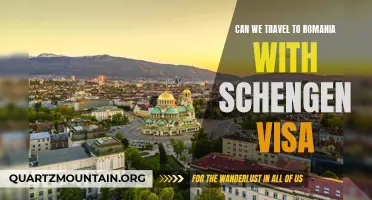
Exploring Romania with a Schengen Visa: All You Need to Know
- Mar 26, 2024

Register Your Phone Number for International Travel in 5 Easy Steps
- Jun 03, 2024

The Ultimate Guide to Traveling From Male Airport to the Maldives
- May 18, 2024

Top Destinations for Students Traveling with an F1 American Visa
- May 08, 2024

Exploring the Possibilities: Traveling Out of Australia on a Bridging Visa
- Mar 28, 2024

IMAGES
VIDEO
COMMENTS
Barcelona, Spain, 5. Nice, France, 6. Milan, Italy, 7. Florence, Italy, 8. Venice, Italy, 9. Florence, Italy, 10. Rome, Italy. One month is the ideal Europe backpacking trip for first-timers. You'll have time to explore a few countries and stay an extra few days in the places you fall in love with.
Europe Travel Packing Lists. I've written numerous packing lists for multiple travel styles. Each article covers functional and fashionable clothes for traveling through Europe, helpful travel accessories, toiletries, electronics, and what items you should leave behind. Check them out! Backpacking Europe Packing List (for Men)
Top Europe Backpacking Trips: 4 Travel Itineraries. While you may associate backpacking through Europe with train travel and dormitory-style hostels, it's been a rite of passage since the 18th century, when young people (mostly men) would spend a few years traveling around 'The Continent' prior to fully joining society. This was seen as a ...
Table of Contents. Step 1: Plan Your Backpacking Europe Trip. Step 2: Get Your Gear for Backpacking Europe. Step 3: How to Get Amazing Accommodation in Europe. Step 4: Get Around Europe on the Cheap. Step 5: Save Money While Backpacking Europe. Step 6: Find Out What to See and Do in Europe. Get Your In-Depth Budget Guide to Europe!
Step 1: Getting the Perfect Bag. A bag is the most vital part of backpacking your way through Europe. It contains all of your essentials - usually the bare minimum you need for a basic daily routine. You must choose one that is sturdy yet lightweight.
4. Nice, France. A great inclusion for an ultimate Europe itinerary, Nice gives you a chance to experience the famous French Riviera. Since Nice is a coastal city, it only makes sense to start with a good stroll along the Promenade des Anglais, which follows the city's waterfront.
A backpack is the most important purchase for any backpacker's trip through Europe (I mean, they don't call it "backpacking Europe" for nothing). We won't spend a lot of time talking about which bag to buy here, but it's an important purchase that you need to get right, so check out our detailed guide to the best backpacks for Europe .
2-Month Europe Backpacking Itinerary & Tips. Europe is one of the most popular travel destinations in the world. It is made up of 44 countries, all connected with a system of trains making it one of the easiest places to travel. Whether you are backpacking through Europe on a budget or no budget at all, you will get to see the same stunning ...
Europe is such a rich continent, full of things to see and do, for every kind of traveler. The Old Continent has amazing cities, national parks, beaches, hiking trails, and more.If you're planning on backpacking through Europe, the good news is, it's probably the easiest continent to backpack.. Most European countries are very safe, have great public transport, and it's easy to get around ...
Budgeting for a Europe backpacking trip. The first time I travelled Thailand in 2015, I jetted off for a month in August and spent £1000. Total. ... Is it expensive to backpack through Europe? This really depends on how you want to backpack Europe. However, even backpacker hostels will set you back around £20-30 per night (whereas SE Asia can ...
Bus. Taking a bus through Europe may be time-consuming, but it's one of the cheapest ways of backpacking Europe. FlixBus and BlaBlaBus are two reputable companies operating in Western Europe. You can find tickets for as low as €5 each way — however, most journeys cost between €20 - €40.
Backpacking Northern Europe. If you want to travel slightly off the well-trodden tourist trail, Northern Europe might just be the perfect option for your European backpacking adventure. Destinations in this region — including Scandinavia, Finland, Iceland, and the Baltics — boast some of the most beautiful, diverse, and otherworldly landscapes on the planet.
One of the top Europe backpacking tips I can give you is to plan your trip away from peak-periods. Usually peak periods would be Easter, summer, and Christmas break. During these times, crowds and prices skyrocket. In my opinion, May and September are some of the best months to travel around Europe.
Here are our in-depth travel guides for Florence, Rome, Venice, Amsterdam , Vienna, Cologne, and Copenhagen. We also have specific tips for Austria here. 2. Pack Light. Backpacking through Europe is fun, but it can easily become a nightmare carrying around a 50+ liter backpack. Save yourself the backaches by packing what you NEED.
Backpacking Europe Packing List. The packing list for Backpacking Europe below is a variation of what I brought for three months travelling through the Balkans and Eastern Europe, but could just as easily last you two weeks to six or more months. It also can be used in any season, with some variations.
Quick Tips For Packing Light While Backpacking Europe. First, I suggest limiting yourself to 20-22 lbs worth of gear (including your backpack). If you exceed 22 lbs (10kg), you run the risk of exceeding the carry-on weight limit for budget airlines. Even if weight limits aren't an issue, I still suggest keeping your weight around 20 lbs for ...
Although longer backpacking trips through Europe seem more expensive than shorter trips, there are a number of advantages to long trips, and it's quite feasible to spend 1-2 weeks in Europe without breaking the budget. On longer trips, you have the chance to fully experience and explore several cities or even countries in Europe.
A backpacking trip through Europe can provide the most wonderful memories that will last a lifetime. You can see the Eiffel Tower shimmer at night, island hop around the Greek islands, visit the world's top ski destinations in Switzerland, and more! There's no limit to your experiences on this magnificent continent.
Europe Backpacking Route #1: The Classic Itinerary. This classic route gives you the chance to experience Europe's major cities. Experience the best places for sightseeing, shopping, art, food, and culture, all in just two weeks! Because of how many major European cities this itinerary features, this also makes it a great option for your ...
Welcome To The Savvy Backpacker. Hi, I'm James and I've been teaching people how to travel Europe on a budget since 2010. I created The Savvy Backpacker to be the most comprehensive resource for planning your trip to Europe. Join me to learn more about the best travel backpacks, train travel in Europe, curated packing lists, European city ...
How to prepare a backpack for Europe. Preparing your backpack for an epic backpacking adventure through Europe is an exciting and essential step towards a successful journey. It is crucial to note that properly organizing and packing your backpack can make all the difference in terms of comfort, convenience, and ease of travel. Here are some tips:
D id you decide to finally take the plunge and embark on a backpacking journey through Europe in 2024? Congratulations, that's so exciting! You're in for a true adventure - from exploring diverse ...
I created The Savvy Backpacker to be the most comprehensive resource for planning your trip to Europe. Join me to learn more about the best travel backpacks, train travel in Europe, curated packing lists, European city travel guides, cheap data plans, itinerary planning, and money-saving strategies to help you plan a trip to Europe on a budget.
Osprey Sojourn Porter 46L Review. The Osprey 46 L Sojourn Porter is the most up to date version of the travel backpack I took to over 60 countries across 6 continents over 10 years of travel.. Yeah, I put it through some serious wear and tear (I dropped it into the Amazon river at one point even).It is a beast of a backpack that held up remarkably well through all that wear and tear.
When it comes to bag travel, the Cotopaxi Allpa packs a serious punch. The carry-on backpack is available in three sizes - 42L, 35L and 28L - and a variety of colors, including the vibrant ...
For a 9-day trip to Europe, the recommended backpack capacity is generally in the range of 40-50 litres. This size offers ample space for your belongings while keeping the weight manageable. It's important to remember that you'll likely be carrying this backpack for extended periods, so choosing a size that you can handle comfortably is crucial.